Since this amazing image (at the top) has been published, the articles about the 25 brightest stars in the night sky grew like weeds. Despite a multitude of similar texts presenting a brief description of the brightest stars, which can be seen in the night sky there is no complete information. I do not mean the full catalog of all major features, which surely I have included here. I mean specifically the trivial and pure practical information about the visibility of their stars. Having in mind, that the location of every single star in the sky is different, not everyone can see them, unfortunately. This article is somewhat clarification about what stars can I see if I live i.e. in London. Secondly, if I can see the given star, when is the best period to see it. This is roughly what I would like to share with you here. On top of that, I want to describe the full “specification” of every star concerned. Before I plunge into it, I would like to share the basic key with you (Pic.1), which refers to the maps presenting the range of the given star visibility, where four major cases are concerned.
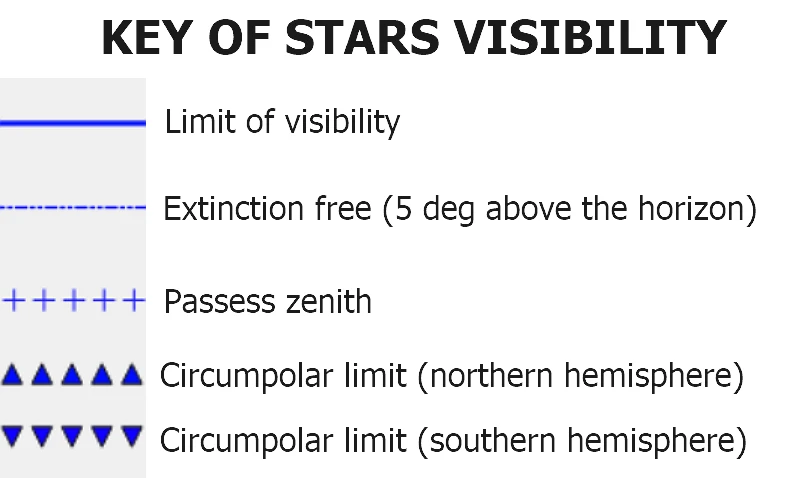
Why 49 stars only? In the links below you can find other texts, where even 100 or more stars are considered. This is defined by the brightness threshold. The 49th brightest star has roughly 2Mag, which I think personally is a perfect indicator. All the celestial maps presented in this article have been produced by Cartes du Ciel Sky Charts 4.21 software.
This article is the continuation of the previous one, which was put toward the explanation of the brightness of the stars in the general sense. Frankly speaking, we couldn’t attend to describing the brightest stars in the night sky without basic knowledge about the brightness, luminosity, and factors determining them.
I. DESCRIPTION OF THE BRIGHTEST STARS
1. Sirius
Visual magnitude: -1,45 Absolute magnitude: 1,45 Distance (Ly): 8,6 Spectral type: A1 V Luminosity (Sol): 25 Mass (Sol): 2.0 Diameter (Sol): 1.7 Surface temperature: 9940K Right Ascencion: 6h45.1m Declination: -16°43' Solar opposition: 31 December
Sirius (Canis Majoris) is the brightest star in the night sky, which is also called the Dog Star. Its name comes from the Greek word “scorching”. Sirius is one of the closest stars observed in the night sky. The distance “just” 8,6 light-years you could make within 842666666667 years riding 60mph by bus. Sirius is almost 10 times brighter than a standard star of magnitude 1.0 and 1600 times brighter than a star of magnitude 6.5 at the edge of human eye detection under a very dark sky (Schaaf, 2008). Potentially Sirius could be just bright enough to cast shadows on white surfaces in near-ideal dark conditions (Schaaf, 2008), but this thing mostly depends on the contrast sensitivity of the human eye. Other elements, which should be considered in this case are the contrast between direct light and diffuse illumination caused by the scattering of this source of light in the atmosphere with final diffuse scatter on the plain-colored Earth’s surface with high albedo.
Sirius is actually a double star system comprised of Sirius A – a very primary star and Sirius B, which is much dimmer and smaller (Pic. 2).

Sirius B is hotter, but it’s 10000 fainter than Sirius A. This whole system is estimated to be between 225 and 250 million years old.
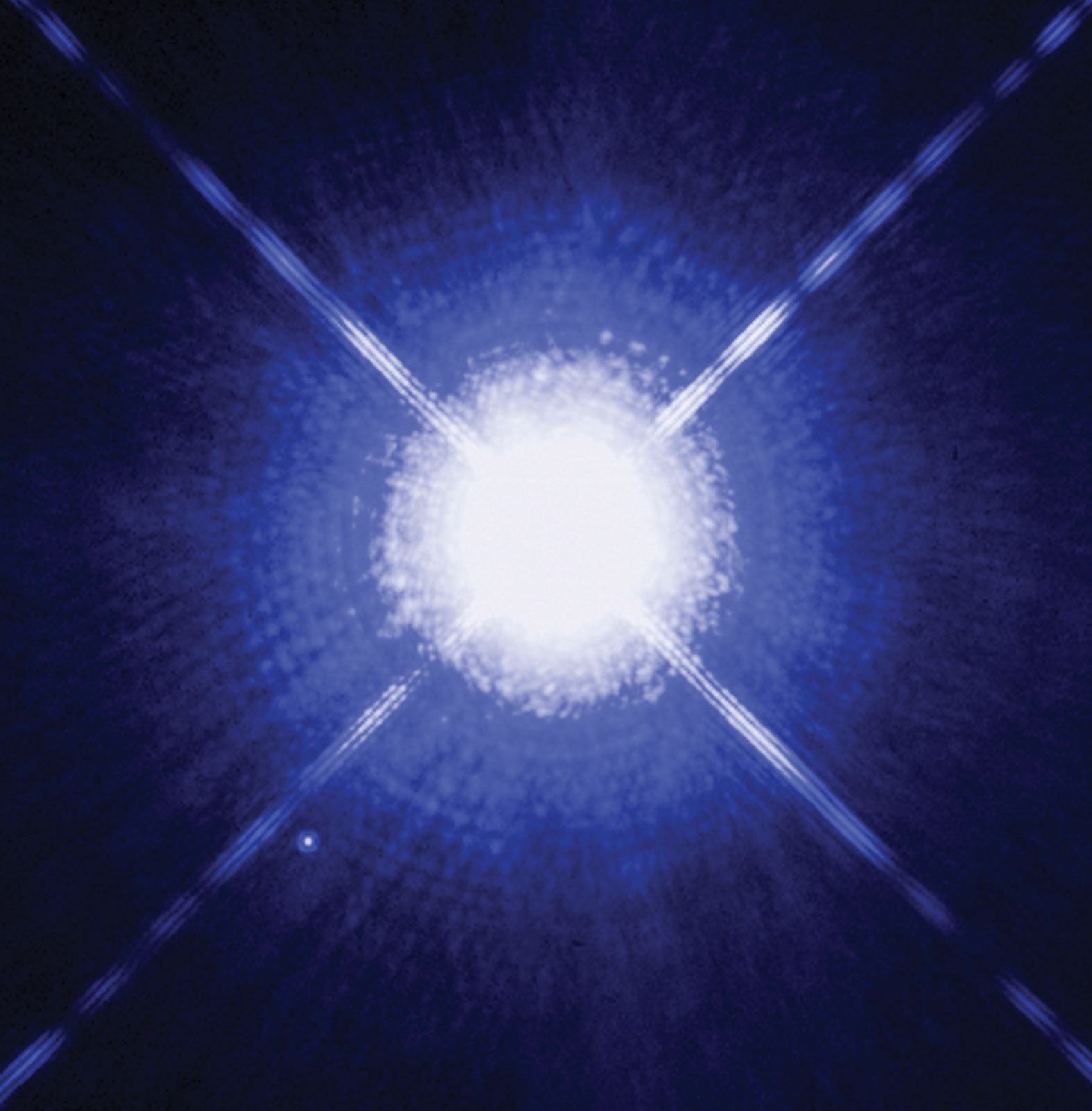
The average separation between Sirius A and Sirius B is about 19.8 AU, which corresponds to the average distance between the Sun and Uranus (Shaaf, 2008), although it varies between 8.1 and 31.5 AU across the 50.1 years cycle (Pic. 4).
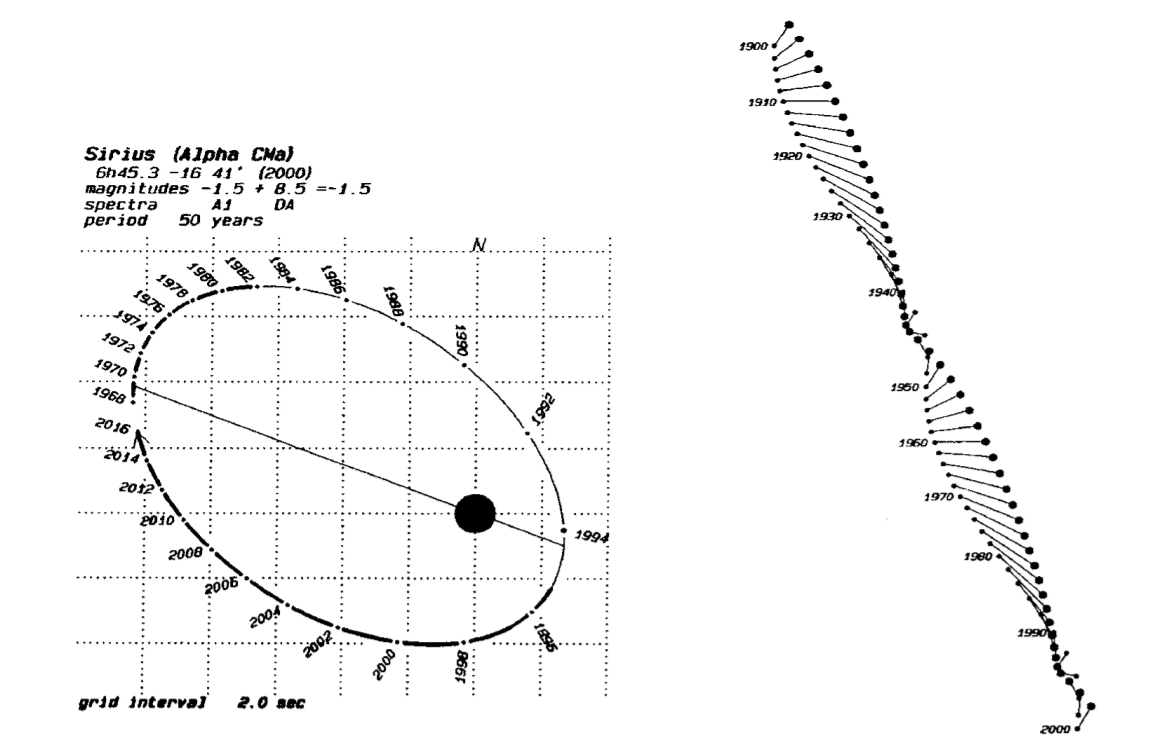
Sirius is the only star, which has been used as the basis of the calendar of one of history’s greatest civilizations. In ancient Greece, the dawn rising of Sirius marked the hottest part of the year. It had changed over the years, because of the precession of the Earth’s orbit. Nowadays Sirius rises in the latter part of the year. In ancient Egypt, Sirius was intimately connected with the life-giving annual flood of the Nile, which brought fertility.
The brightest star can be easily seen from almost everywhere on Earth except the north polar circle beyond latitude 73. Moreover, the right ascension of this star is very favorable for the northern hemisphere, because it peaks in the sky roughly around midnight time. The midnight culmination of Sirius occurs between December 31st and January 1st. Sirius marks the southern tip of the winter triangle. The star is bright enough to be observed at twilight and even daylight, about which I would like to write more in the future.
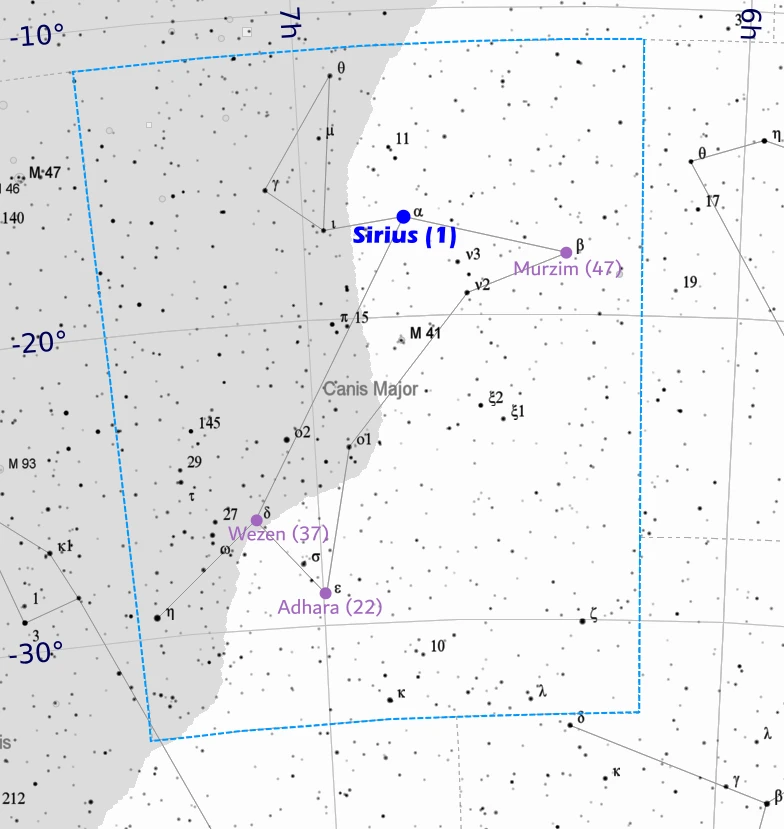

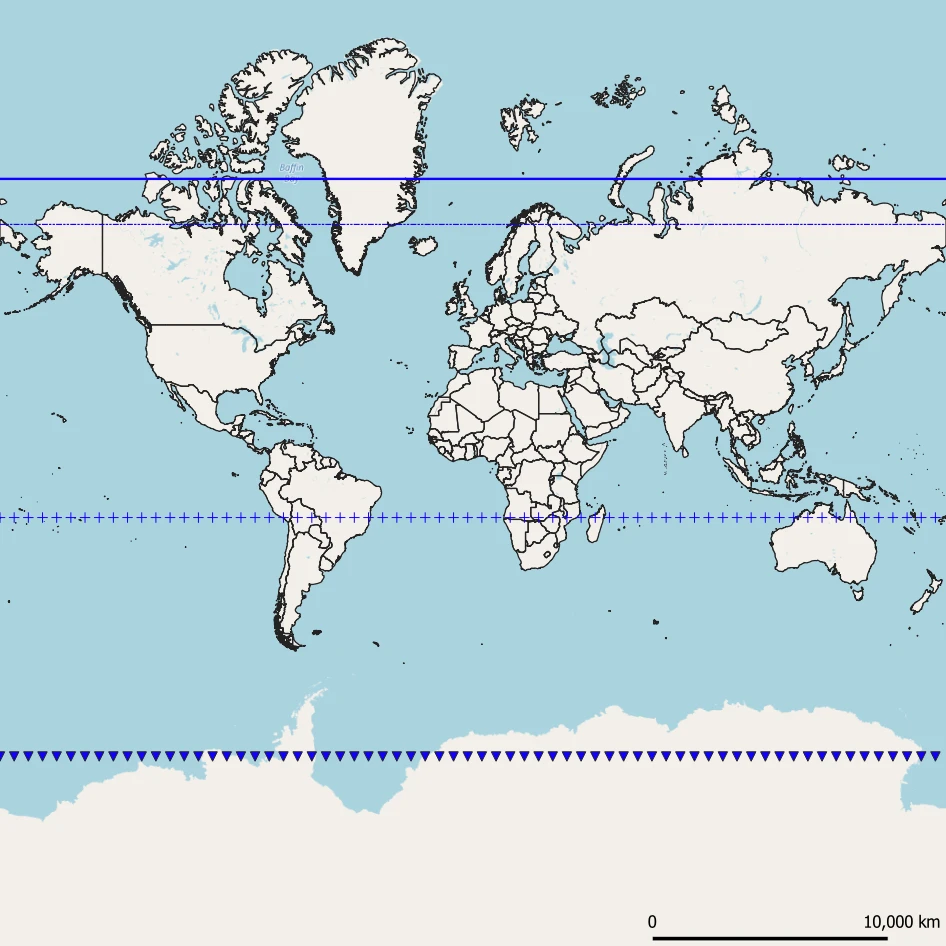
Visual magnitude: -0,62 Absolute magnitude: -5,53 Distance (Ly): 310 Spectral type: A9 II Luminosity (Sol): 13600 Mass (Sol): 8.5 Diameter (Sol): 65 Surface temperature: 7400K Right Ascencion: 6h24m Declination: -52°42' Solar opposition: 27 December
The name of Canopus comes either from an ancient city in northern Egypt or the mythological king of Sparta.
Canopus is the second brightest star in the night sky, although due to its location in the sky is not renowned that much. Most people living on Earth are rather unable to see this star in the night sky or at least it’s a challenge because the star doesn’t rise above the horizon so high. The one advantage is its right ascension, very similar to Sirius. In turn, the star passes its midnight culmination on December 27th, very close to the winter solstice when the night in the northern hemisphere is the longest. Canopus is a rare type of supergiant and admittedly the closest supergiant to us. It currently stopped hydrogen fusion and is now converting its helium core into carbon, which has made it bigger in size. If we would replace Canopus with the Sun it could almost envelop Mercury. Canopus can become a supernova between 480000 and 990000 years from now (Schaaf, 2008)
Canopus has been used as a navigation pointer for spacecraft on interplanetary journeys. The reason behind it is its favorable angular separation from the Sun. Many spacecraft used to be equipped with the “Canopus star tracker” which like many other star trackers keeps the right direction of the spacecraft by measuring the position of the stars. The details of the “Canopus star tracker” role have been discussed widely here. The best examples of spacecraft that have been equipped with the “Canopus star tracker” are Voyager 1 and Voyager 2. The navigation role of Canopus is stressed by the equilateral triangle, which this star makes with Achernar and the south celestial pole. Canopus sits on an imaginary line that extends 36° one way to Sirius and 37° to the south celestial pole (Heifetz, Tirion, 2007). The star is a component of a huge Argo Navis large constellation known from ancient times.
Canopus can be found easily, as it has almost the same right ascension as Sirius. When you see Sirius high above the horizon, just look below towards the horizon and you should see Canopus. When you are in the southern hemisphere far from the equator, just move your sight from Sirius towards the south pole. Canopus will be on the way.

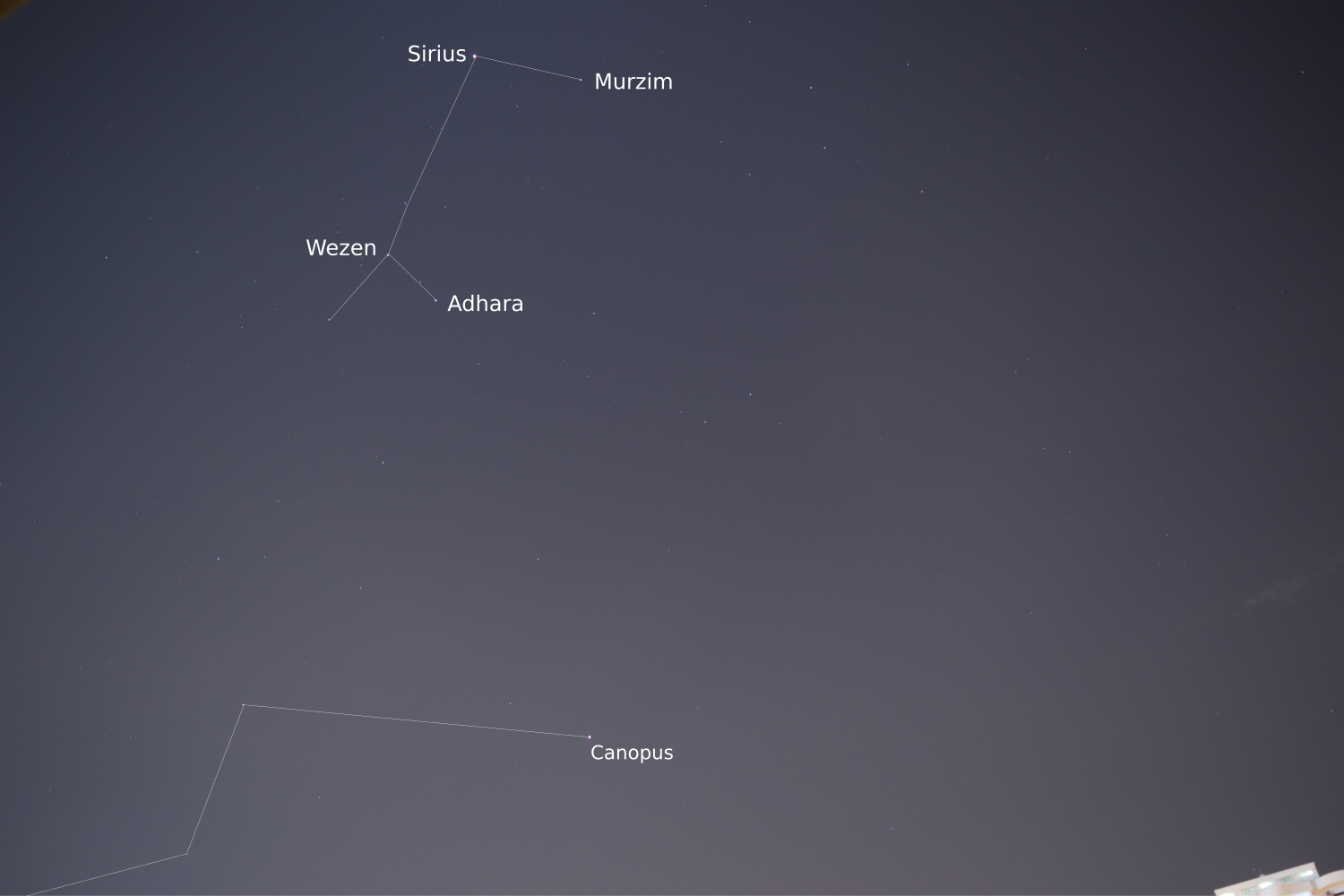
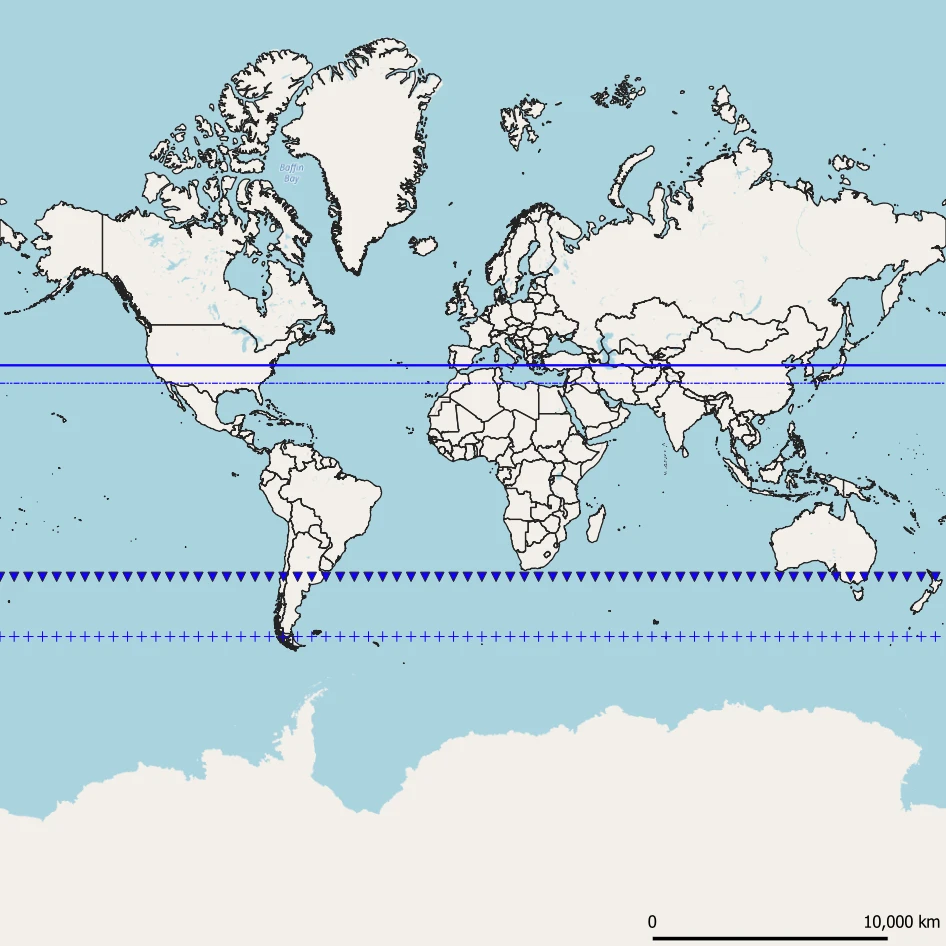
Visual magnitude: -0,27 Absolute magnitude: 4,34 Distance (Ly): 4,4 Spectral type: G2 V + KI V Luminosity (Sol): 1,5 Mass (Sol): 1,1 Diameter (Sol): 1,2 Surface temperature: 5260K Right Ascencion: 14h40m Declination: -60°50' Solar opposition: 3 May
The Rigel Kentaurus literally means “the foot of the centaur” This star is mostly known as the Alpha Centauri or Toliman, which represents the closest stars and exoplanets system to our Solar System. Basically, the third brightest star is the component of two bright stars Rigel Kentaurus A with an apparent magnitude of +0.01 and Rigel Kentaurus B with an apparent magnitude of +1.33. Both are Sun-like stars and are not possible to be distinct by the human eye, which sees just one -0.27 Mag star as mentioned earlier. Their angular separation varies between just 2″ and 22″ within around 80 years (Pic. 11).
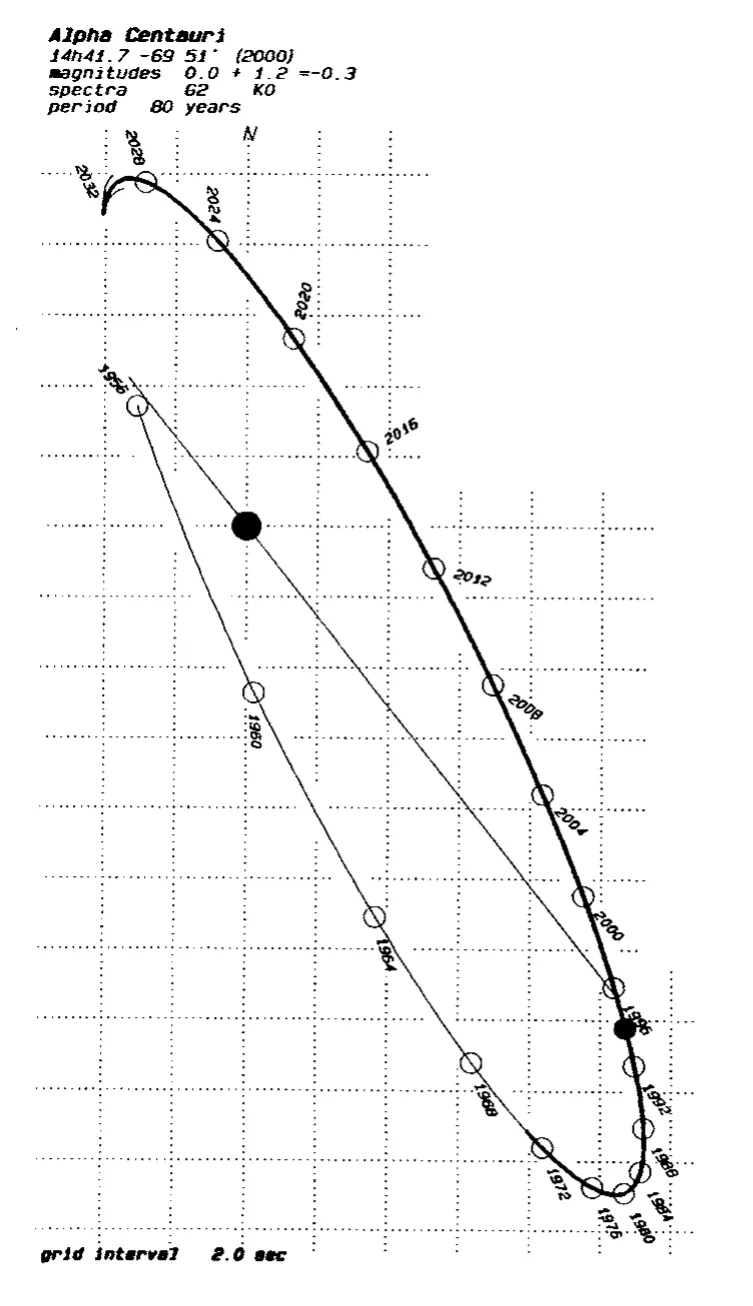
The Rigel Kentaurus system falls really close to the Sun in spectral classification. Furthermore, it may be about the same age as our Sun, which would mean, that it’s roughly at the same stage of evolutionary life. It’s worth mentioning, that the Rigil Kentaurus system includes also the Rigil Kentaurus C, known as the Proxima Centauri (Alpha Centauri C), which is the closest to the Sun (this is where the “Proxima” suffix comes from).
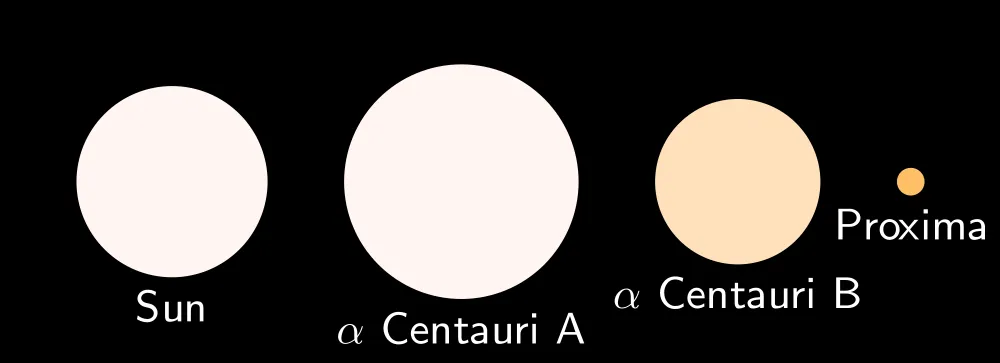
The estimated distance between Proxima Centauri and Alpha Centauri A and B is estimated to be about 0.21 light-years toward our Solar System.
Rigel Kentaurus is one of the most famous stars in the southern sky, therefore lots of people travel south in order to see it.
The best way to find the Rigel Kentaurus in the sky is by following the shape of the Centaurus constellation from up to bottom, as the star is also called the “Foot of the Centaur”. The Centaurus can be found by moving your sight down from the Spica star.
Another way to find this star is by moving your sight from the Crux transversal arm (from Δ and β Crucis) by the distance of about 4 stretches between Δ and β Crucis until you spot the Hadar (Agena) star, the Rigel Kentaurus can be seen on the left next to. Because of declination, the northernmost possible location where this star can be spotted is marked by Φ29 North (Pic. 13)
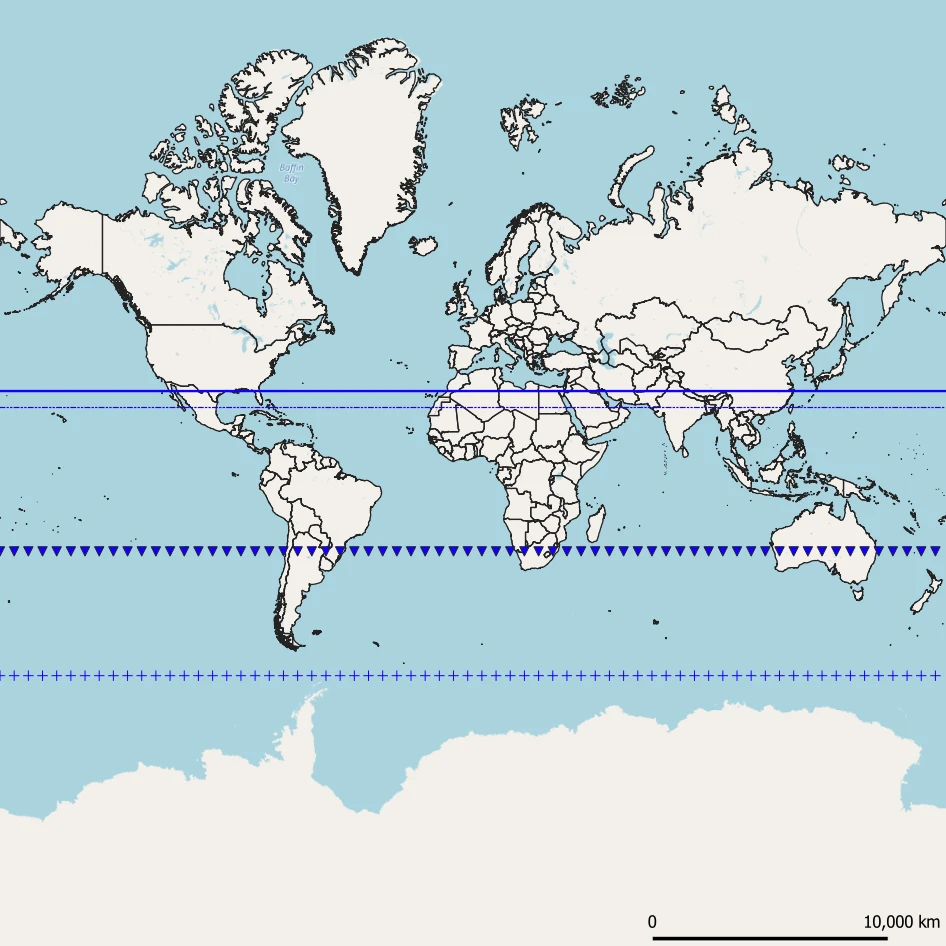
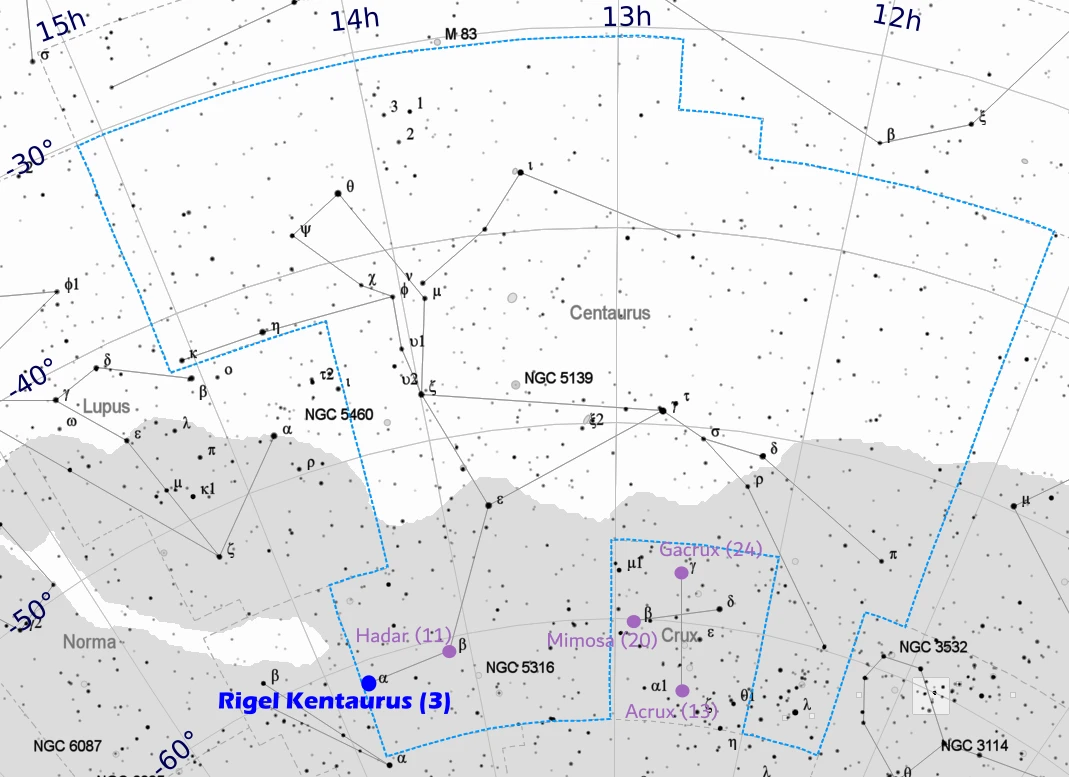
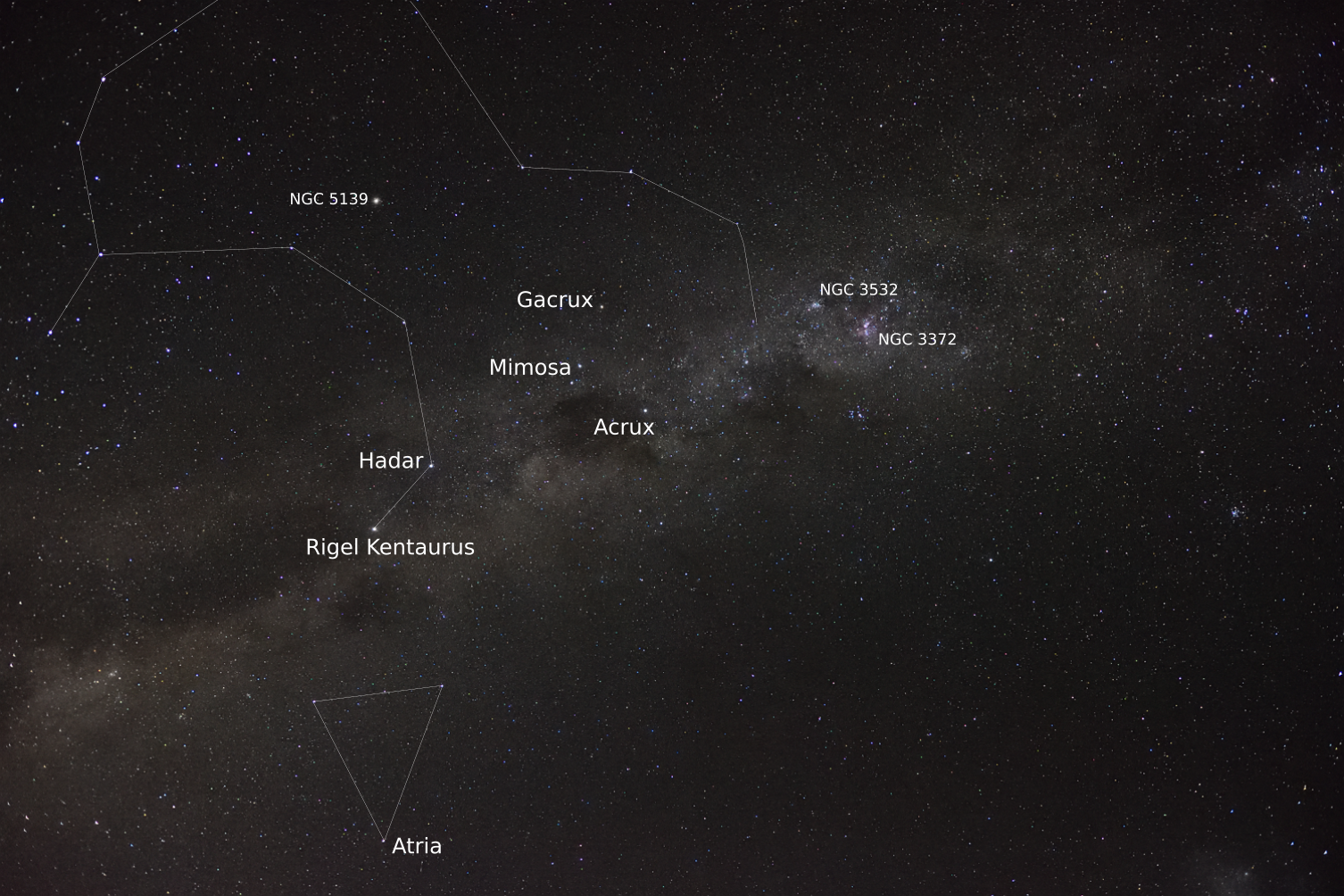
Visual magnitude: -0,05 Absolute magnitude: -0,31 Distance (Ly): 36,7 Spectral type: K1.5III Luminosity (Sol): 170 Mass (Sol): 1,1 Diameter (Sol): 26 Surface temperature: 4300K Right Ascencion: 14h16m Declination: 19°11' Solar opposition: 26 April
Arcturus is the brightest star in the northern hemisphere, which name means “Guardian of the Bear” due to its location quite close to the Ursa Major constellation. In ancient Roman and Greek times, Arcturus guided people to Ursa Major and Ursa Minor constellations, but the star position was slightly different in the sky as this star is moving rapidly to the Sun. Its position changes 2,29″ every year. Arcturus is reputed to have been the first star (other than the Sun) ever observed in a telescope in the daytime by the French astronomer Jean Baptiste Morin in 1635. Some reports say, that Arcturus was visible by the naked eye even 24 minutes before sunset (Shaaf, 2008). Arcturus is slightly cooler and older than the Sun. Arcturus has completed recently the main sequence phase and now is the closest red giant to the Sun.
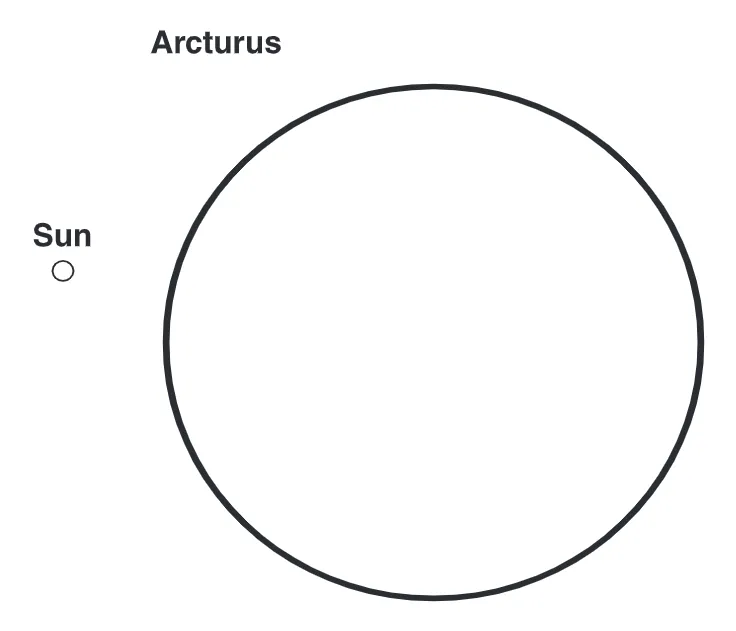
Arcturus, because of its brightness was a good object for studying astroseismology – the study of the oscillation of the stars.
Arcturus is quite easy to locate. It passes the local meridian on April 26th. When you look at Ursa Major, you should follow the arc from the last star in this constellation – Benetnash (Arc of Arcturus) (Pic. 17). Arcturus along with Spica creates the big asterism known as the Big Diamond or The Diamond of Virgo.
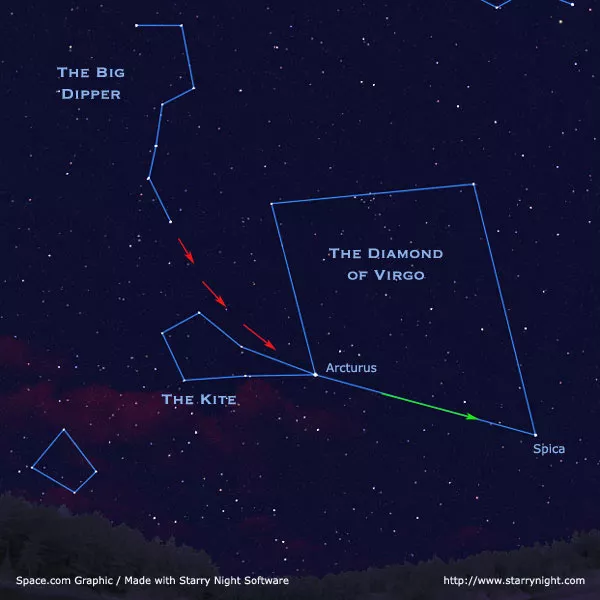
The other way of finding Arcturus easily is by looking far above Spica (Pic. 17).

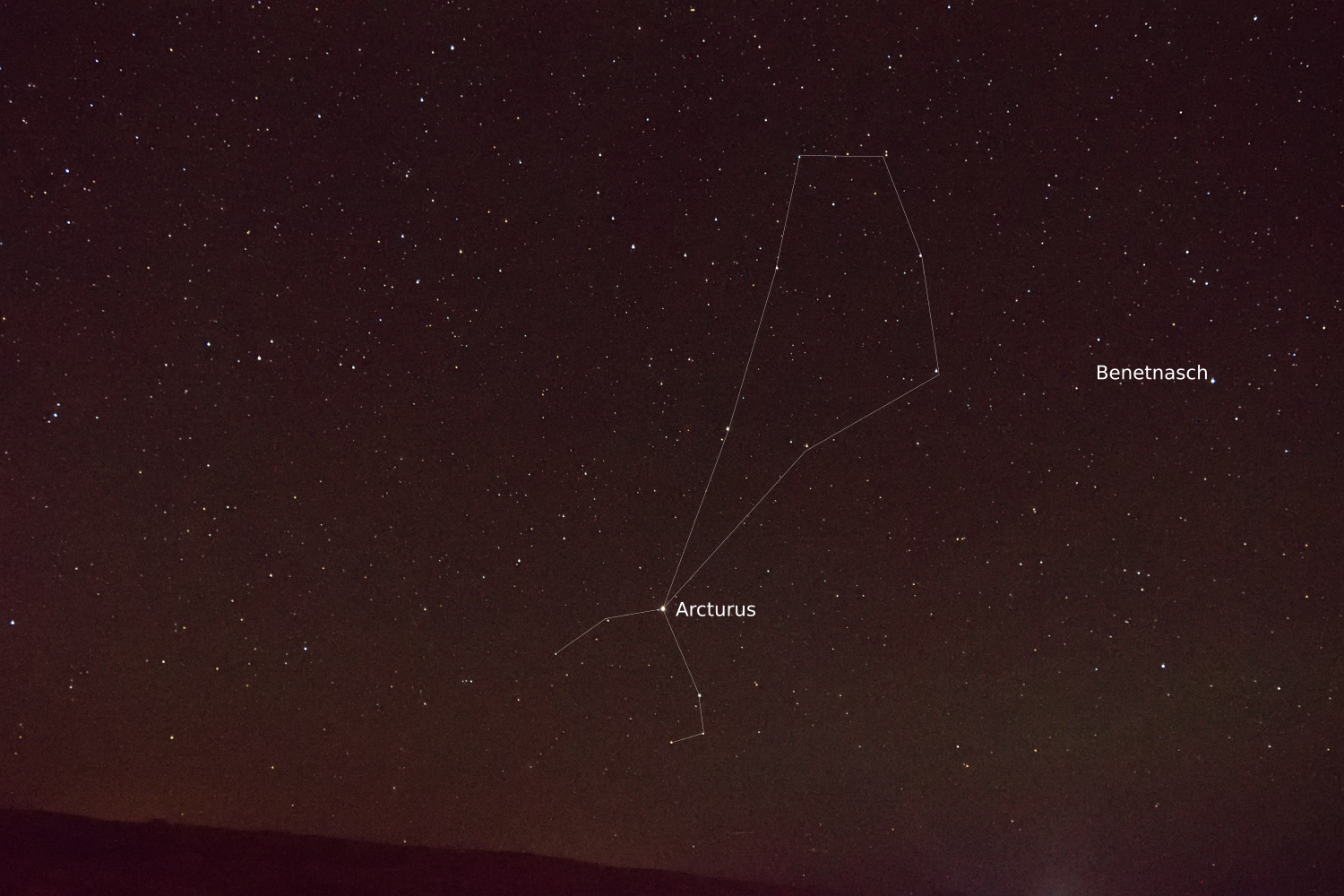

Visual magnitude: 0,03 Absolute magnitude: 0,58 Distance (Ly): 25,3 Spectral type: A0Va Luminosity (Sol): 37 Mass (Sol): 2,1 Diameter (Sol): 2,3 Surface temperature: 9600K Right Ascencion: 18h37m Declination: 38°47' Solar opposition: 30 June
Vega is the third brightest star for most of the World’s population. Its name means “the swooping angle” in Arabic or “vulture” from ancient Egypt. Vega was the first star photographed after the Sun in 1850 and the first star with a spectrum recorded and parallax measured. It’s also one of the most extensively studied stars in the immediate vicinity of the Sun. Scientists consider Vega as the most important star in the sky after the Sun. There are several reasons behind it, which are listed below:
– Vega is important in astrophotography for calibrating photometric brightness due to its magnitude close to 0,
– Due to the precession of the Earth’s orbit, Vega acts as the north pole star every 25700 years. People should expect Vega to be close to the celestial north pole about 13700 years from now,
– Vega is around the midpoint of its life expectancy likewise the Sun,
– Vega appears to have a circumstellar disk of dust at a distance of 70-75 AU which corresponds to the edge of the Kuiper Belt distance from the Sun,
– The Sun is heading towards Vega on its path, so the star will be closer to us in the future,
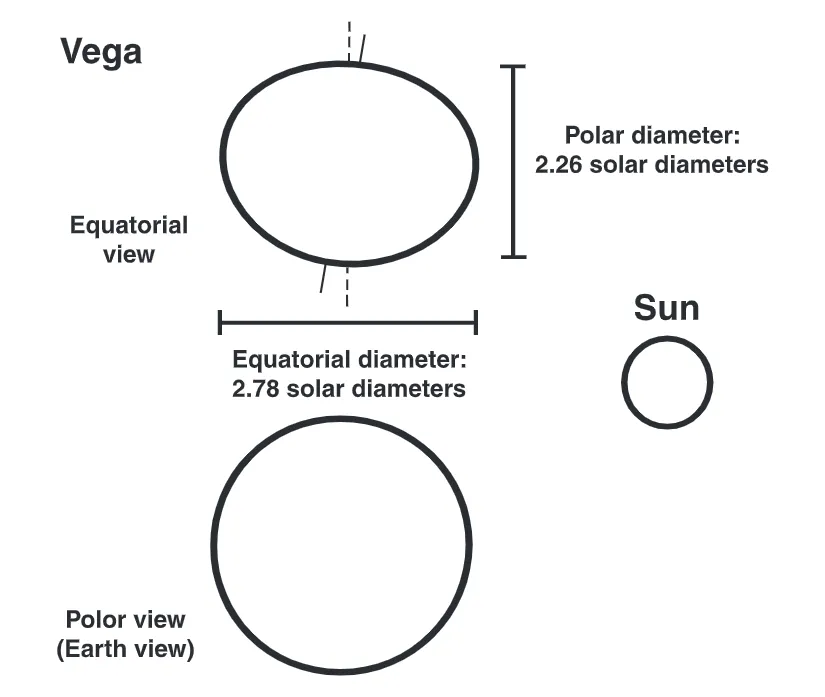
The presence of circumstellar dust is theorized to have played an integral role in the development of the planets. The dust was discovered in 1984 by the satellite IRAS, which imaged the Universe at infrared wavelengths.
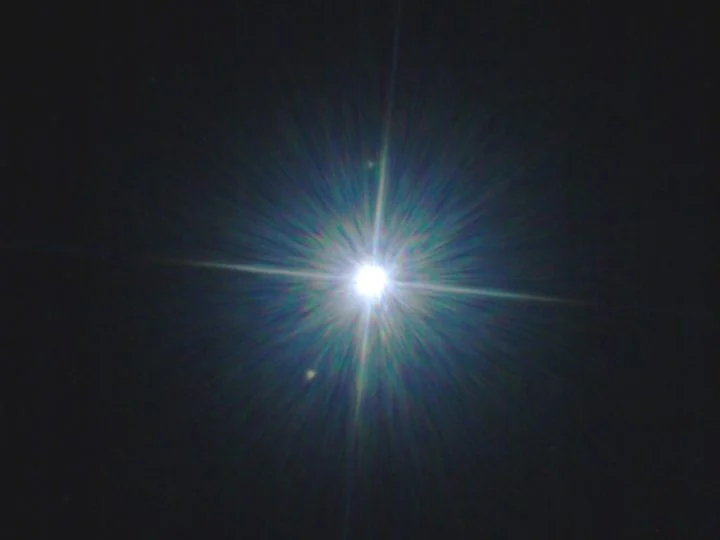
Vega is called the “Queen star of Summer” as it belongs to the Summer Triangle along with Altair and Deneb. The bluish color distinguishes Vega from other stars. The star is easy to find also due to its brightness. The star creates a kind of right triangle between the Big Dipper and the Polar Star. It’s easily visible from the northern hemisphere where is recognized as the first star on Christmas Eve nightfall.

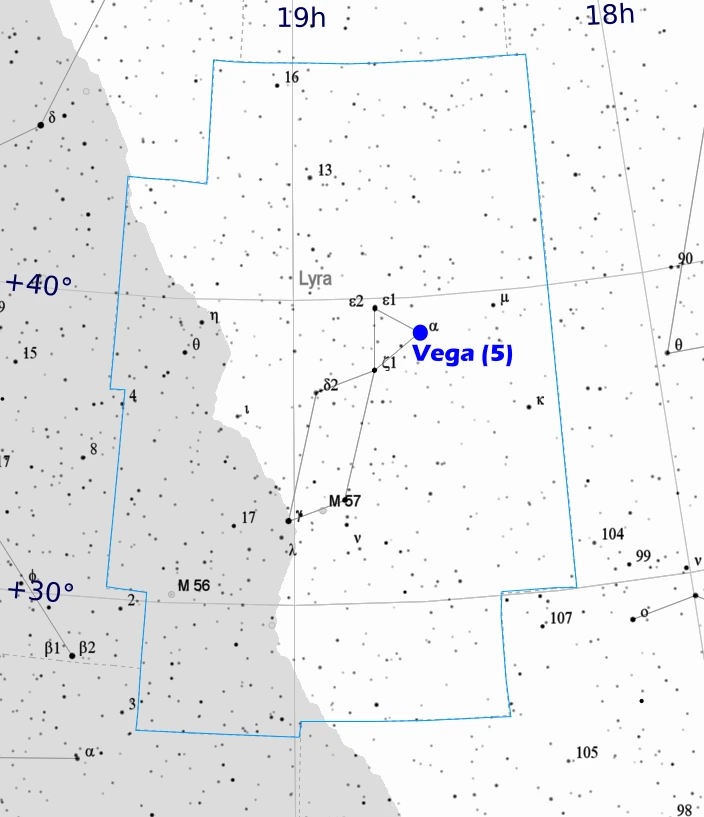

Visual magnitude: 0,08 Absolute magnitude: -0,48 Distance (Ly): 42,2 Spectral type: G5III+G0II Luminosity (Sol): 79 Mass (Sol): 2,7 Diameter (Sol): 12 Surface temperature: 5000K Right Ascencion: 5h17m Declination: 46°00' Solar opposition: 11 December
The name Capella means “little goat” in Latin. Capella is actually a star system of four stars, which acts as the yellow giant star. The first two stars in this system are large giants with a radius 10x larger than solar. The separation between them is 0,04″. Another two are red dwarf stars. The bigger yellow stars are near the end of their life, so they will appear as white dwarf stars. So far the whole complex is known as the brightest yellow star in the sky.
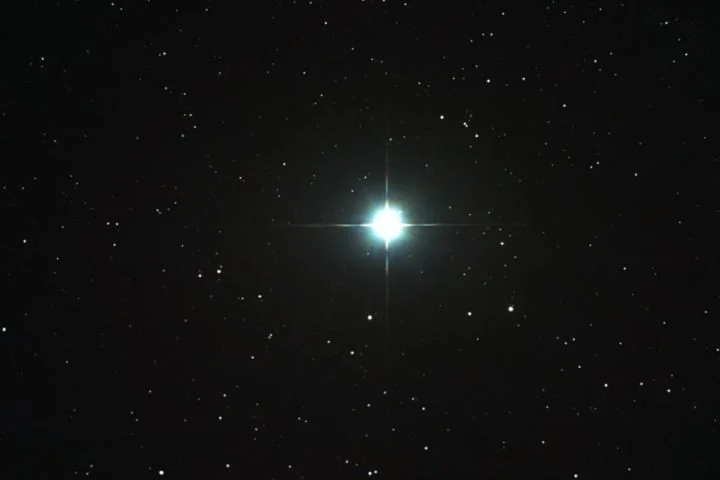
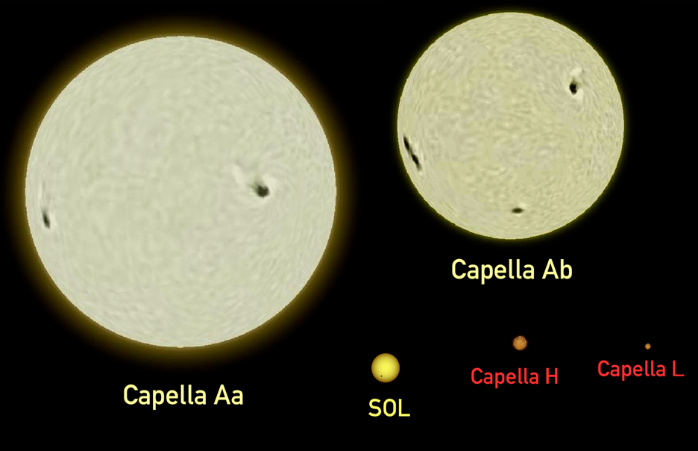
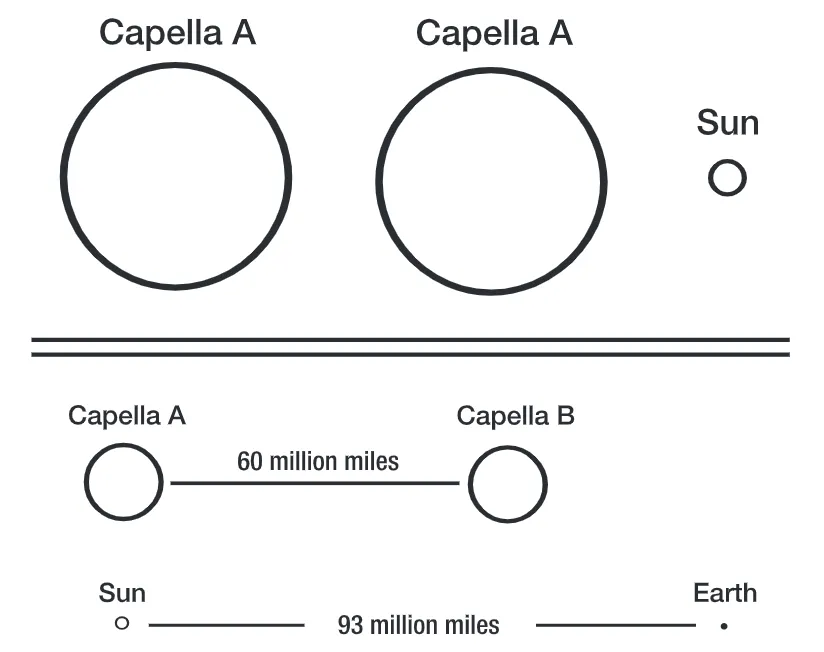
Capella is the closest one-magnitude star to the north celestial pole. This star is a part of the Winter Hexagon along with Sirius, Procyon, Pollux, Aldebaran, and Rigel. This star can be found by following two top stars from the Big Dipper and multiplying the angular distance between them by 4. The star is invisible beyond 44 degrees south latitude (Pic. 30).

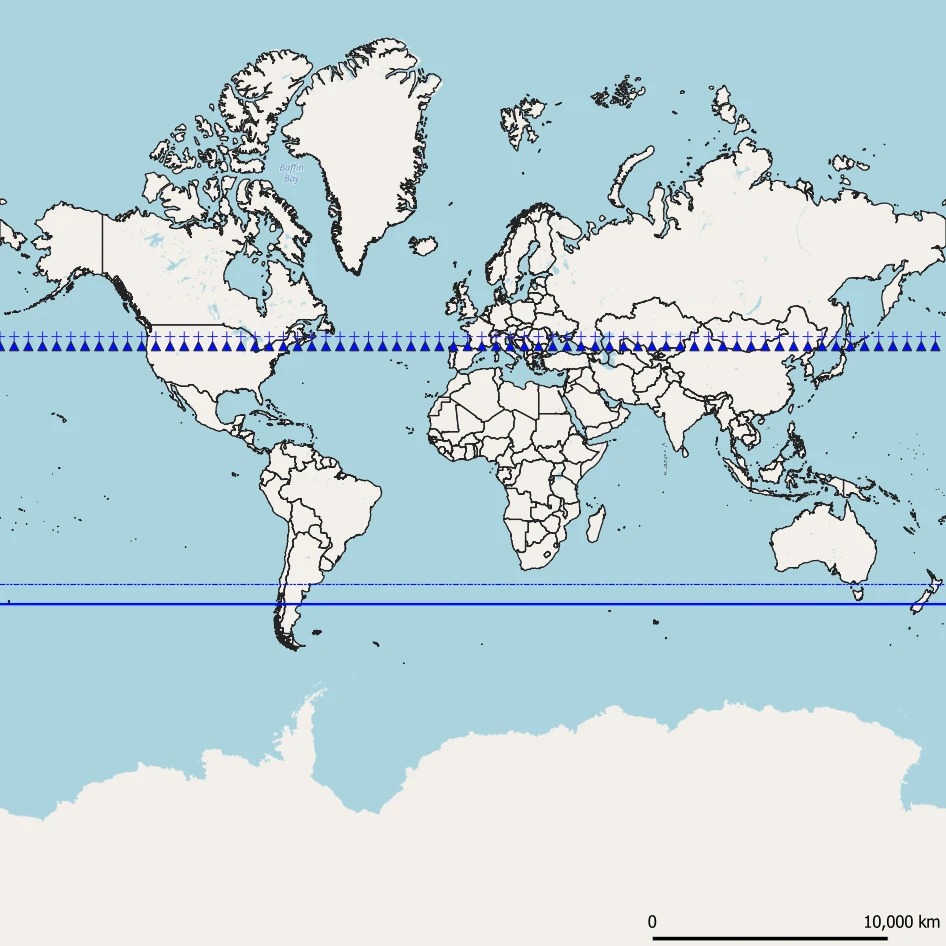
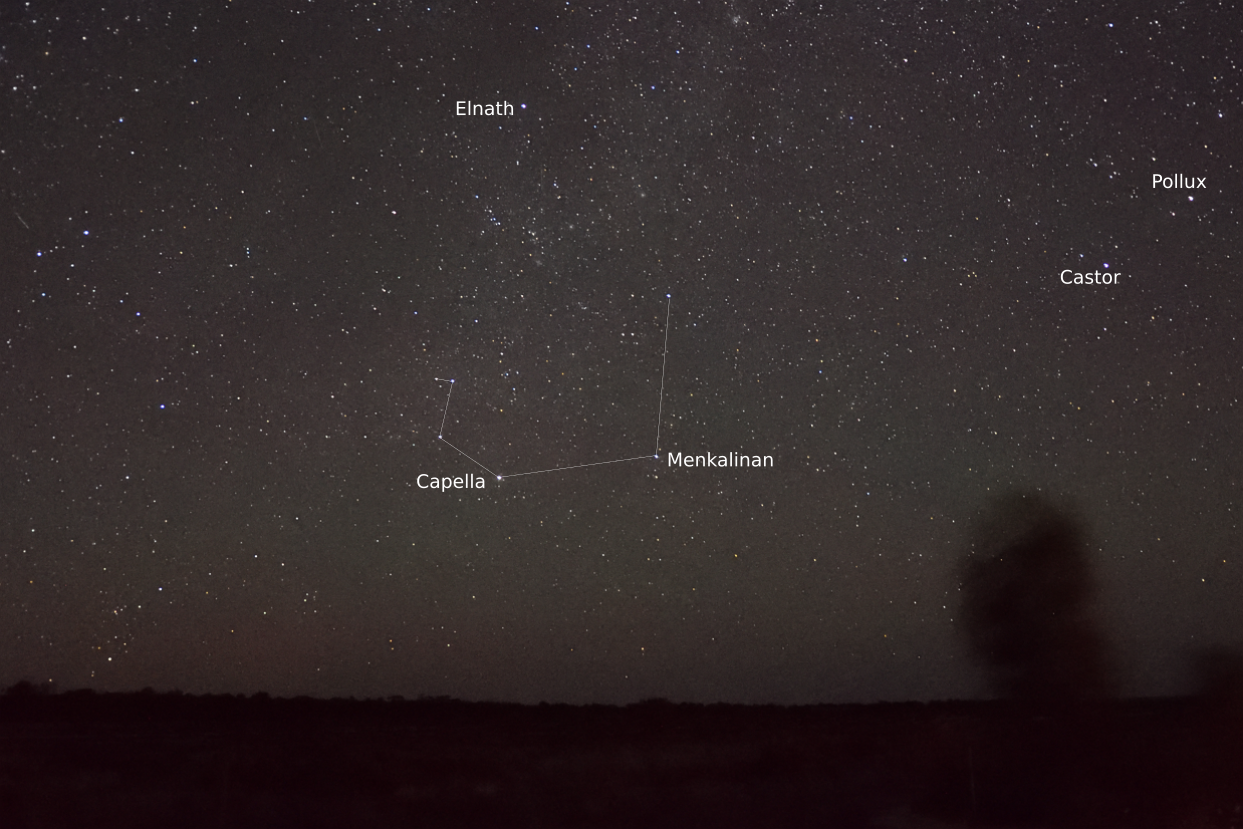
Visual magnitude: 0,18 Absolute magnitude: -6,69 Distance (Ly): 770 Spectral type: B8 Ia Luminosity (Sol): 120000 Mass (Sol): 17 Diameter (Sol): 78 Surface temperature: 12100K Right Ascencion: 5h15m Declination: -8°12' Solar opposition: 11 December
Rigel in Arabic means “foot” and indeed it’s a foot of the Orion constellation. Rigel is the absolutely classic “blue giant” star, but in truth, this is, the same as Capella – the four-star system. The most prominent is Rigel A – the blue supergiant, which exceeds our Sun by 17 times in mass and 120000 times in shining! It makes it the most luminous star in our part of the Milky Way. The other triple star is also white-bluish but just about 6,7 Magnitude only, which corresponds to 1/400 brightness of Rigel A. Separated from the brightest star by 9,5″ can be seen by large telescopes. All Rigel system orbits the common center of gravity within around 24000 years, whilst the three minor stars orbit themselves just within 10 days.
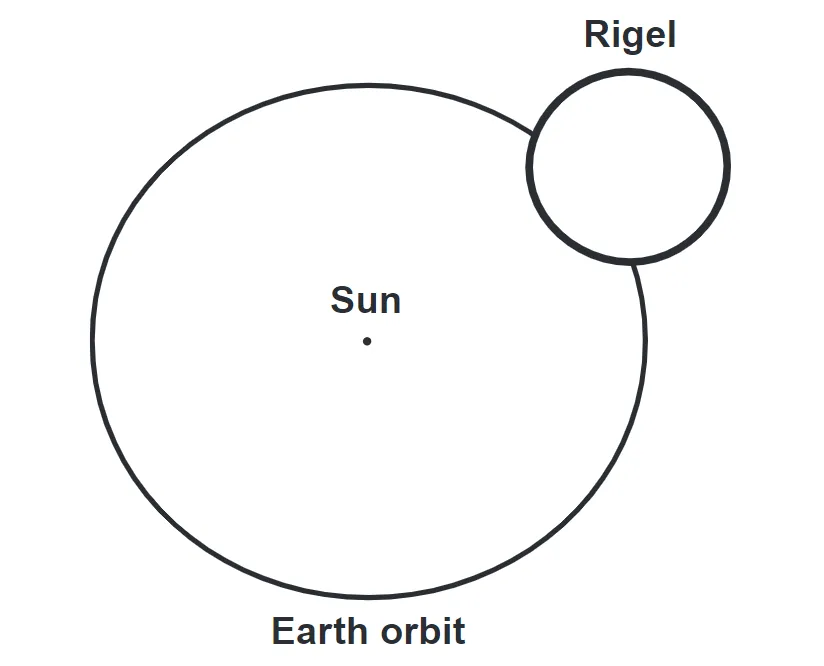
Rigel varies slightly in brightness, but the scale is not spectacular, as it varies in the range of 0.03 Mag within 25 days. Sometimes, but very rarely, this difference might be bigger ranging the total brightness of the Rigel system between 0.03 and 0.18 Mag. The inherent specificity of the Rigel star is its vast stellar wind, which leads to enormous mass loss, about 10 million bigger than in the case of the Sun.
Because Rigel is the blue supergiant, with no hydrogen in its core anymore, it moves away from the main H-R sequence, therefore in the future, we should expect its death. The star will become a supernova one day, making its view so spectacular from the Earth’s perspective – for sure even in daylight conditions.
Rigel is a part of the Winter Hexagon, which has almost the same right ascension as the Capella does. Near Christmas Rigel rises when Capella is already over one-third the way up the sky in central Europe. Rigel is the brightest star of the Orion constellation, which in winter after the Big Deeper is the easiest recognizable constellation in the sky. To find Rigel, head on Capella first and move your sight strictly down until you spot the significantly bright star just bottom right from three aligned stars representing the middle of the Orion constellation. For observers in the southern hemisphere will be good to know, that Rigel along with Canopus and Sirius makes the isosceles triangle. Because of its declination, the star remains visible from anywhere around the globe, except in the northernmost polar latitudes.
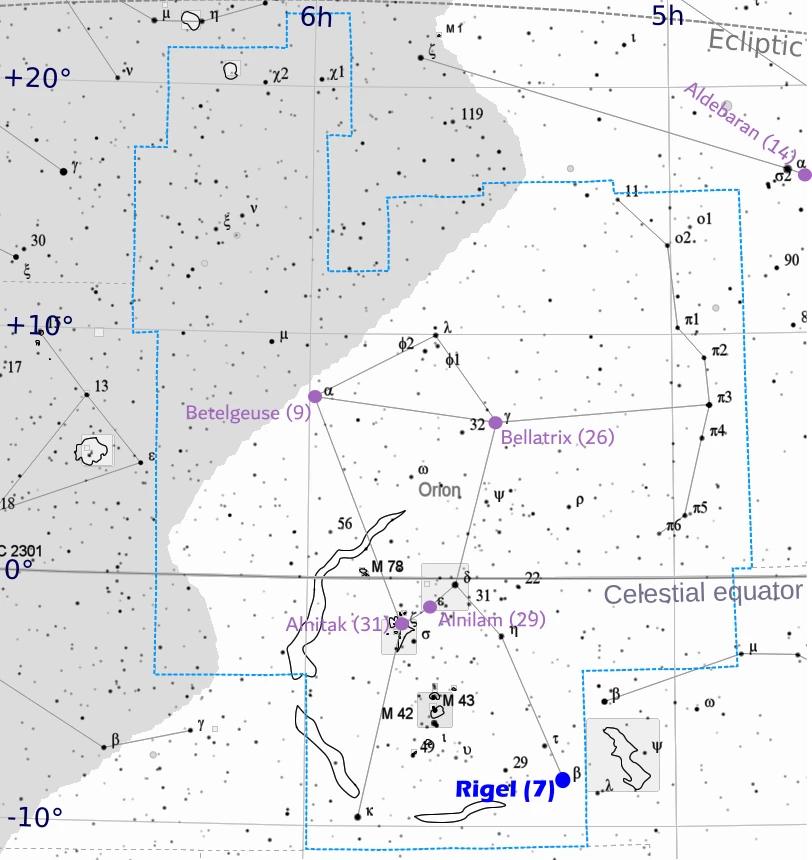
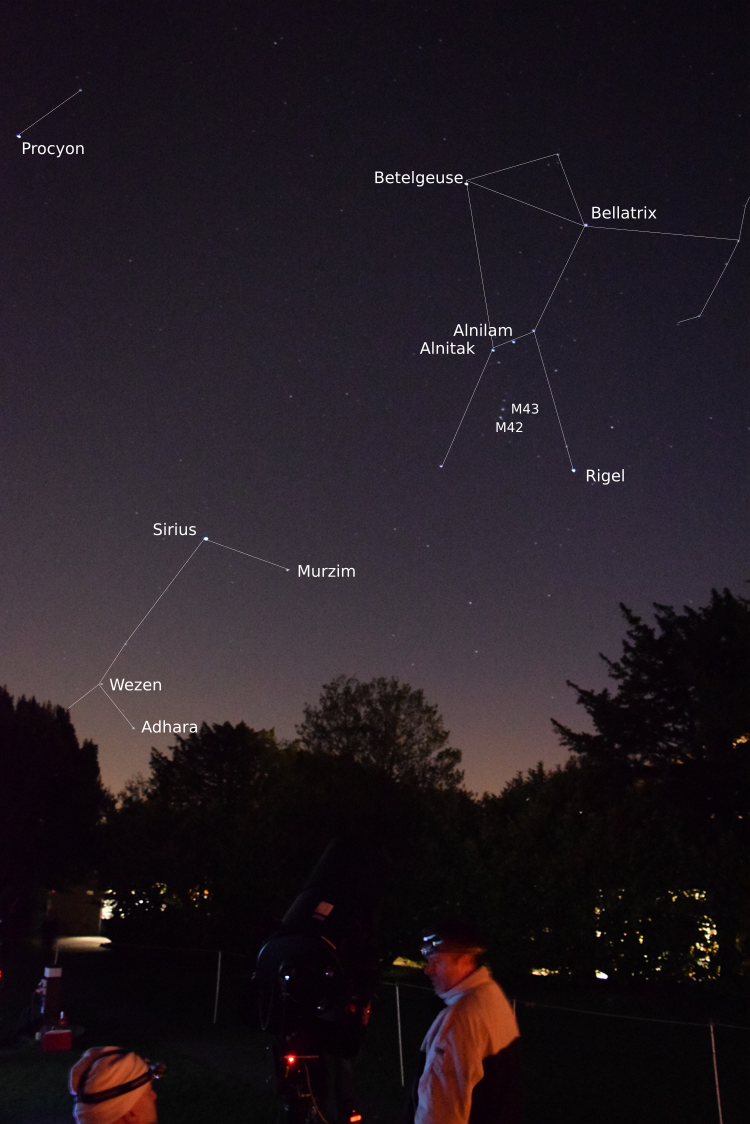
Visual magnitude: 0,4 Absolute magnitude: 2,68 Distance (Ly): 11,4 Spectral type: F5IV-V Luminosity (Sol): 7,7 Mass (Sol): 1,5 Diameter (Sol): 2 Surface temperature: 6550K Right Ascencion: 7h39m Declination: 5°14' Solar opposition: 13 January
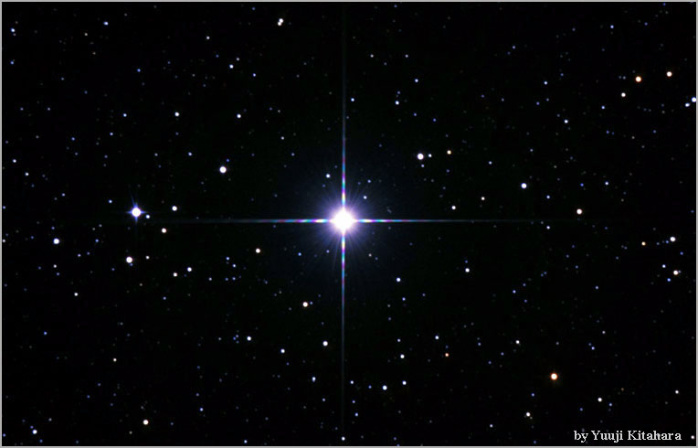
In Greek, the Procyon (Prokyon) means “Before the dog”, which symbolizes the object rising shortly (10-15min) before Sirius called the “Dog Star” from the location of Ancient Greece. Otherworldly the role of Procyon was to announce, that Sirius would rise soon. Procyon is, in fact, a binary star comprised of a white-yellow subgiant at the late stage of an F-type main-sequence star (Procyon A) and a white dwarf (Procyon B). Procyon is about 5 times fainter than Sirius in the sky and it’s called the “Lesser Dog Star”. Comparing again this star to Sirius, we should mention its general luminosity, which is around 3x smaller than Sirius. Comparing Sirius B and Procyon B we can mention, that Procyon B is also much smaller than Sirius B as it is just one-third the size of Earth and can be spotted by the largest telescopes only.
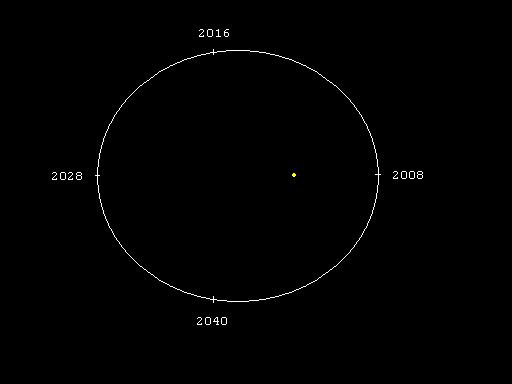
Because Procyon is an example of a main-sequence subgiant star, actually it’s approaching death, as it converts its remaining core hydrogen into helium. Because Procyon has a twice bigger diameter than the Sun it’s the biggest star within the nearest 20 light-years.
Procyon is a part of both Winter Hexagon as well as Winter Triangle, which were created together with Sirius and Betelgeuse. The star can be found easily east of Orion (Pic. 34). Since you know where Sirius is, move your sight up and slightly left. Observers in the southern hemisphere must move their heads down from Sirius (Pic. 6).
Because of the declination, Procyon likewise Rigel can be visible from everywhere. This time only the southernmost polar regions are deprived of Procyon visibility.
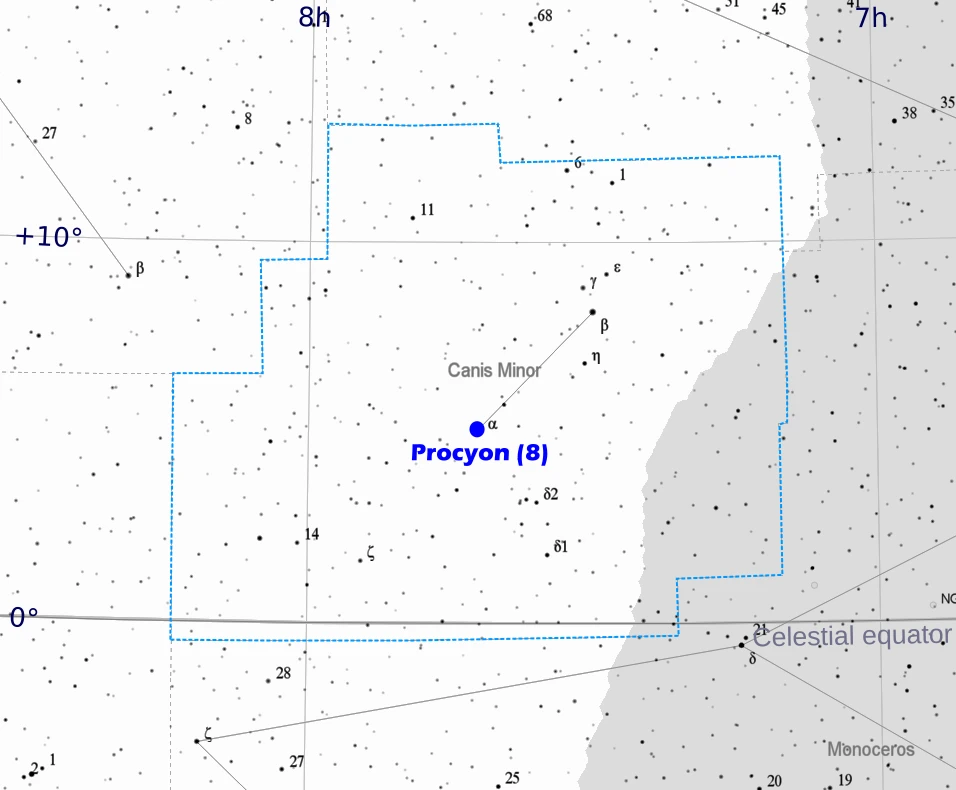
Visual magnitude: 0,45 Absolute magnitude: -5,14 Distance (Ly): 550 Spectral type: M1–M2 Ia–ab Luminosity (Sol): 105000 Mass (Sol): 18 Diameter (Sol): 936 Surface temperature: 3600K Right Ascencion: 5h55m Declination: 7°24' Solar opposition: 20 December
The origin of the “Betelgeuse” name is quite complicated and might mean “the middle of the sky” in Arabic, as the star likewise a whole Orion lies near the celestial equator. Betelgeuse is the red giant of the greatest apparent brightness in our sky. To get an idea of how big the Betelgeuse is, we should imagine this star in the place of our Sun exactly. Finally, it could exceed the orbit of Jupiter! The enormous size of Betelgeuse gives it around 0,047″ angular size in the night sky.

The size of this star is a result of its life stage. Betelgeuse has reached the red giant point and next will explode as a supernova within even a few thousand years! It will become probably as bright as the crescent Moon. Betelgeuse is a variable star, which magnitude changes between 0.43 and 0.5 Mag. However rarely, the brightness of this star might reach even 0 Mag or fall to 1.6 Mag (record minimum of 1.614 in February 2020). The possible total period of variability reaches about 2350 days. This is for sure the largest known brightness fluctuation of any first-magnitude star.
Betelgeuse was the first star to have its surface directly imaged thanks to Hubble Telescope in 1996. The most curious is the presumed presence of a brown dwarf that could survive inside the outer layers of the Betelgeuse. We would have literally the star inside the star! Purportedly this object orbited Betelgeuse very close before the star became the red supergiant. No further studies confirmed the presence of this celestial body.
Betelgeuse is marked as α Orionis, despite Rigel (β Orionis) being brighter. This misclassification is a result of the Betelgeuse variability in brightness. Betelgeuse creates the Winter Triangle along with Procyon and Sirius, therefore it shouldn’t be a problem to find this star. It builds the northern arm of the Orion constellation, occupying quite the opposite place in this constellation to Rigel. The star is visible from around the globe without problem except for Antarctica near the south pole.
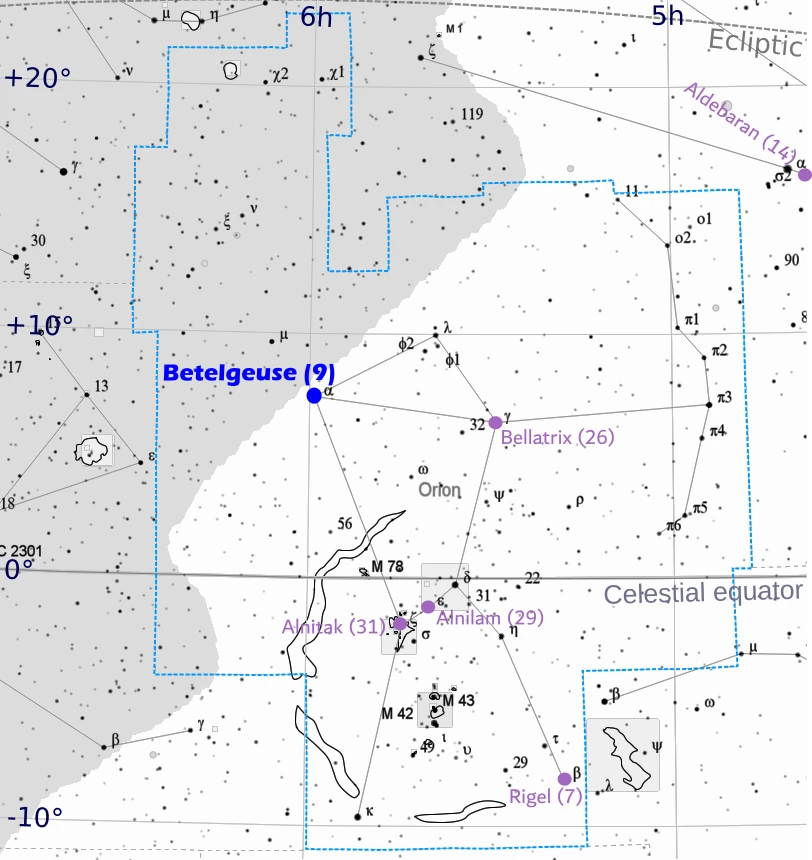

Visual magnitude: 0,45 Absolute magnitude: -2,77 Distance (Ly): 144 Spectral type: B6V Luminosity (Sol): 3300 Mass (Sol): 6,7 Diameter (Sol): 10 Surface temperature: 15000K Right Ascencion: 1h38m Declination: -57°14' Solar opposition: 20 October
Achernar in Arabic means “The end of the river”, which firmly corresponds to its position in the Eridane constellation – it’s the last one in the grand chain of stars across the sky. The Eridane (River) constellation, which the last “flow” is Achernar is the longest north-south orientation constellation in the sky. Achernar usually outshines Betelgeuse, although because of its various luminosity, some sources place Betelgeuse at the 9th position instead. The second reason behind it is the fact, that Archernar never rises above the horizon in most of North America and Europe, for this reason, some observers in the northern hemisphere don’t cite it.
Achernar is the binary system, whereas bigger is Archernar A. Both stars are on average 6.7AU apart. The age of Archernar is estimated to be just several hundred million years. The main feature of Archernar is its extremely rapid rotation. Its high spin velocity reaches 250km/s resulting in forces, which flatten the star significantly. In turn, the equatorial radius is even 56% larger than the polar radius. Another result of this fast rotation is losing a large amount of gas.

Achernar is the second furthest 1- st magnitude star (after Antares) among other 1- st magnitude stars. In the case of Achernar, the closest 1- st magnitude star is Fomalhaut located 39° 06′ away. About 2000 years ago Archernar was the most distant 1- st magnitude star from others, now Antares takes the lid.
Achernar can be found a few degrees above the Magellan Clouds. It lies in a straight line between Canopus and Fomalhaut.
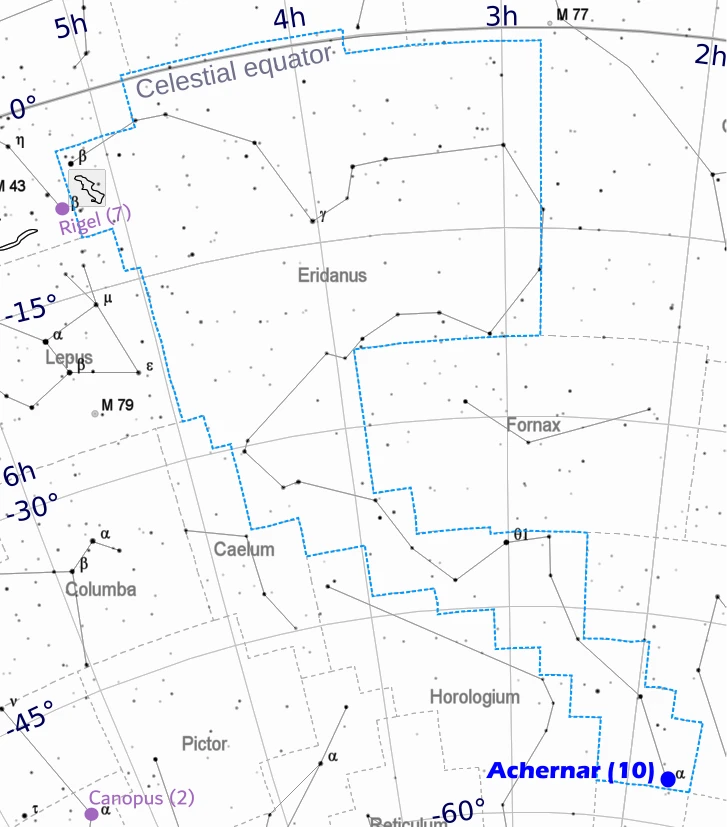
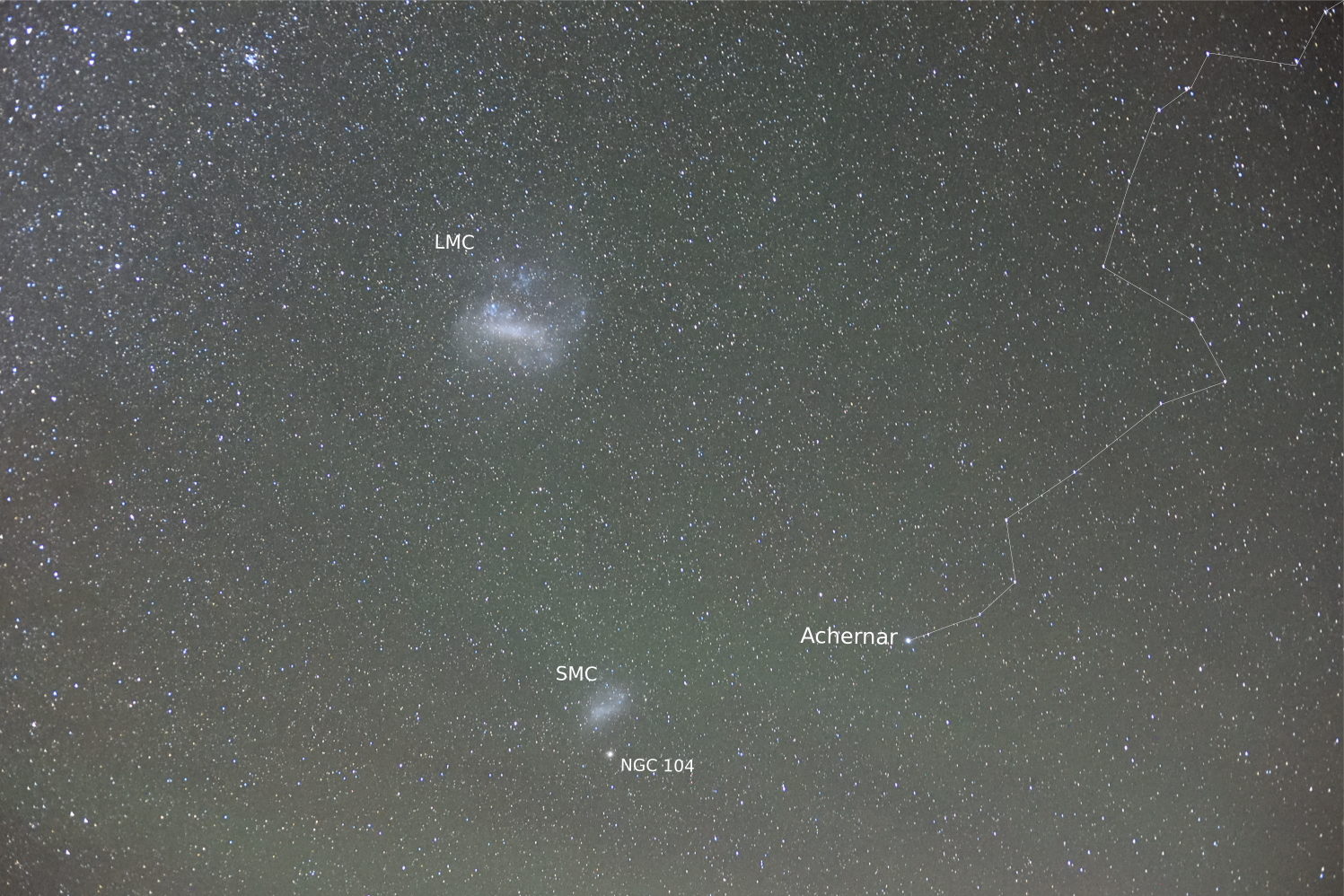
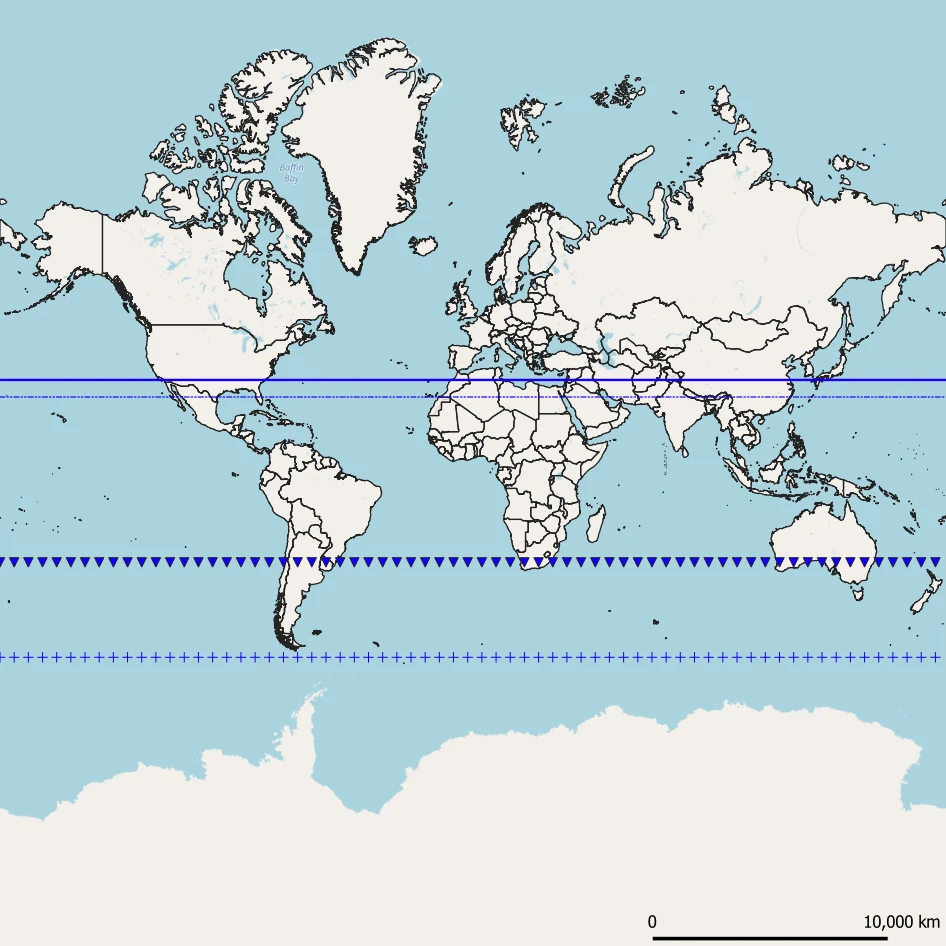
Visual magnitude: 0,61 Absolute magnitude: -5,42 Distance (Ly): 525 Spectral type: B1III Luminosity (Sol): 16000 Mass (Sol): 10,7 Diameter (Sol): 8 Surface temperature: 25000K Right Ascencion: 14h04m Declination: -60°22' Solar opposition: 23 April
The Hadar star (also known as Agena) is actually a group of three stars, from which a pair of twin B-class stars are expected to go supernova one day. However, the other prediction says, that this binary system will fade into large white dwarfs when they finish burning all the fuel. These near-identical stars orbit each other within 357 days at an average separation of 2.59 AU, whereas the big obit eccentricity takes the stars as close as 0.46 AU and as far as 4.72 AU (Schaaf, 2008). On top of that, both stars are Beta-Cephei Type variables with small changes of brightness within 4 hours. The third star in this group is much fainter (about 4th magnitude) and orbits the aforementioned binary system within around 250 years at a distance of 110 AU.
The name Hadar is a derivative of Arabic and means “on the ground”. In turn, the Agena has an origin in Latin and means “knees”, which corresponds to the knee of the centaur depicted in the Centaurus constellation.
Finding β Centauri is very easy, as the star is located just 4,5° west of the α Centauri and twice further east of the Crux constellation (Mimosa star).
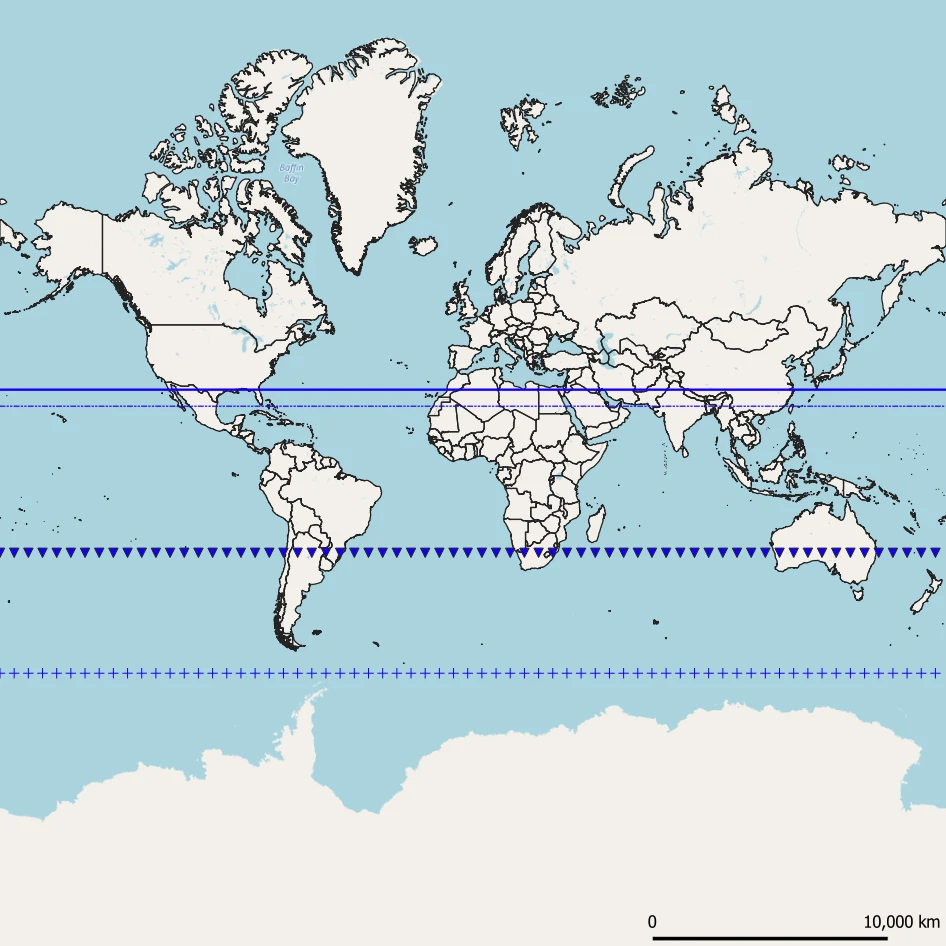
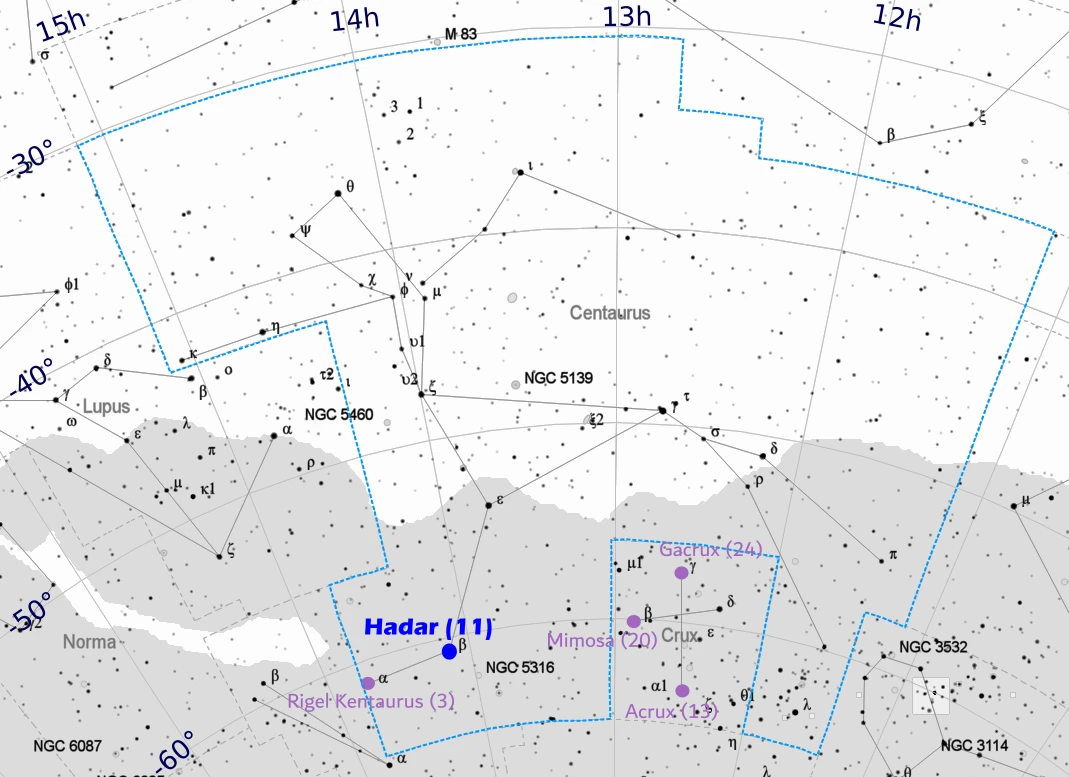
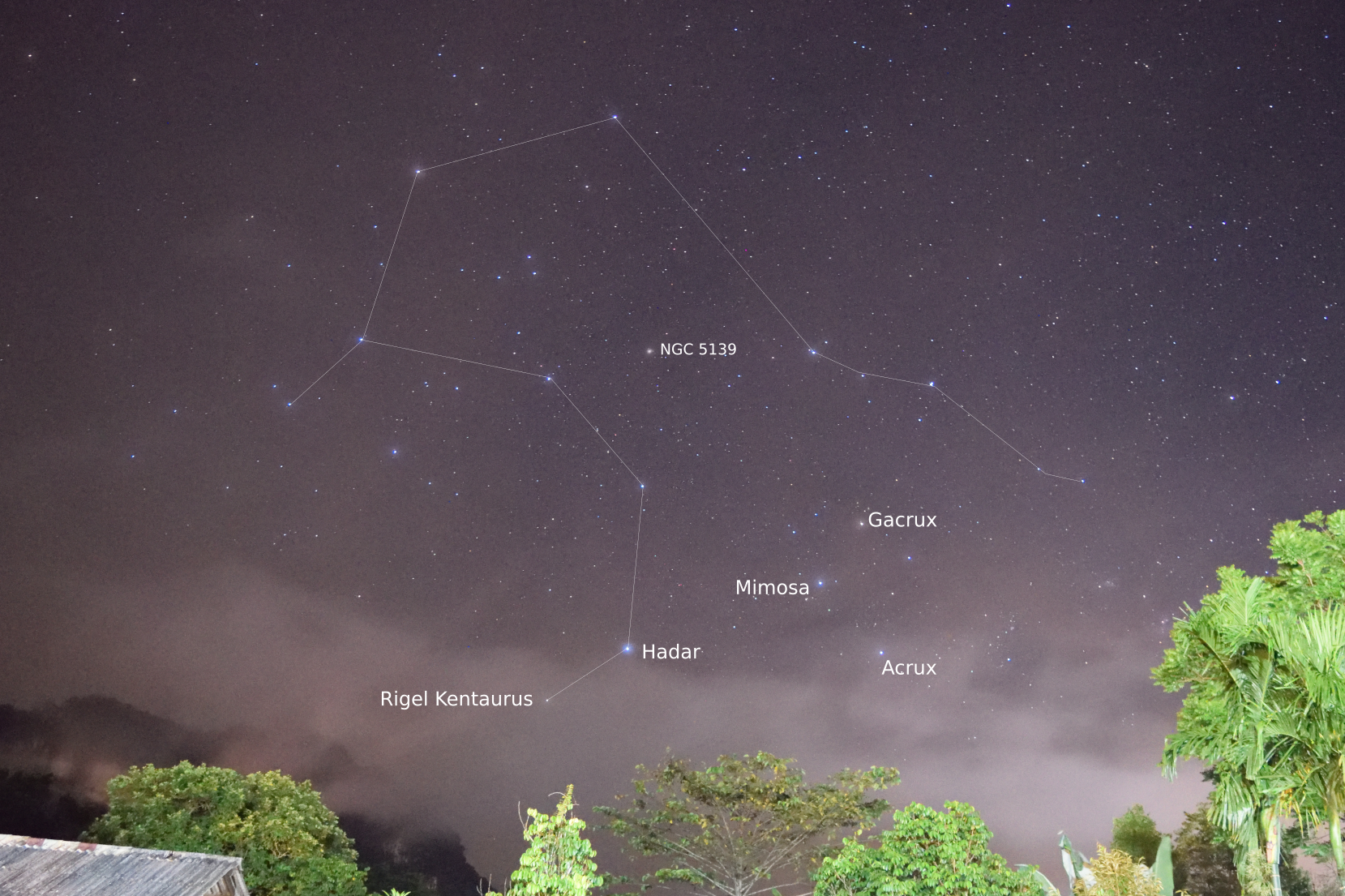
Visual magnitude: 0,76 Absolute magnitude: 2.20 Distance (Ly): 16.8 Spectral type: A7V Luminosity (Sol): 10.6 Mass (Sol): 1.8 Diameter (Sol): 1.8 Surface temperature: 7500K Right Ascencion: 19h51m Declination: 8°52' Solar opposition: 18 July
The name Altair comes from Arabic and means “the flying one”, which accurately corresponds to the whole constellation, in which this star is the brightest – Altair. It’s another example of a star with an oblate shape, which is the result of the fast rotation – 242km/s. In turn, the equatorial diameter is about 20% larger than the polar diameter.
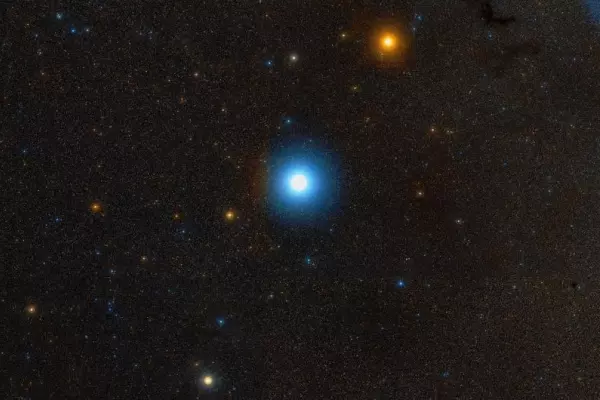
Altair is moving fast against the distant stars. Its proper motion is as much as 1° within just 5000 years. The star is slightly variable in brightness.
Altair is easy to be found in the sky, as it’s the key part of the Summer Triangle. Along with Deneb, Altair makes the basis of this triangle. This is the coolest star in the Summer Triangle, which can be found near the plane of the Milky Way visible across the sky in the row of other 2 stars displayed above (Pic. 47), which is called the Shaft of Aquila (or the Family of Aquila). There is no problem seeing the Altair star except for the south pole.
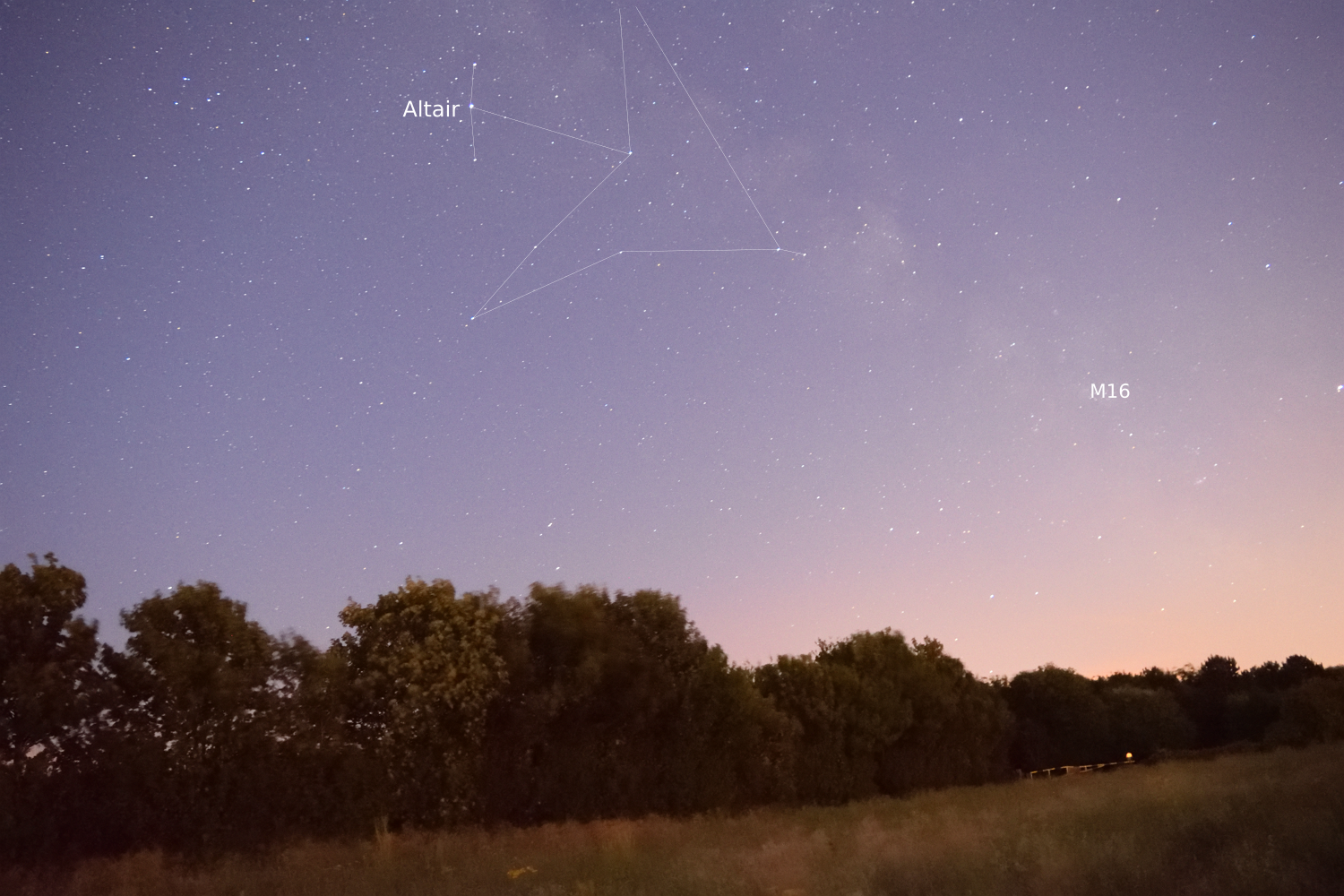

Visual magnitude: 0,77 Absolute magnitude: -4,19 Distance (Ly): 320 Spectral type: B0.5IV+B1V Luminosity (Sol): 25000 Mass (Sol): 14 Diameter (Sol): 7.8 Surface temperature: 24000K Right Ascencion: 12h27m Declination: -63°06' Solar opposition: 28 March
Acrux is the clear abbreviation for α Crucis. It’s a multiple-star system containing 6 components, from which the first two (Acrux A and Acrux B) make the binary system separated just 1 AU from each other with just 76 days of the orbital period. Another star – Acrux C (α2 Crucis) is separated around 430 AU from the brightest binary system. It’s highly likely, that Acrux A and Acrux C will go as supernova one day.
The Acrux star marks the foot of the Southern Cross constellation – the most famous one in the southern hemisphere. This constellation is situated in the plane of the Milky Way from the Earth’s point of view right of Alpha and Beta Centauri described earlier.
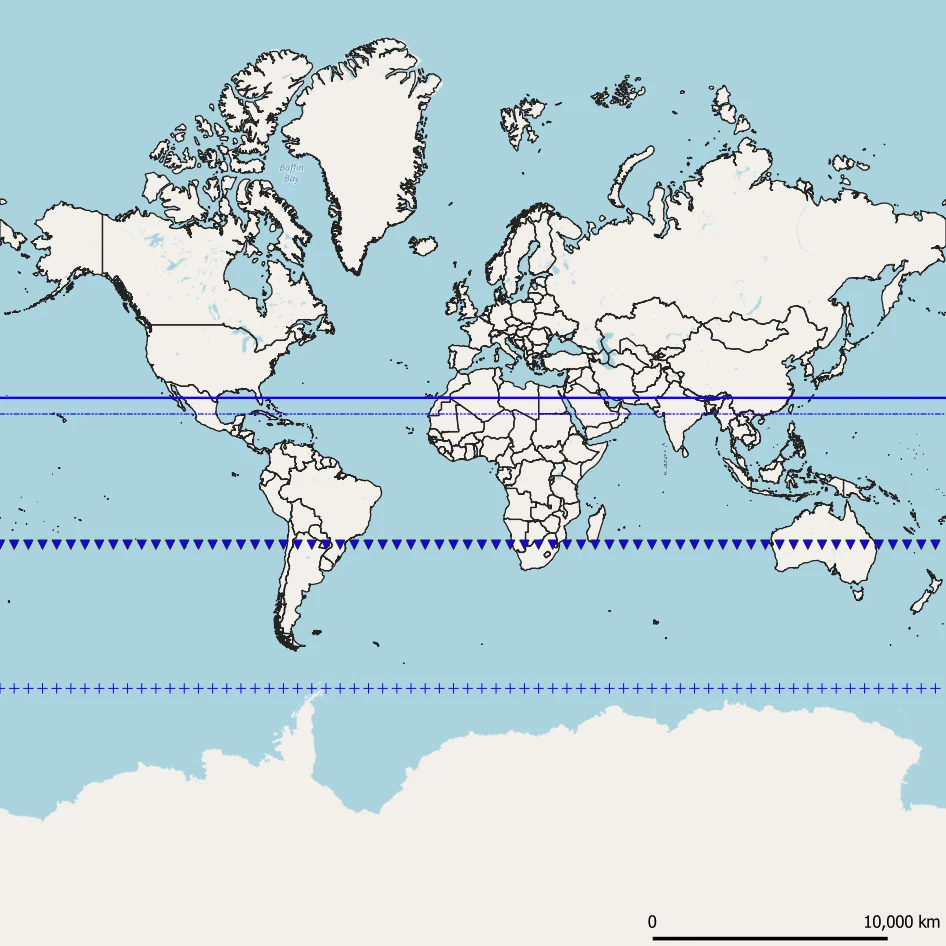
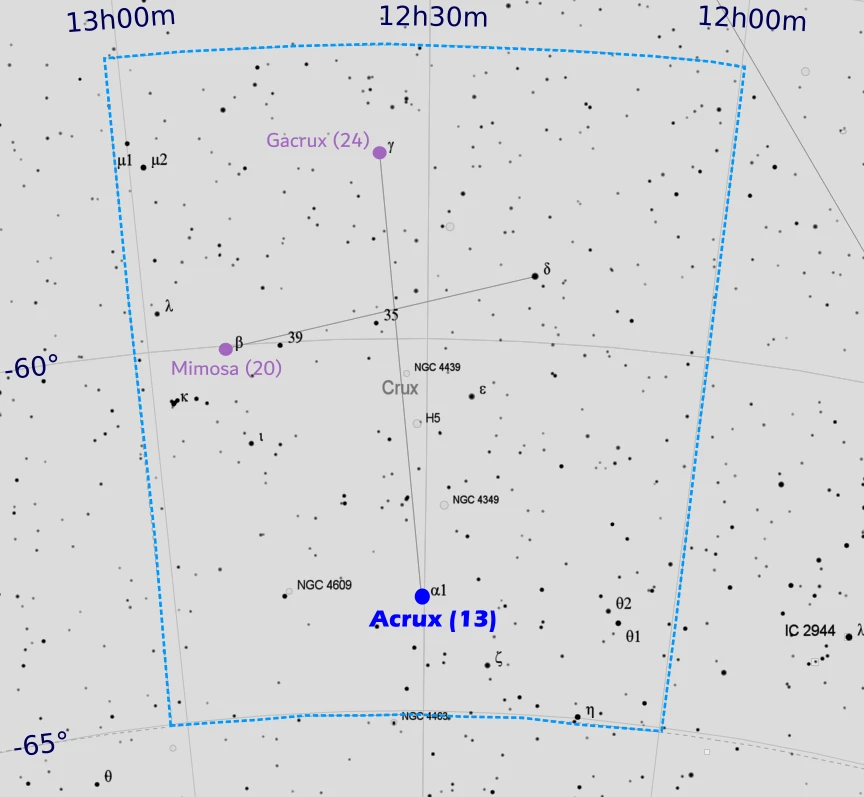
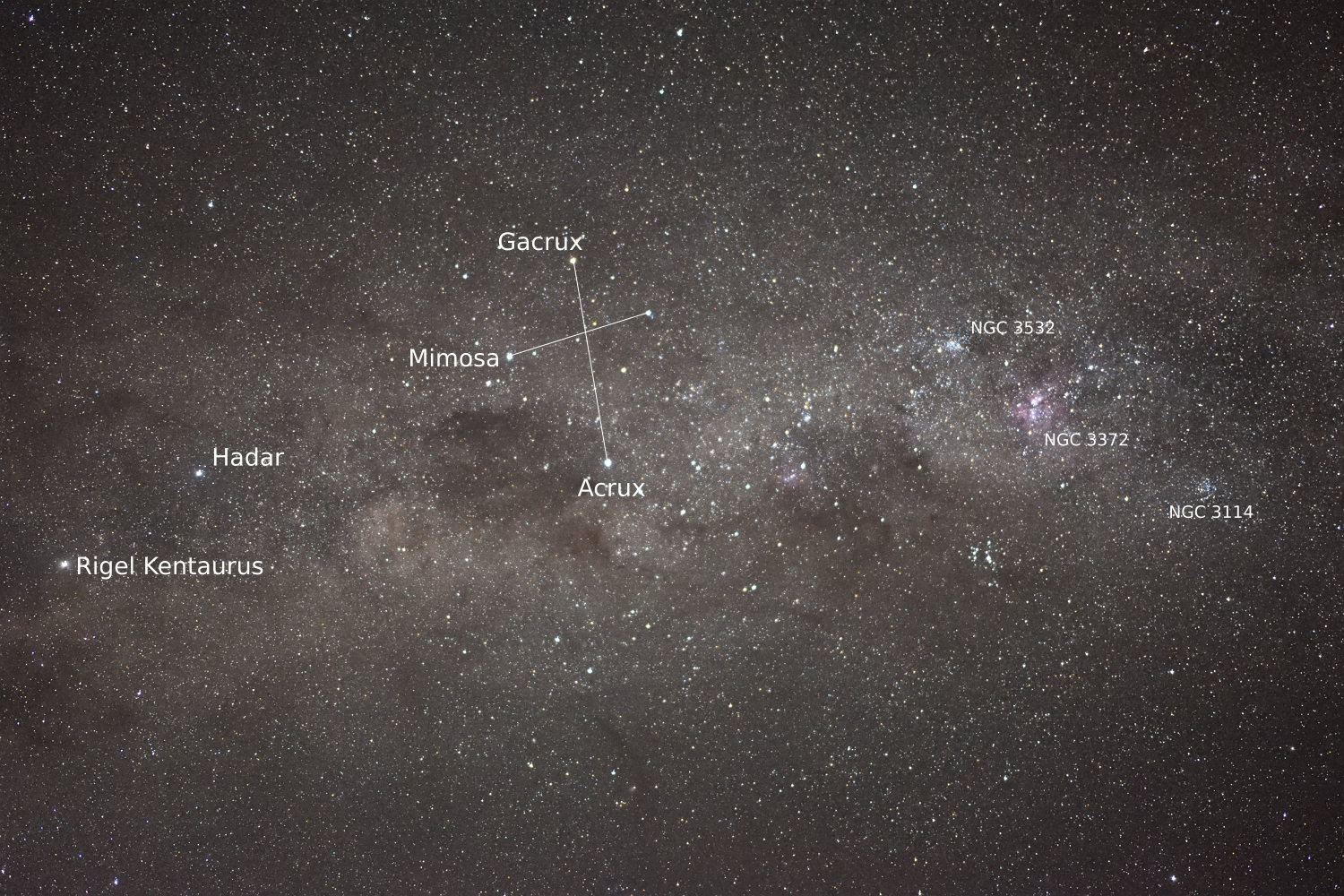
Visual magnitude: 0,87 Absolute magnitude: -0,63 Distance (Ly): 65,1 Spectral type: K5 III Luminosity (Sol): 425 Mass (Sol): 1,7 Diameter (Sol): 44,2 Surface temperature: 3900K Right Ascencion: 4h36m Declination: 16°31' Solar opposition: 3 December
The name of Aldebaran comes from Arabic, which means “the follower” as the star follows the Pleiades. It was formerly the brightest star in the night sky. On top of that at the peak of its brightness, Aldebaran was brighter than any other star over the past million years. The maximum brightness of Aldebaran was -1,54 Mag about 320000 years ago when it was just 21,5 light-years away from the Sun. Nowadays the star is receding from us at a speed of 54km/s, shining like just about a 1 magnitude star. It’s still the brightest star, which can be occulted by the Moon, which I am going to write about in the next article. With respect to this celestial event important is to mention the angular diameter of Aldebaran, which is 0,02″.
Aldebaran is a giant star, that has evolved off the main sequence band (Pic. 53) and variables in brightness slightly. It’s accompanied by a very faint (13th magnitude) red dwarf star.

It’s believed that Aldebaran’s rotation period is almost 2 years, which is roughly 25 times longer than the rotational period of the Sun. Looking at Aldebaran, we can imagine what our Sun will look like around 5 billion years from now. At this stage of life, Aldebaran is still increasing in luminosity and size.
Aldebaran is a part of Winter Hexagon, which is prominently in the sky from December to March. The star can be found quite easily as it lies at the extension of the line from Sirius to the “Orion’s belt” made with three stars in the row from the left to the right. It also acts as the brightest member of the Hyades cluster, which creates the specific letter “V” in the sky. Aldebaran is the closing star of this characteristic shape. For clarification, it’s only how an observer can see Aldebaran adjacent to the Hyades cluster, which is located more than twice as far away from Earth.


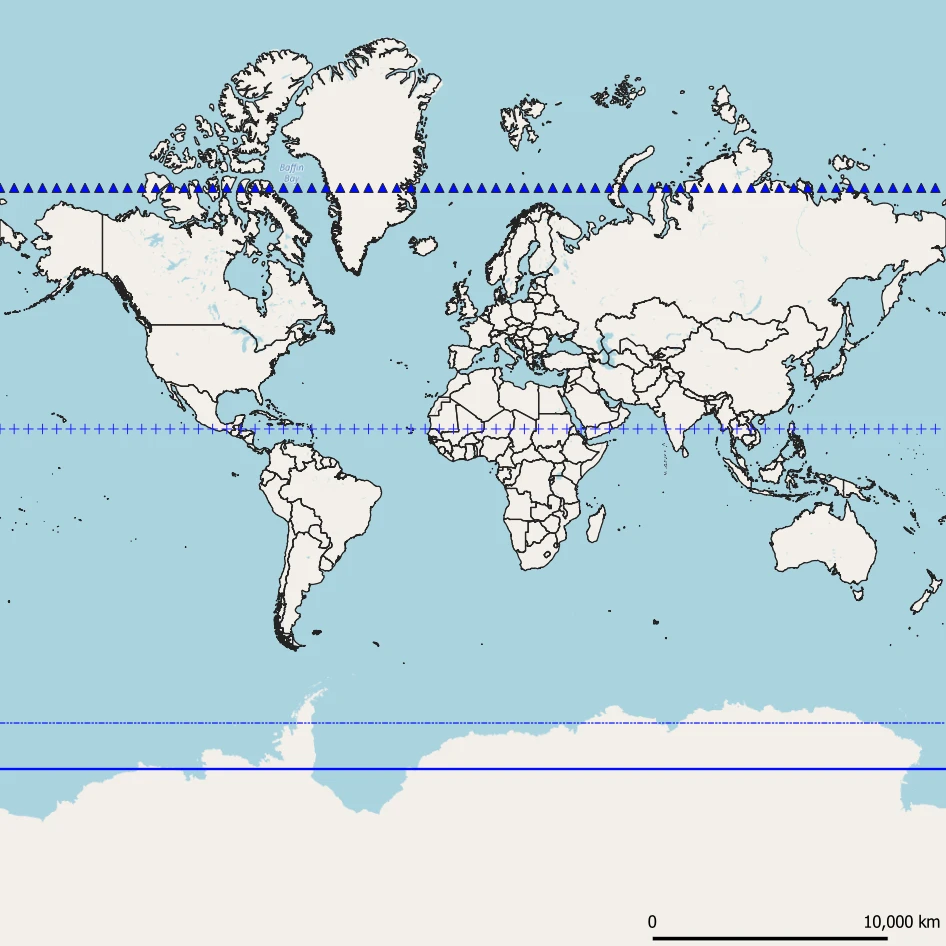
Visual magnitude: 0,98 Absolute magnitude: -3,55 Distance (Ly): 260 Spectral type: B1V B2V Luminosity (Sol): 13400 Mass (Sol): 11 Diameter (Sol): 7,8 Surface temperature: 25300K Right Ascencion: 13h25m Declination: -11°10' Solar opposition: 13 April
The name Spica means from Latin the spike of Virgo – the longest constellation of the zodiac, in which Spica is the brightest visible object. It’s one of the nearest massive binary stars to our Solar System, whose components orbit each other within a few days.
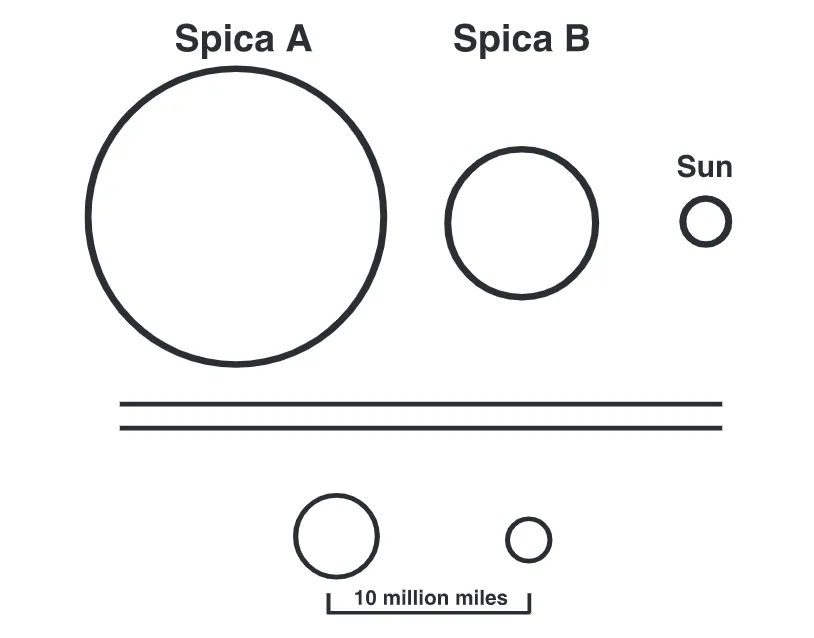

The second component of Spica has a diameter almost twice smaller and a surface temperature around 14000 K lower. Both stars are really close to each other with a separation of just 0.12 AU. It’s just 3x more than the diameter of a bigger star! Furthermore, it’s still an average distance, as they rotate around each other in a slightly elliptical orbit. It’s probably the reason for overall brightness variability, which might be caused by slight eclipses of one of the components by the other as seen from Earth. On the other hand, the primary star has the β Cephei luminosity variations, which are enclosed within just 0.17 days. The rotation speed of this primary star is 199 km/s. The rotation speed of the second one is a bit smaller, although in general, the rotation period of both is faster than their mutual orbital period. Both stars are mutually distorted through their gravitational interaction.
Spica is located just over 2° south of the ecliptic, which means that the star can be occulted both by the Moon and the planets. In the case of those first, it will be a separate text. The planet’s occultations can be really interesting. The last occultation of Venus by the planet was in the XVIIIth century (Venus) and the next one will be observed in almost 200 years (Venus again). The location of Spica in the sky is quite recognizable because the star is located almost at the same line as Arctur, which is much higher. Moving your head south of Arctur without any turns left or right we can see the Spica star. When you are watching the sky from the southern hemisphere, then your turn should be the opposite. The star is visible almost everywhere around the globe except in the most extreme polar regions (Pic. 59). The same as Arcturus, Spica is a part of the Giant Diamond asterism.
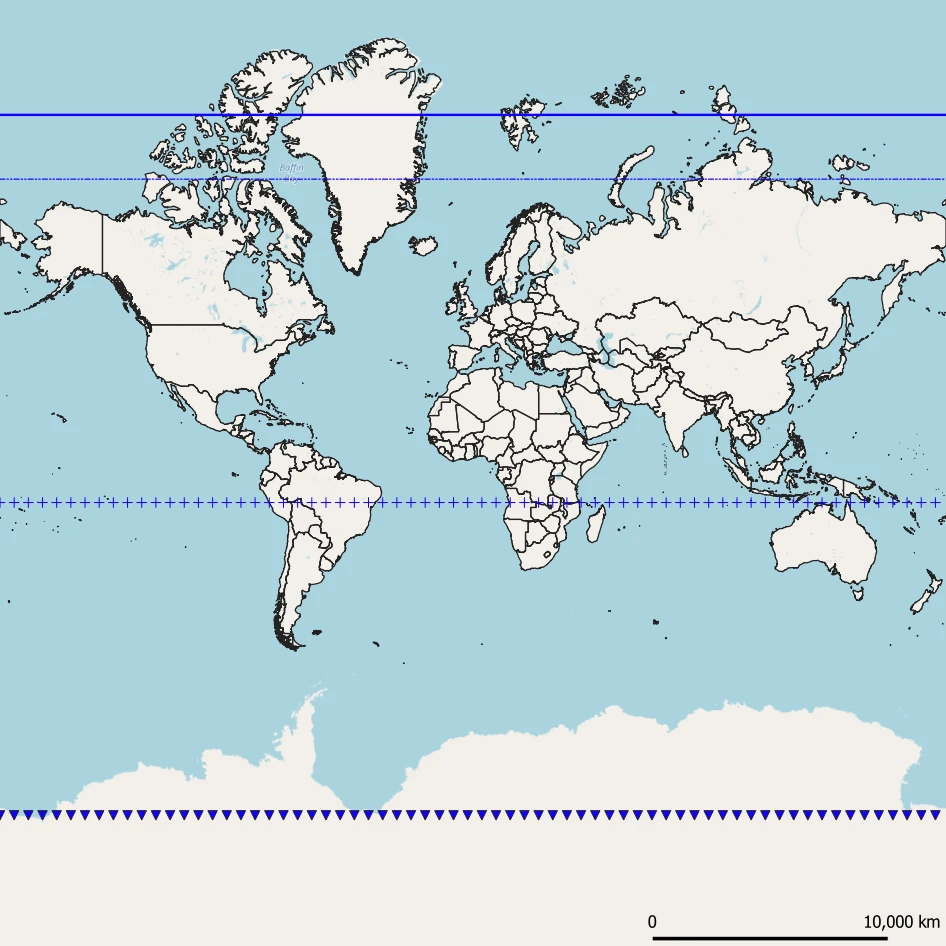
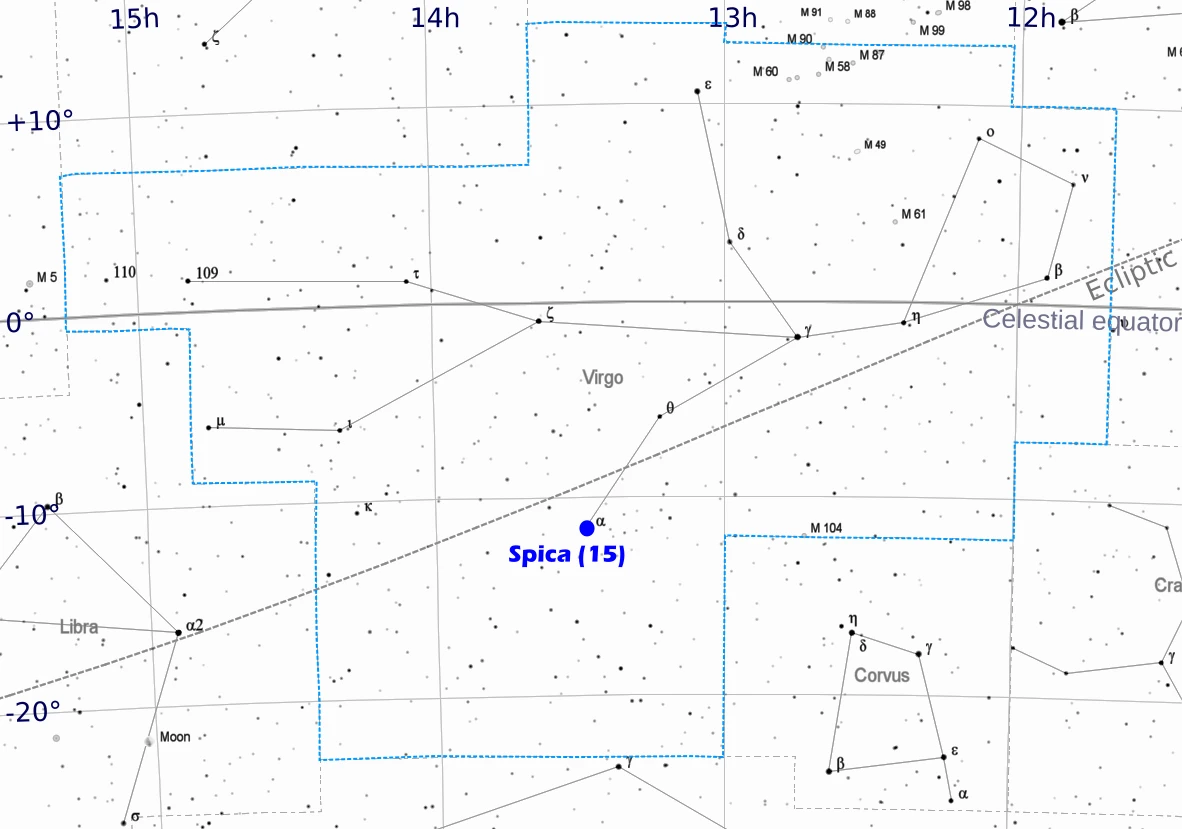

Visual magnitude: 1,06 Absolute magnitude: -5,28 Distance (Ly): 605 Spectral type: M1Ib+B4V Luminosity (Sol): 65000 Mass (Sol): 15.5 Diameter (Sol): 800 Surface temperature: 3700K Right Ascencion: 16h29m Declination: -26°26' Solar opposition: 30 May
The name Antares symbolizes in the Greek language “the rival of Mars” because of its reddish appearance similar to the Red Planet. Antares is a red supergiant. If we would replace this star with our Sun, its outer surface would reach the asteroid belt located between Mars and Jupiter (Pic. 62).
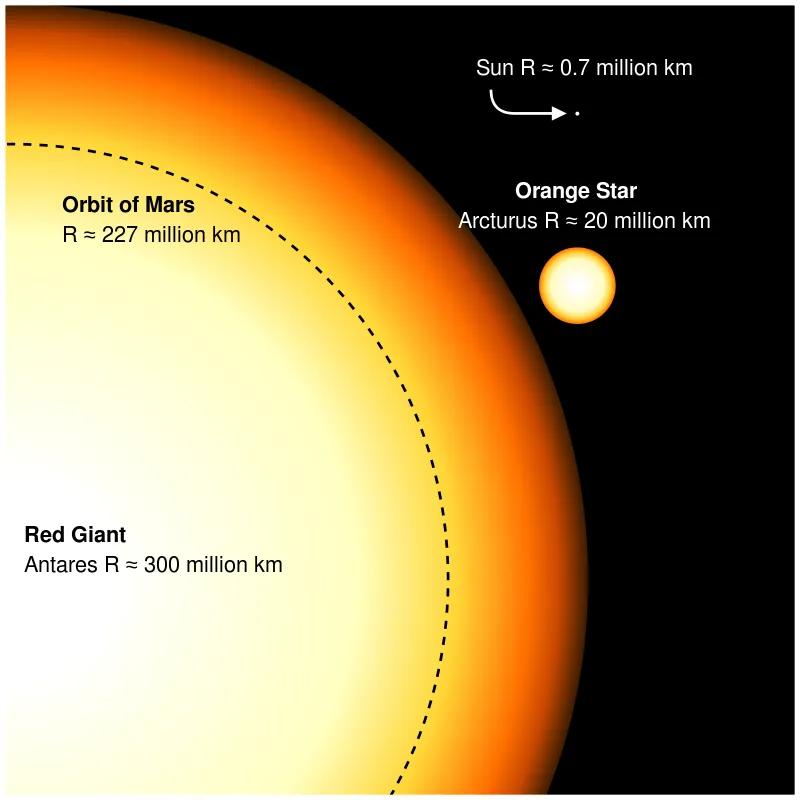
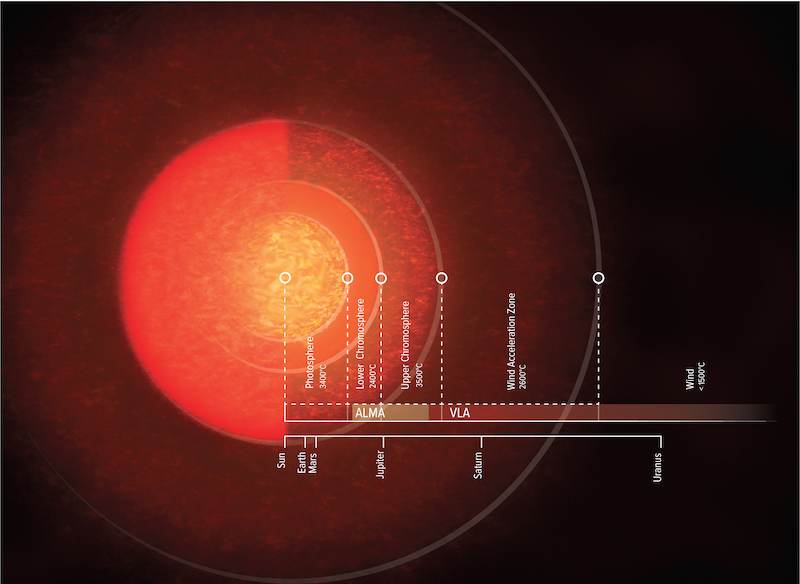
This is the double star system, which includes also the Antares B companion. The Antares B is about 60x fainter than the main star and this is the blue-white main-sequence star, which is often described as green due to the contrast effect caused by the glare of Antares A. The average separation between Antares A and Antares B is 574 AU. The rotational period of Antares B around Antares A counts 878 years (Pic. 64).
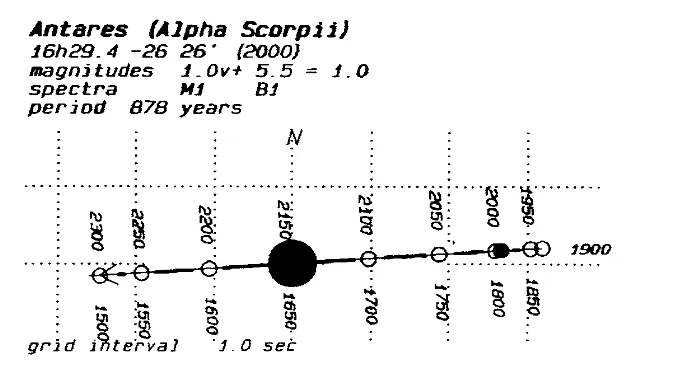
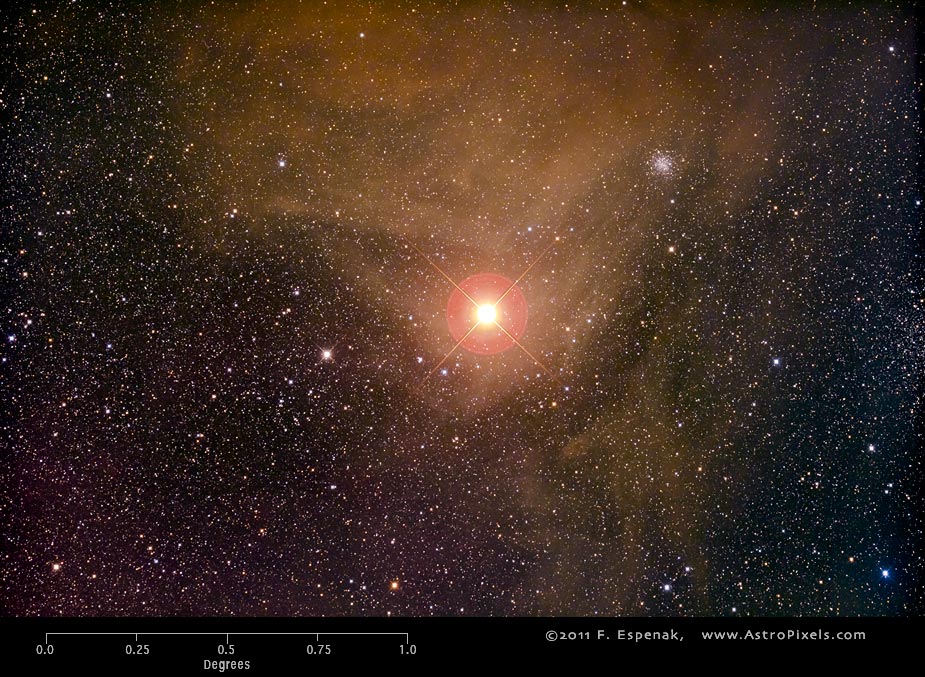
Antares’s opposition to the Sun falls on May 30. The location of Antares against other stars resembles the position of Altair with two other stars in a row. However in this case the flanking stars are almost the same in brightness. It makes them quite easily recognizable in the southern sky west of the Milky Way plane. The celestial location in the southern hemisphere combined with the unfavorable date of opposition means, that at higher northern latitudes Antares remains invisible despite its presence above the horizon. It applies to the latitudes, with maximum solar depression lower than the border of civil twilight (Pic. 66), i.e. Finland, Sweden, and Iceland.

On the other hand, in the case of Antares, the best period of visibility in that particular latitude occurs in the spring, when the star rises under nautical twilight conditions (Pic. 67).



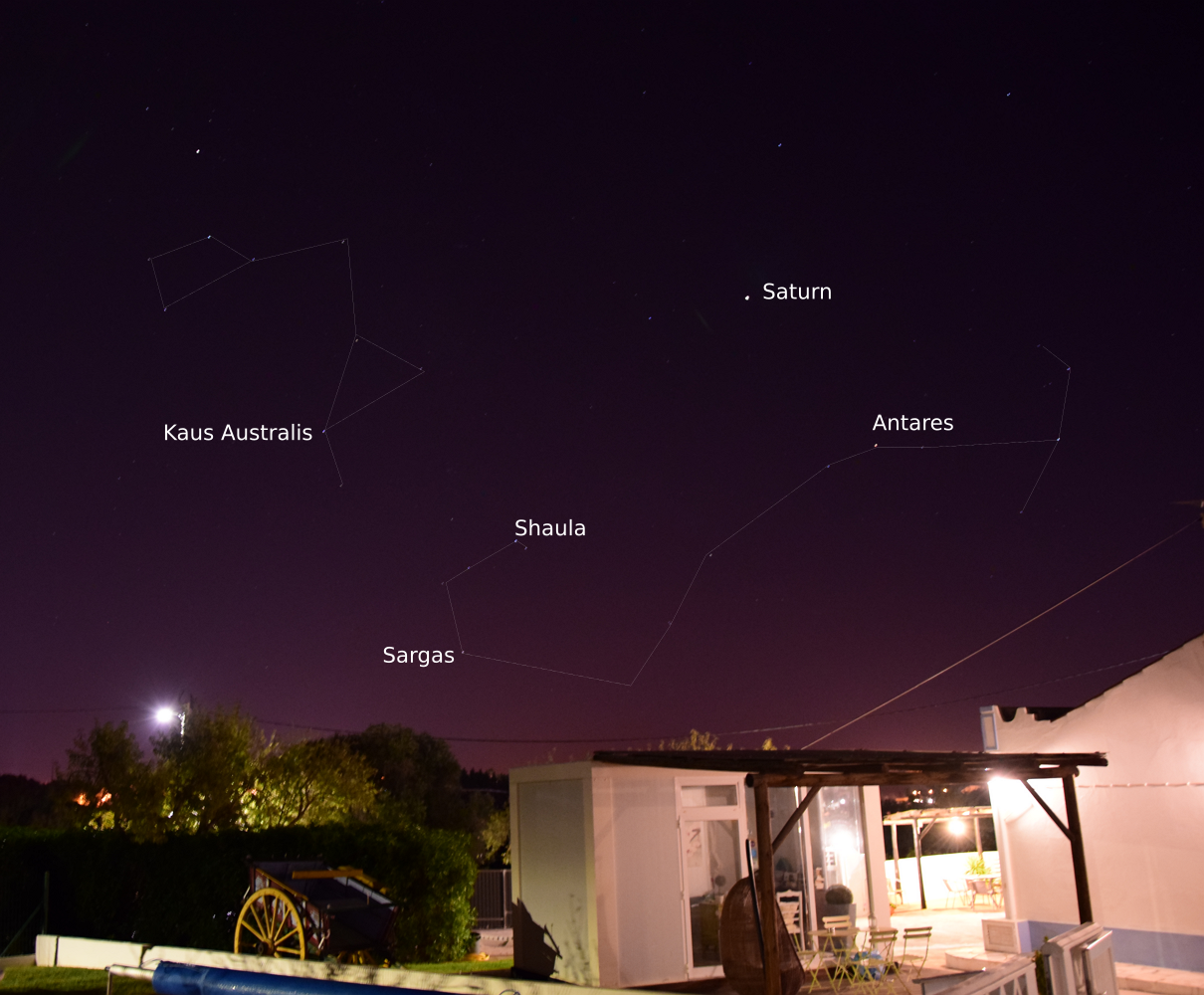
Visual magnitude: 1,16 Absolute magnitude: 1,09 Distance (Ly): 33,7 Spectral type: KO III Luminosity (Sol): 32 Mass (Sol): 1,9 Diameter (Sol): 8 Surface temperature: 4600K Right Ascencion: 7h45m Declination: 28°02' Solar opposition: 14 January
The name Pollux refers to the twins Pollux and Castor in Greek and Roman mythology. Finally, the star comprises the Gemini constellation. Pollux is the closest giant star to the Solar System. It’s smaller than most of its giant “cousins”, which is because the Pollux is at the early stage of its gianthood.
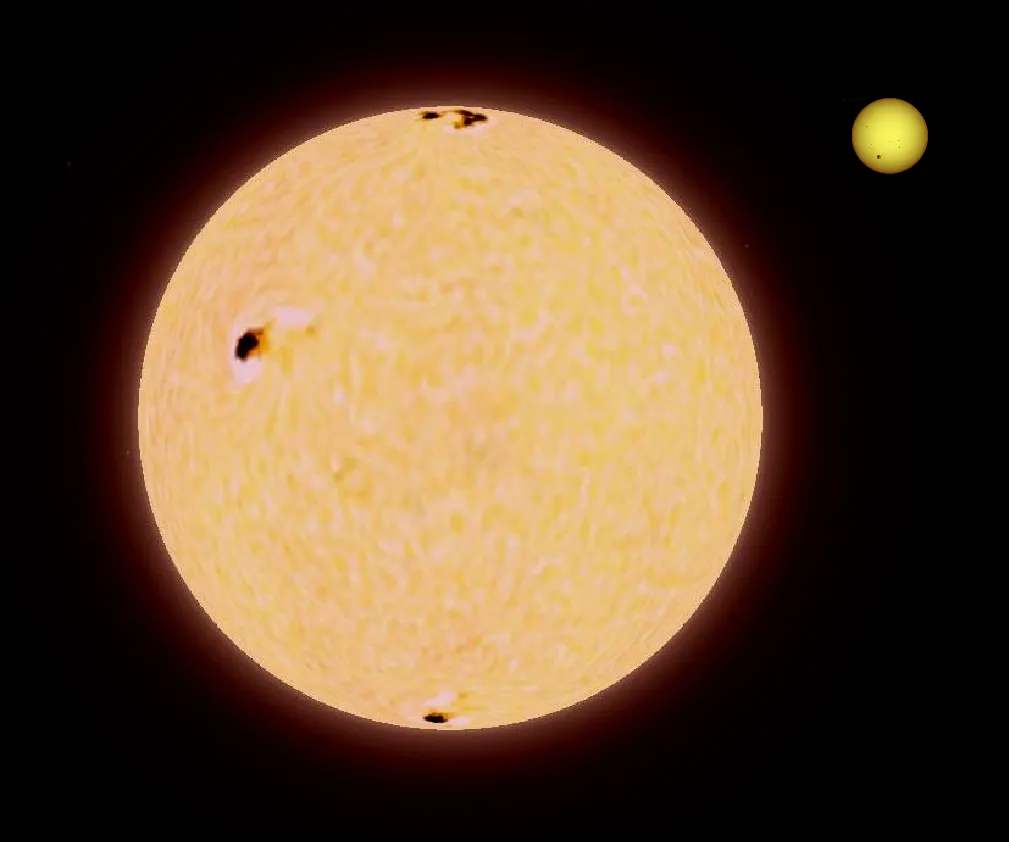
Pollux is cooler than the Sun and it has an orange appearance in the sky. In 2006 Pollux was confirmed to have an extrasolar planet with a mass of at least 2,9x bigger than Jupiter. This planet orbits Pollux from a distance of about 1.69 AU within a period of 590 days. In 2006 it was the brightest star in the sky, which has the planet orbiting it.
The distance between Pollux and its “heavenly twin” Castor is about 18,6 light-years. It means, that Castor shines at about -1 Mag from Pollux.
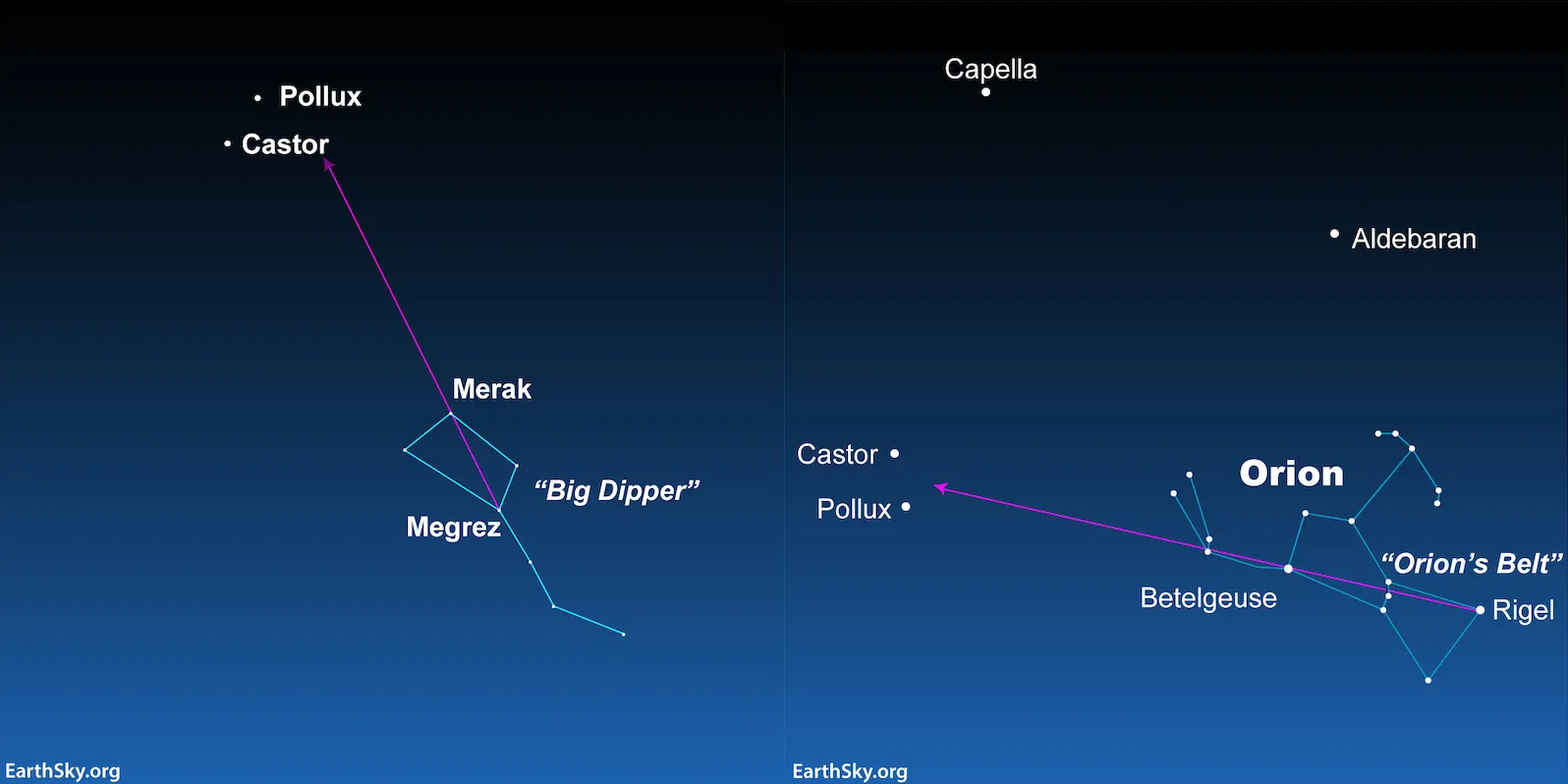
Pollux is located 6,7° north of the ecliptic, which is far too north to be occulted by the Moon. However, it was possible in the past, as historical records prove the last visible lunar occultation of Pollux on September 30th 117 BC (Meeus, 1997). The location in the sky is pretty easy, as you can see in the picture above (Pic. 61). This star makes the Winter Hexagon shape from the very top. The angular distance between Pollux and Castor is just 4,5°. From high latitudes in Southern Hemisphere Pollux can be affected by twilight when around opposition to the Sun.
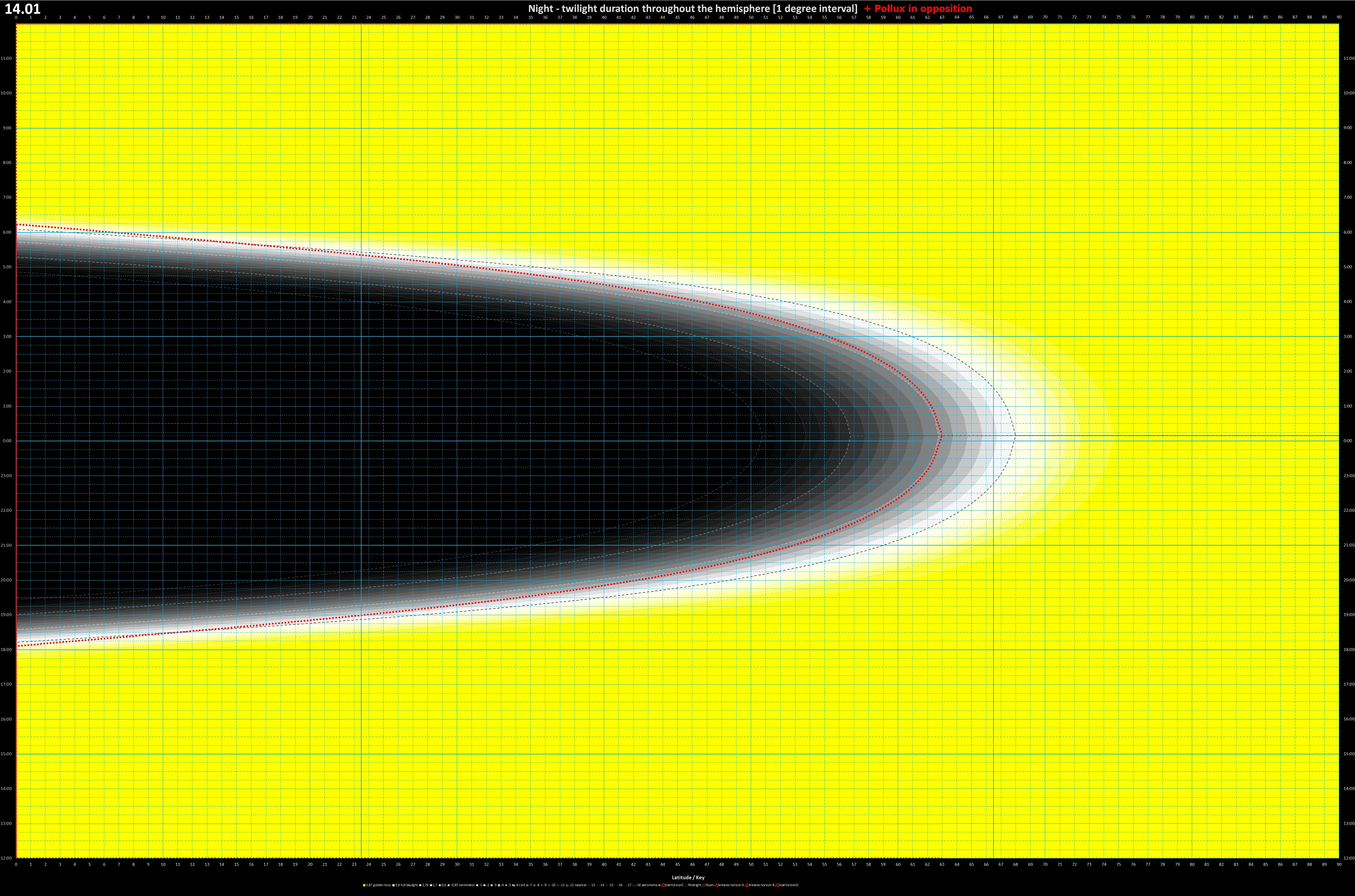
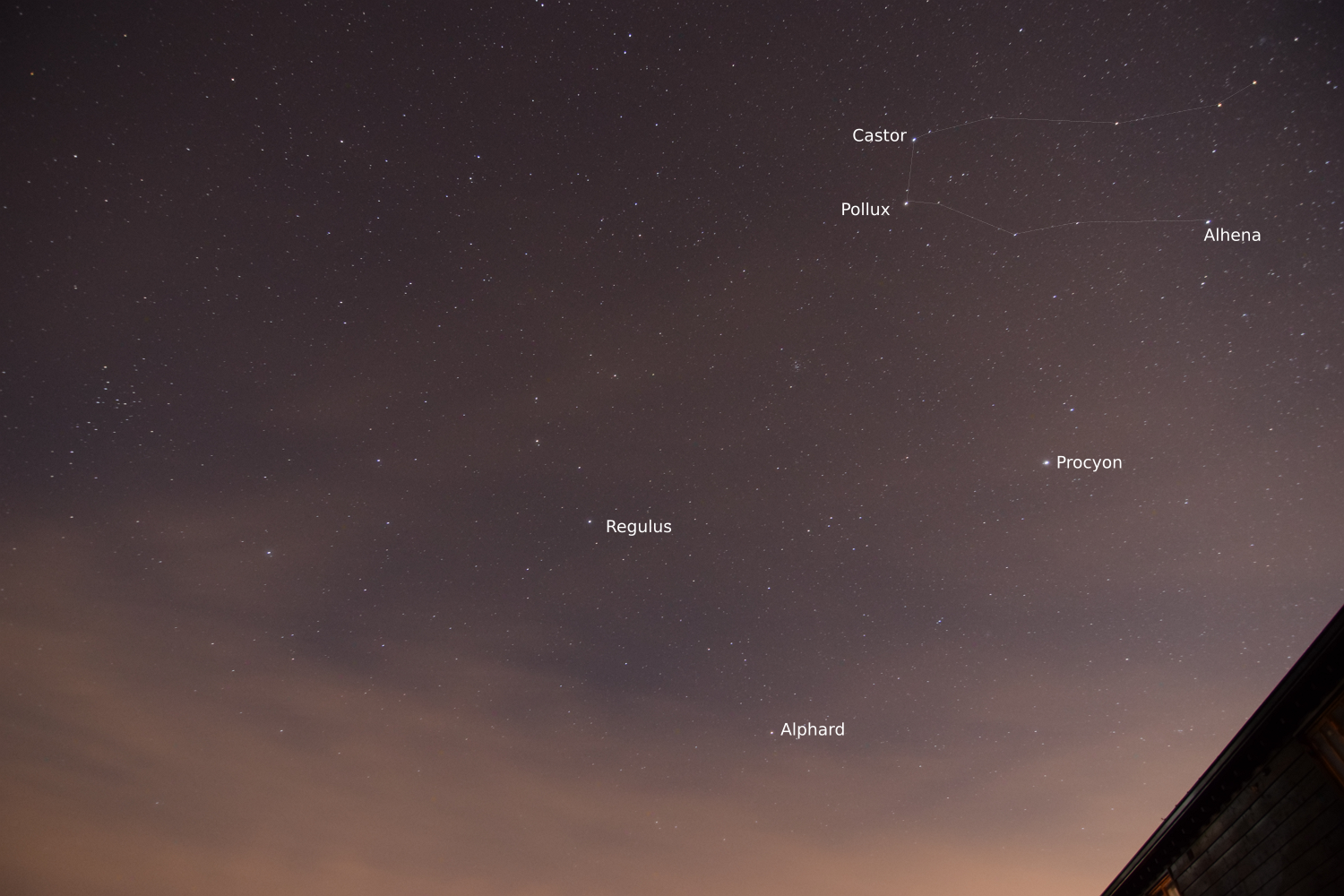
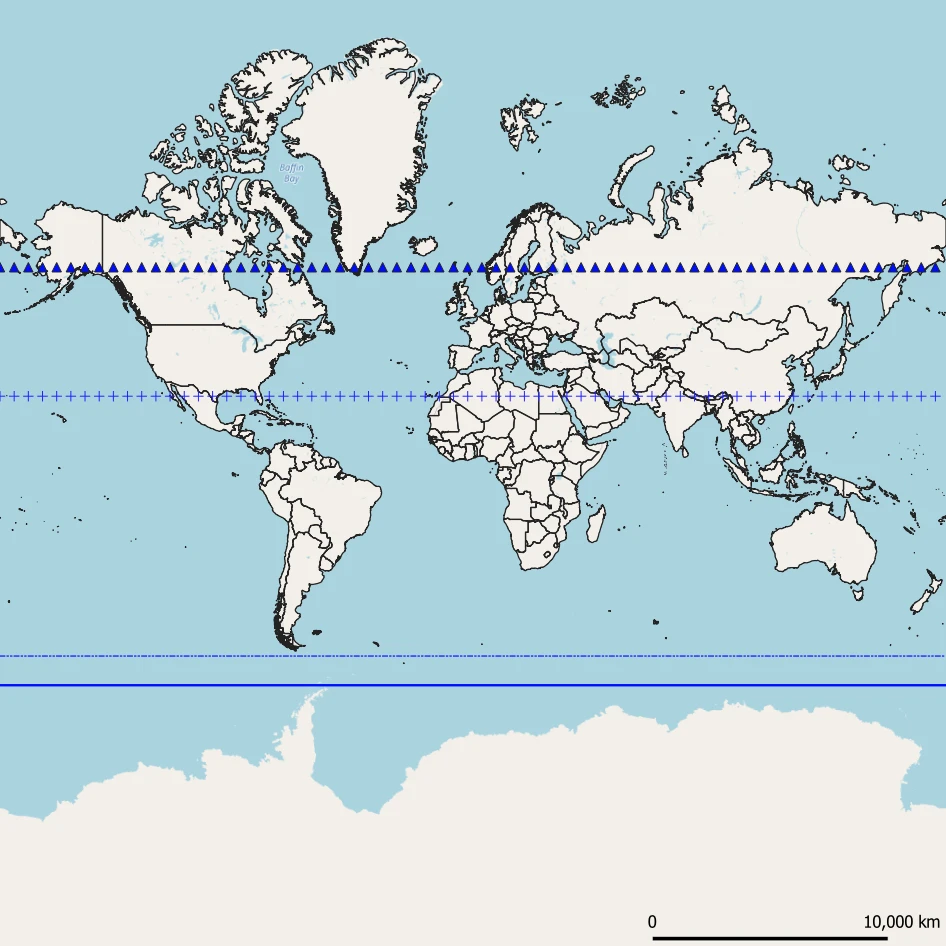
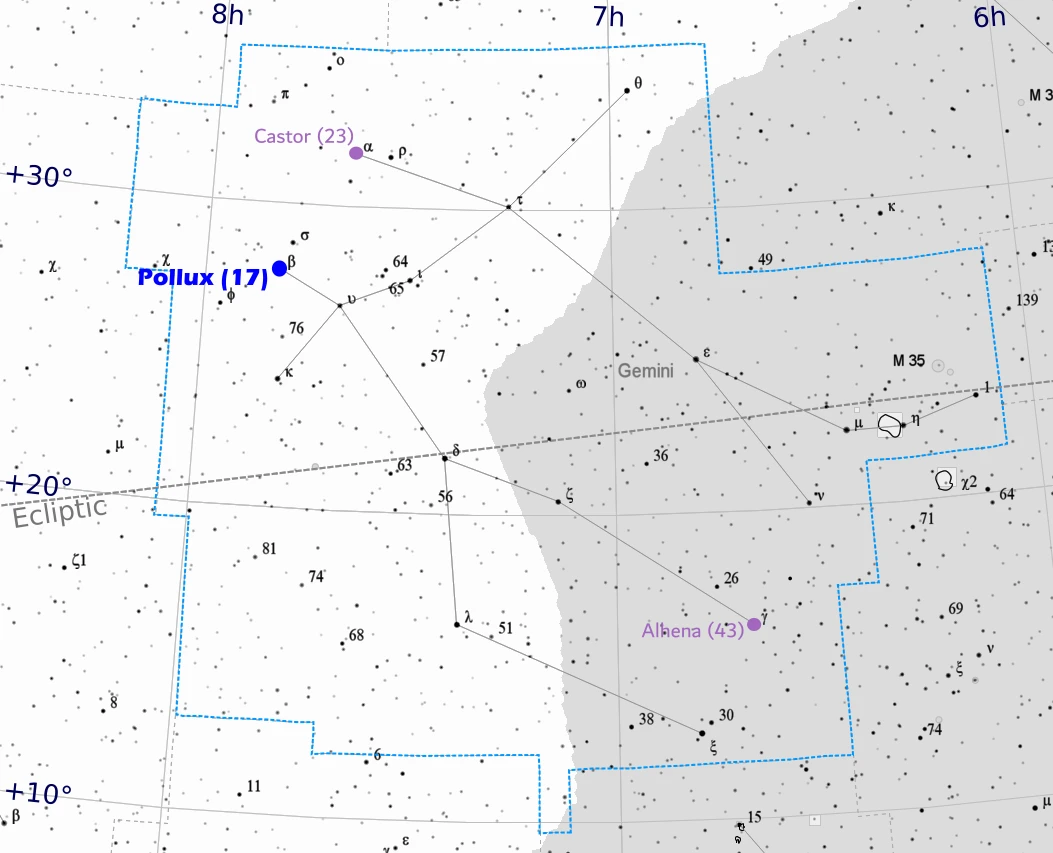
Visual magnitude: 1,17 Absolute magnitude: 1,74 Distance (Ly): 25,1 Spectral type: A3Va Luminosity (Sol): 17,7 Mass (Sol): 2,1 Diameter (Sol): 1,8 Surface temperature: 8750K Right Ascencion: 22h58m Declination: -29°37' Solar opposition: 5 September
Fomalhaut is a close zenith star for most of the population in the southern hemisphere. Therefore it plays a similar role as Vega in the northern hemisphere. The name Fomalhaut in scientific Arabic means literally “the mouth of the fish”, as this star is the brightest in the Southern Fish constellation. This is around a 100-300 million-year-old star with a potential lifespan of about a billion year, which seem to be not enough for developing any planets. After that, the star will become a white dwarf and fade away. Around Fomalhaut, the debris disk called the “Fomalhaut’s Kuiper Belt” has been discovered by the Hubble telescope in the greatest detail ever achieved (Pic. 65).

The debris dusk seems to be a bit lopsided with an offset of about 15 AU, which would lead to the conclusion, that some massive planet rotates Fomalhaut at a distance of 50-70 AU. Fomalhaut has a special significance in extrasolar planet research because it is the center of the first stellar system with an extrasolar planet (Fomalhaut B) captured in visible wavelengths.
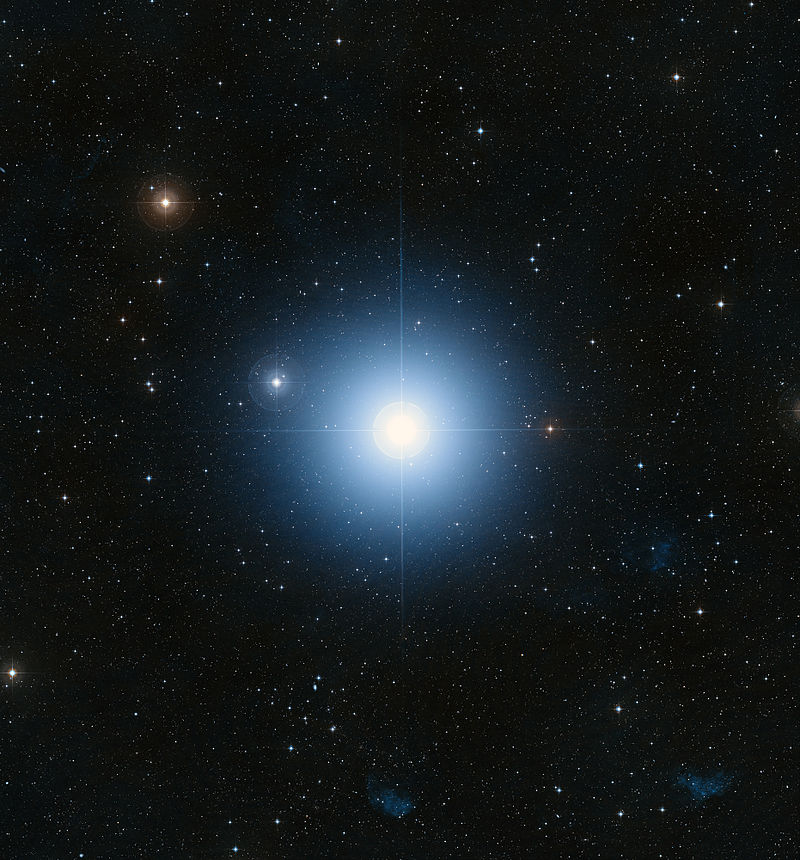
Fomalhaut is undeniably the loneliest of all the 1st magnitude stars, the closest to it is Archernar located 39° away. What is interesting, Fomalhaut is the only 1st magnitude star visible from mid-northern latitudes across a span of about 8 hours of right ascension, which corresponds to about one-third of the way around the entire heavens. Another curious thing is, that Fomalhaut is the one 1-st magnitude star for declinations between -26° and -53°. That’s why this star is the zenith star for most of the inhabitants in the southern hemisphere. Fomalhaut can be called the “Autumn Star“. It can be found right off Diphda star and up from Alnair, where you are located south enough. For northern latitudes, you should turn your sight straight south from the Pegasus constellation until you see this bright star low above the horizon.
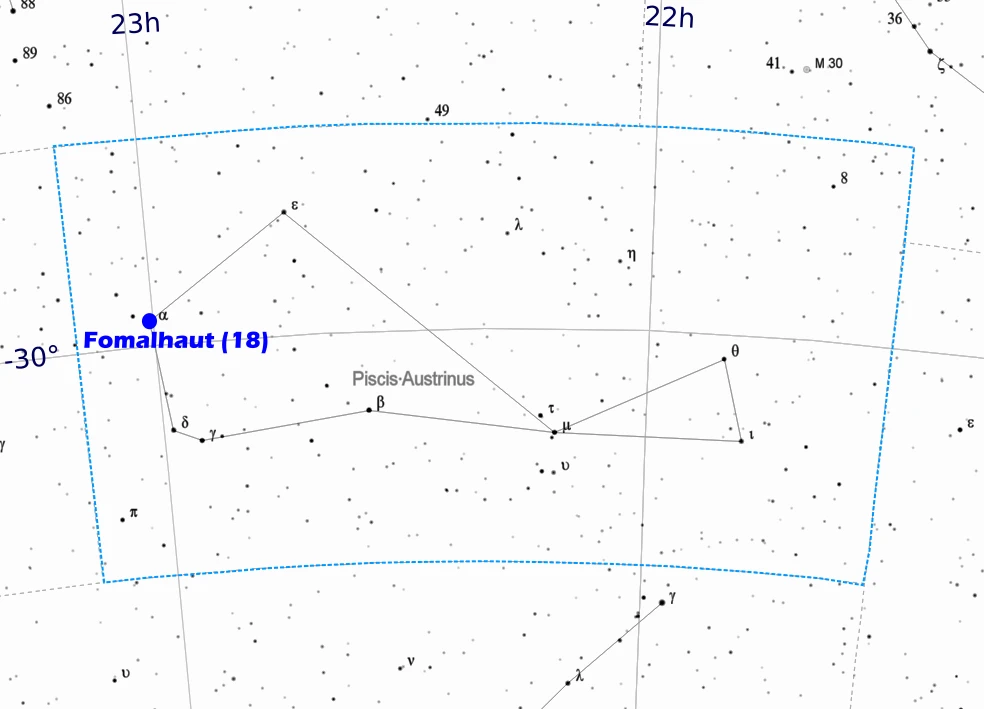

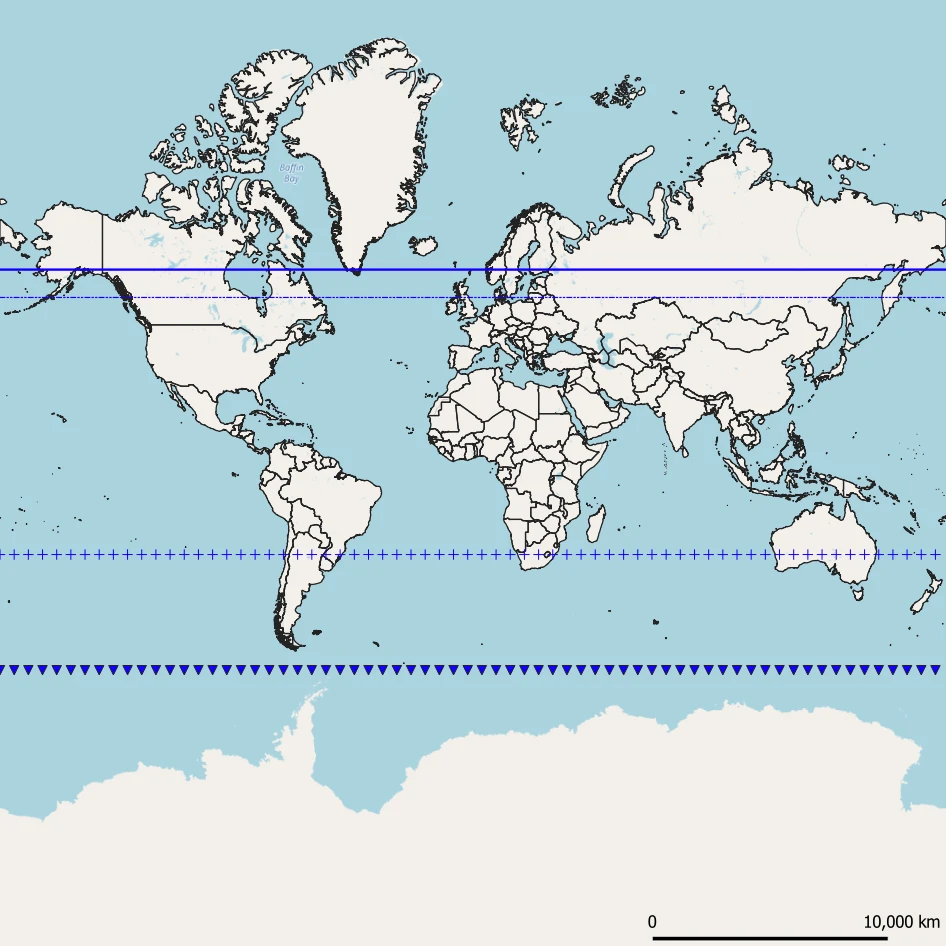
Visual magnitude: 1,25 Absolute magnitude: -8,73 Distance (Ly): 3200 Spectral type: A2 Iae Luminosity (Sol): 54000 Mass (Sol): 20 Diameter (Sol): 110 Surface temperature: 8500K Right Ascencion: 20h41m Declination: 45°17' Solar opposition: 31 July
The Deneb name is derived from Arabic and literally means “the tail”. This name is quite common across the sky (Denebola, Deneb Kaitos, etc.) with a similar meaning to “the tail ” of some constellations. Deneb is the blue-white supergiant, which is currently exhausted of hydrogen in its core and will become a supernova within just a few million years. Deneb has a strong stellar wind, which generates a mass loss rate 100 000 higher than the Sun does. It’s still not enough to avoid going supernova. Deneb is the variable star known as α Cygni variables.
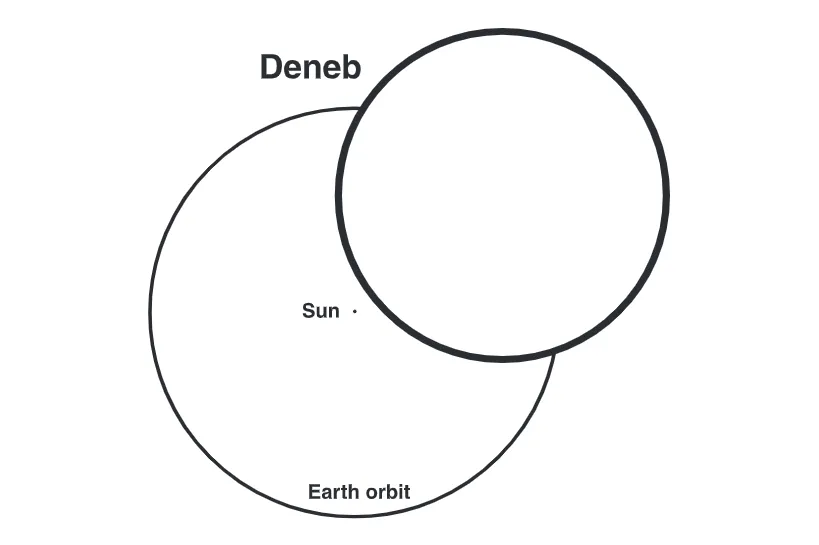
Deneb shines in the plane of the Milky Way pretty much at the opposite location to Big Deeper against the Polar Star. Occasionally Deneb can act as a Pole star due to precession and it will be in this position in 9800AD just 7° away from the north pole.
Today Deneb is the northernmost star in the famous Summer Triangle, which remains circumpolar for all latitudes north of 45°. The star is located at the tip of the Northern Cross – an asterism corresponding closely with The Swan constellation, which is much bigger than the Southern Cross.
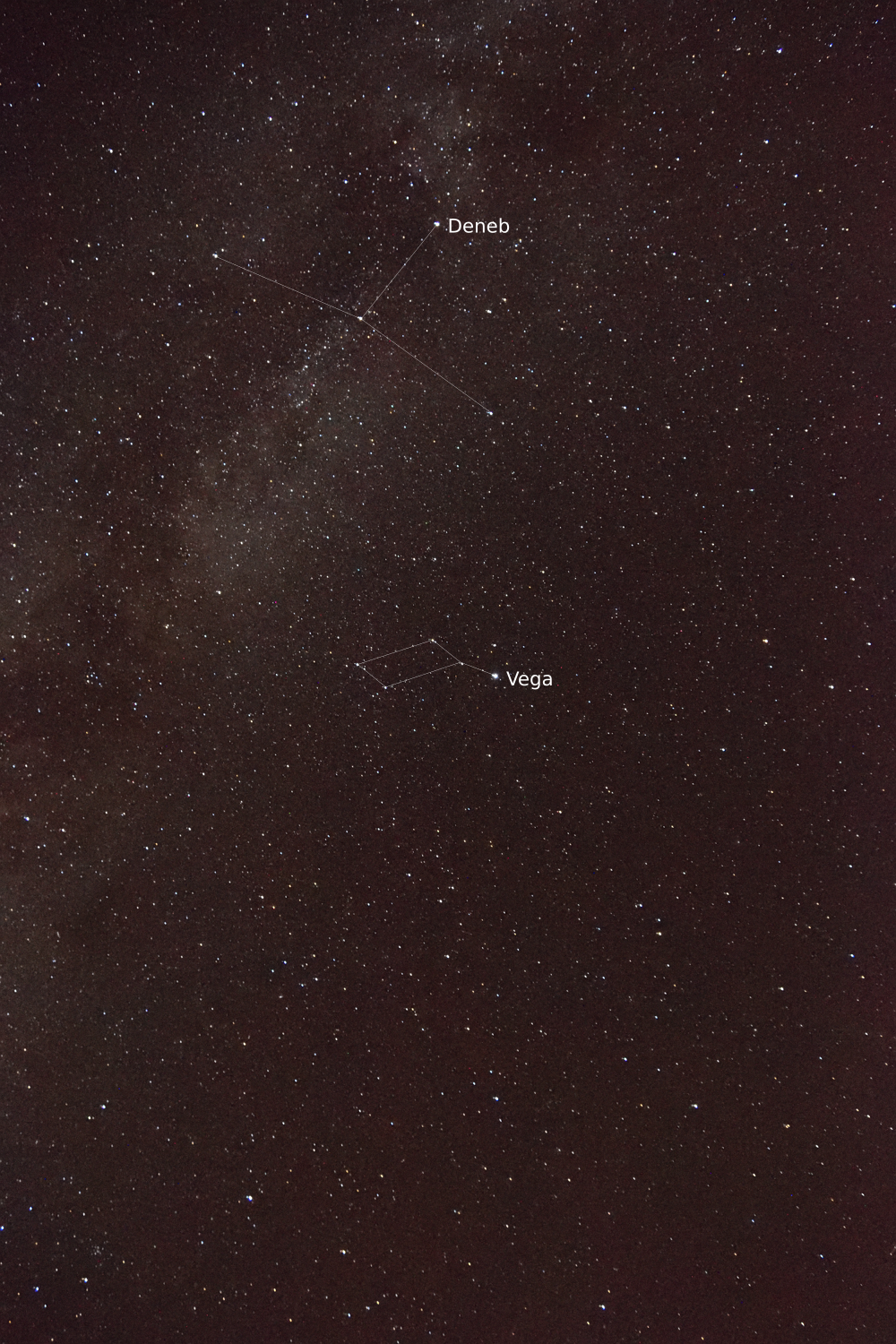
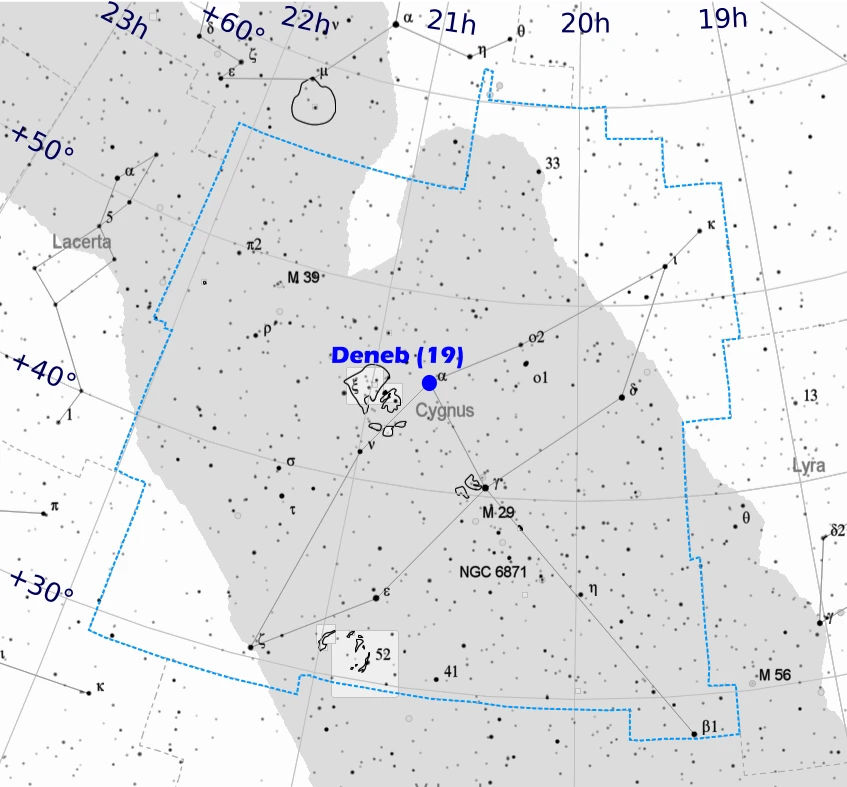
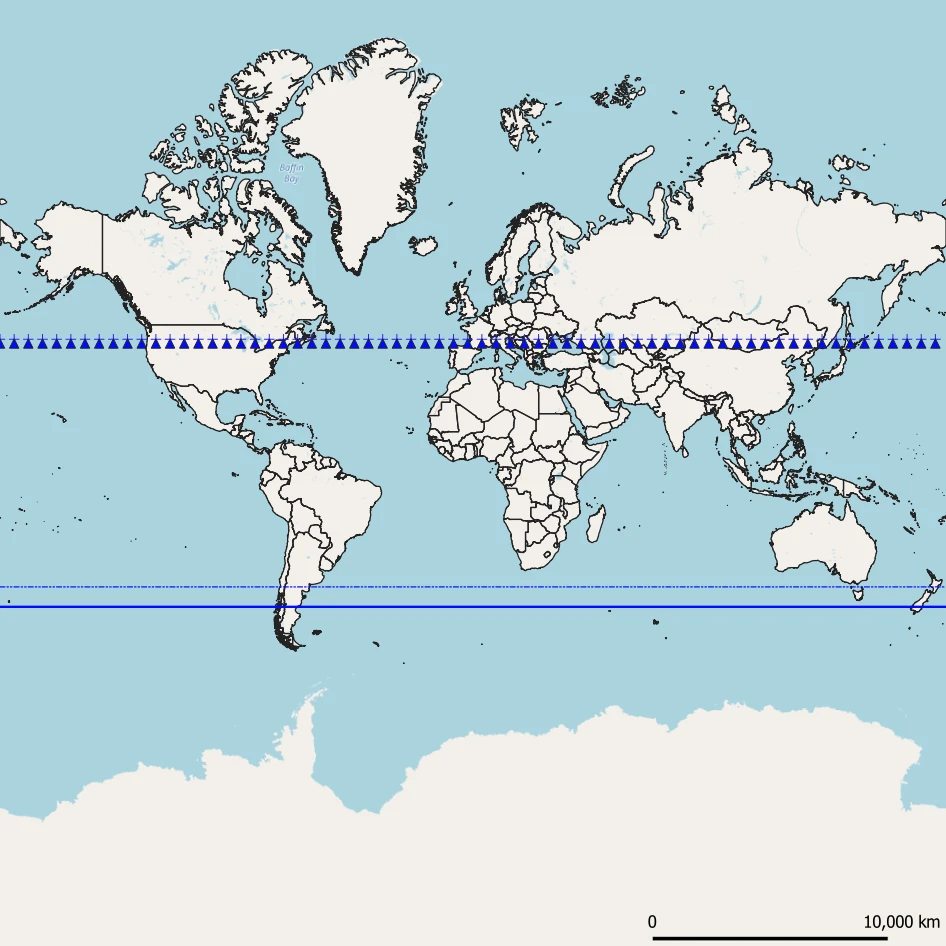
Visual magnitude: 1,25 Absolute magnitude: -3,92 Distance (Ly): 350 Spectral type: B0.5 III Luminosity (Sol): 34000 Mass (Sol): 14 Diameter (Sol): 8 Surface temperature: 27000K Right Ascencion: 12h48m Declination: -59°41' Solar opposition: 2 April
The name Mimosa might come from the flower of the same name. β Crucis is the hottest 1- st magnitude star, which shines blue and produces a lot of ultraviolet radiation. The star has its companion, which orbits it within just 8 AU and is not very luminous. Another 3 companions were discovered in 2007 but are really small, and are believed to be pre-main sequence stars, still in the process of forming. It’s separated around 350 AU from Mimosa and needs around 1600 years to orbit it. There is also another 11-magnitude star in the vicinity of Minosa, but its companionship is rather optical. β Crucis is a variable star with brightness changes within just 5 hours 40 minutes. Because Mimosa has about twice less metal in its content as the Sun, we can suggest that it’s quite a young star. The big stellar wind with an estimated velocity of 2000 km/s-1 means, that the star is estimated to lose one solar mass within just 100 million years.
Finding Mimosa is not a big deal if you know when the Crux is located in the sky. This star shines on the left when Acrux is at the bottom. The section of the sky, where β Crucis appears is really interesting because of the proximity of Coal Sack dark nebulae.

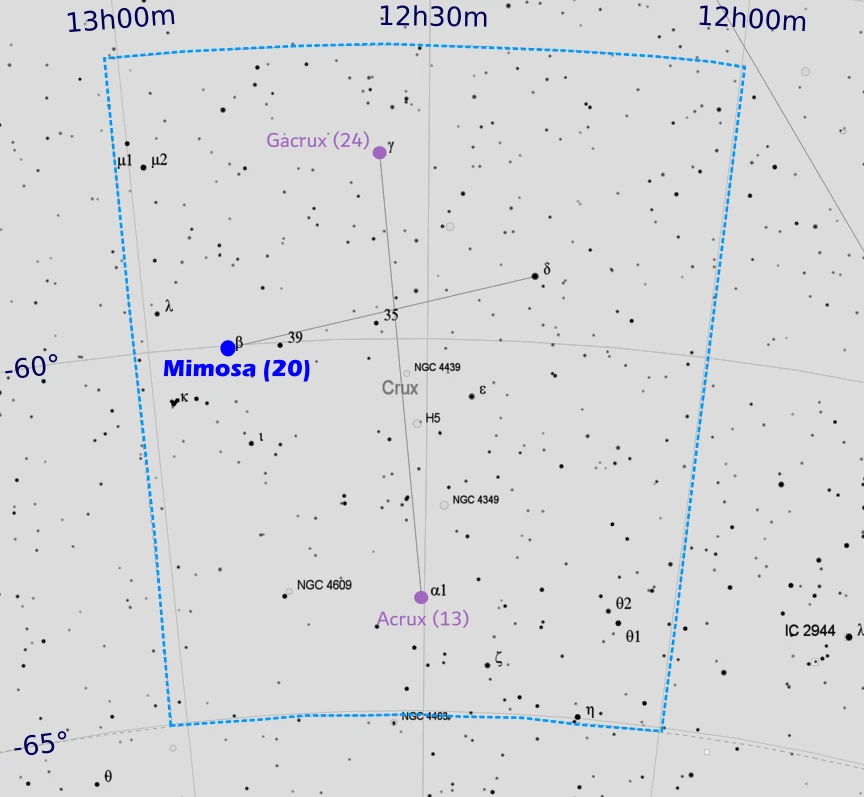
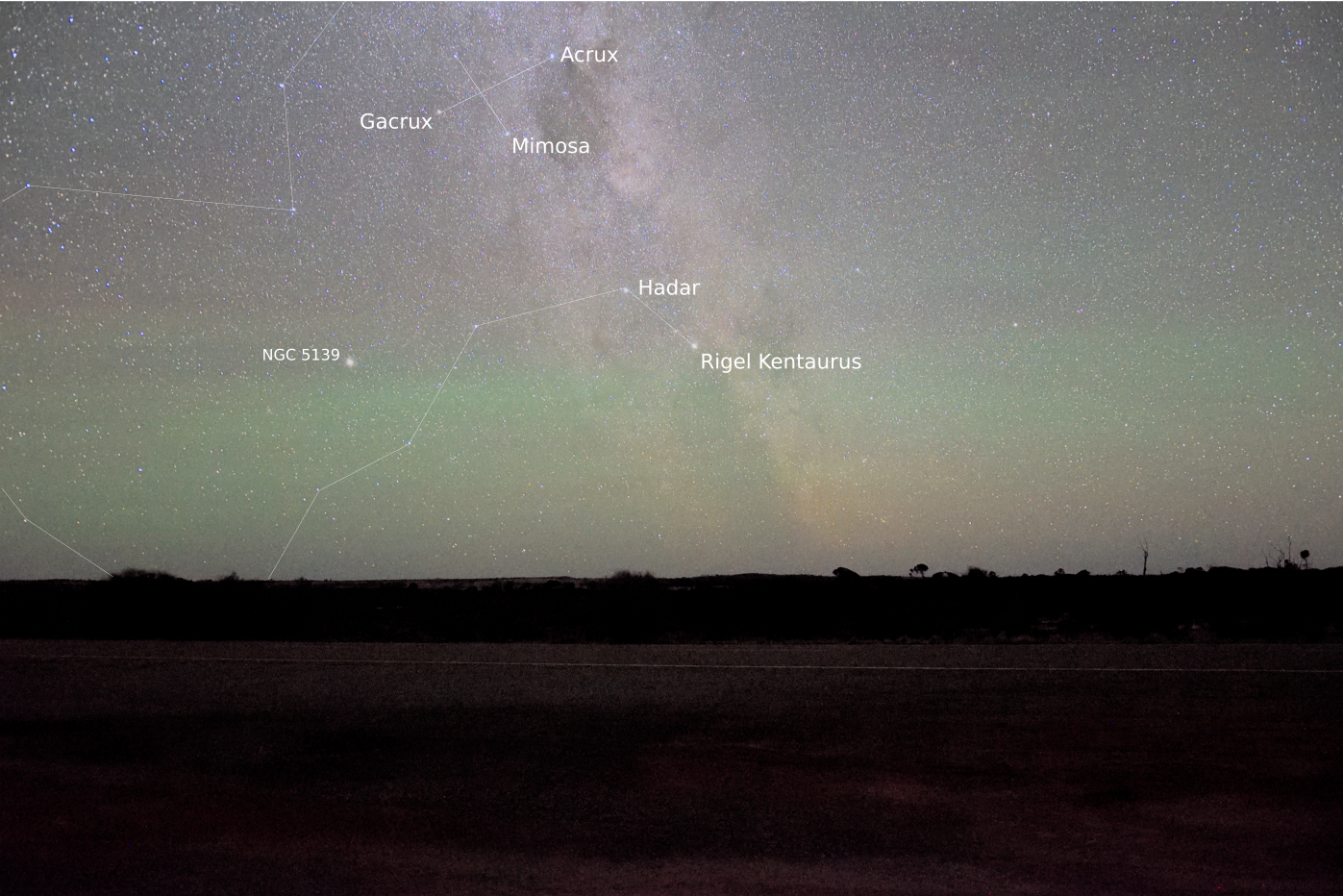
Visual magnitude: 1,36 Absolute magnitude: -0,52 Distance (Ly): 77,5 Spectral type: B7V Luminosity (Sol): 150 Mass (Sol): 3,5 Diameter (Sol): 3,2 Surface temperature: 10300K Right Ascencion: 10h08m Declination: 11°58' Solar opposition: 18 February
The name of this star comes from Latin and means “the little king”. The main feature of this star is its location. Regulus is the closest star to the ecliptic line, less than 0,5°, which makes it the most common bright target for conjunction with the Moon, planets, and asteroids. The fact is, that Regulus played the key role in the saga of the Star of Bethlehem because on August 3 BC and June 2 BC Venus and Jupiter in conjunction passed very close. Regulus is a multiple-star system consisting of 4 stars. Regulus A is a binary blue-main sequence star system. The stars rotate each other within just 40 days. The primary star of Regulus A is very young, as it counts just a few hundred million years. It spins rapidly, turning around within just approximately 16 hours, which results in a highly oblate shape (Pic. 89).

This oblate shape of the Regulus can resemble a pumpkin. The equatorial diameter is about one-third bigger than the polar. It results also in a big difference in surface temperature between polar and equatorial regions. Whilst the polar surface temperature is about 15400K, the equatorial surface temperature is just 10300K. The Regulus equator is moving around 160x faster than solar. If the rotation would be just 16% faster, the star’s gravity would tear it apart.
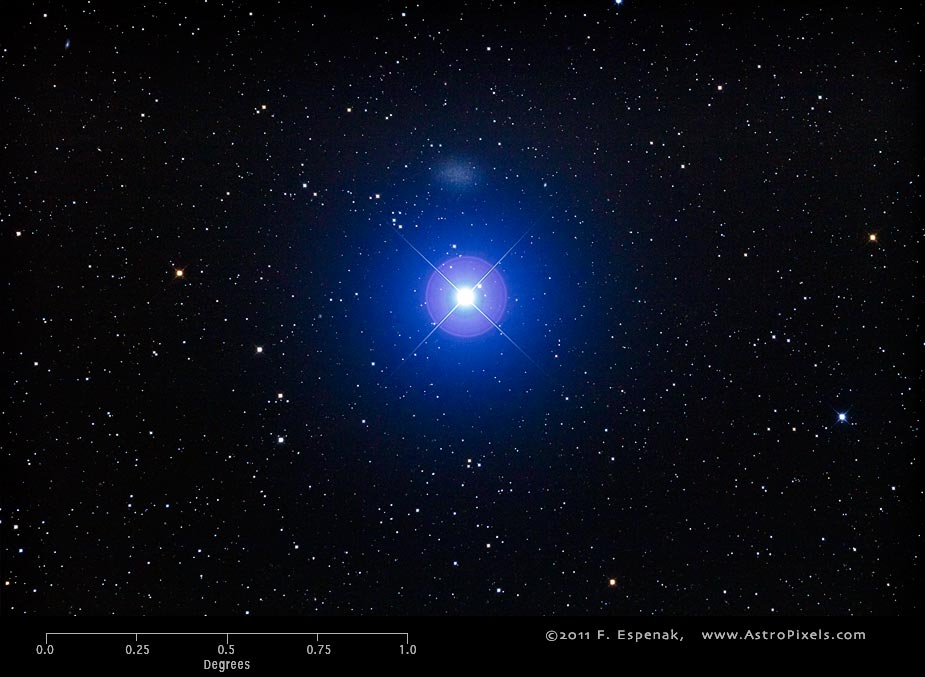
Regulus is a part of the Spring Triangle asterism along with Arcturus and Spica described earlier. It means, that this star can be found easily. If you follow the front of Big Deeper (the section between the Merak and Phecda stars), you can just multiply this section by around 10 times and move your sight south until you spot the bright star, which will be Regulus (Pic. 91).

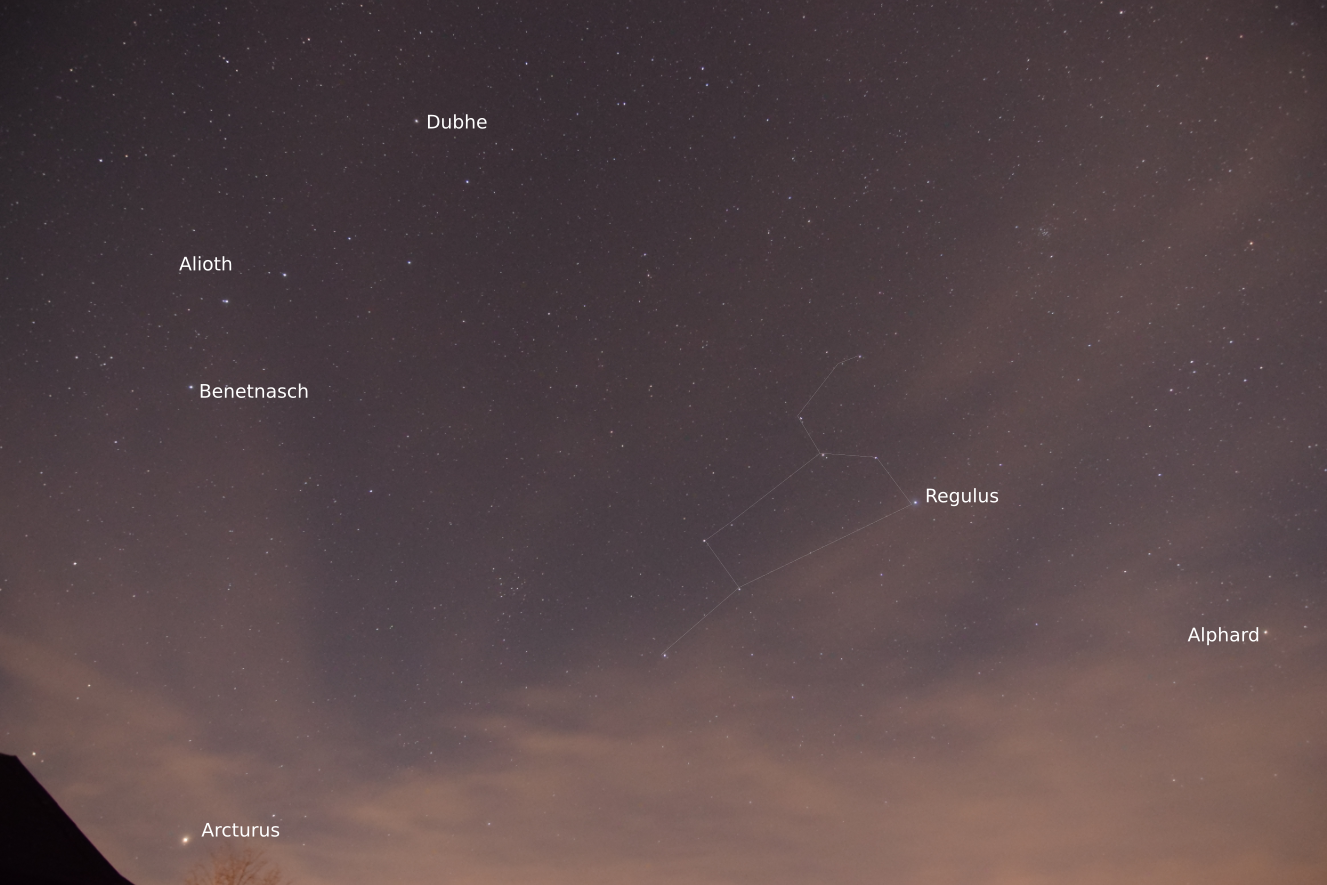

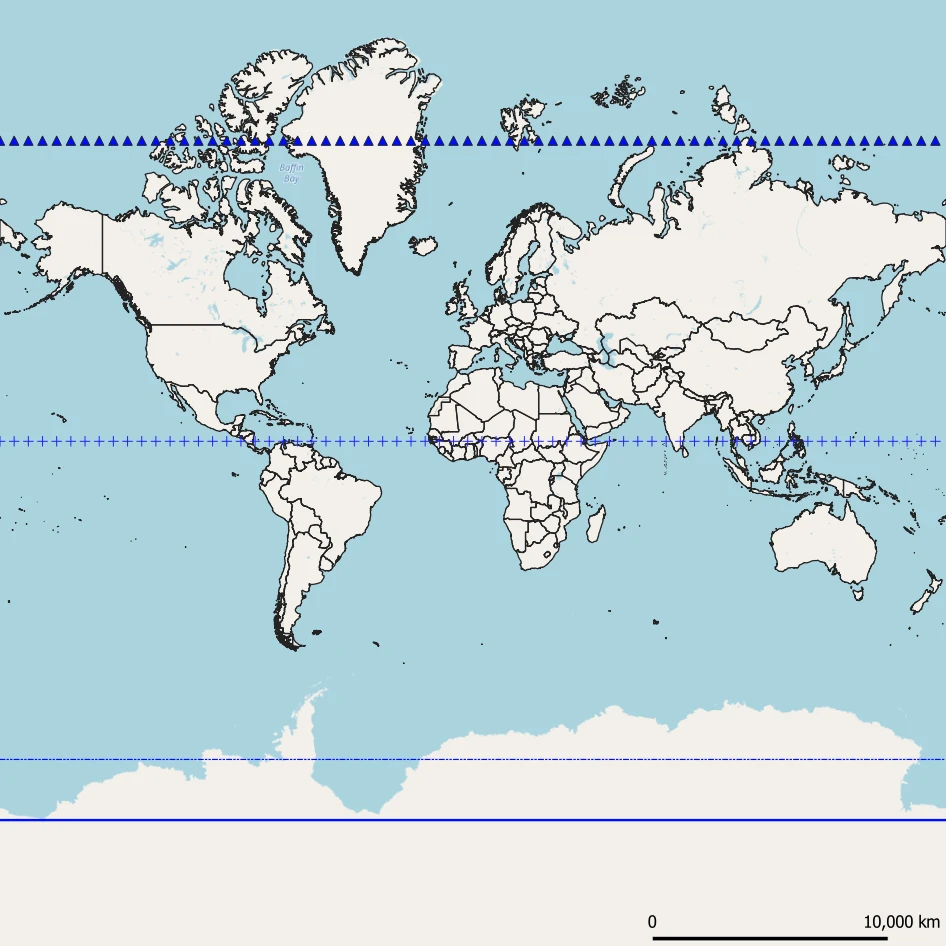
Visual magnitude: 1,5 Absolute magnitude: -4,10 Distance (Ly): 430 Spectral type: B2 II Luminosity (Sol): 20000 Mass (Sol): 10 Diameter (Sol): 13,9 Surface temperature: 22900K Right Ascencion: 6h59m Declination: -28°58' Solar opposition: 4 January
The name Adhara comes from Arabic and means “virgins”. This is actually a binary star system, where a brighter component outshines another one. Adhara is the brightest source of ultraviolet light as seen from Earth’s sky. Thereby it’s the strongest source of photons able to ionize hydrogen atoms in interstellar gas surrounding the Sun. Therefore this star is very important in the ionization state of the Local Interstellar Cloud. The rotation period of Adhara is less than 14 days. If the star were in the same place where Sirius is, it would appear about 15x brighter than Venus near its peak of brightness. Adhara already moved away from the Sun, but it’s worth knowing, that 4,7 mln years ago this star was just 34 light-years away shining at -3,99 magnitude. This is an even more interesting fact, that there wasn’t and there won’t be a star reaching this level of brightness within the next 5 million years (Tomkin, 1998).
Adhara creates the right foot of the Big Dog constellation. It can be found when looking down from the Sirus star or up from the majority of the southern hemisphere (Pic. 95).
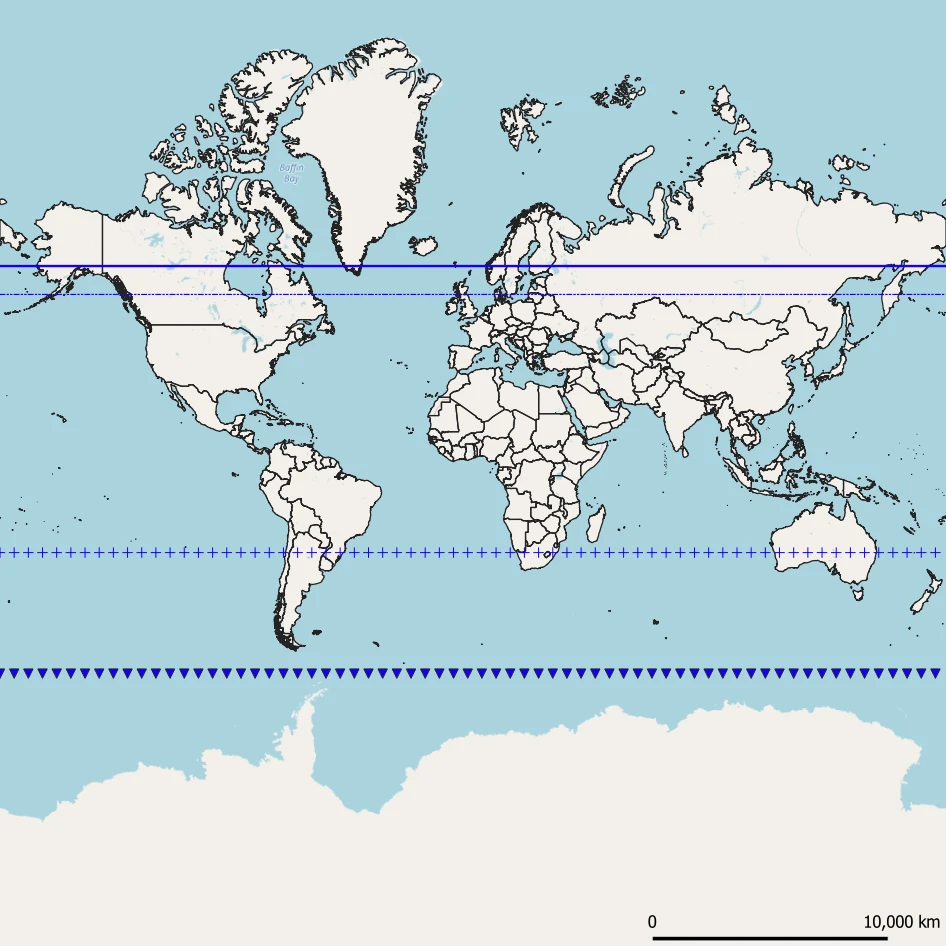
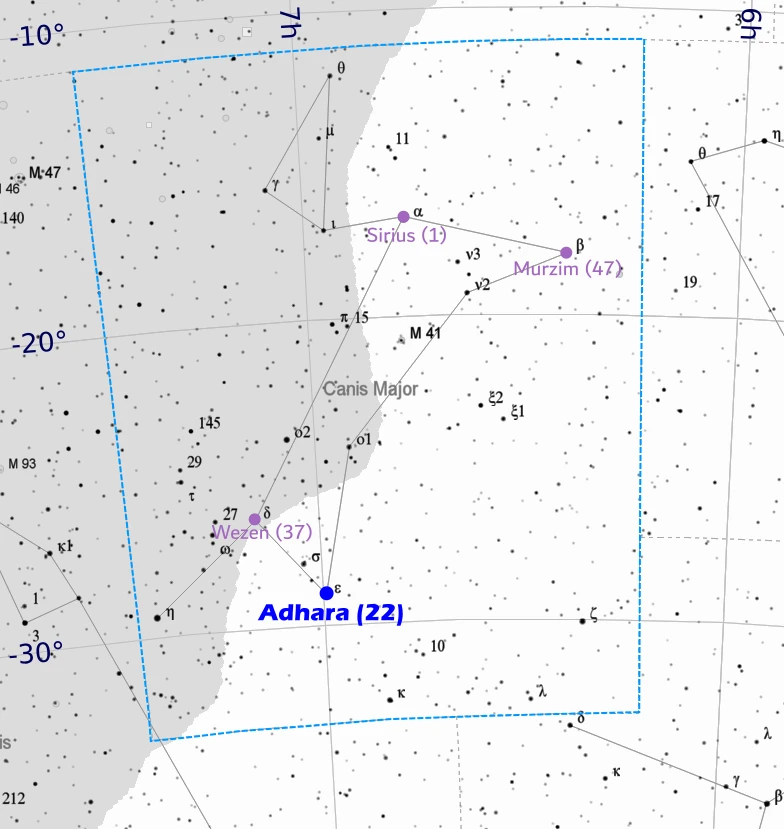
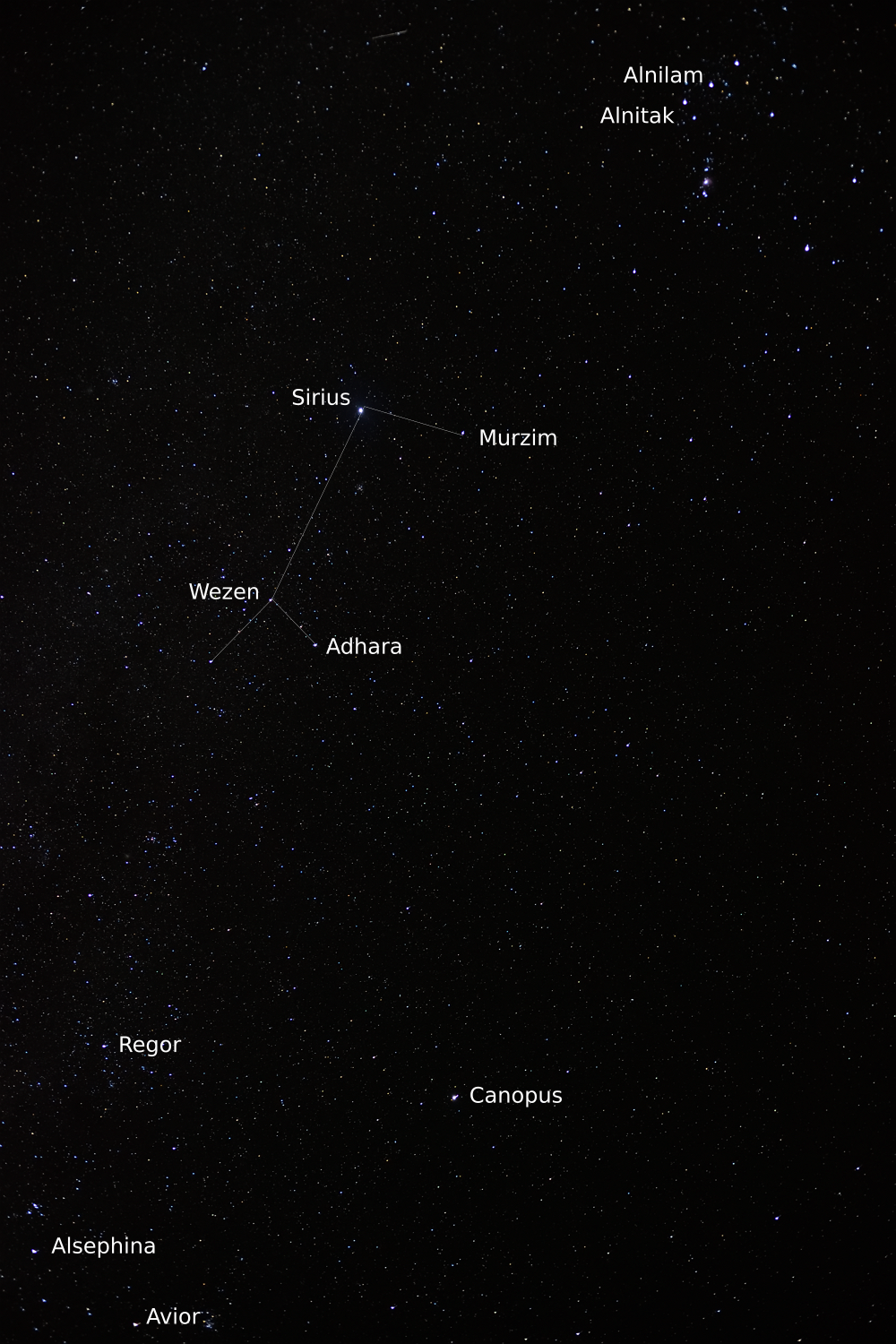
Visual magnitude: 1,58 Absolute magnitude: 0,59 Distance (Ly): 51,5 Spectral type: A1V + A2V Luminosity (Sol): 30 Mass (Sol): 2,2 Diameter (Sol): 2,3 Surface temperature: 8800K Right Ascencion: 7h35m Declination: 31°53' Solar opposition: 12 January

Castor is a multiple-star system made for 6 individual stars. It was discovered to be a visual binary in the 1670s with the components magnitude of 2.0 and 2.9, giving 1.58 Mag in total. Today we know, that their magnitude is accordingly 1.9 and 3.0.

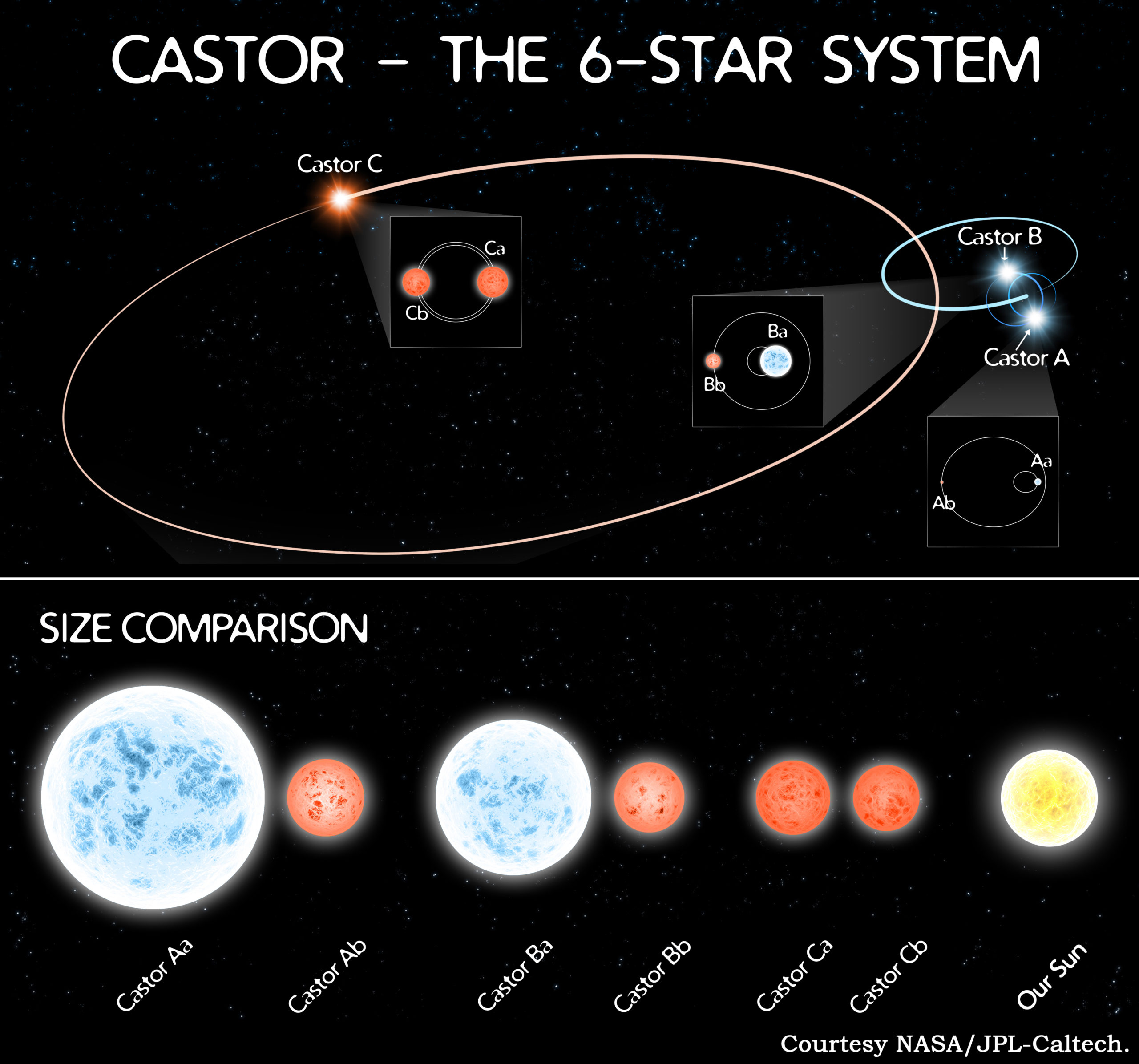
We can consider Castor as the sextuple star system, where 6 stars are gravitationally bound together. Pollux described earlier is a completely different star, located around 4,5° from Castor in the sky. The early stargazers used to identify the Pollux and Castor as “twins”. The two brightest components of the Castor stellar system are more massive and luminous than the Sun. Castor B is the Am star, known as the star with the abundance of various metals at least in its surface layer. Castor C is a variable star classified as the BY Draconic type, being typical for cool stars, whose variability is based i.e. on their starspots. As the star rotates, the starspots are visible or not at a certain time, which affects its brightness. Both Castor A and Castor C have red dwarfs, which wouldn’t be interesting if not for the fact, that they represent the flare star type. This type of star can vary extremely rapidly in brightness (even within a few minutes), and furthermore, their flares are analog to solar flares.
If you know where the Pollux is located, then you can very easily find the Castor star, which is literally next to it. The same as Pollux, Castor when placed in opposition to the Sun is affected by twilight in the southern hemisphere.
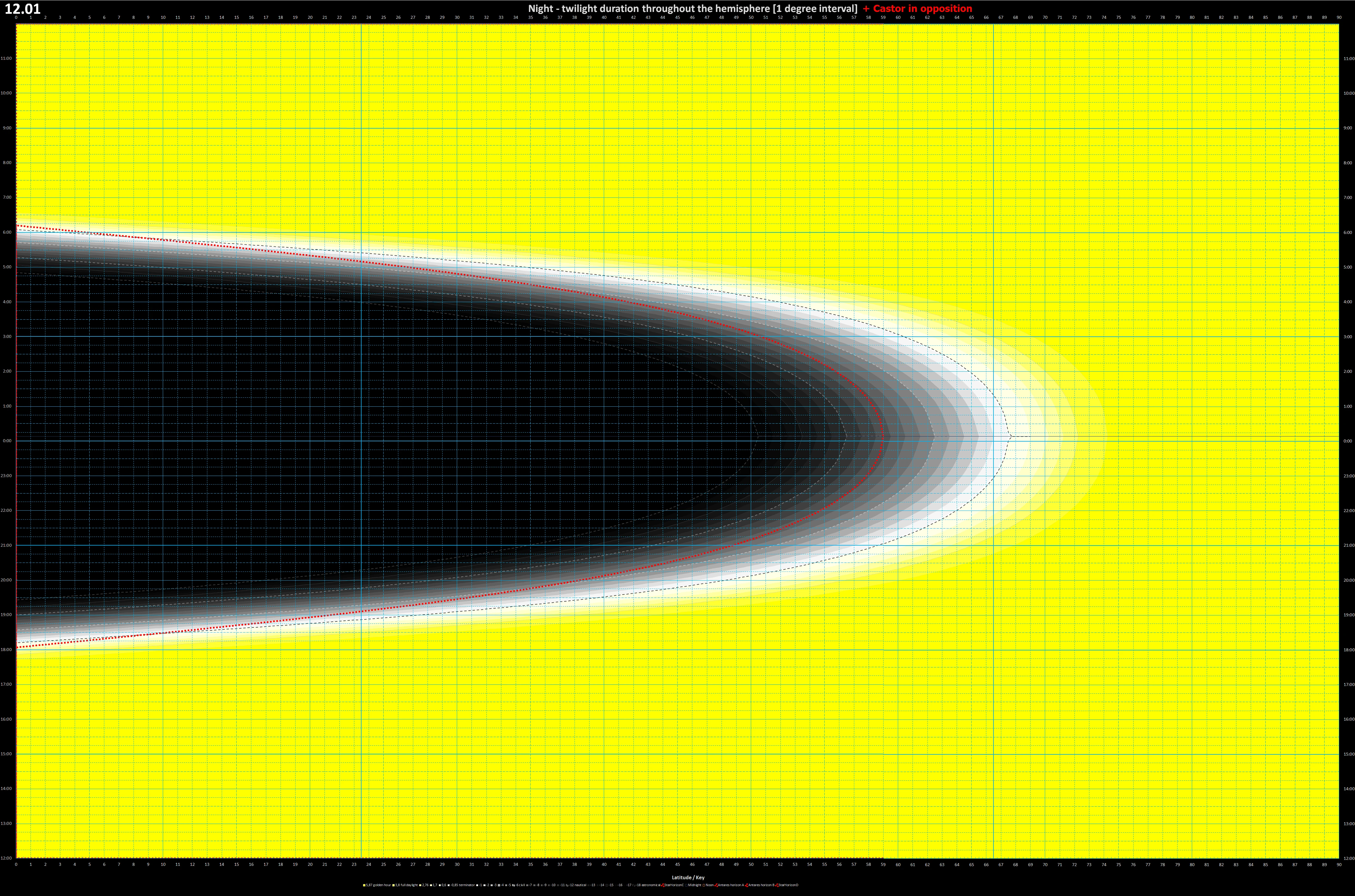
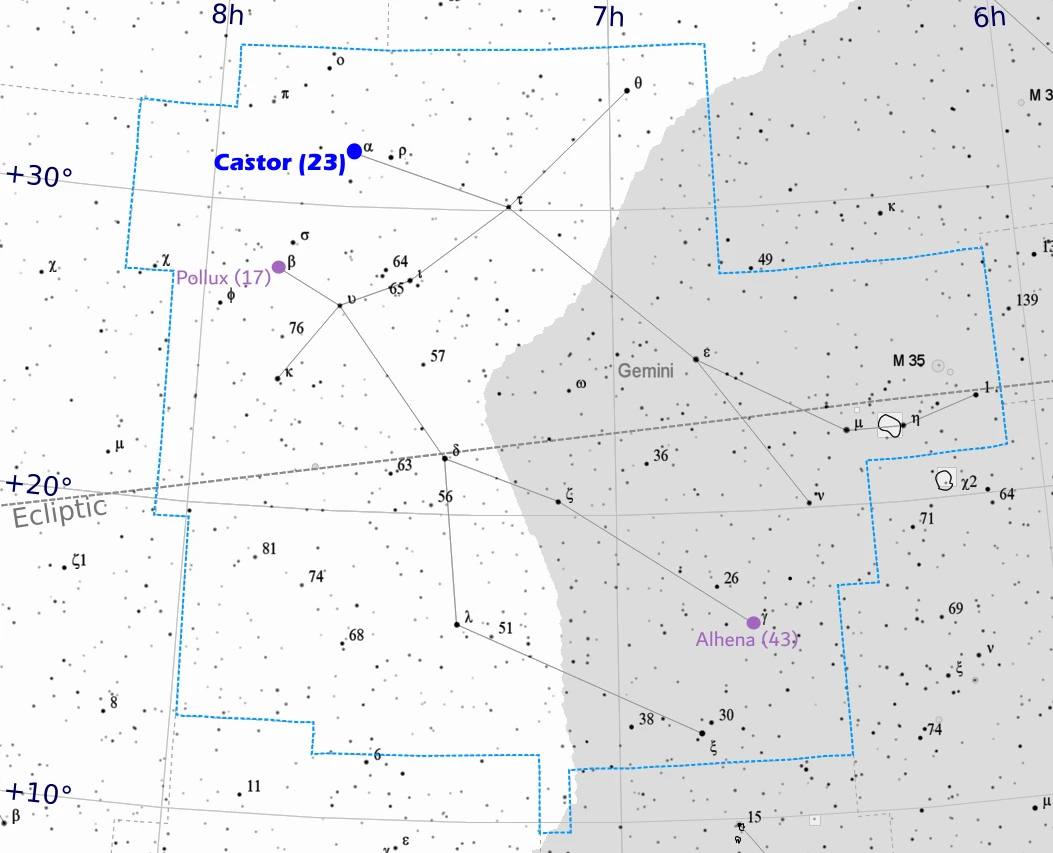
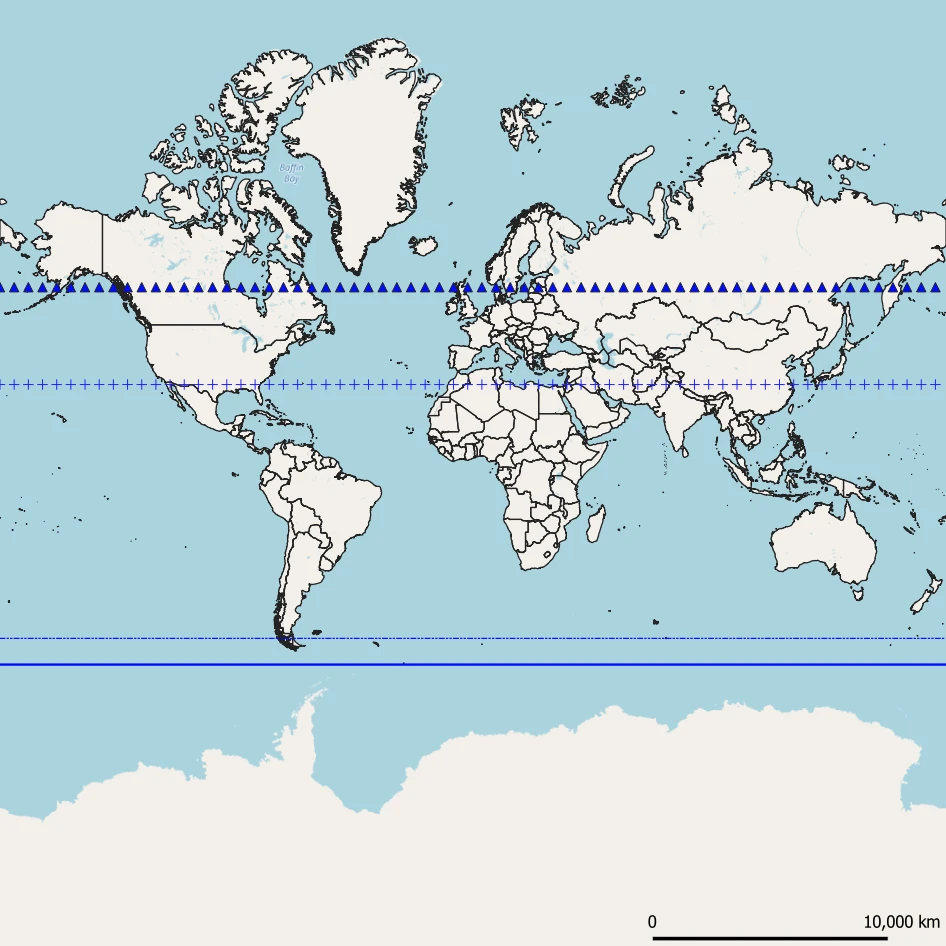
Visual magnitude: 1,59 Absolute magnitude: -0,56 Distance (Ly): 87,9 Spectral type: M3.5III Luminosity (Sol): 1500 Mass (Sol): 3 Diameter (Sol): 113 Surface temperature: 3700K Right Ascencion: 12h31m Declination: -57°07' Solar opposition: 29 March
In Chinese, Gacrux means “the first star of the Cross”. The star has evolved from the main-sequence star and became the red giant. It was only 30% more massive than the Sun but has expanded to 120 solar radii. As a consequence, the star differs from others by color. On the contrary to the other brightest stars in the Cross constellation, Gacrux shines in a reddish-orange tinge. Gacrux is considered the closest red giant to Earth with a distance of just 88 light-years.
Gacrux is at the top of the iconic constellation – the Cross when looking at it north of latitude 57 south. In extreme southern latitudes, this star shines at the bottom of this constellation. This is the only star in the Cross constellation, which can be visible from southernmost European lands obviously when refraction is considered.
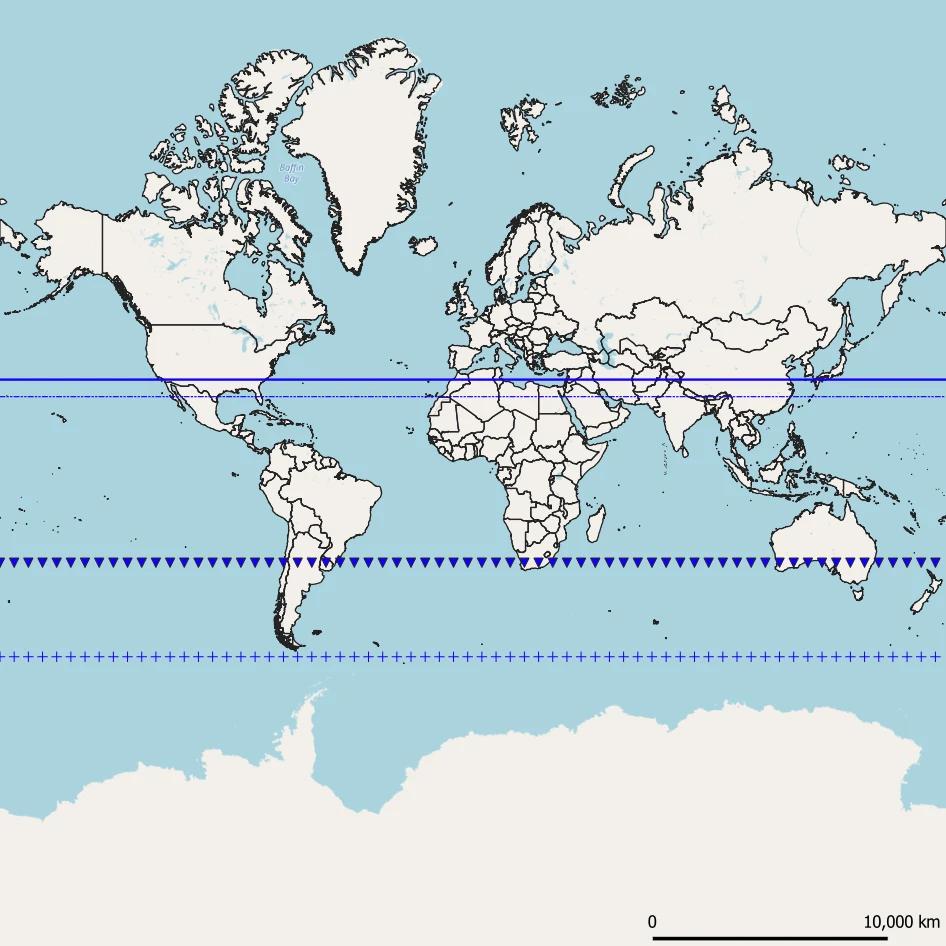

Visual magnitude: 1,62 Absolute magnitude: -5,05 Distance (Ly): 700 Spectral type: B2 IV Luminosity (Sol): 36300 Mass (Sol): 10,4 Diameter (Sol): 6,2 Surface temperature: 25000K Right Ascencion: 17h34m Declination: -37°06' Solar opposition: 15 June
Shaula in Arabic means the “raised tail”, which accurately corresponds to the position of this star at the tail end of the Scorpion constellation. Another meaning is “the stinger”, which corresponds to the end of the hook-shaped stinger in this zodiac constellation. Actually, Shaula is a triple star system including two B-type stars and the main one, which is β Cephei variable star, changing its brightness fractionally with two periods of about 4 and 2 hours. These pulsations are caused by an abundance of iron deep beneath the surface. All three stars orbit in one plane, which might lead to the suggestion, that they were formed at the same time. Shaula B orbits Shaula A in the period of 1053 days with an average separation of 5,7 AU. Shaula C orbits Shaula A in the period of just 6 days and a distance between 0,11 and 0,19 AU. The major Shaula star is a hot blue subgiant, which will run out of fuel soon. Due to its high mass, it will end as a Supernova.
Shaula next to Antares is a good point of navigation. This second-brightest star in the Scorpion constellation plays a special role in the field of celestial navigation. Shaula is located in the sky in the vicinity of Lesath, but in reality, both stars are tens of light-years apart. It’s hard to see Shaula from northern latitudes, as it never rises above the horizon north of Latitude 53. Thereby star never rises so high in the northern hemisphere. Shaula can be found southeast of Antares inside of the Milky Way plane near its center.
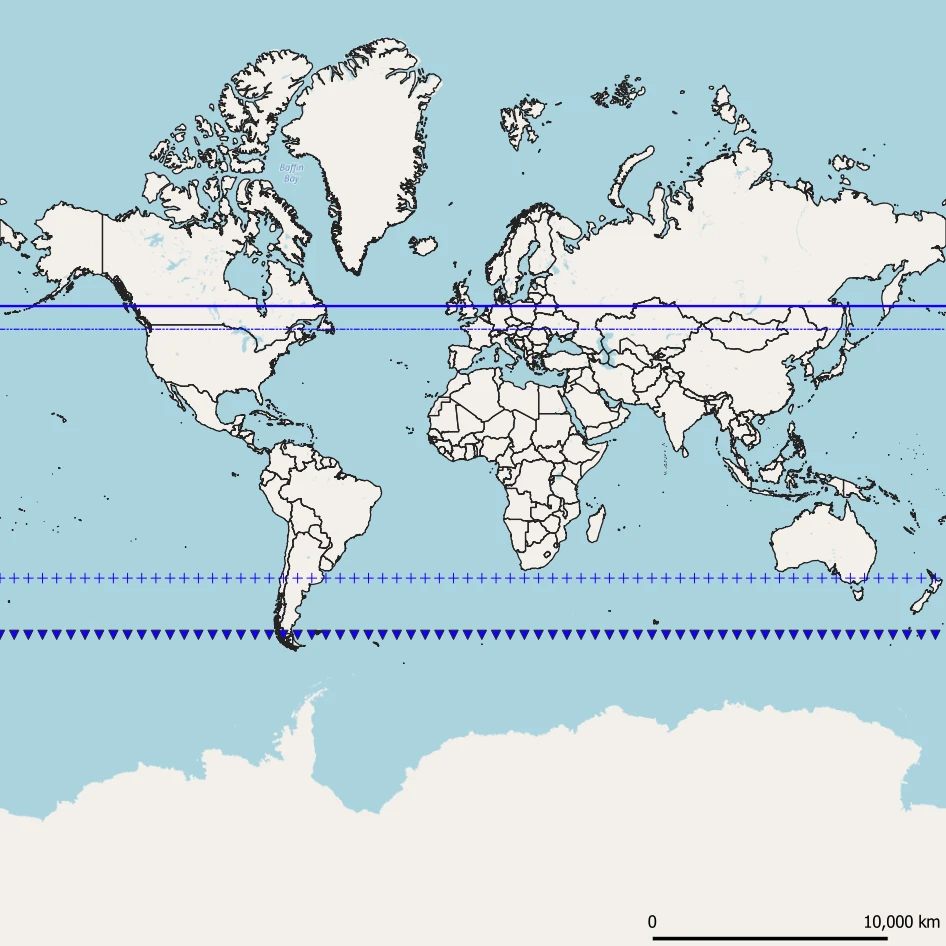
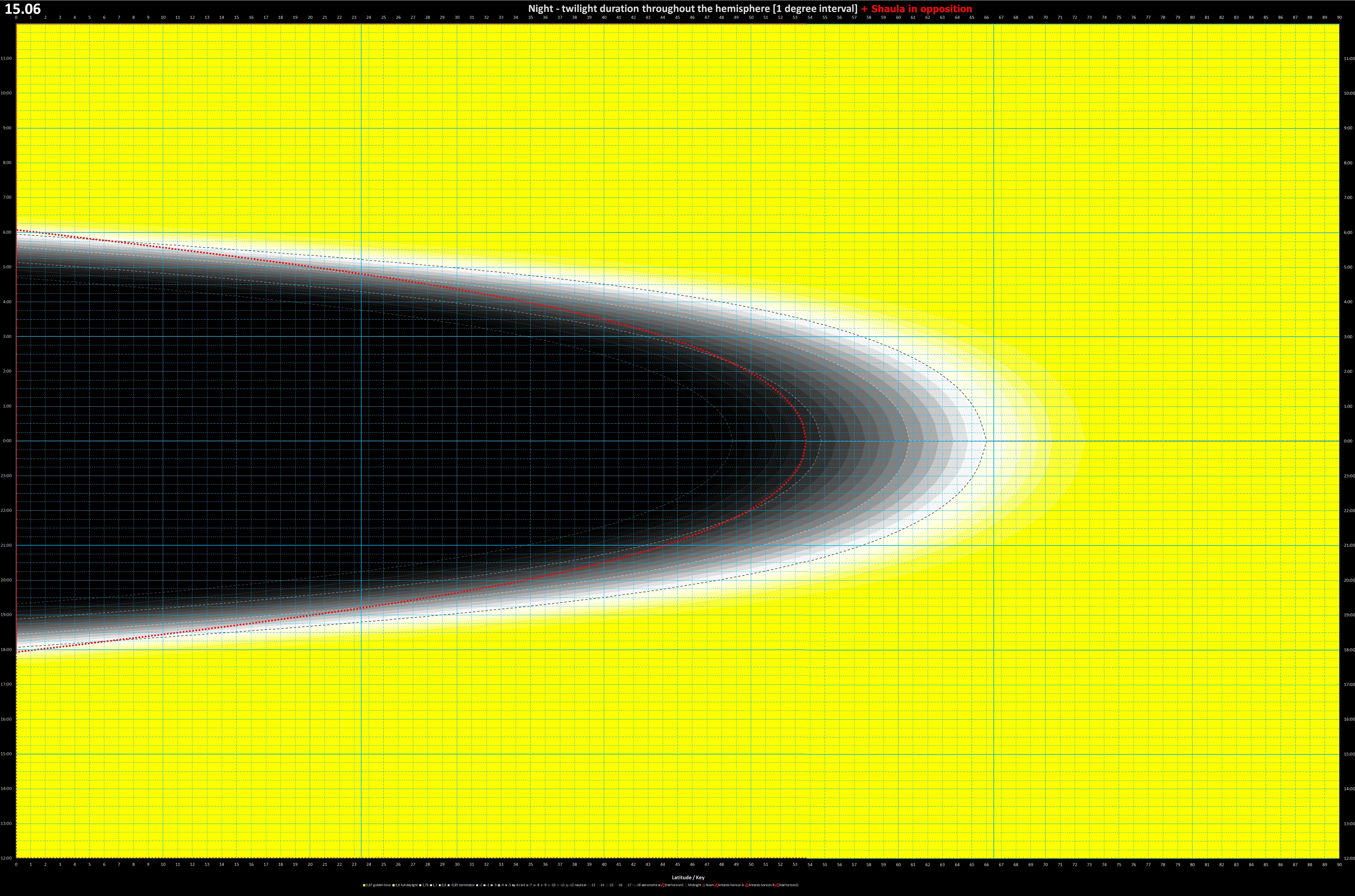
Shaula is in opposition to the Sun near the summer solstice in the northern hemisphere, which is translated to its visibility conditions. However, this bright star is not affected by twilight that much as it’s visible within the astronomical white night.

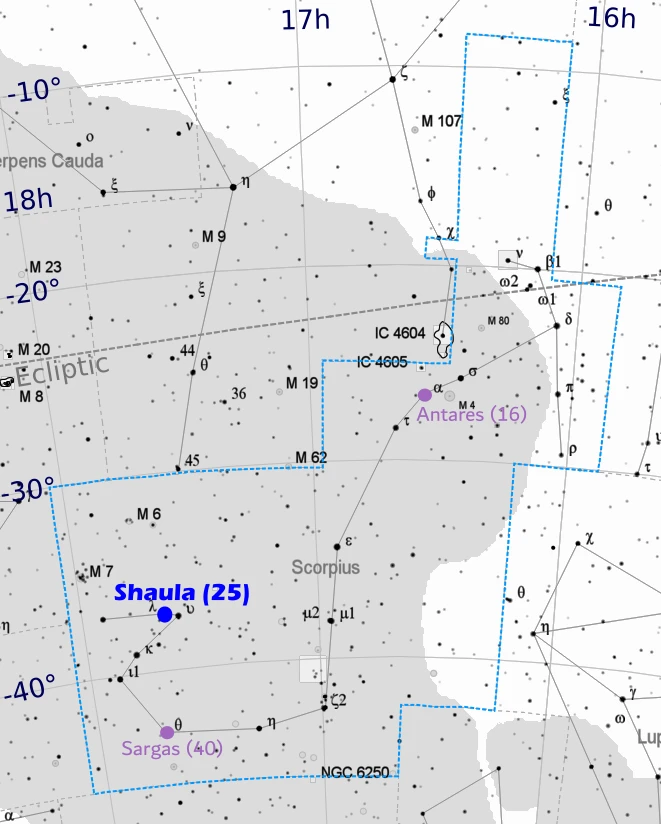
Visual magnitude: 1,64 Absolute magnitude: -2,72 Distance (Ly): 240 Spectral type: B2 III Luminosity (Sol): 21500 Mass (Sol): 8 Diameter (Sol): 5,7 Surface temperature: 21500K Right Ascencion: 5h25m Declination: 6°21' Solar opposition: 14 February
The name Bellatrix from Latin means “female warrior”. This is a massive blue-white star with an estimated age of approximately 25 million years. It means, that the star is expected to become an orange giant within a few million years. It looks like Bellatrix has already developed a gaseous shell that signals the start of its transformation. Bellatrix is considered to become a supernova one day.
Recent studies suggest, that Bellatrix is rather a binary system of two stars with similar properties.
Bellatrix marks the left shoulder of Orion (appearing as the right from our perspective). The star is located at the top of this constellation just about 5° west of the red supergiant Betelgeuse.
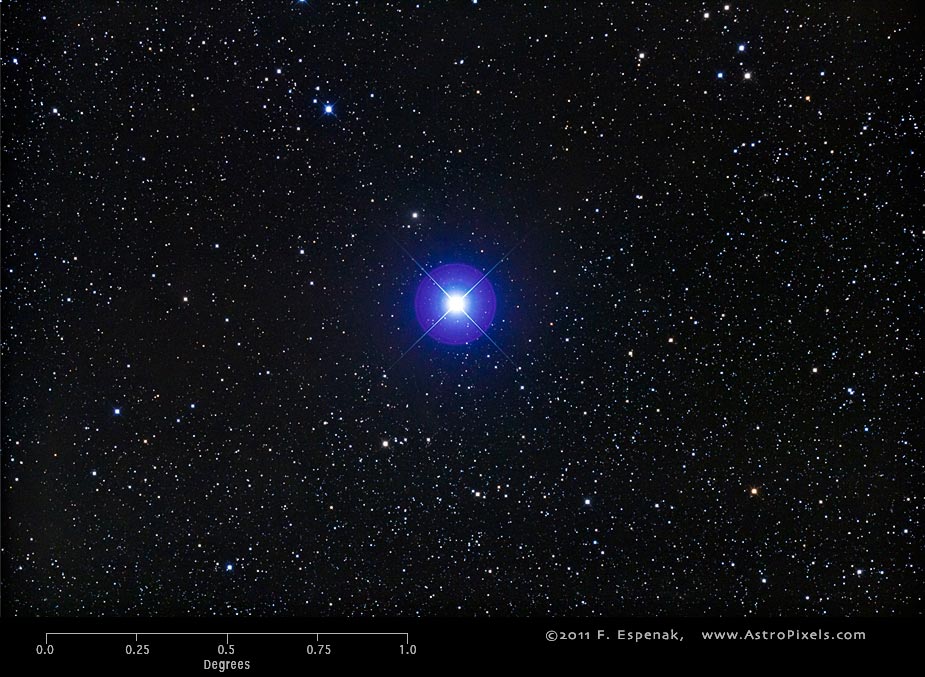

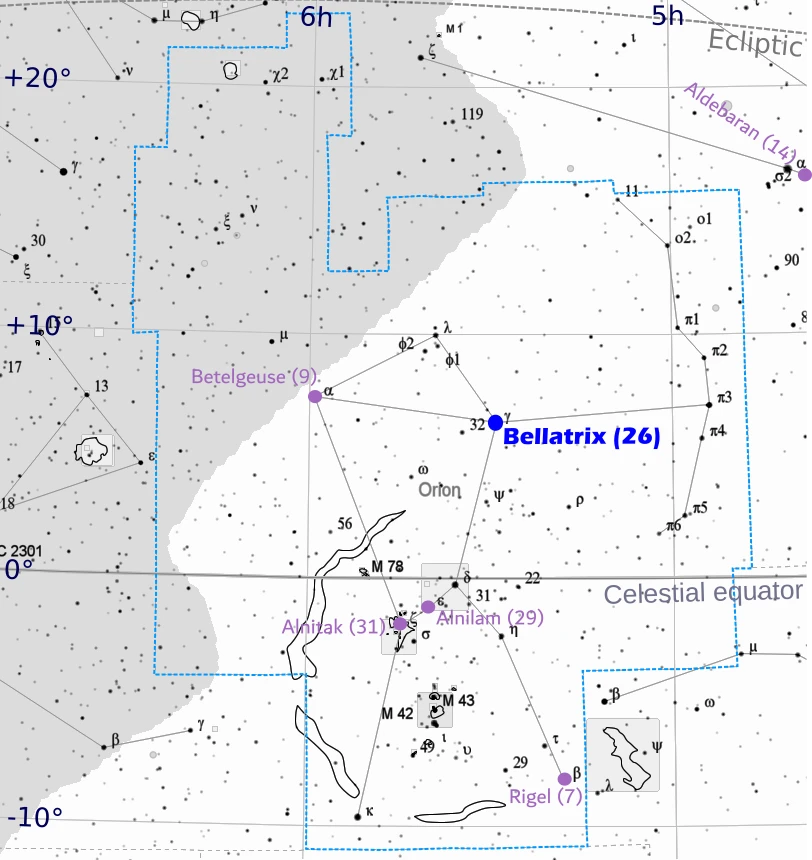
Bellatrix is visible from everywhere except the South Pole.
Visual magnitude: 1,65 Absolute magnitude: -1,37 Distance (Ly): 131 Spectral type: B7 III Luminosity (Sol): 700 Mass (Sol): 4,5 Diameter (Sol): 5,5 Surface temperature: 13700K Right Ascencion: 5h26m Declination: 28°36' Solar opposition: 14 December
The name of Elnath means in Arabic “the bull’s horns”, which accurately corresponds to the position of this star in the Bull constellation. β Tauri is much younger than our Sun and formed about 100 million years ago after gravity pulled swirling gas and dust together. Today this is the B-class giant star, which is probably a binary or even multiple star system. Elnath is notable for its high abundance of manganese and mercury. The Elnath position in the sky is quite unique because the star is positioned along the plane of the Milky Way, near the galactic anti-center. Its position about 5,39° north of the ecliptic means, that this star can be still occulted by the Moon, but the occultation can be observed just south of California. Finding Elnath is very easy since you know where the Betelgeuse and Capella are located. Elnath is more or less in the middle between these two stars. The situation with Elnath is quite similar to Antares in the northern hemisphere. Because the star’s opposition to the Sun falls near the summer solstice in the southern hemisphere, the conditions under which Elnath could be visible are tough (Pic. 111). Elnath is not visible even when rises above the horizon. Despite slightly different declination, the opposition of this star to the Sun occurs closer to the summer solstice than Antares. Another reason for this is the smaller apparent brightness of Elnath than Antares, which is almost 1.8x brighter. The best conditions for gazing at Elnath above the horizon on high southern latitudes occur in spring between October and November (Pic. 112).
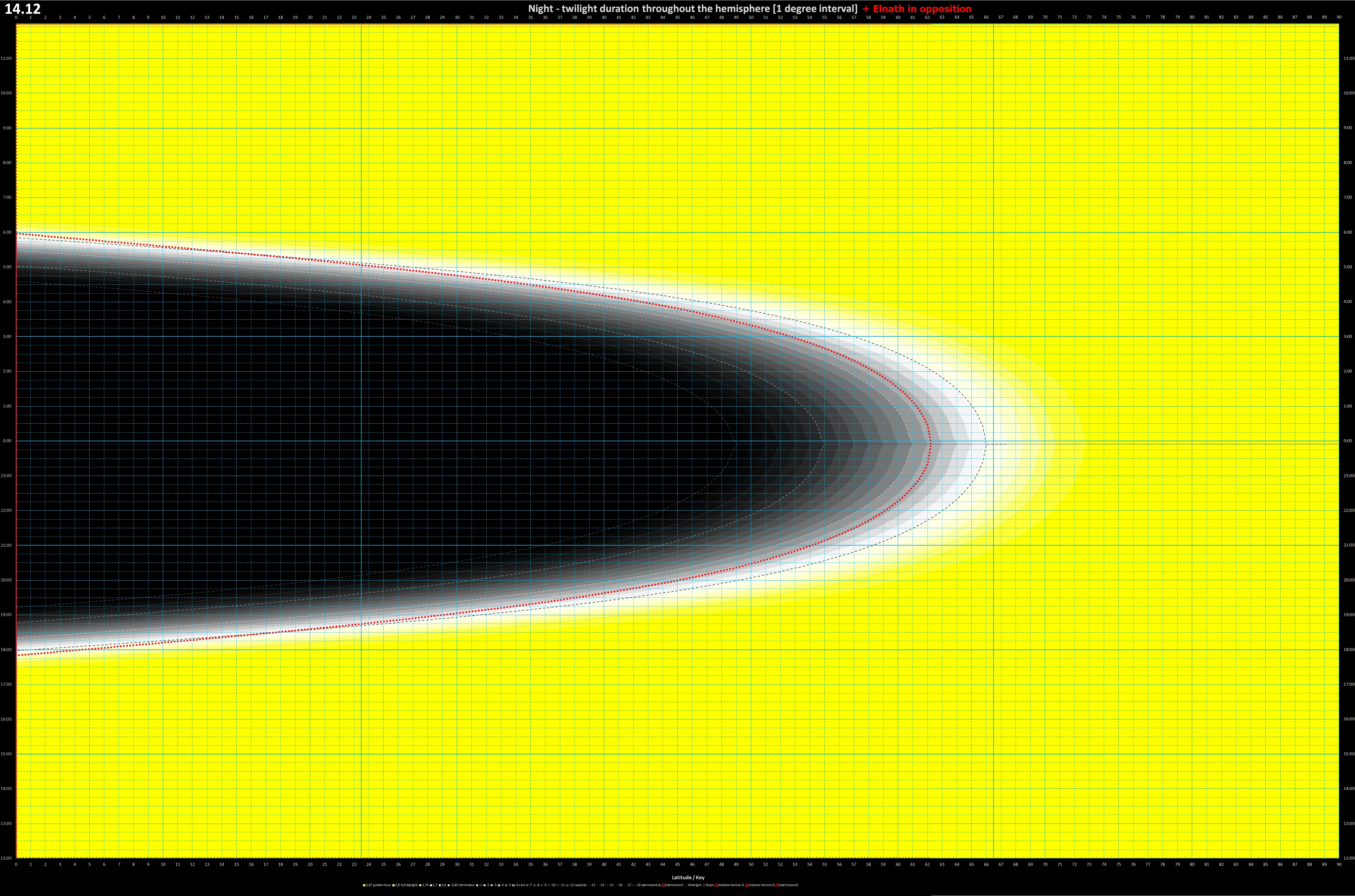
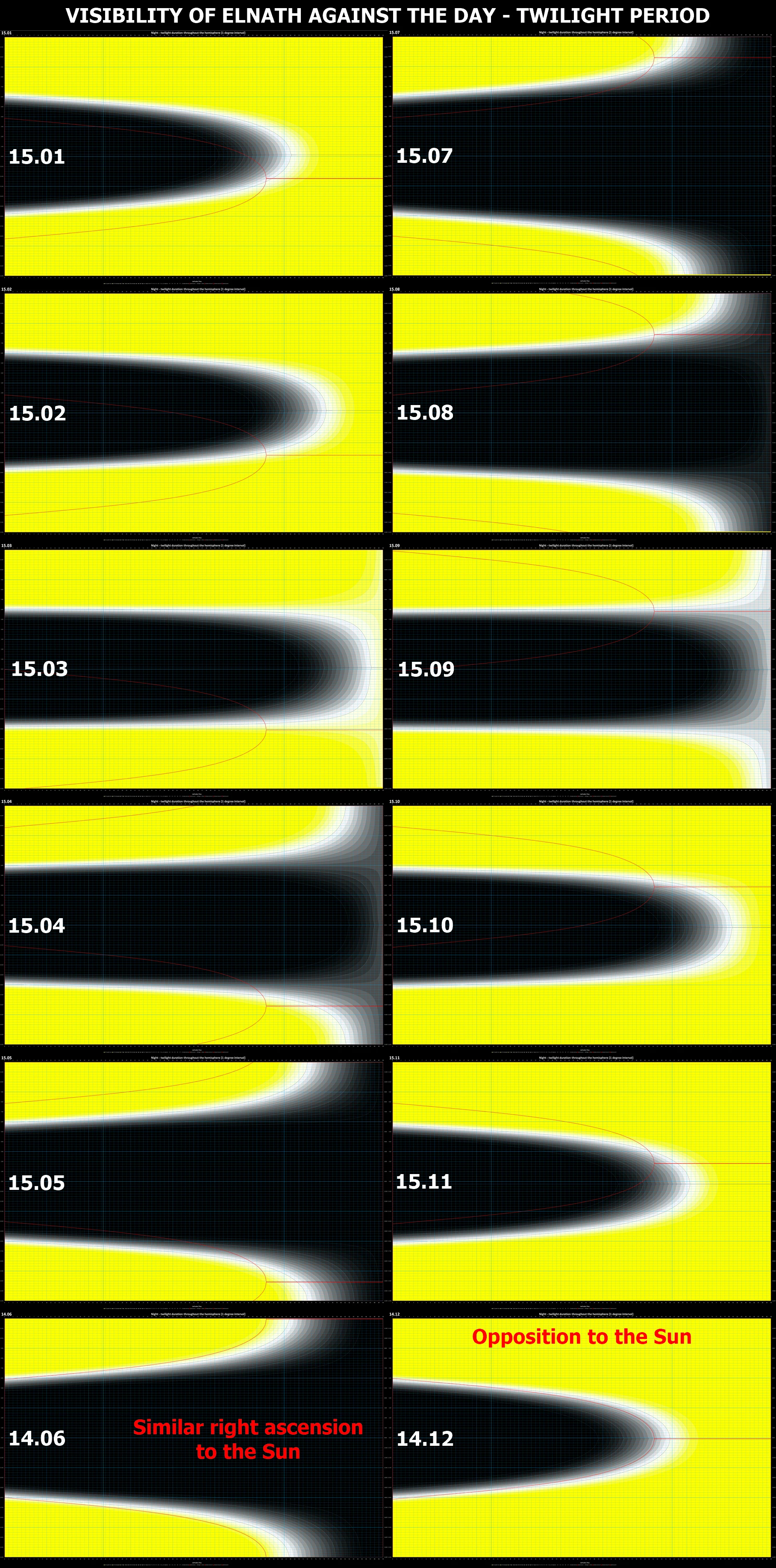
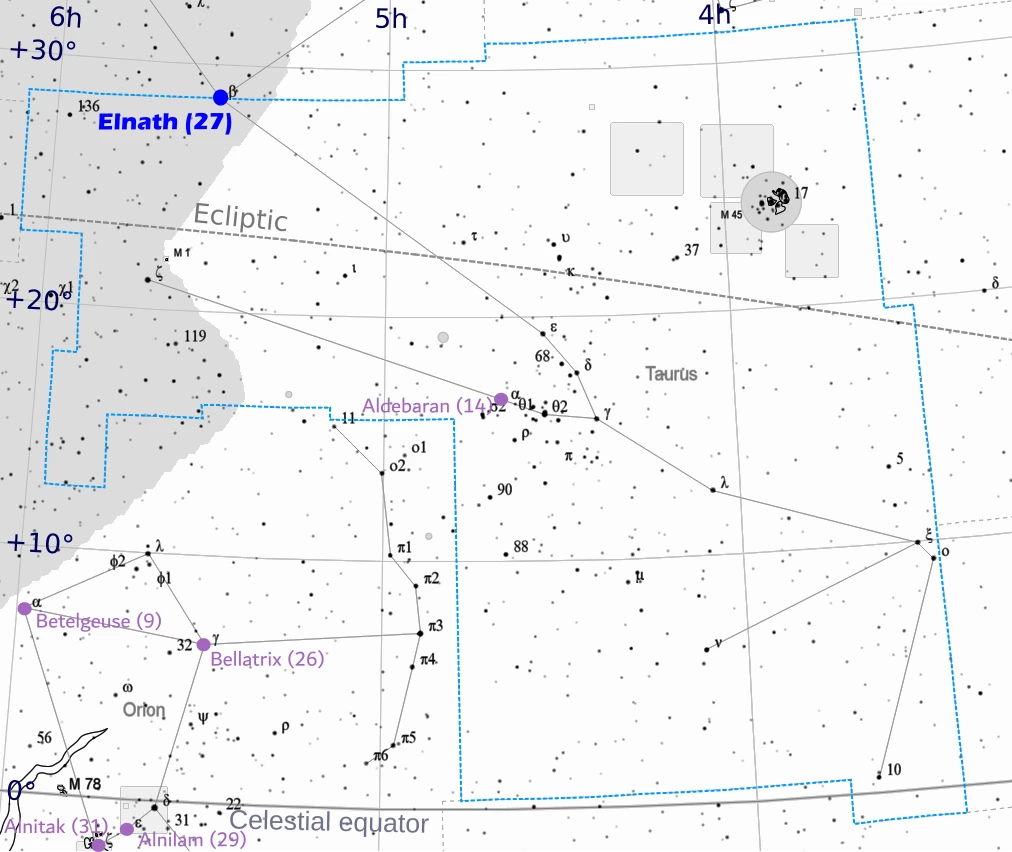
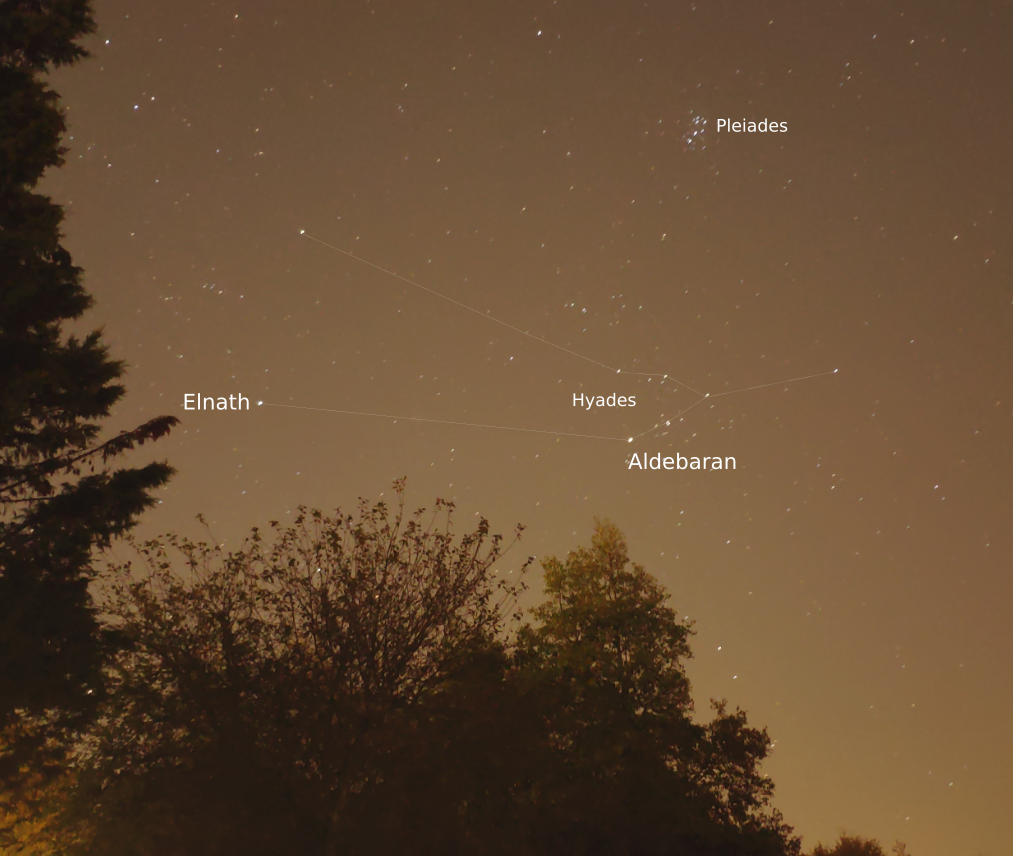
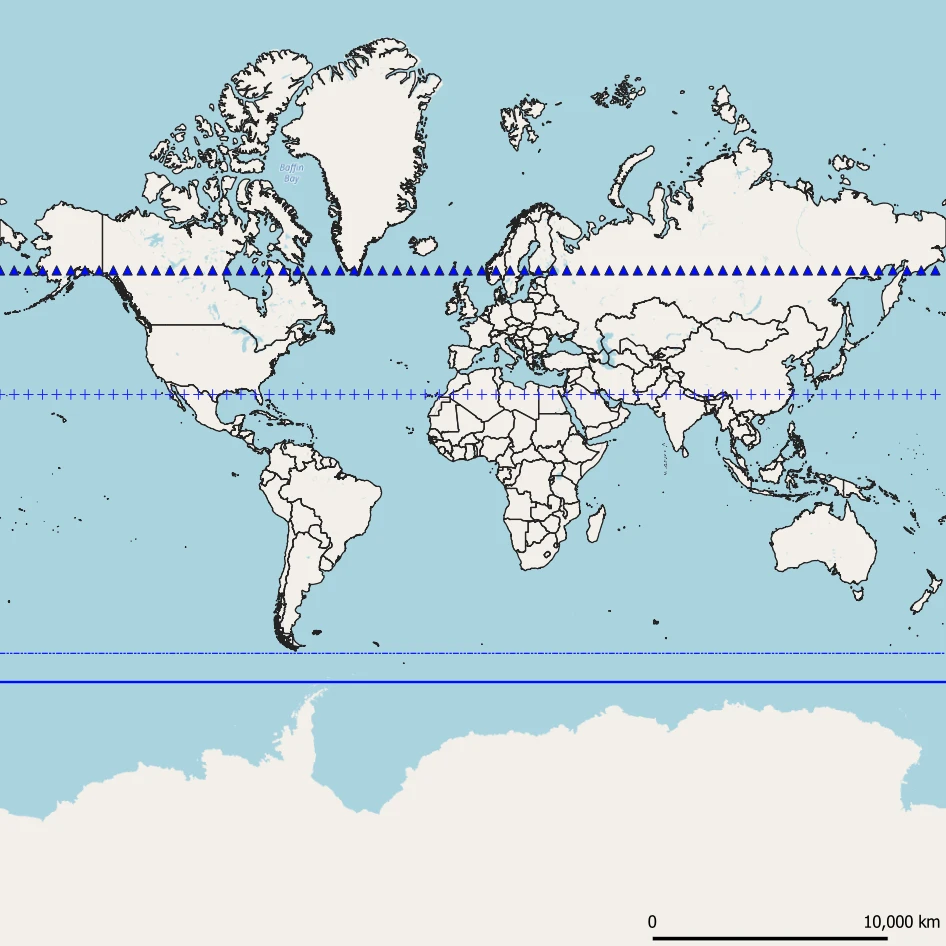
Visual magnitude: 1,67 Absolute magnitude: -0,99 Distance (Ly): 111 Spectral type: A1 III Luminosity (Sol): 210 Mass (Sol): 3,5 Diameter (Sol): 6,7 Surface temperature: 8900K Right Ascencion: 9h13m Declination: -69°43' Solar opposition: 4 February
The name Miaplacidus comes from Arabic and means “waters” in relation to the dead water produced by the keel in ships. β Carinae is a subgiant star with a blue-white color, which has evolved away from the main sequence expanding to about 6,7 solar radii. The estimated age of this star is about 260 million years. The star might be surrounded by a debris disk because there is no excess emission of infrared radiation observed. The star rotates quite fast – 145,7 km/s. The star is not massive enough to end as a supernova. When it reaches the end of its life it will fade away as a white dwarf.
Miaplacidus shines somewhere halfway between Acrux and Canopus. This second brightest star in the Carina constellation forms the Diamond Cross asterism, which in fact resembles the Cross constellation but lies horizontally.


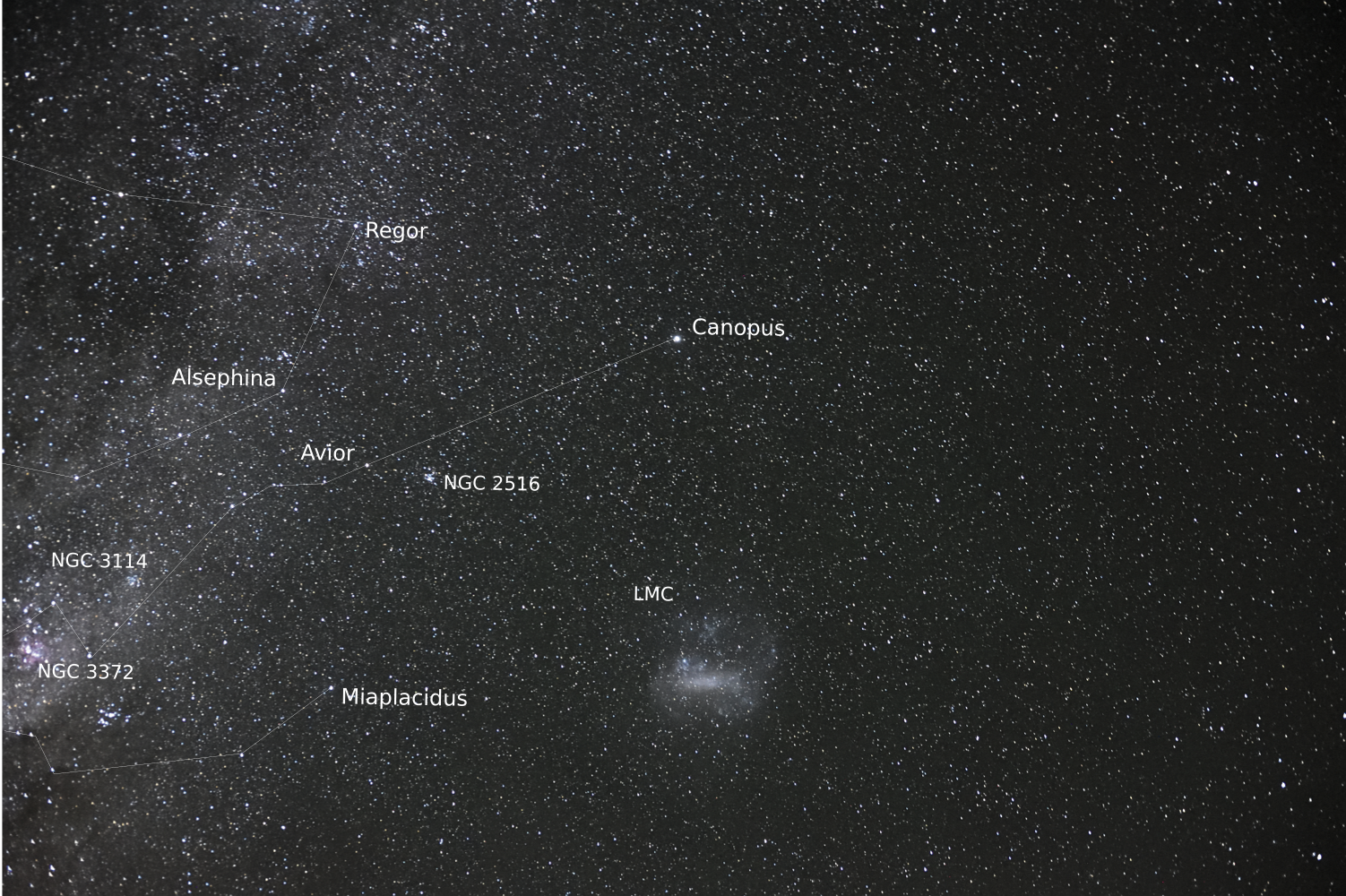
Visual magnitude: 1,69 Absolute magnitude: -6,38 Distance (Ly): 2000 Spectral type: B0 Ia Luminosity (Sol): 832000 Mass (Sol): 40 Diameter (Sol): 26 Surface temperature: 27500K Right Ascencion: 5h36m Declination: -1°12' Solar opposition: 16 December
Alnilam in Arabic means “pearls” and it hits accurately this star position, which marks the so-called Orion’s Belt. Alnilam is the middle star here. It’s a slightly variable blue supergiant between 1.64 and 1.72 Mag, classified as Alpha-Cygni type. This star has an extraordinary luminosity, which makes it the most powerful star in the night sky. However, in the case of the mass, this star is rather not vast compared to the Sun. This is driven by Alnilam’s stellar winds, which reach up to 1400 km/s causing a mass loss around 20 million times greater than the Sun. Even though the star is just almost 6 million years old, because of fusing heavy elements from its core Anilam can evolve to the supernova stage. If that could happen, the red supergiant would be more luminous than Betelgeuse in the next million years.
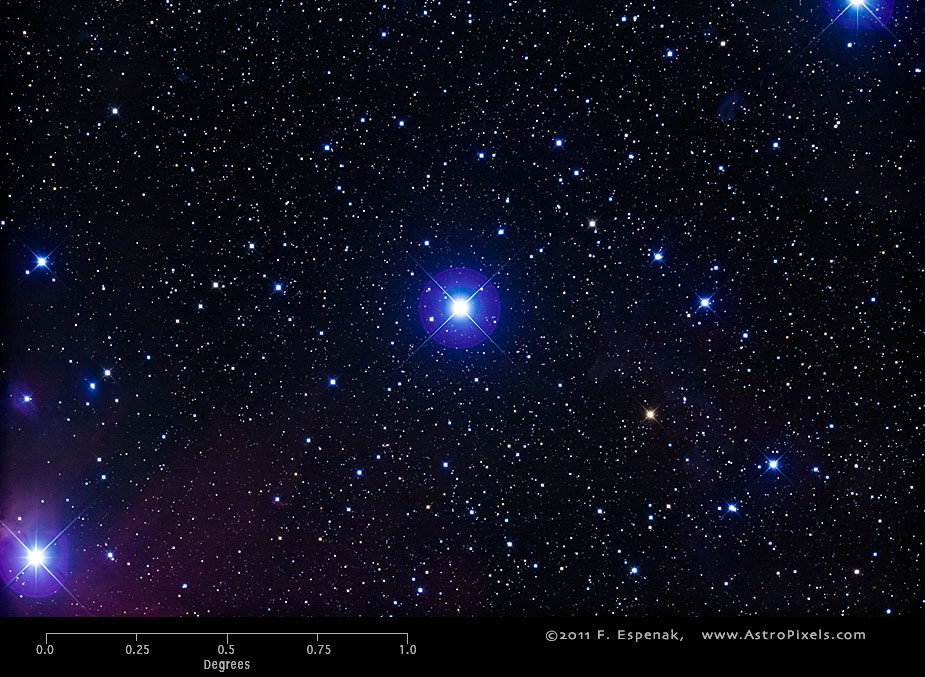
The star can be found very easily. Since you recognize the Orion constellation, look at its center, where Orion’s belt is located. This star is in the middle and everyone can see it worldwide.

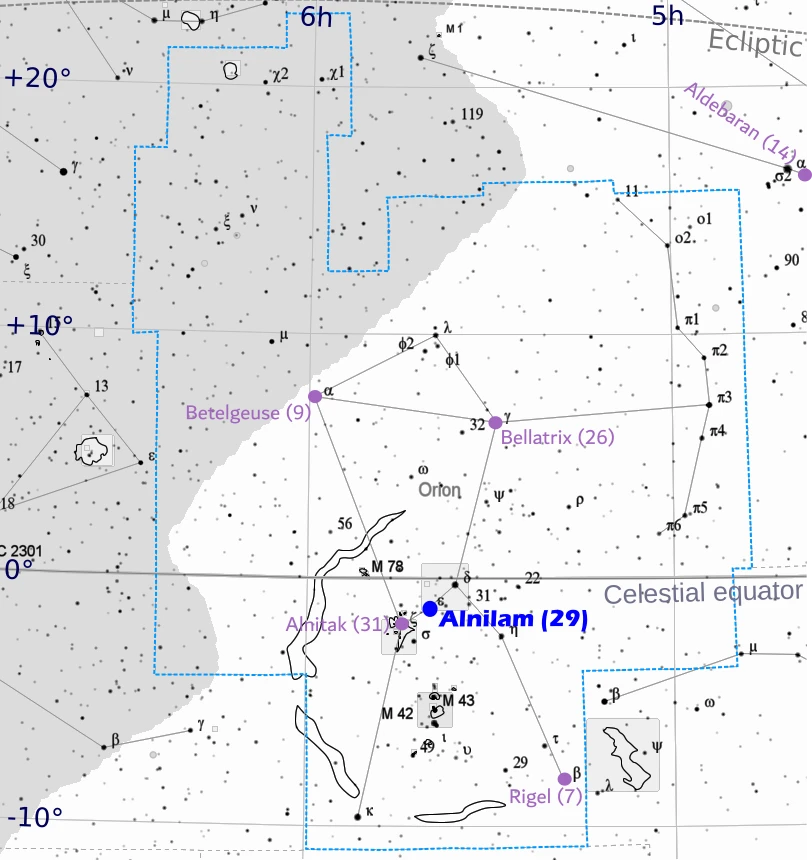
Visual magnitude: 1,73 Absolute magnitude: -0,73 Distance (Ly): 101 Spectral type: B6 V Luminosity (Sol): 380 Mass (Sol): 4 Diameter (Sol): 3,6 Surface temperature: 13900K Right Ascencion: 22h08m Declination: -46°58' Solar opposition: 23 August
The name Alnair comes from Arabic and means “the bright one from the (southern) fish tail”. α Gruis is a blue-white main-sequence star that tends to become subgiant soon, as the supply of hydrogen at its core is becoming exhausted. The star is a very fast spinner because at the equator the expected rotational velocity is estimated to be 215 km/s. Thereby the star completes its rotation within less than a day. Altair may be associated with the AB Doradus Moving Group, which counts about 30 stars sharing a common origin and motion through the universe. This is undeniably the closest group of stars like this to our Solar System, whose total distance reaches up to 20 parsecs. The age of all of these stars is between 50 and 150 million years (while Altair’s estimated age is about 100 million). The AB Doradus Moving Group, to which Alnair belongs is suspected to have formed in the same star-forming region as the Pleiades cluster.
Alnair forms a triangle with Achernar and Fomalhaut. This is one of 58 stars selected for navigation, which can be found quite easily when moving your sight southwest of Fomalhaut.
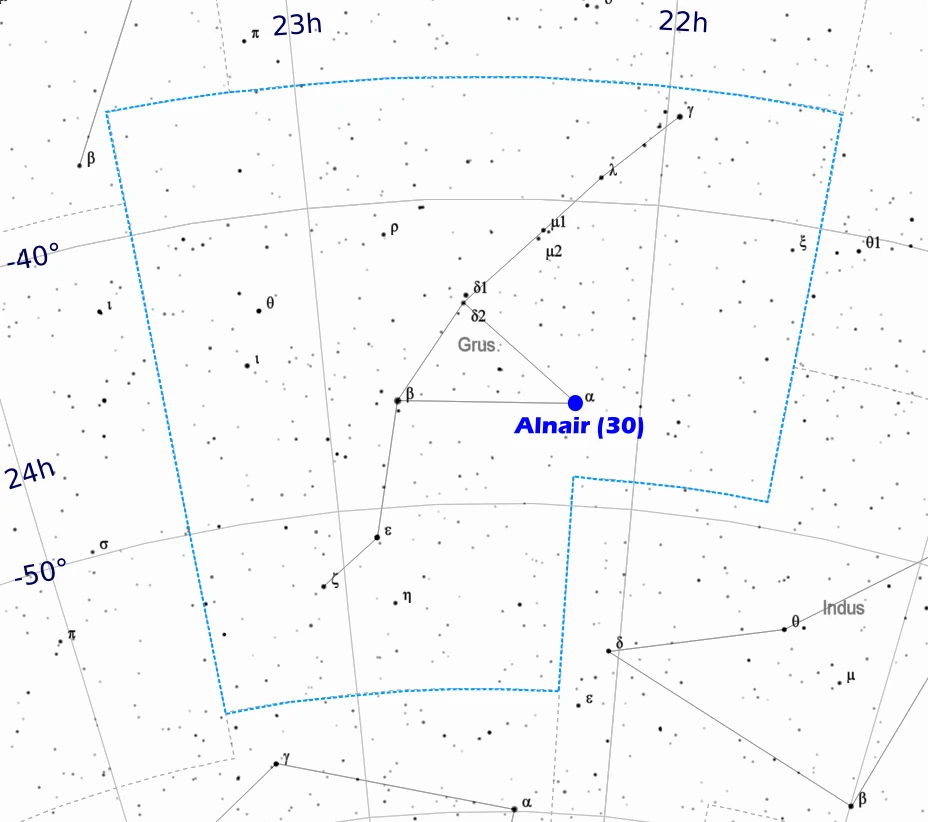
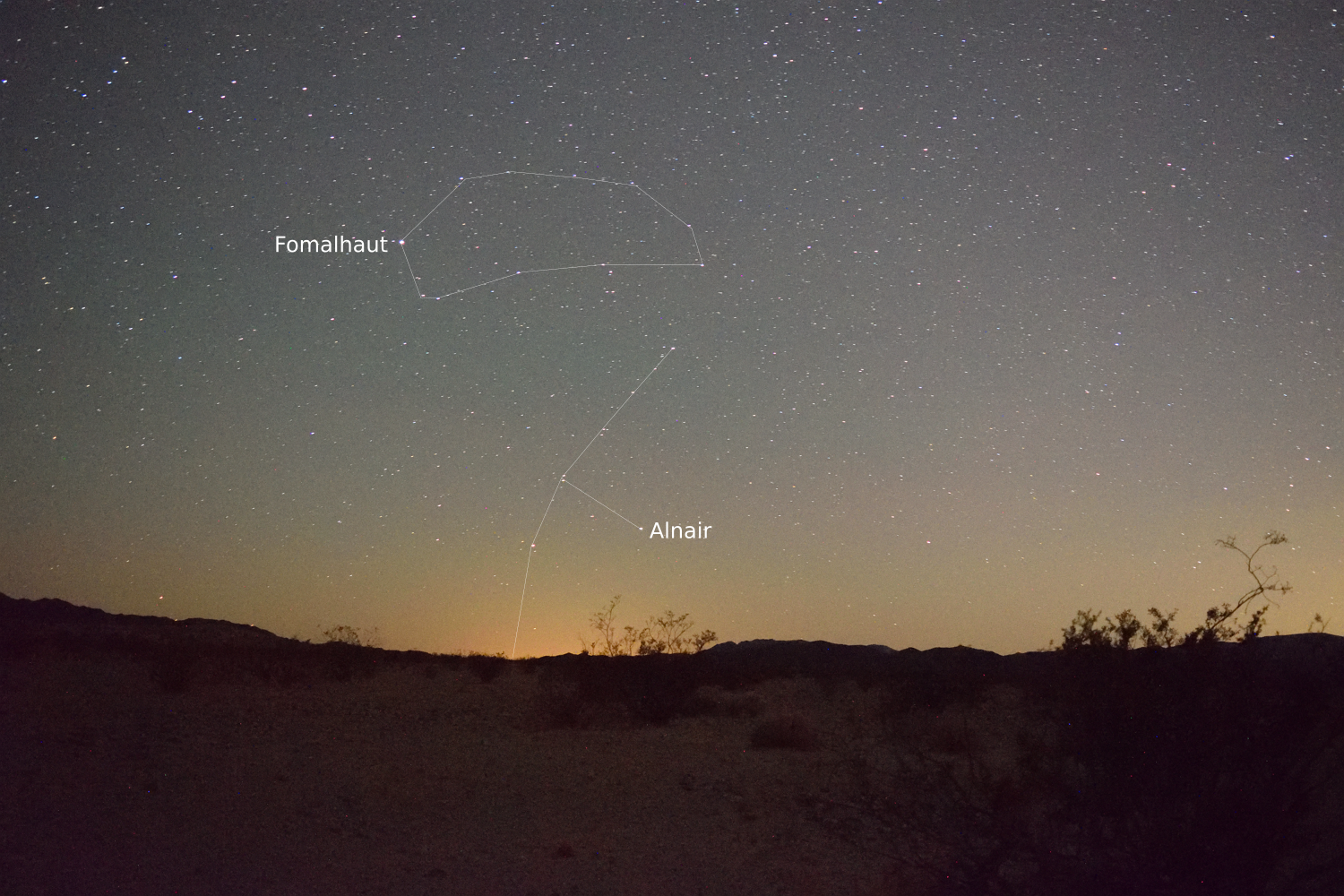

Visual magnitude: 1,74 Absolute magnitude: -5,26 Distance (Ly): 820 Spectral type: O9.5Ib+B0I Luminosity (Sol): 100000 Mass (Sol): 28 Diameter (Sol): 20 Surface temperature: 29500K Right Ascencion: 5h41m Declination: -1°57' Solar opposition: 17 December
Another name for the star comes from Arabic, which this time means “the girdle”. Alnitak is composed of two stars Alnitak Aa – supergiant and Alnitak Ab – subgiant. Alnitak Ab lies just 11 AU from its primary star, which almost corresponds to the distance between the Sun and Saturn. There is also a third component – Alnitak B, which orbits the main star every 1509 years. Alnitak C is just the visual component of this while star system and potentially it’s not related to it. This star is just in the line of sight when looking from Earth.
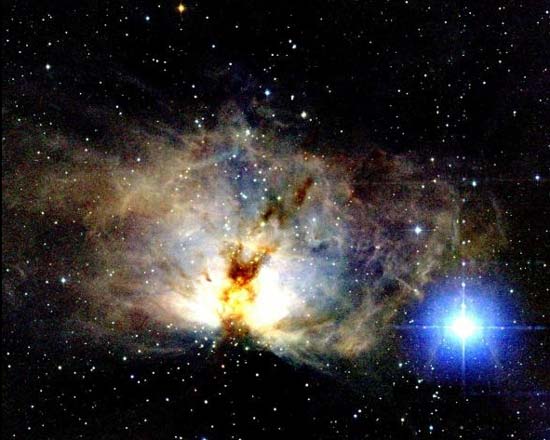
Alnitak is the easternmost star of Orion’s belt – the most conspicuous asterism in the sky. The star shines just next to the Flame Nebula – an emission nebula located between 900 and 1500 light-years away. This nebula the same as the celestial area where Alnitak is located belongs to the nebulosity of IC 434. The same as Alnilam, Alnitak is visible to everyone on the planet Earth except for just the North Pole.
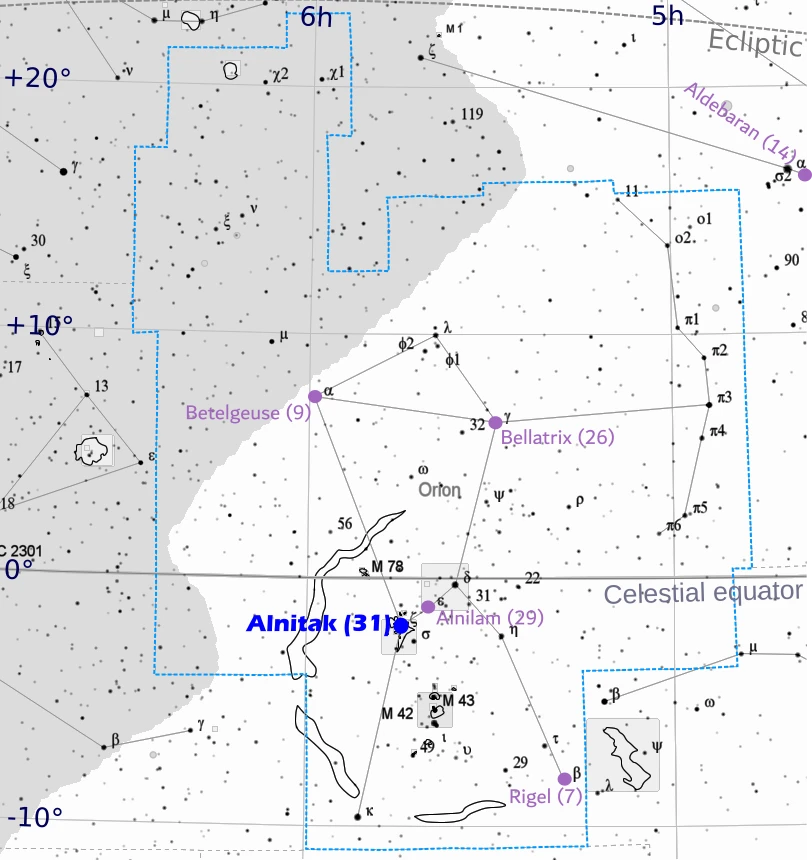
Visual magnitude: 1,75 Absolute magnitude: -5,31 Distance (Ly): 840 Spectral type: WC8 + O7.5III Luminosity (Sol): 100000 Mass (Sol): 30 Diameter (Sol): 13 Surface temperature: 57000K Right Ascencion: 8h10m Declination: -47°20' Solar opposition: 20 January
The name of Regor is just Roger spelled backward and is a result of the joke by one of the astronauts in the failed Apollo 1 mission. Another member of the crew was Roger B. Chaffee.
Regor is at least a quadruple star system consisting of the primary component of γ Velorum A and γ Velorum B. The first component includes a massive blue giant and the carbon-reach Wolf-Reyet star, which will end as a supernova. They are separated from each other just between 0.8 and 1.6 AU with an orbital period of 76.5 days. The estimated age of this component is between 3,5 and 5,5 million years.

The second component – Gamma Velorum B consists of the blue giant and its fainter closer companion. They rotate each other within just 1,48 days. Their age is estimated at around 8 million years.
Regor is one of the closest supernova candidates to our Solar System. The star can be found when extending over twice your line between the Sirius and Adhara in the same direction or moving your sight considerably south from Regulus (passing a quite bright Alphard star on the way). We can also say, that Regor makes the triangle with Sirius and Canopus.



Visual magnitude: 1,76 Absolute magnitude: -0,21 Distance (Ly): 80,9 Spectral type: A0IV Luminosity (Sol): 108 Mass (Sol): 3 Diameter (Sol): 3,7 Surface temperature: 9000K Right Ascencion: 12h54m Declination: 55°58' Solar opposition: 4 April
The name Alioth comes from Arabic and means “the sheep’s fat tail”. This is the brightest star of the Big Dipper asterism. This is a white or blue-white star, which is the brightest peculiar class A star in the sky. The brightness of this star varies and it’s rotation-dependent. The rotation of Alioth is complicated because the star’s axis of rotation is positioned at an angle to its magnetic axis and it’s highly likely that it spins different elements to the different regions as a result of star rotation. In practice, these regions come in and out of sight. The other peculiarity of this star comes out from the fact, that Alioth’s magnetic field separates different elements in the star’s hydrogen supply.
Alioth is a member of the Ursa Major moving group, which includes a number of bright stars having a common origin and velocity in space. All the stars have an age of about 300 million years.
Alioth is also the star used for navigation as it shines from nearly the middle of the Big Dipper asterism.
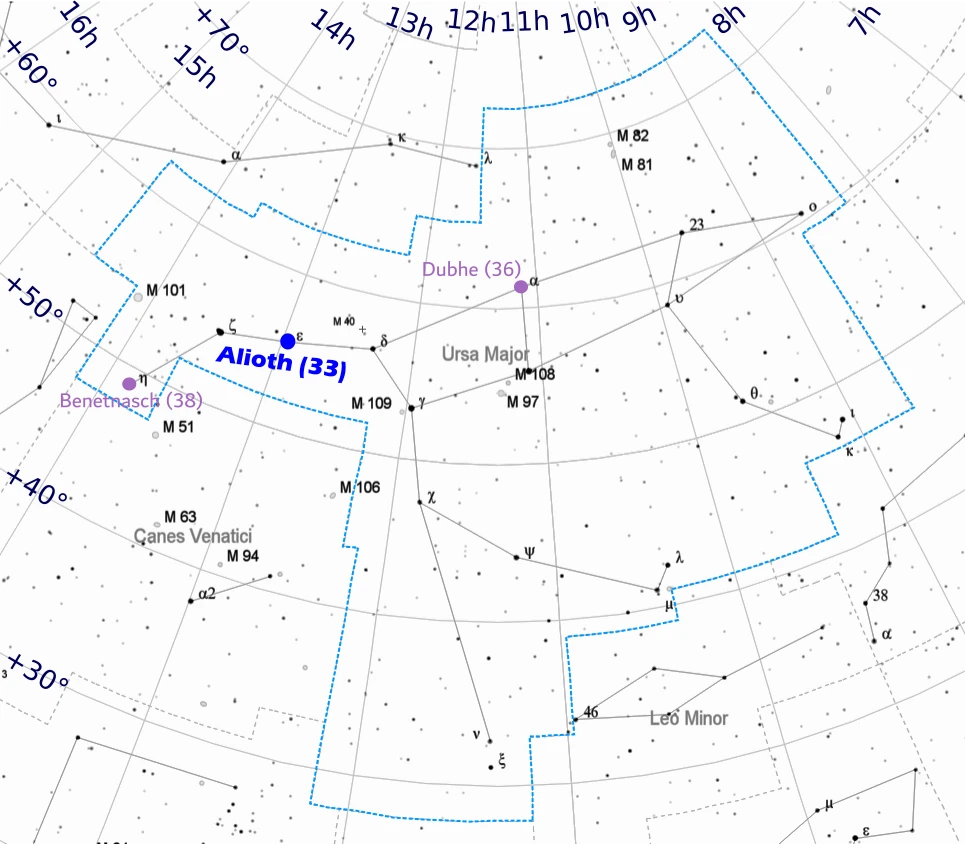
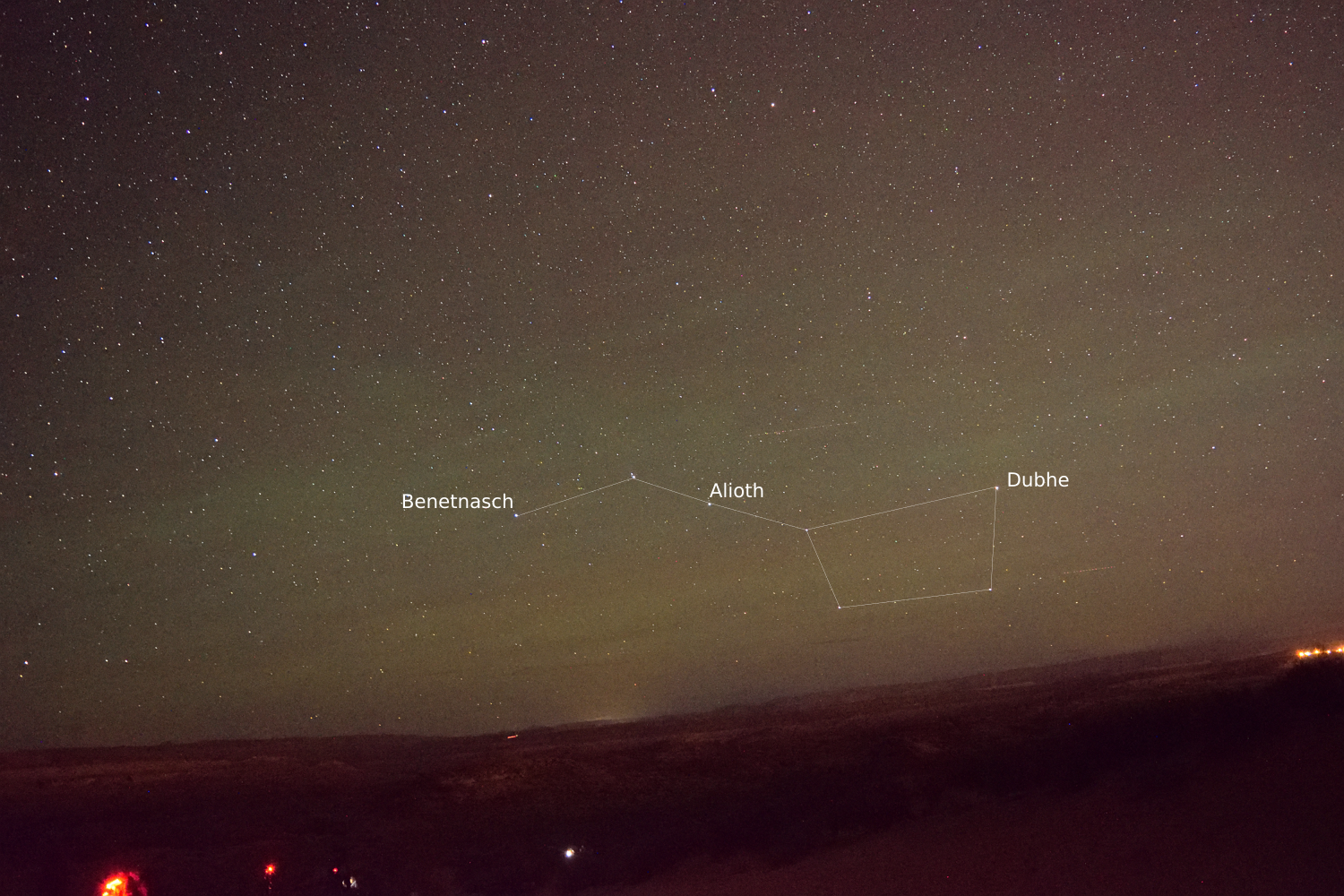
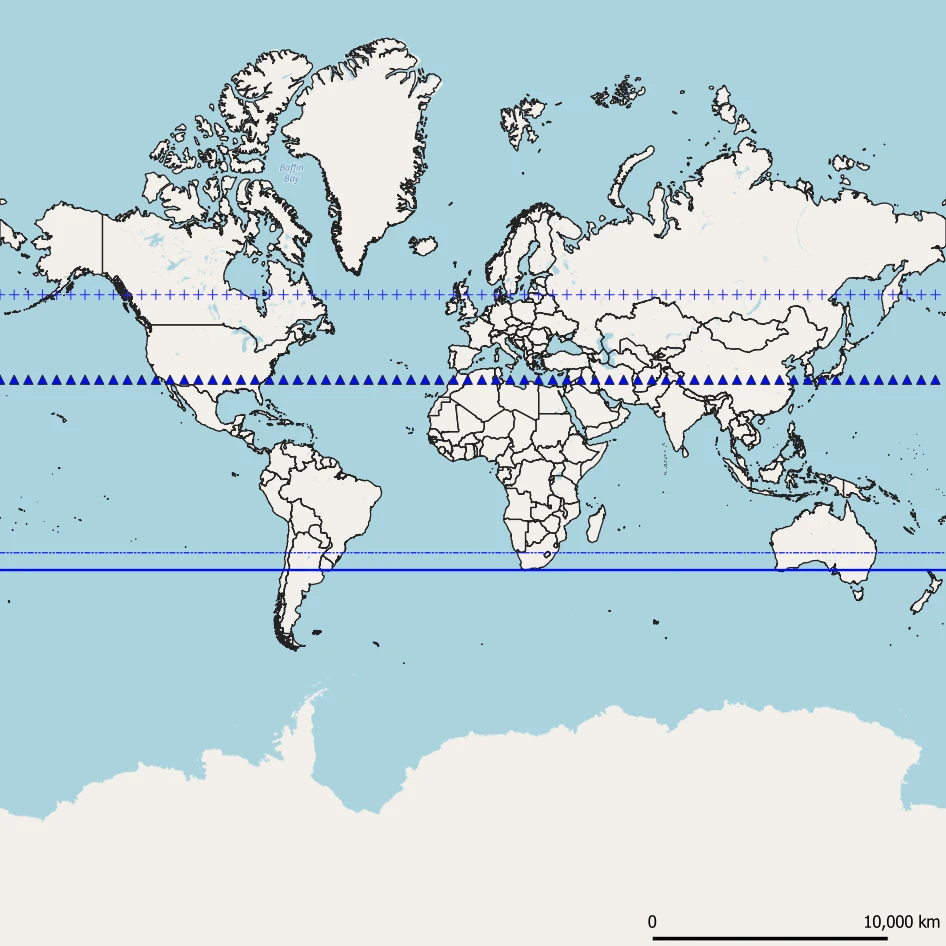
Visual magnitude: 1,79 Absolute magnitude: -4,50 Distance (Ly): 590 Spectral type: F5 Ib Luminosity (Sol): 5400 Mass (Sol): 11 Diameter (Sol): 56 Surface temperature: 6350K Right Ascencion: 3h24m Declination: 49°52' Solar opposition: 16 November
The name Mirfak (formerly Mirphak) from Arabic means “elbow”. Mirfak is the supergiant star in the latter stage of its evolution. Mirfak is a part of the Alpha Persei Cluster, which consists of massive blue class B stars, that formed together around the same time and continue to move together across space.
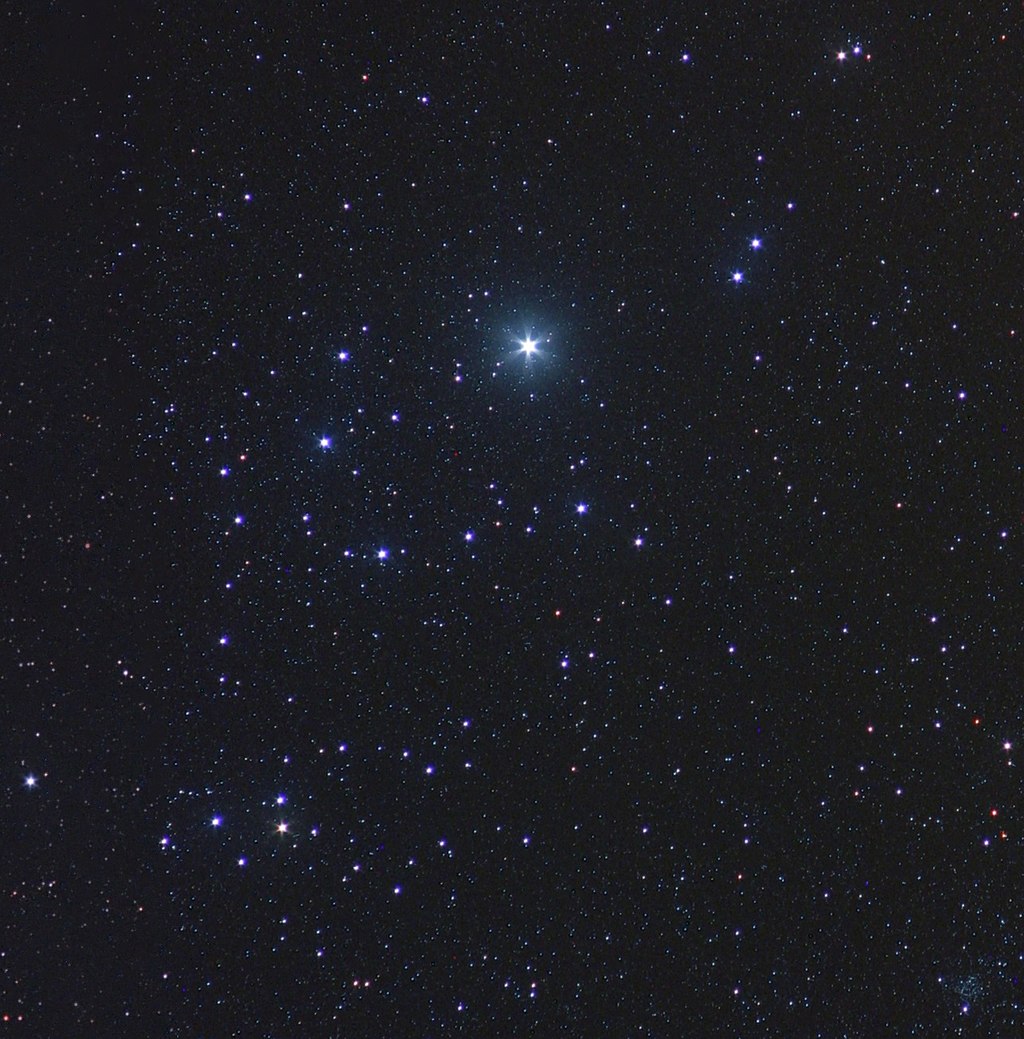
The intriguing thing related to Mirfak is the presence of the planet discovered in 2010. The planet can orbit Mirfak within just 128 days at a distance of 0.95 AU with a size almost 7x exceeding the dimensions of Jupiter.
Mirfak can be found in the middle of the Alpha Persei open cluster building up the part of the Segment of Perseus – the top piece of the Perseus constellation. The star shines under the Cassiopea’s W-shaped asterism called “the Queen’s W”. The star never sets under the horizon from mid-northern latitudes.
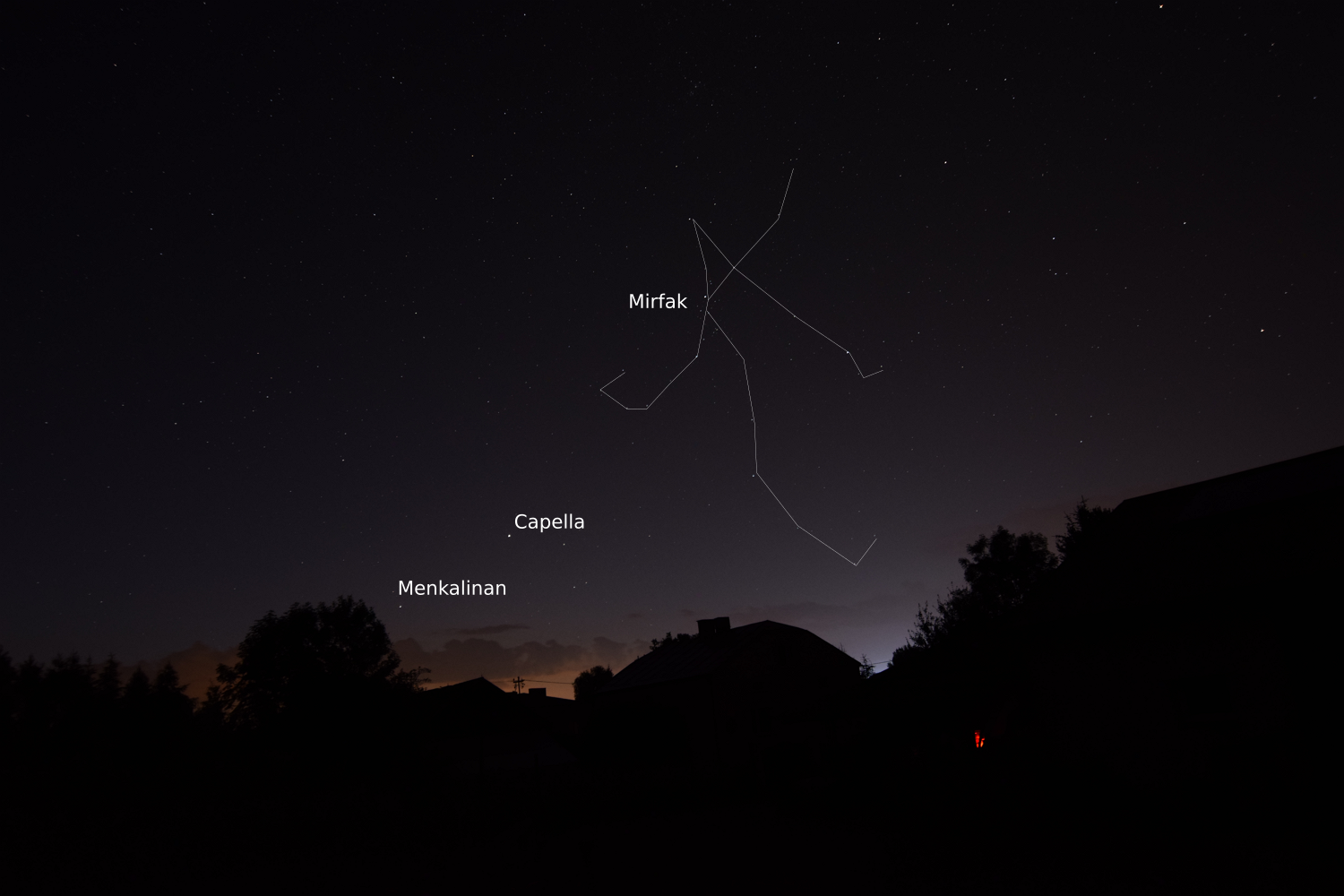
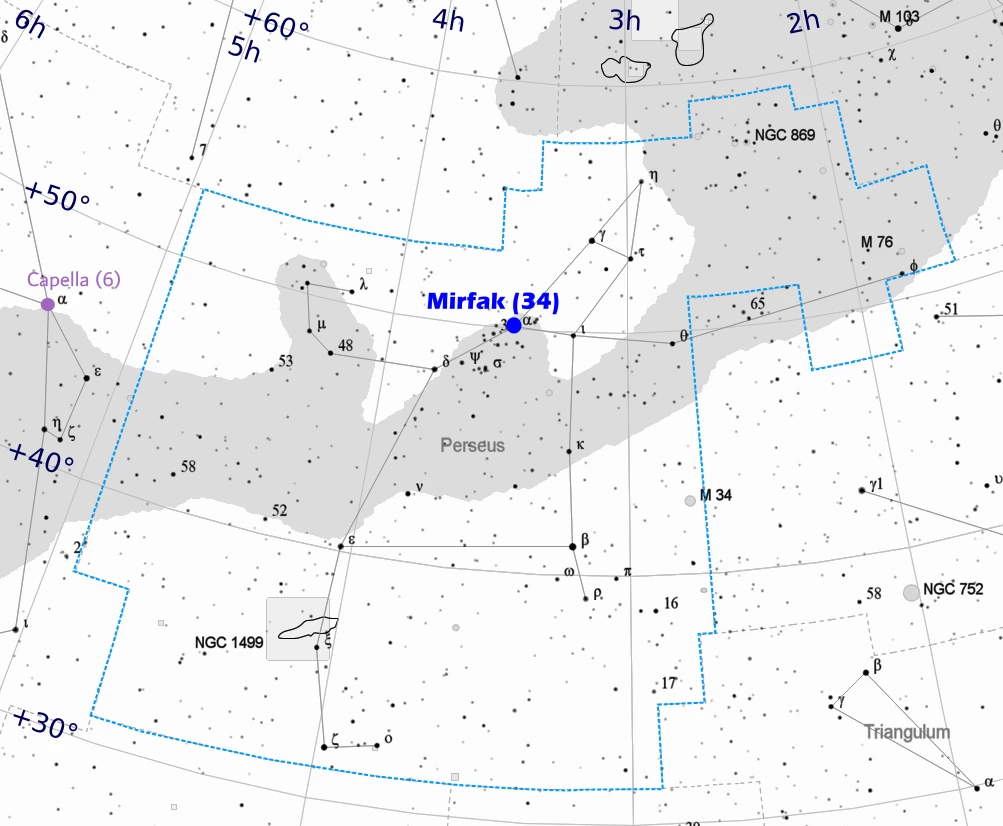
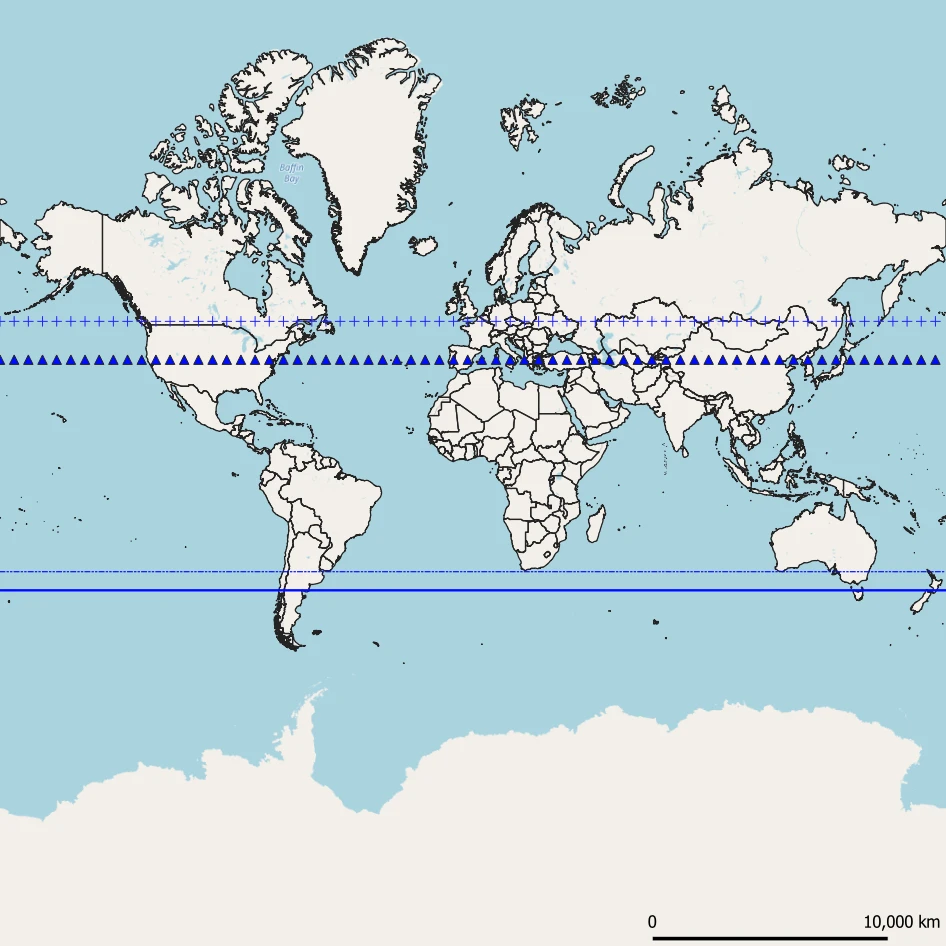
Visual magnitude: 1,79 Absolute magnitude: -1,44 Distance (Ly): 145 Spectral type: B9.5III Luminosity (Sol): 375 Mass (Sol): 5 Diameter (Sol): 7 Surface temperature: 10000K Right Ascencion: 18h24m Declination: -34°23' Solar opposition: 27 June
The name Kaus Australis has both Arabic and Latin origins. The Arabic part means “bow” whereas the Latin corresponds to the “southern”. And rightly so, as the star makes the Archer’s bow (along with Kaus Media and Kaus Borealis) in the sky by marking its basis.
Epsilon Saggitari is the binary star system including the A component classified as the blue-white giant star and the B component belonging to the main sequence. Kaus Australis A is another example of a star, which spins around rapidly – the velocity of rotation is roughly 236 km/s-1. The physical separation of these 2 components is estimated to be 106 AU. A bigger star shows an excess emission of infrared radiation, which might lead to the suggestion, that the star is surrounded by the circumstellar disk of dust orbiting the A component at a distance of about 155 AU, thereby the B component is located within this disk.
Kaus Australis is also a component of the “Teapot” asterism building up the Saggitarius constellation. The star is located very close to the plane of the Milky Way, just a few degrees northeast of Shaula. The star is also used in navigation. Because of the time of Kaus Australis’s solar opposition occurrence, the visibility conditions of this star at higher latitudes remain quite hard.
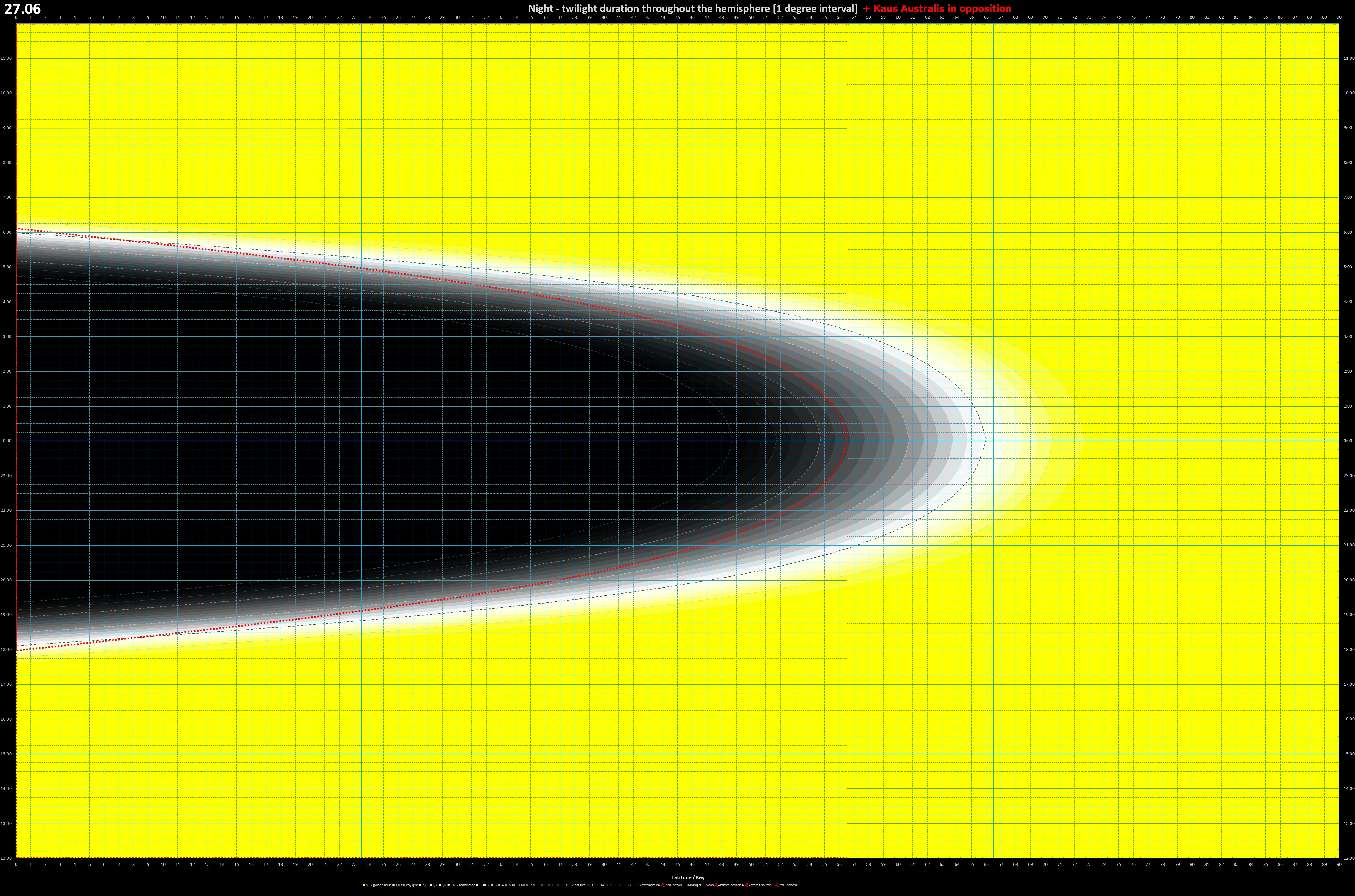
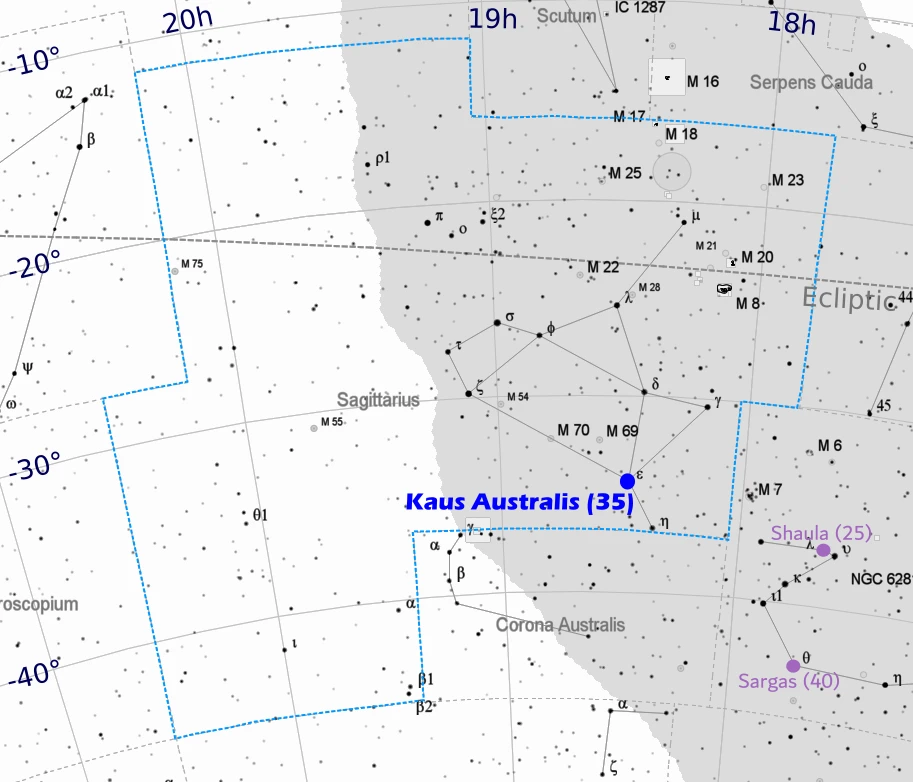


36. Dubhe
Visual magnitude: 1,81 Absolute magnitude: -1,08 Distance (Ly): 124 Spectral type: K0III + F0V Luminosity (Sol): 300 Mass (Sol): 4 Diameter (Sol): 30 Surface temperature: 5000K Right Ascencion: 11h04m Declination: 61°45' Solar opposition: 5 March
The Arabic-originated name Dubhe means “the back of the Greater Bear”. This is a binary star system separated from each other by 23 AU. However, it’s just the average distance, as their object eccentricity is 0.44. Stars rotate around each other for a period of 44.5 years. Bigger- Dubhe A is classified as an orange giant, whereas its companion – Dubhe B is a white-dwarf hydrogen-fusing star. Dubhe is not a part of the Ursa Major Moving Group of stars mentioned earlier. It means, that finally the Big Dipper asterism won’t last forever and some of the stars will eventually dissipate. Dubhe is very important in navigation because this star somewhat marks the way to the Polar star because it’s the closest Big Dipper star to the current celestial north pole. Dubhe marks the top end of the Plough asterism, which makes it easy to find in the sky.


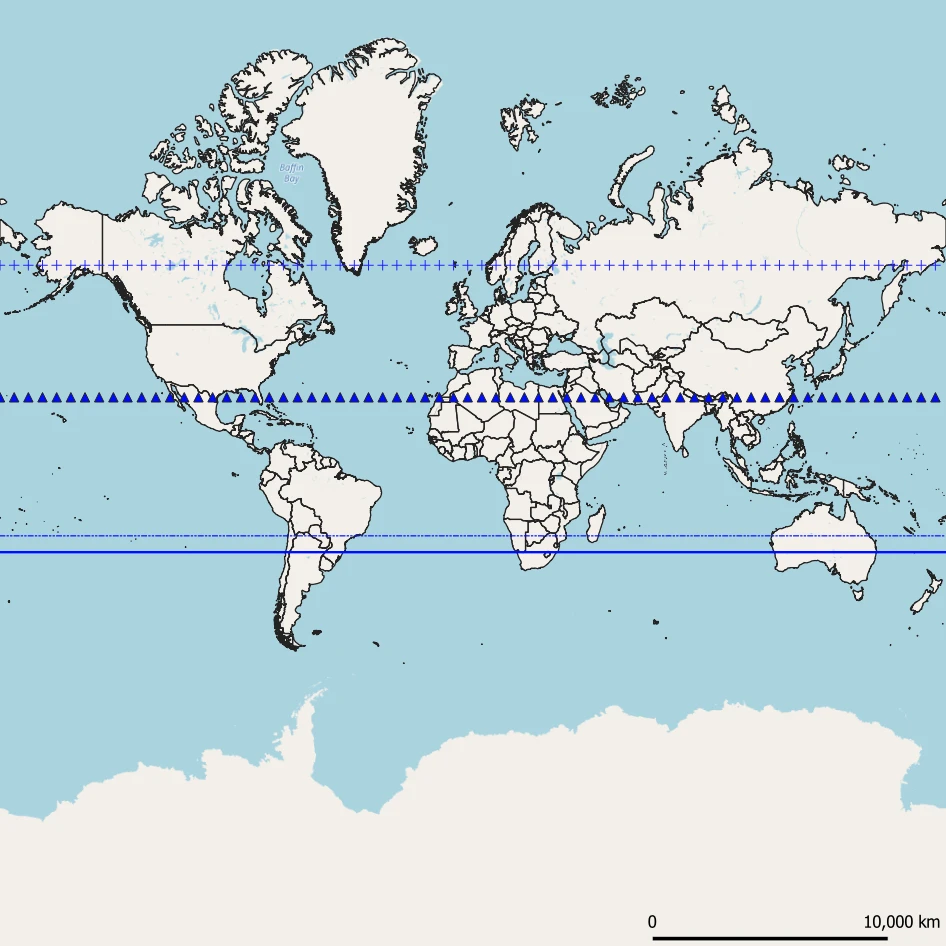
Visual magnitude: 1,83 Absolute magnitude: -6,87 Distance (Ly): 1800 Spectral type: F8 Ia Luminosity (Sol): 50000 Mass (Sol): 17 Diameter (Sol): 200 Surface temperature: 6400K Right Ascencion: 7h08m Declination: -26°24' Solar opposition: 6 January
Wezen in modern Arabic means “weight”. Essentially it matches the location of this star in the Big Dog constellation. Its position can resemble the weight, as the star shines a bit north of Adhara and Aludra. This is a yellow-white supergiant, which has its own stellar system. The rotation speed of 28 km/s-1 means, that the star can fully rotate within one year. The star counts just 10 million years, but it has run out of hydrogen in its core already. Predictions indicate another 100 million years of living. Through this period the star’s envelope will continue to expand and cool down. In the meantime, its core will fuse heavier and heavier elements leading to a supernova explosion at the very end. Now, if Wezen were as close to Earth as Sirius is, it would be as bright as half of the full Moon (Ridpath, 2003).
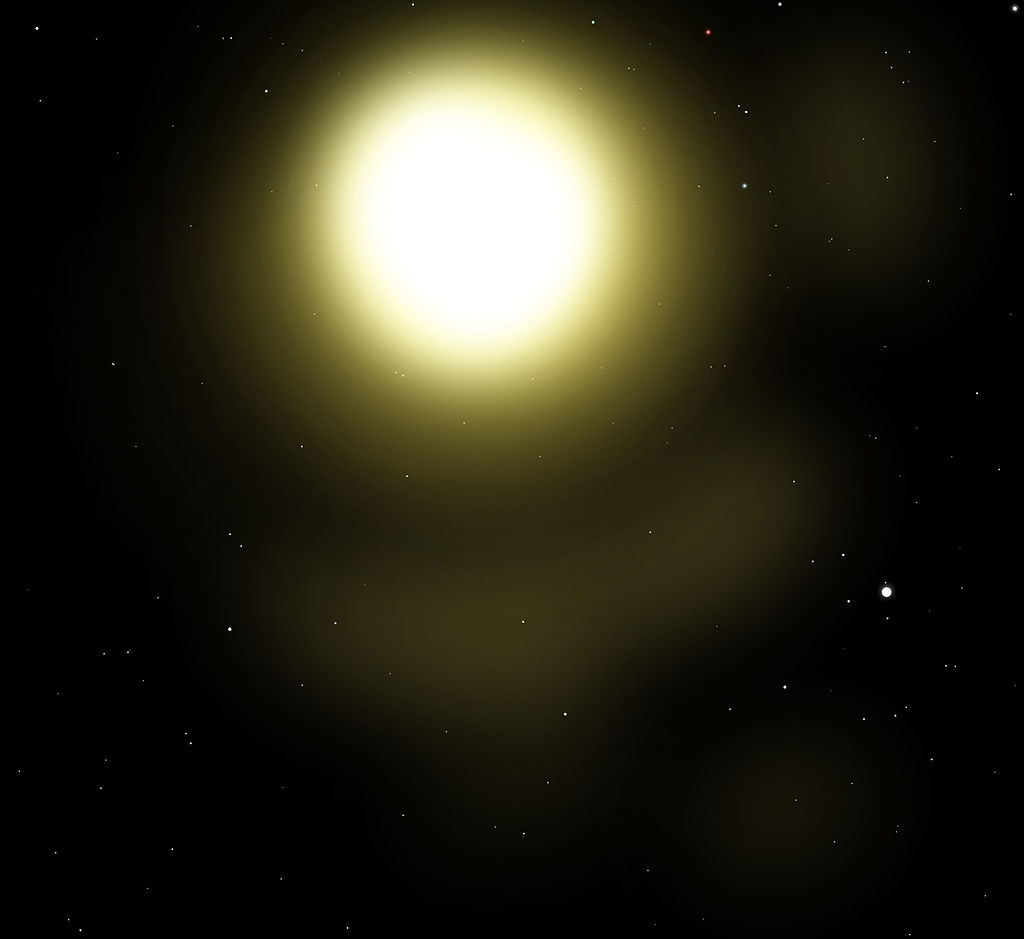
Wezen builts up the aforementioned “weight” shape visible as the isosceles triangle making up the southern part of the Canis Major constellation at once. Wezen shines at the very top of this triangle. Since you know where Sirius is, then finding Wezen won’t be a big challenge.
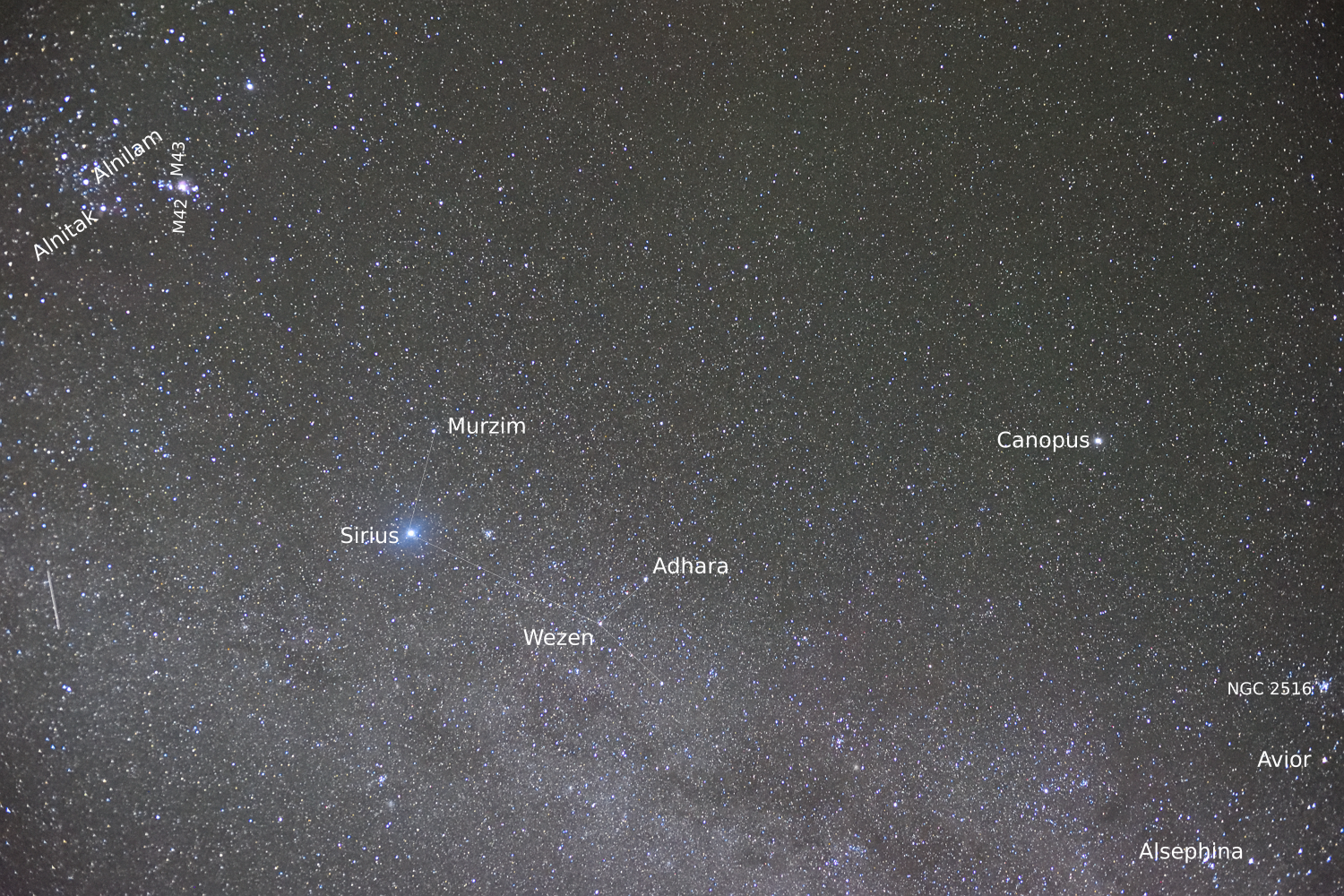
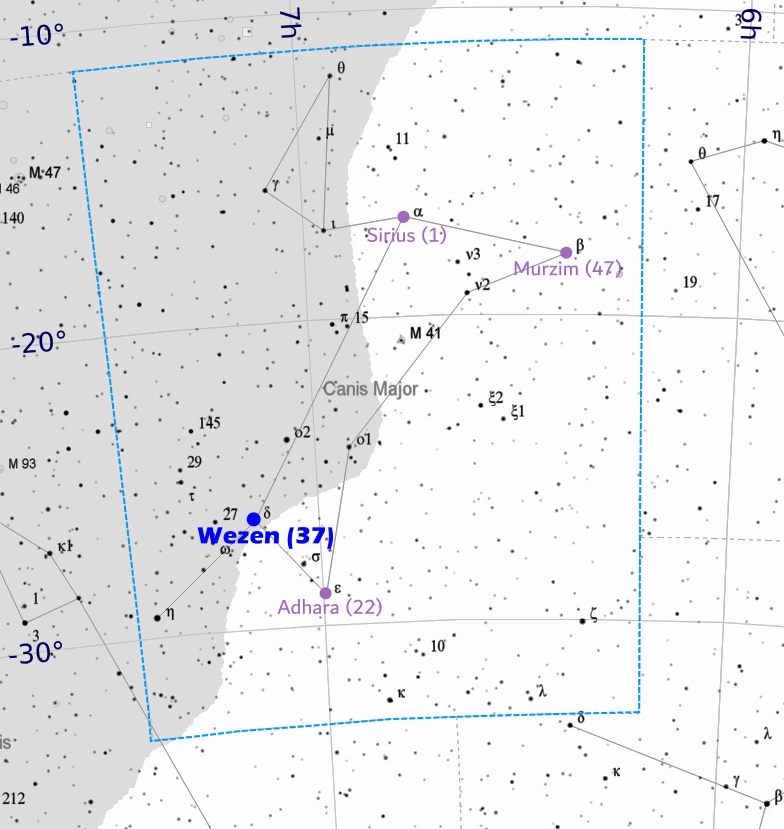
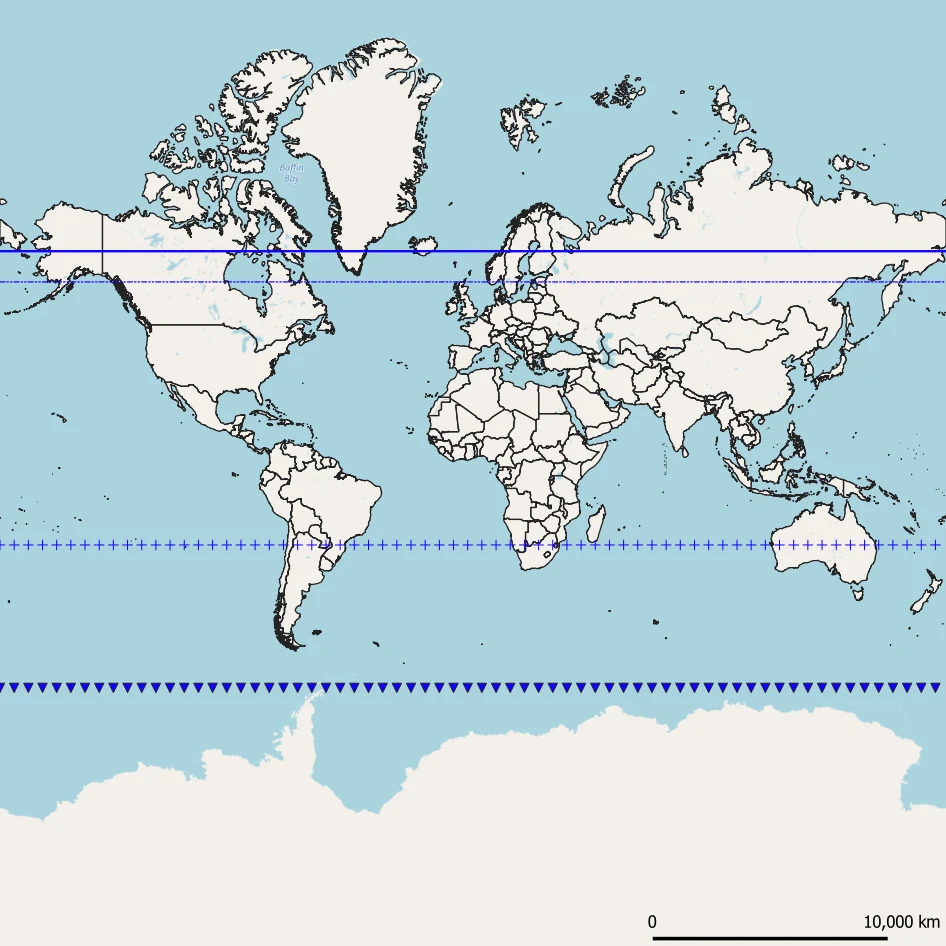
Visual magnitude: 1,85 Absolute magnitude: -0,60 Distance (Ly): 101 Spectral type: B3 V Luminosity (Sol): 700 Mass (Sol): 6 Diameter (Sol): 1,8 Surface temperature: 15600K Right Ascencion: 13h48m Declination: 49°18' Solar opposition: 19 April
The name of Akaid, similarily to Benetnasch means in Arabic “The leader of the daughters of the bier”. If we take a look at the Big Dipper from a different angle we can imagine i.e. the mourning maidens – three stars: Alkaid, Mizar, and Alioth comprising the “shaft” and another 4 stars building the bowl: Megrez, Phecda, Merak, and Dubhe, which are the bier.
The estimated age of Alkaid is just 10 million years with its projected rotational velocity of 150 km/s-1. So far only the star flattening was considered as the result of fast spinning. Admittedly it’s strongly related to the other phenomenon, called “gravity darkening“. It’s in fact an analog phenomenon to gravity brightening. It describes the situation, where the poles of the fast-spinning star are brighter than equatorial areas. It’s a result of the shorter distance of the star poles to the center of the mass, which results in higher mass gravity and thereby higher temperature.
Alkaid, because it’s classified as a B-type star won’t live so long. Its age is estimated to reach just 100 million years including the period, in which the star will evolve as a giant.
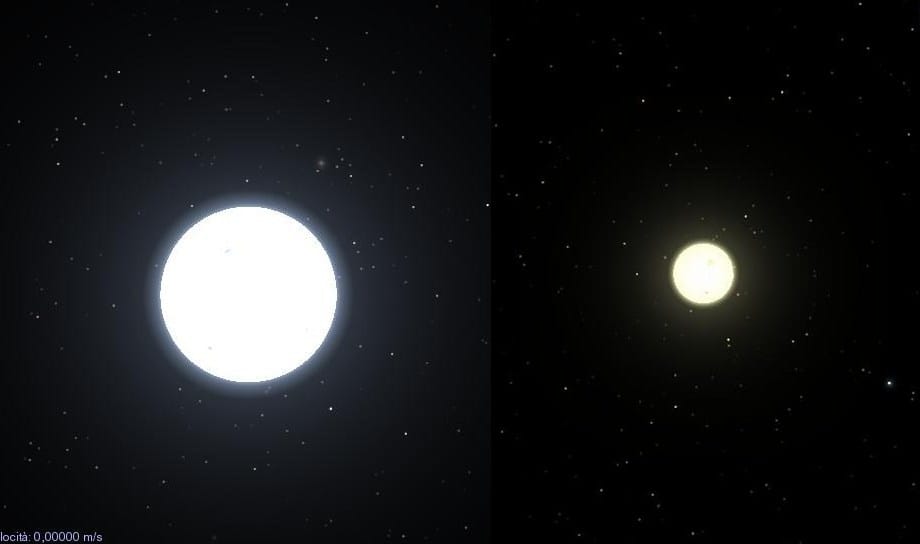
The spectrum of Alkaid has functioned as one of the solid anchor points for classifying other stars falling into the B3 V spectral class. Benetnasch has the southernmost and easternmost location of the Big Dipper asterism, therefore it’s a good celestial object for navigation purposes. Alkaid, the same as Dubhe doesn’t belong to the Ursa Major Moving Group, which means that this star will be separated from this asterism in the future.
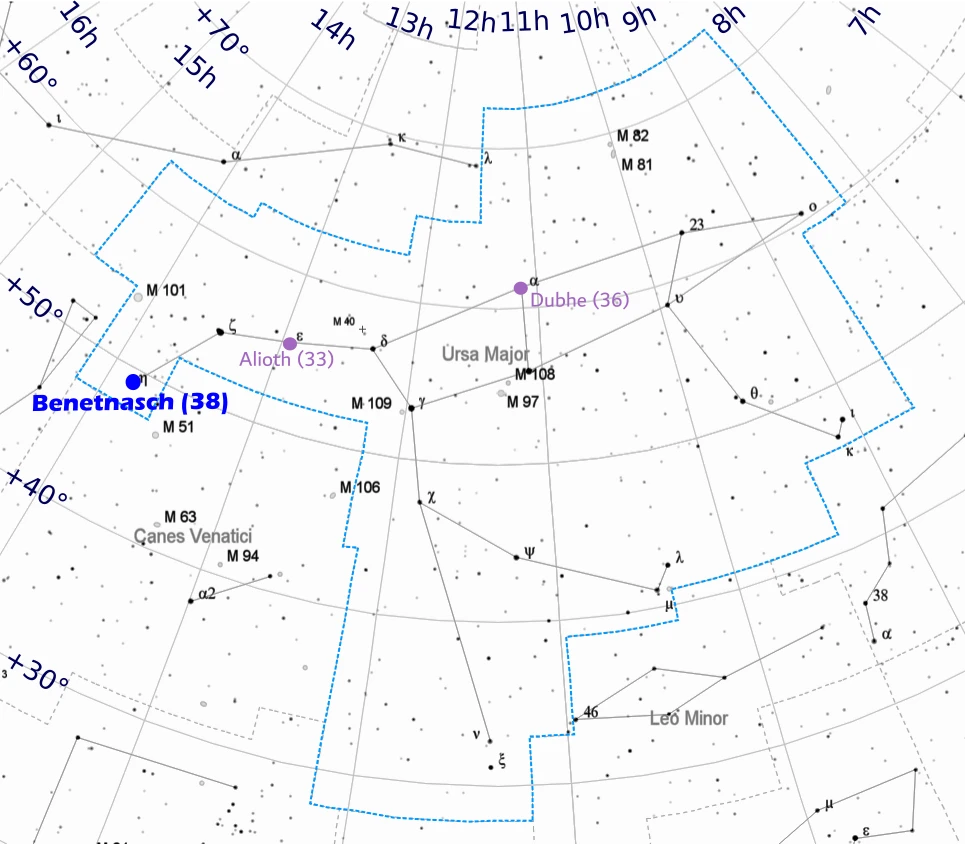
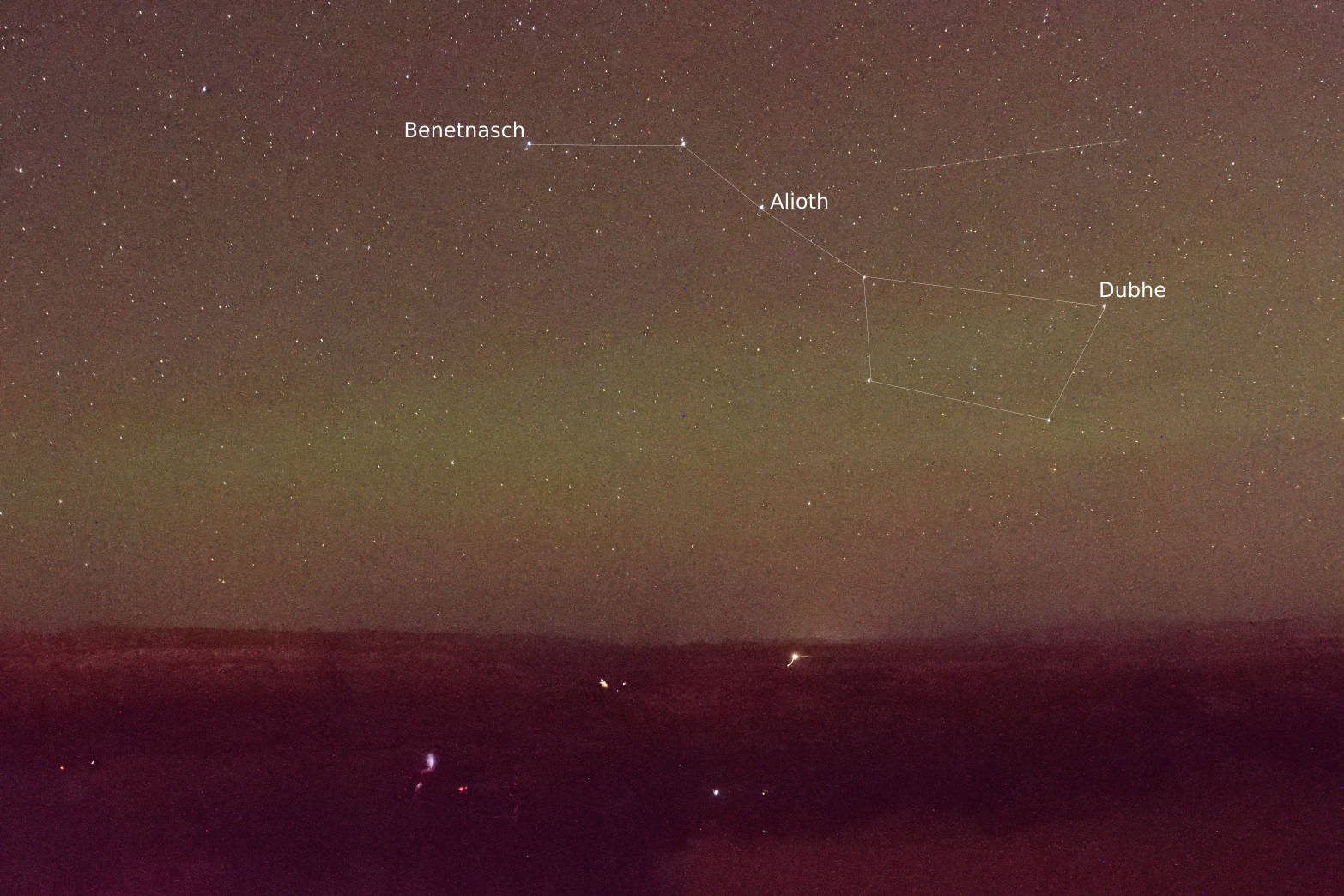
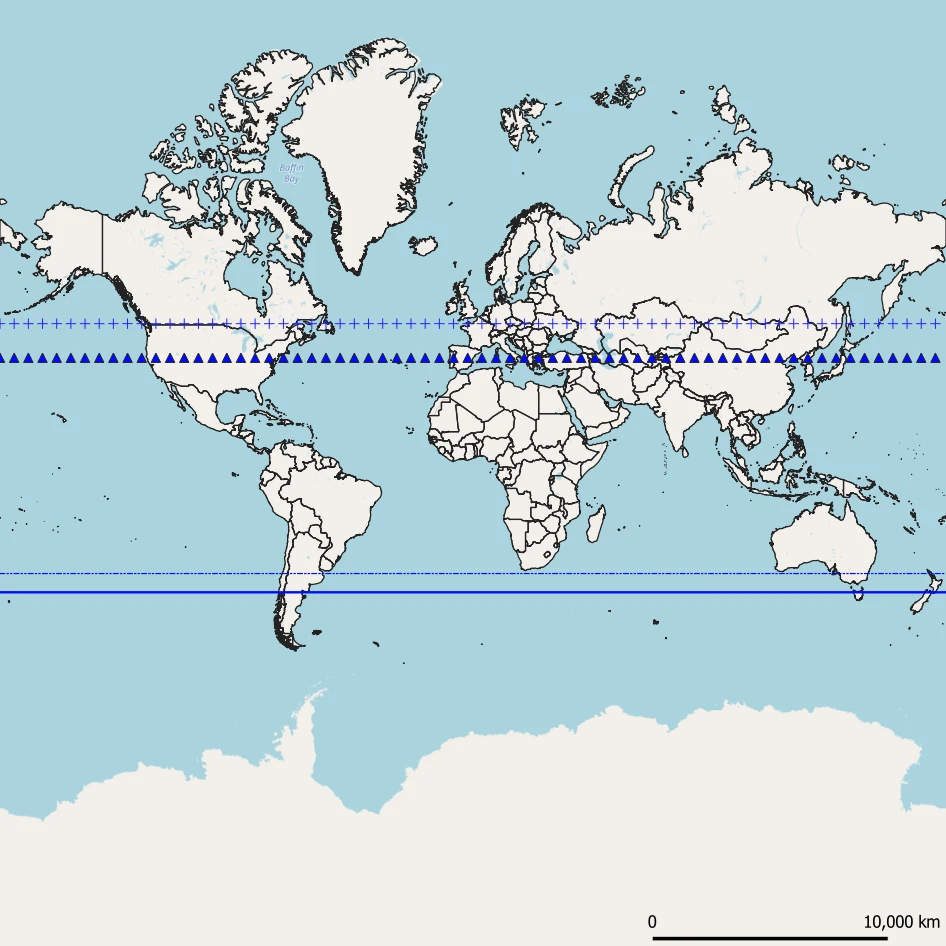
Visual magnitude: 1,86 Absolute magnitude: -4,58 Distance (Ly): 630 Spectral type: K3 III + B2 Vp Luminosity (Sol): 11 Mass (Sol): 16 Diameter (Sol): 153 Surface temperature: 20400K Right Ascencion: 8h23m Declination: -59°31' Solar opposition: 23 January
The name Avior comes from the navigational almanac for the Royal Air Force. This is the binary star including the orange giant the Avior A and the blue-white main sequence dwarf. They both create the eclipsing binary system with a period of 785 days when the brightness diminishing is observed by 0.12 Mag. These two stars are separated just 4 AU from each other (less than the distance between the Sun and Jupiter!). The age of this system is estimated to be between 20 and 30 million years.
Avior can be found east of Canopus. Along with some stars in the Vela constellation, it forms the False Cross asterism (Pic. 129) where Avior is the southernmost star.
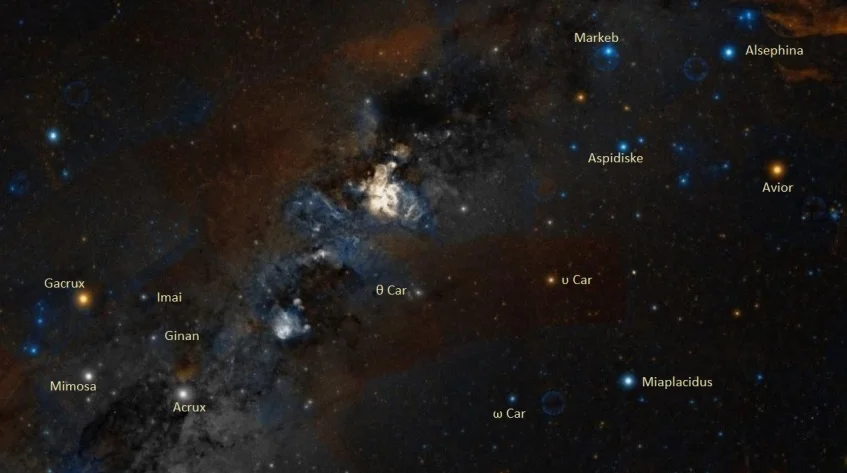
The Avior star in the False Cross likewise Gacrux in the Southern Cross emits reddish light, which makes it different than other components.

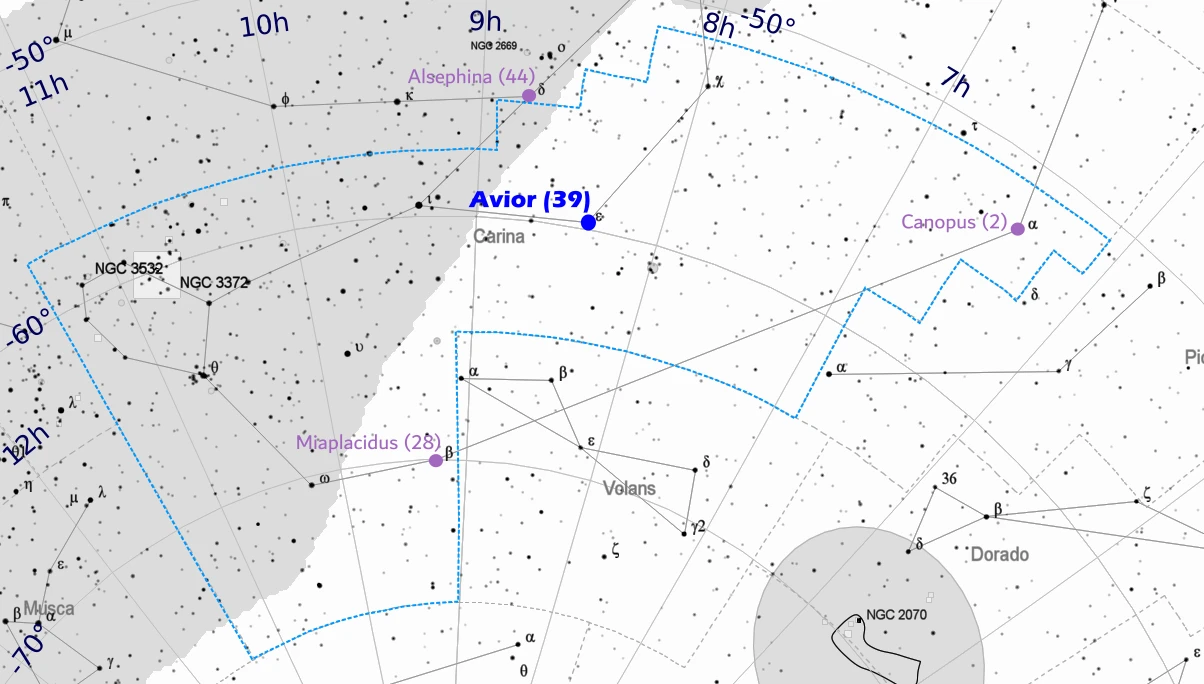
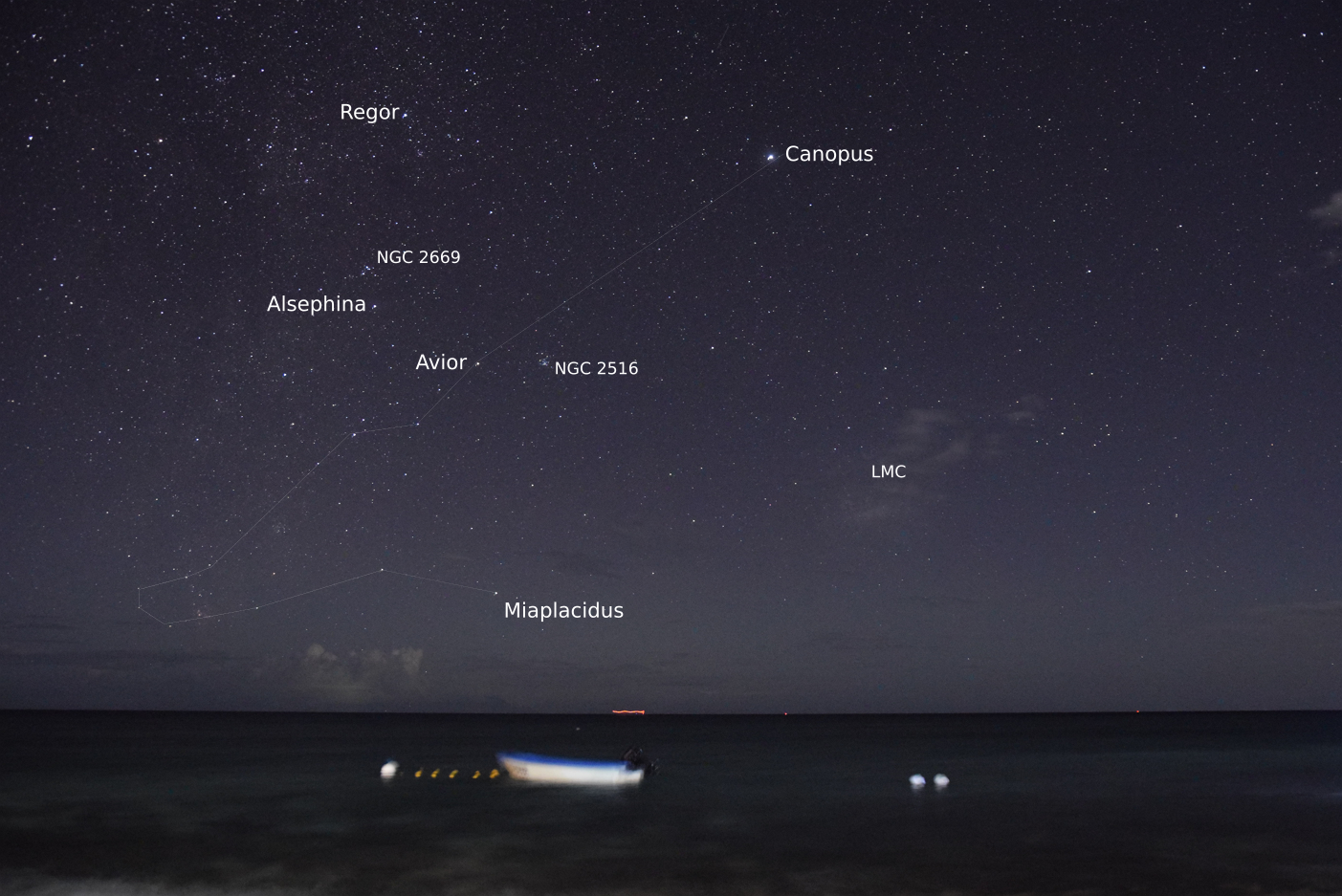
Visual magnitude: 1,86 Absolute magnitude: -2,75 Distance (Ly): 270 Spectral type: F0 II Luminosity (Sol): 960 Mass (Sol): 3,7 Diameter (Sol): 20 Surface temperature: 7300K Right Ascencion: 17h37m Declination: -43°00' Solar opposition: 16 June
The original name of Sar Gaz comes from Iran and means the timing of irrigation water shares. In Sumerian, the Sar Gaz meant the “arrowhead”. Sargas comprises the binary star system including the white or yellow-white giant star and its much smaller counterpart with a magnitude of 5.36.
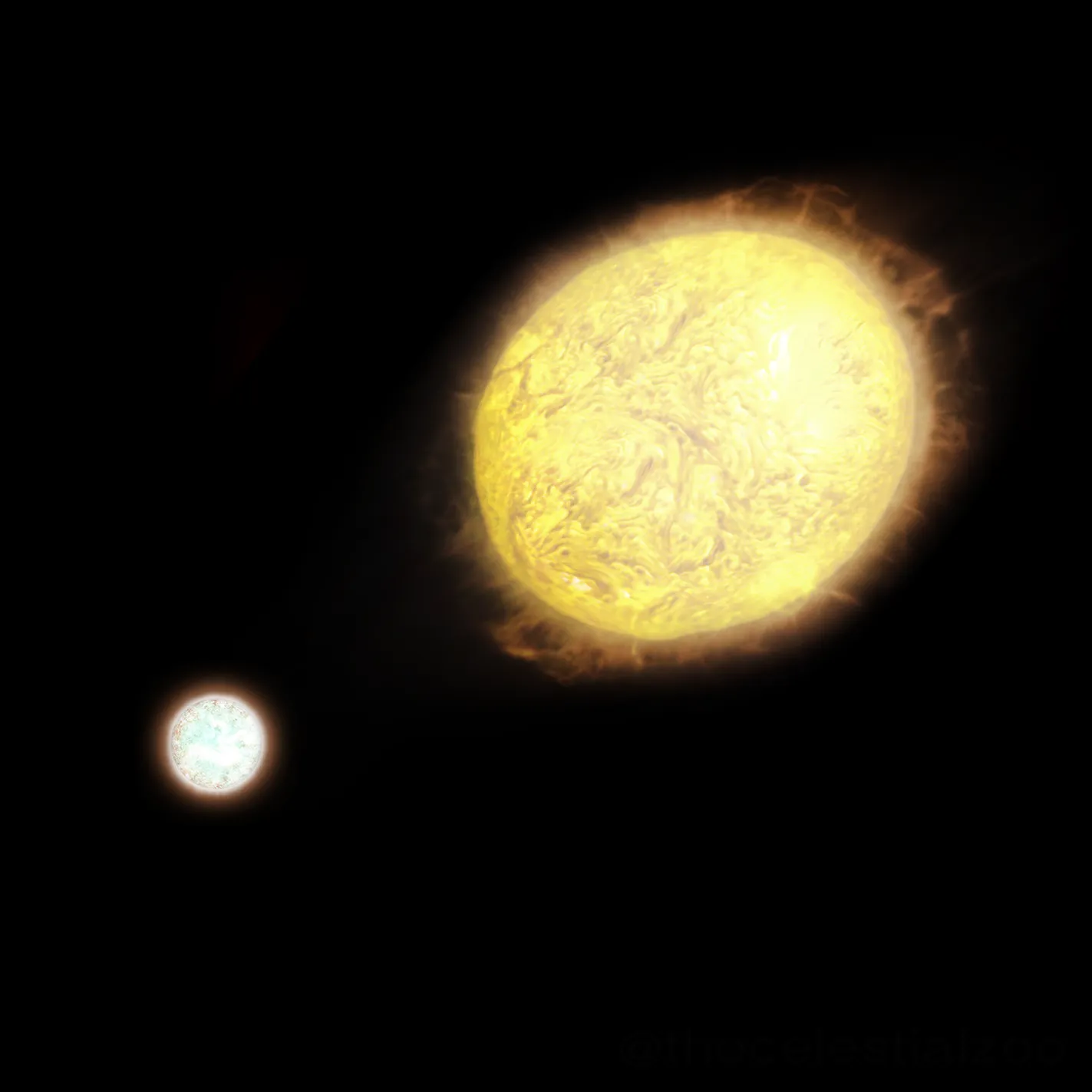
The Theta Scorpii A rotates quickly with a velocity of 125km.s-1, which gives it an oblate form with a greater than 19% equatorial radius. Because of its large size, the star still needs 10 days to complete the rotation. Of course, Sargas remains also a good example of gravity darkening. Sargas can be found easily since you know where the Shaula is located. Move your sight just slightly below and you will spot this star. For higher southern latitudes, where the Scorpius constellation shines upside down, you should turn your sight up from Shaula.
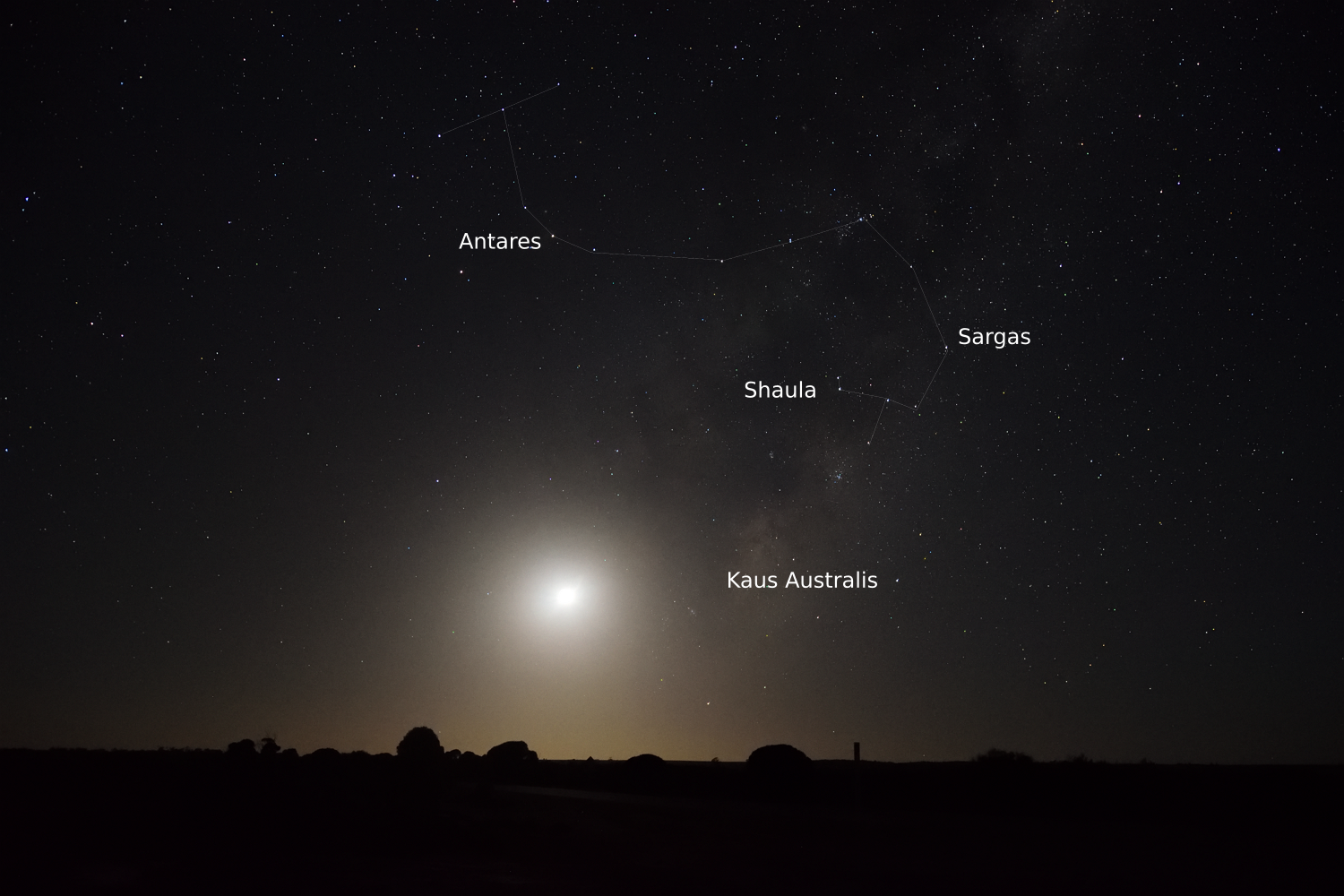
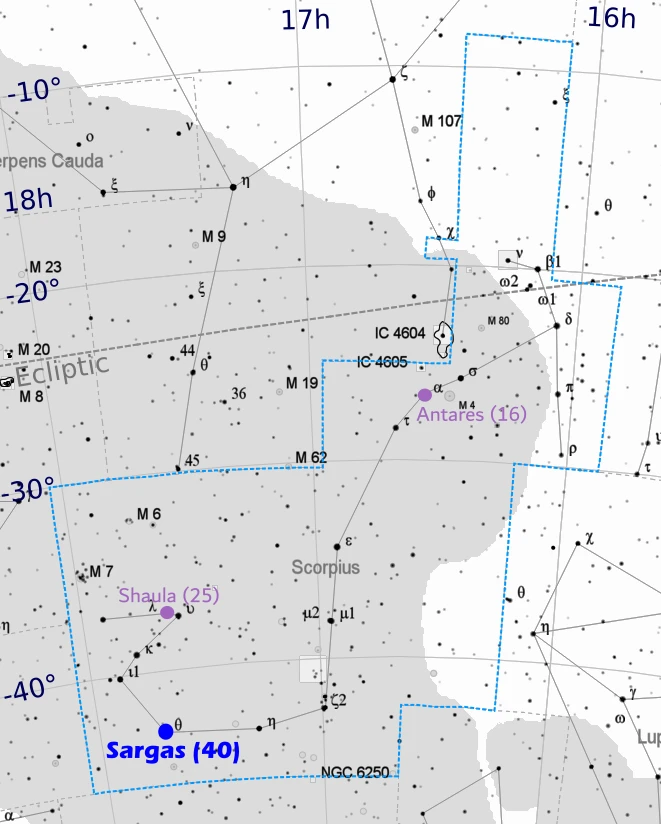
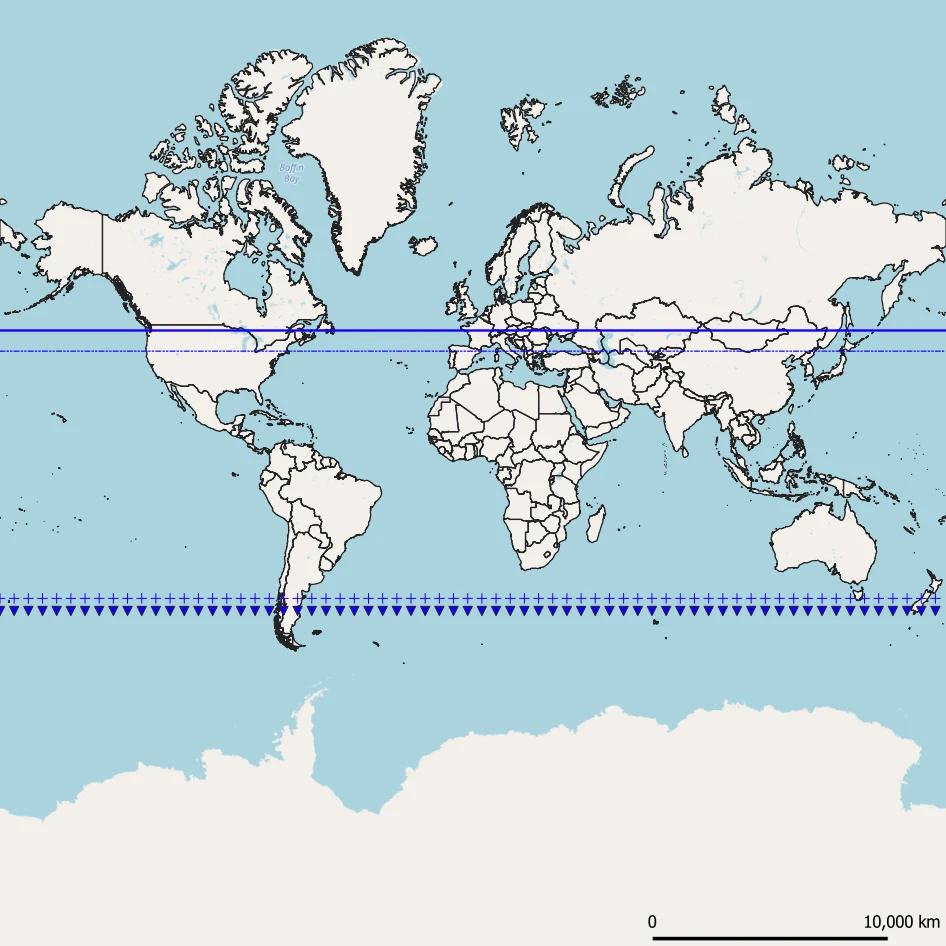
Visual magnitude: 1,90 Absolute magnitude: -0,10 Distance (Ly): 82,1 Spectral type: A2 IV Luminosity (Sol): 48 Mass (Sol): 2,4 Diameter (Sol): 2,8 Surface temperature: 9200K Right Ascencion: 6h00m Declination: 44°57' Solar opposition: 22 December
Menkalinan from Arabic means “shoulder of the rein-holder”, which matches accurately the Charioteer constellation (shoulder of the Charioteer). Menkalinan is a binary star, however visible as the one bright star in the night sky. Both components are metallic-lined (Am star type) subgiant stars. They act as twins having roughly the same mass and radius. Other parameters vary fractionally. The star’s estimated age is 570 million years. Both stars are close together, and rotate themselves at a distance 5x shorter than between the Sun and Mercury! This is why their shapes have been distorted by gravitational interaction and they look like eggs in reality. It’s not confirmed enough yet, but β Aurigae can be even a triple star system because some candidate member with 8,5 Mag brightness has been discovered nearby. The brightness of Menkalinan varies around 0,05 Mag for just 4 days. Stars eclipse each other every 47,5 hours and this is the reason. The eclipse is caused by the fact, that their orbits are perfectly aligned with the Earth. The β Aurigae is believed to be a member of the Ursa Major Moving Group. Menkalinan’s location in the sky is very simple, as the star shines left of Capella.

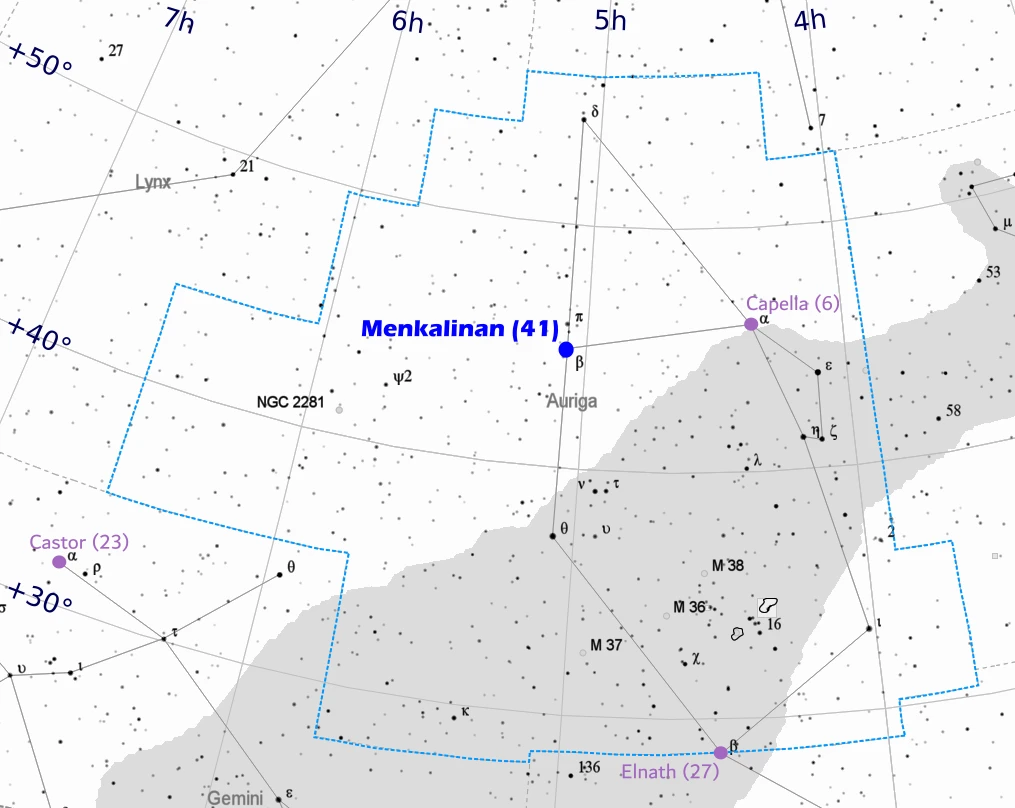

Visual magnitude: 1,91 Absolute magnitude: -3,62 Distance (Ly): 415 Spectral type: K2 IIb-IIIa Luminosity (Sol): 5500 Mass (Sol): 7 Diameter (Sol): 130 Surface temperature: 4150K Right Ascencion: 16h49m Declination: -69°02' Solar opposition: 4 June
The name is simply the contraction of α Trianguli Australis, which is a bright giant star, orange in color. The estimated age of this star is 48 million years. It’s probably a barium star type, which would indicate, that Atria is a binary star system, where mass is transferred within. Barium stars are initially more massive and display unusual stellar flares combined with higher than normal emission of X-rays. These elements explain the potential presence of a young, magnetically active companion with a mass similar to the Sun, orbiting the main star within 130 years at a distance of about 50 AU. A companion such as this hasn’t been detected in the vicinity of α Trianguli Australis.
Considering the diameter of Atria, we could assume, that its surface would reach nearly the orbit of Venus when placed in the center of our Solar System.
Atria is the brightest star in the Triangulum Australae constellation, which is visible well southeast of the Rigil Kentaurus and Hadar (Agena) stars. If the other stars in this constellation like Betria and Gatria would build the isosceles triangle with Rigil Kentaurus, this celestial shape would be about 1,5x wider and oriented in opposite direction.
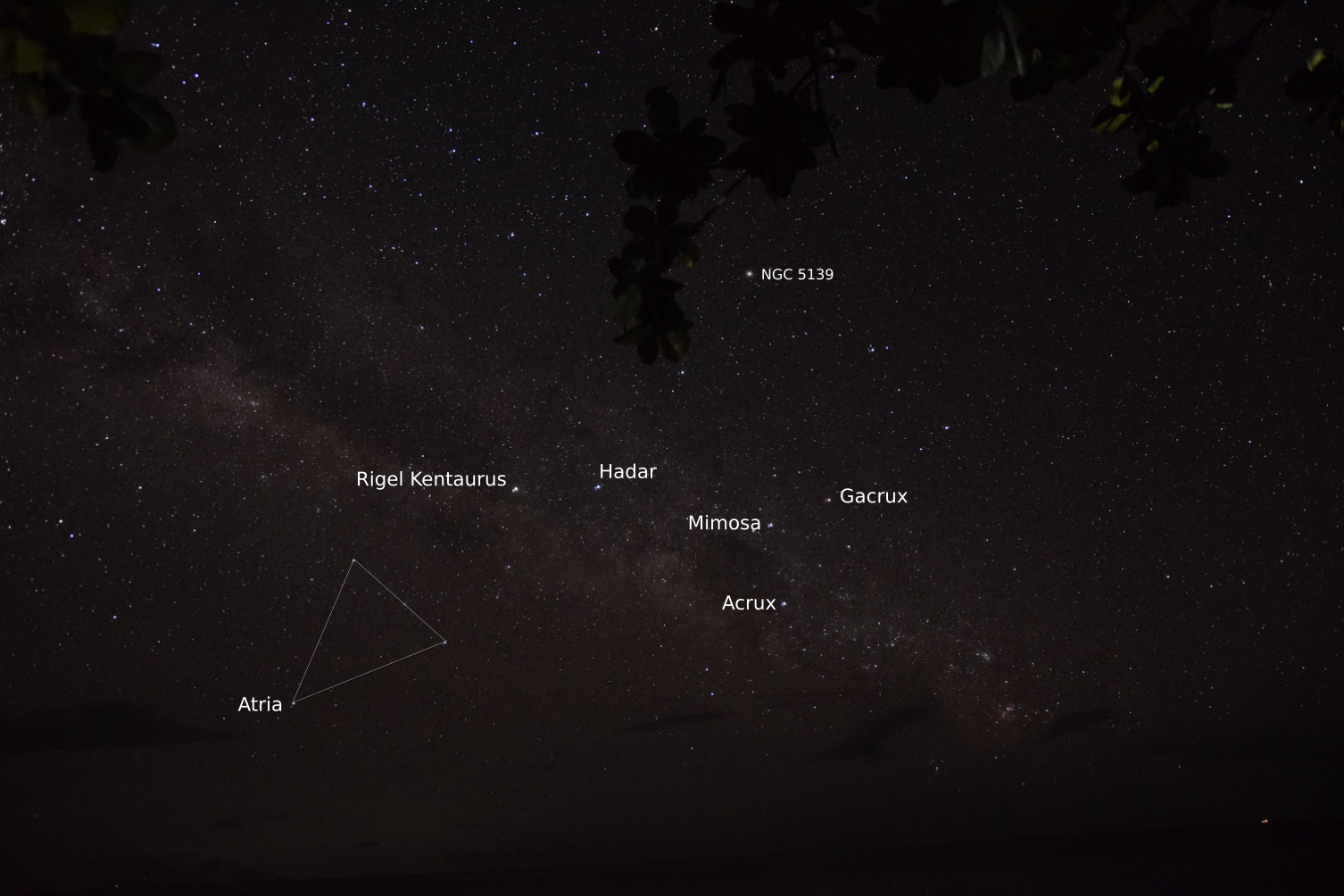
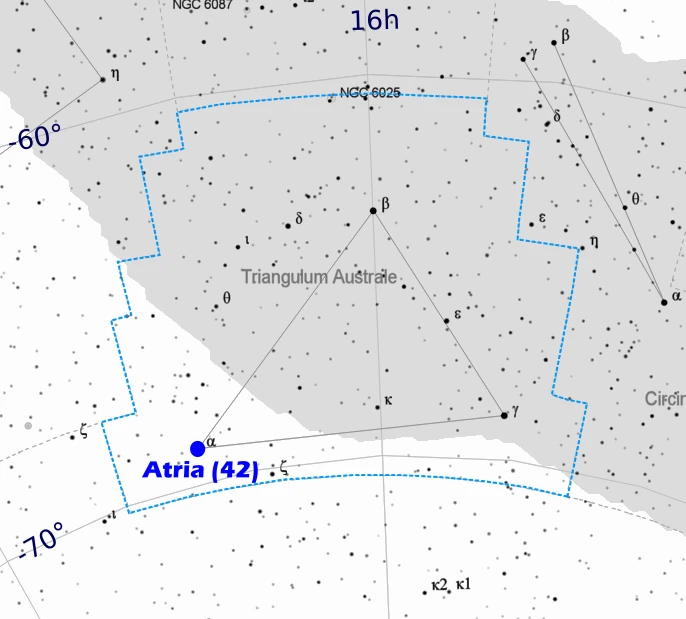

Visual magnitude: 1,93 Absolute magnitude: -0,60 Distance (Ly): 105 Spectral type: A1 IV + G Luminosity (Sol): 160 Mass (Sol): 2,8 Diameter (Sol): 4,4 Surface temperature: 9250K Right Ascencion: 6h38m Declination: 16°24' Solar opposition: 30 December
Alhena from Arabic means “the brand”, which refers to the brand on the camel’s neck. It’s a binary star, where a brighter component already stopped fusing hydrogen in its core moved away from the main sequence, and entered the subgiant stage. The secondary component is about 200 times fainter and is believed to have a similar mass to our Sun. Both orbit each other within around 12 years, but their orbit is highly eccentric taking them as close as less than 1 AU (closer than from Earth to the Sun), whereas their average distance is around 8.5 AU. The biggest distance between them can be up to 20 AU, which corresponds to the Sun – Uranus distance.
The star can be found very easily because it shines almost in the middle of the Winter Hexagon asterism discussed earlier. Alhena shines a few degrees left of the Betelgeuse, which is the tip of the Winter Triangle.

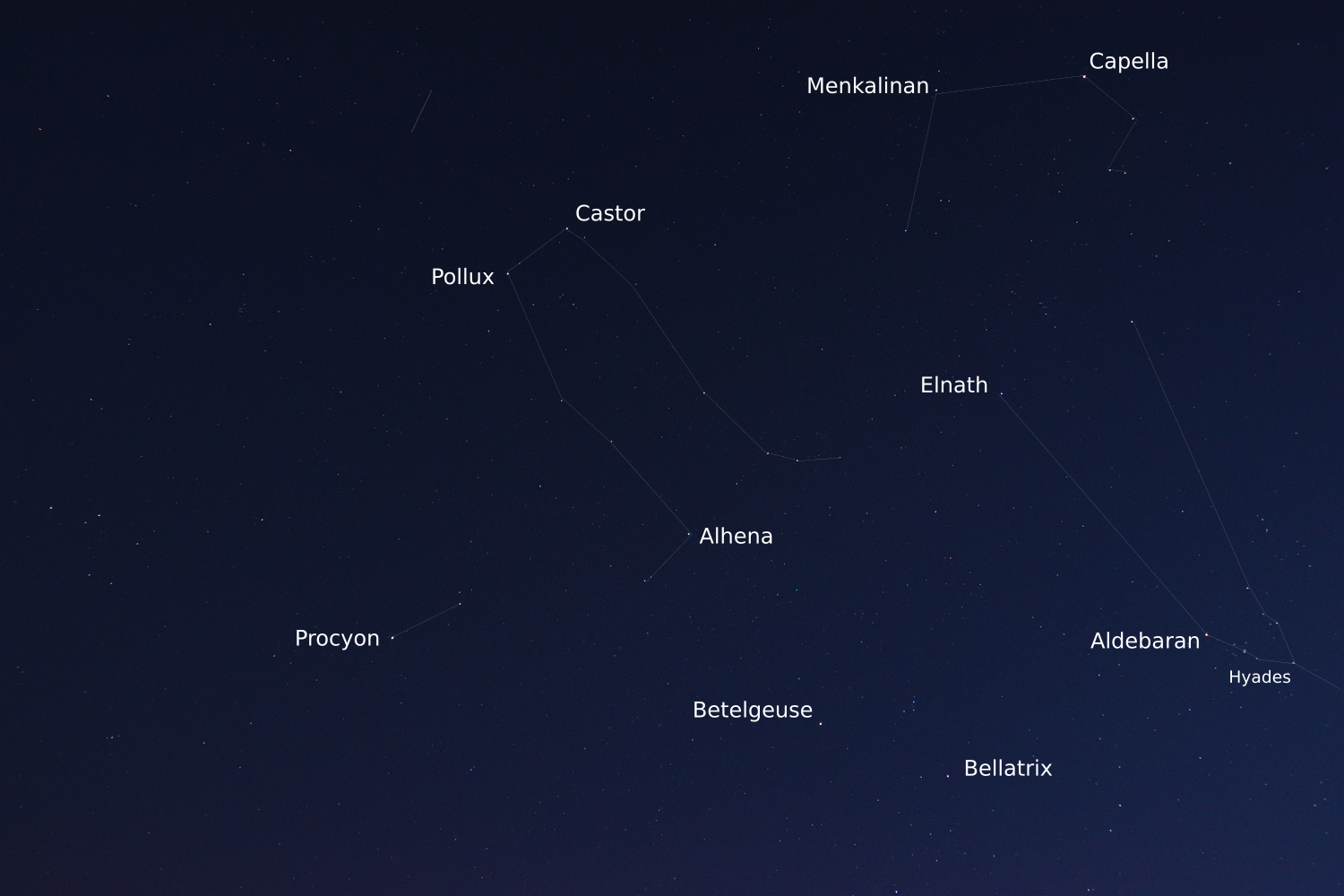
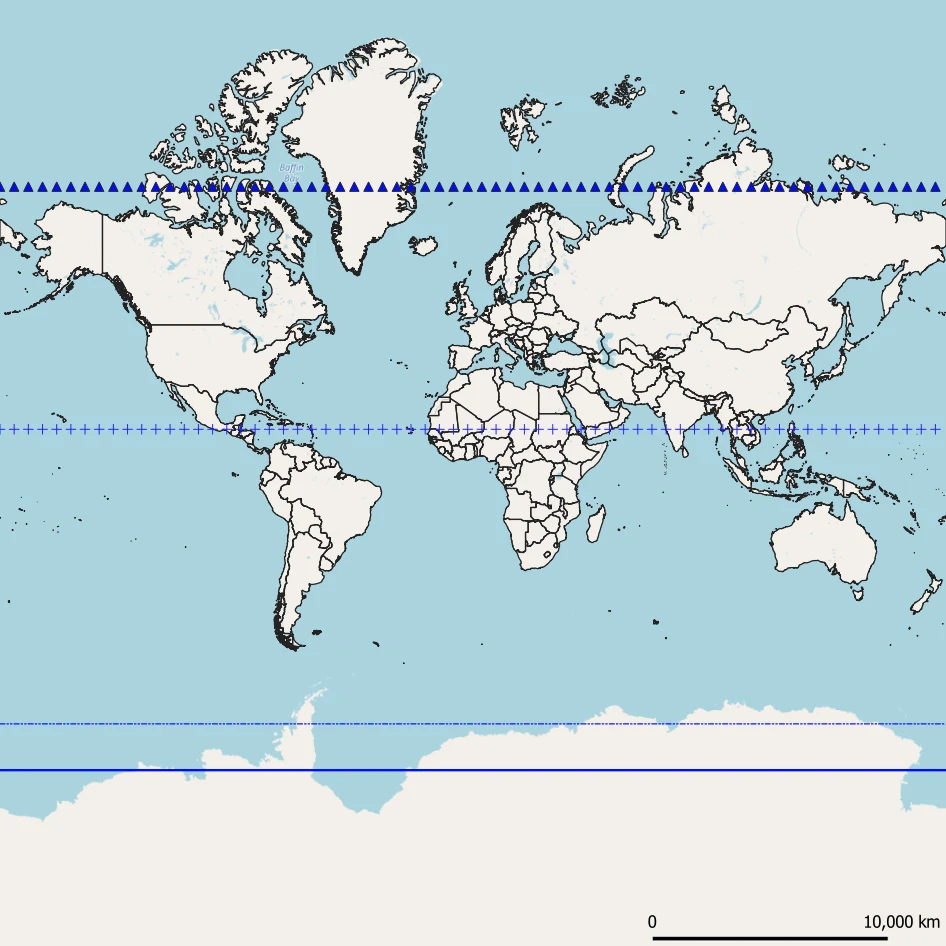
Visual magnitude: 1,93 Absolute magnitude: -0,01 Distance (Ly): 79,7 Spectral type: A1 Va Luminosity (Sol): 67 Mass (Sol): 2,43 Diameter (Sol): 2,9 Surface temperature: 9450K Right Ascencion: 8h45m Declination: -54°43' Solar opposition: 29 January
Alsephina in Arabic means “the ship”, which accurately corresponds to the constellation where it is located. Namely, the star shines at the south of the Vela constellation, which can be treated as the base of the sail integrated with the ship.
In fact, this is the triple star system, where the brightest component is δ Velorum A. The components A and B orbit each other for a period of about 143 years at a separation of about 91 AU. Their orbit eccentricity of 0.23 means that this separation can vary significantly. In the sky, the minimum angular separation can be as low as 0,6″ whereas the average is around 2″. The stellar component A is an eclipse binary star system with an orbital period of just 45 days. In turn, the brightness of the δ Velorum A changes slightly. Alsephina A rotates fast – 145 km/s-1 making its full rotation within just over 1 day.
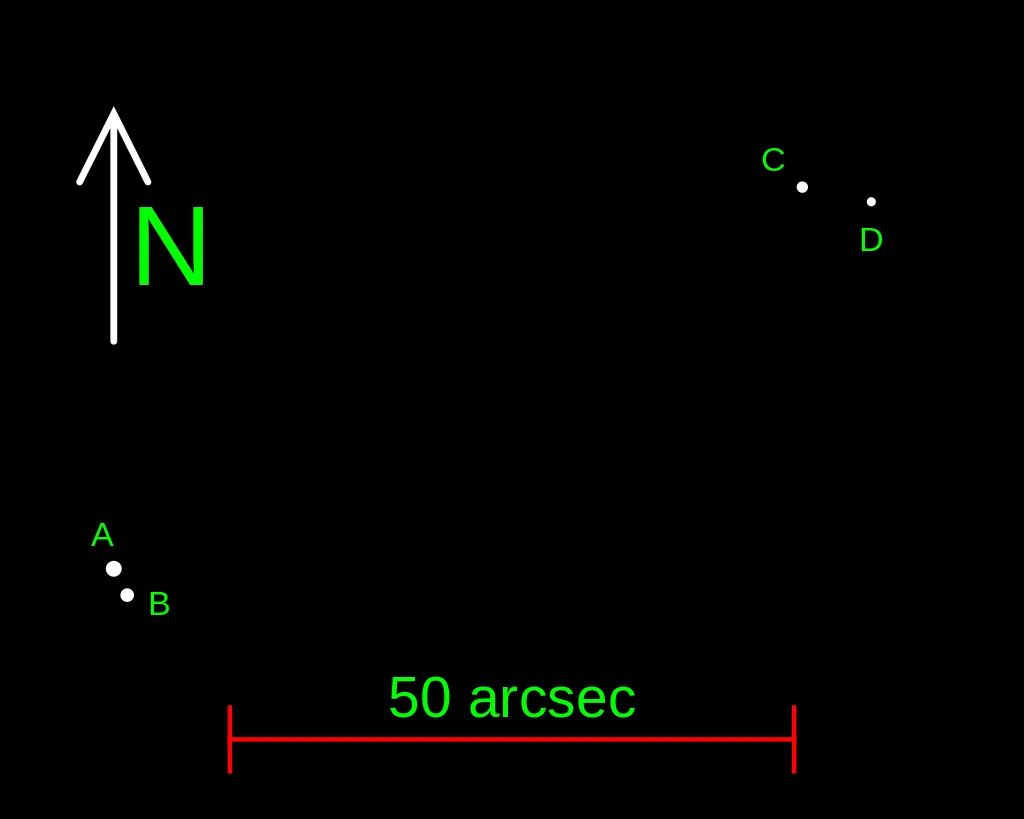
Another binary system consisting of Alsephina C and D is much smaller and their relation to the main δ Velorum star system remains inconclusive.
Alsephina consists of the eastern arm of the False Cross asterism and can be found easily “above” Canopus. Worth is also to mention, that Alsephina will act as the southern polar star around AD 9600 (Pic. 140).

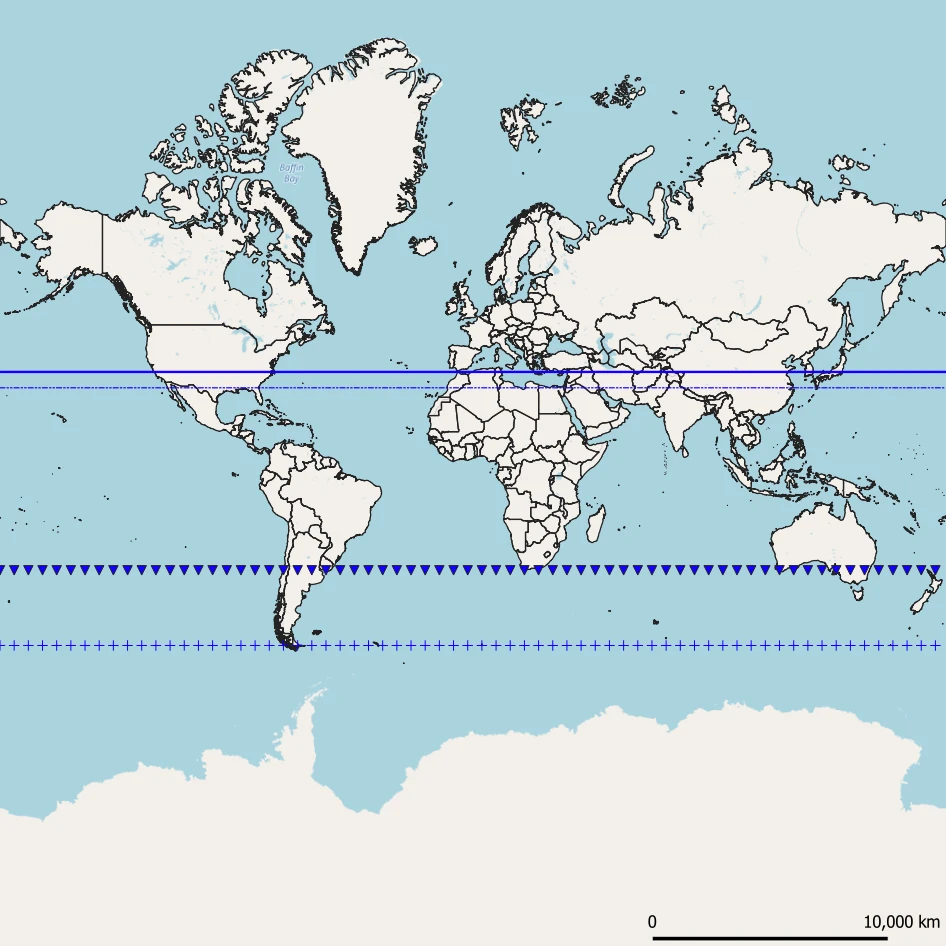
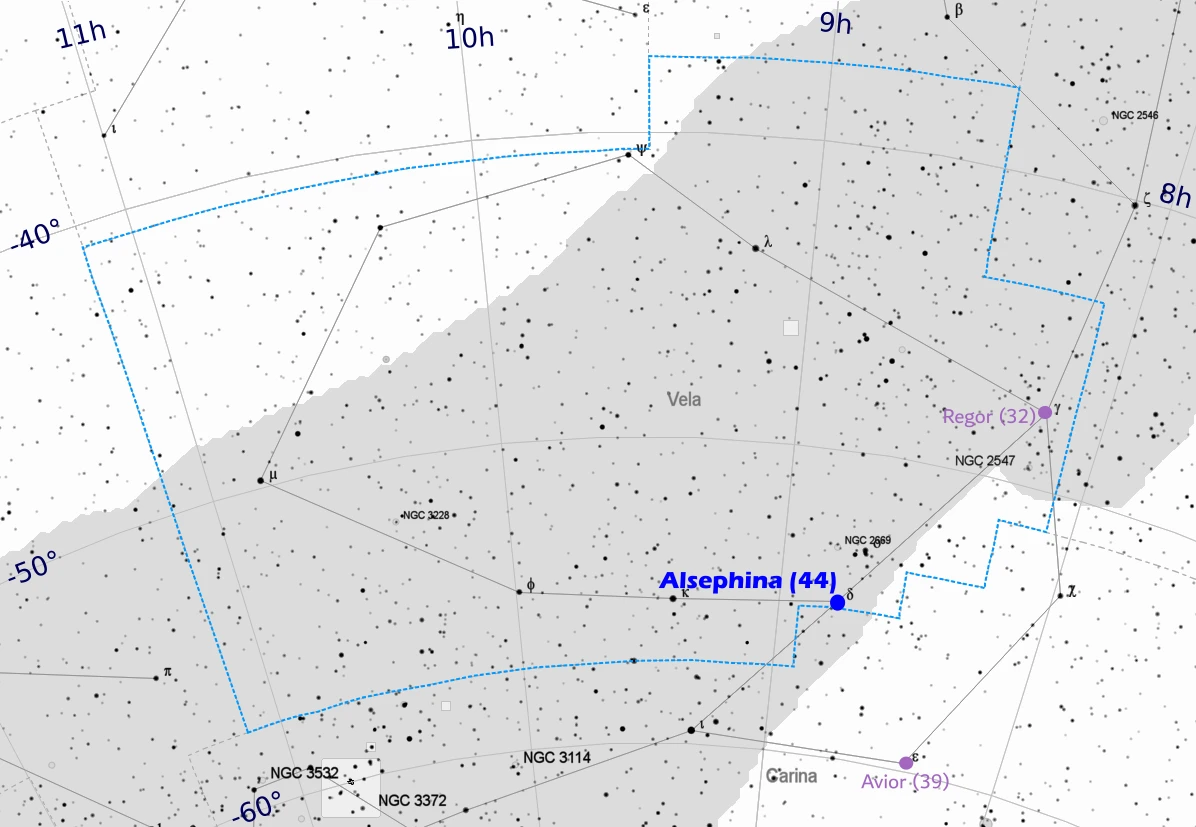

Visual magnitude: 1,94 Absolute magnitude: -1,81 Distance (Ly): 180 Spectral type: B3V Luminosity (Sol): 2100 Mass (Sol): 5 Diameter (Sol): 4,4 Surface temperature: 17700K Right Ascencion: 20h26m Declination: -56°44' Solar opposition: 27 July
The name of Peacock, the same as Avior was assigned by Her Majesty’s Nautical Almanac Office in the late 1930s. The star is believed to be a member of the Tucana-Horologium moving group with an age of about 45 million years and one of the largest stellar groups within 100 parsecs from the Sun. The star features an unusually low abundance of deuterium, which might suggest, that Peacock was formed in the area, where this element was in scarcity.
Peacock’s estimated age is 48 million years. This is a binary star, where two components orbit each other within just 11,75 days indicating a separation of just 0.21 AU. Finding Peacock in the sky might be a challenge because this star is quite isolated from other bright colleagues. The best way to locate α Pavonis is using the angular section between Fomalhaut and Alnair. When we move our sight twice further from Fomalhaut in nearly the same direction, we should encounter Peacock.
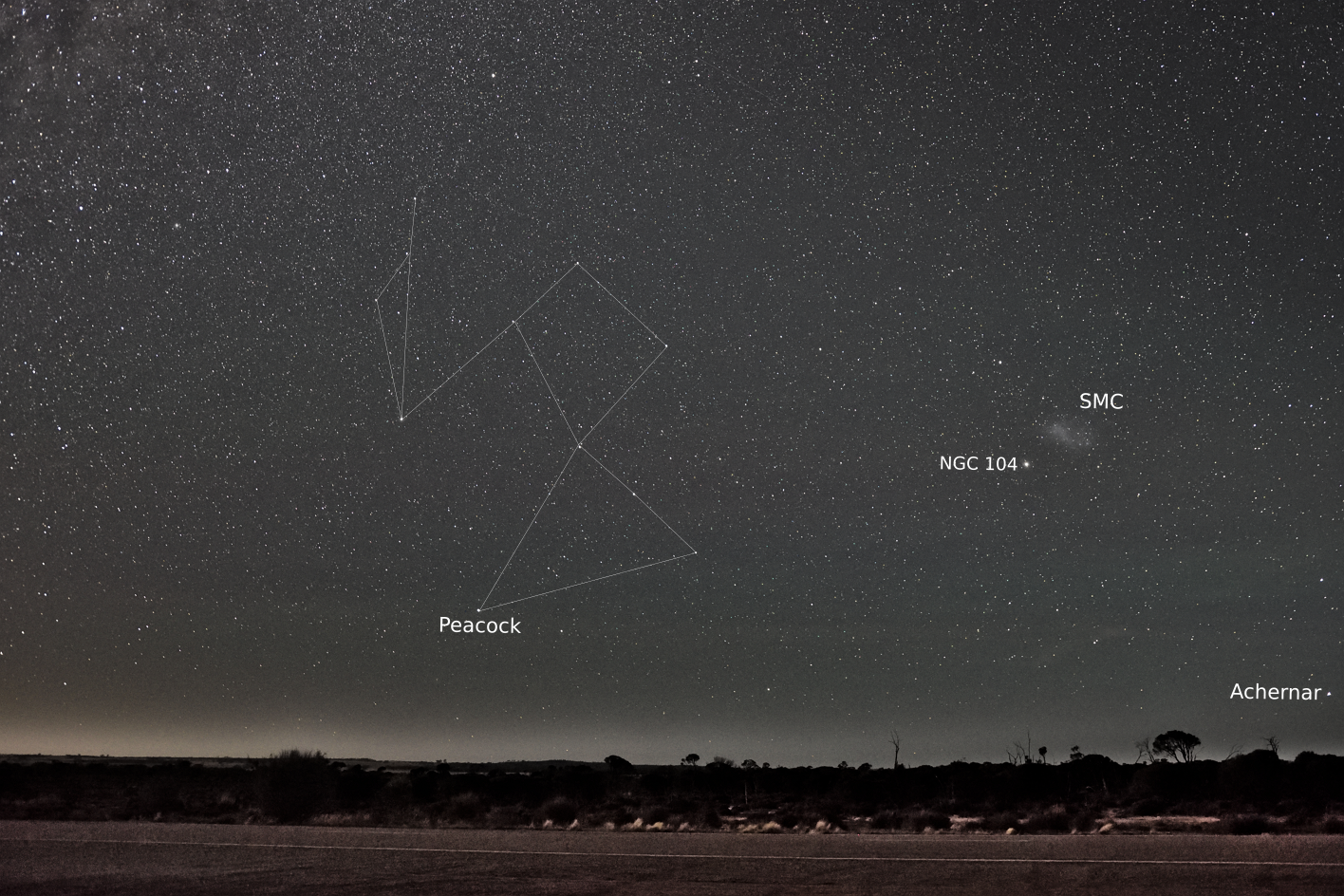
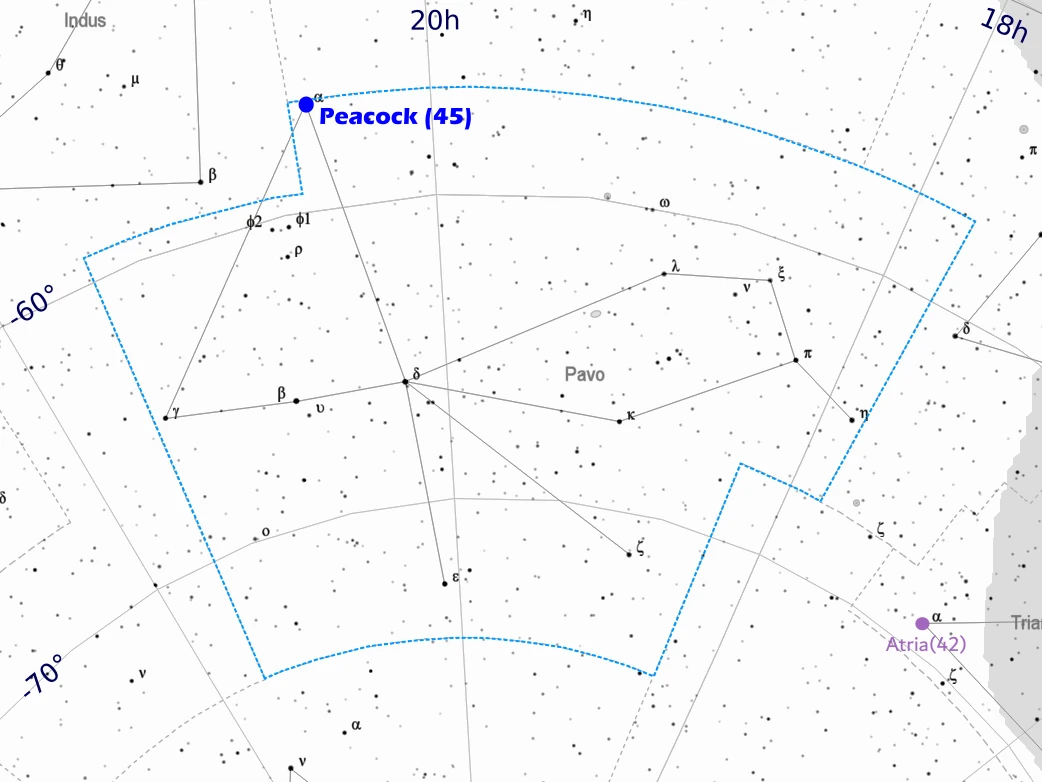
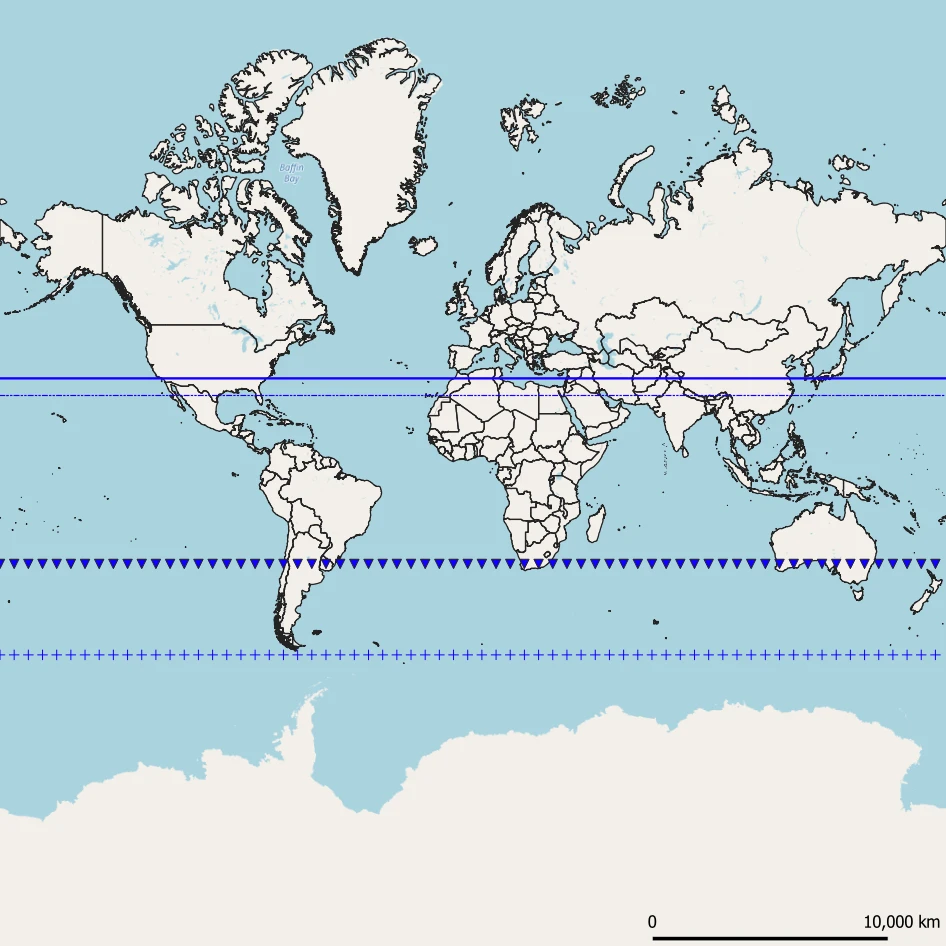
Visual magnitude: 1,97 Absolute magnitude: -3,64 Distance (Ly): 430 Spectral type: F7Ib Luminosity (Sol): 2200 Mass (Sol): 7,5 Diameter (Sol): 30 Surface temperature: 6900K Right Ascencion: 2h32m Declination: 89°16' Solar opposition: N/A
The name Polaris comes from Latin and means “Polar star”. Admittedly the role of this star as the pole star doesn’t last for long from an astronomical point of view. Due to the precession of the Earth’s axis, the role of the pole star will be passed from one star to another as it used to happen before. Currently, the Polaris star is the best example of marking the north direction, and what is most important it’s more accurate than any compass! In fact, the location of this star is still more than two-thirds degrees from the north pole, but the star is one of the brightest in the sky (46th brightest), which is really helpful for any observer to determine the north direction. The closest distance of Polaris star to the north pole will occur around AD 2100 and next the star will move away gently to back to a similar place after 25700 years. The other stars, which will be close to the north pole are γ Cephei, δ Cygni, and Thuban. The second one about 5000 years ago was separated just 0,1° from the celestial north pole, which was the closest approach of any of the visible pole stars. However, Thuban is not much bright star to be honest, because it’s around 5x fainter than Polaris.

Polaris, however not very luminous is the brightest star encountering the celestial pole on its precessional route. In reality, Polaris is comprised of a triple system star, thereby Polaris A is significantly brighter and bigger. Its range varies between 1.86 and 2.13 Mag as the star represents the classical Cepheid variable, therefore it makes Polaris the closest cepheid variable to our Solar System. The period of these changes lasts around 4 days, which has lengthened by 8 seconds each year (Irion, 2004). During each cycle also the surface temperature changes in the range of 50-170K, which might be related to the orbit of the Polaris Ab component at a distance of 18.8 AU (roughly Sun – Uranus distance). The star system has formed about 70 million years ago.
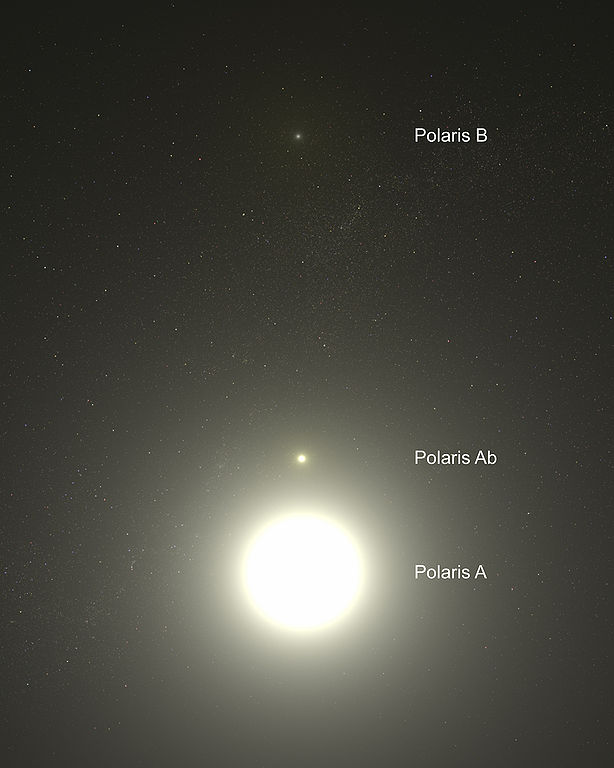
The brightest – Polaris Aa is the yellow supergiant near the end of its life, which is thought to be as much as 2,5x brighter than observed by Ptolemy, while a 15% increment in brightness was observed just across the last century. It suggests that the behavior of Polaris Aa star is more erratic than supposed. The changes as observed might be even 100x larger than predicted by current stellar evolution models.
Polaris Ab is a main sequence dwarf with a mass just slightly exceeding the mass of our Sun. There is also Polaris B, which orbits the main component at a distance of 2400 AU in the period of 30.5 years with an orbit eccentricity of 0,64.
Apart from the major Polaris star system, scientists discovered further located Polaris C and Polaris D stars, which are not physically related to the Polaris star system.
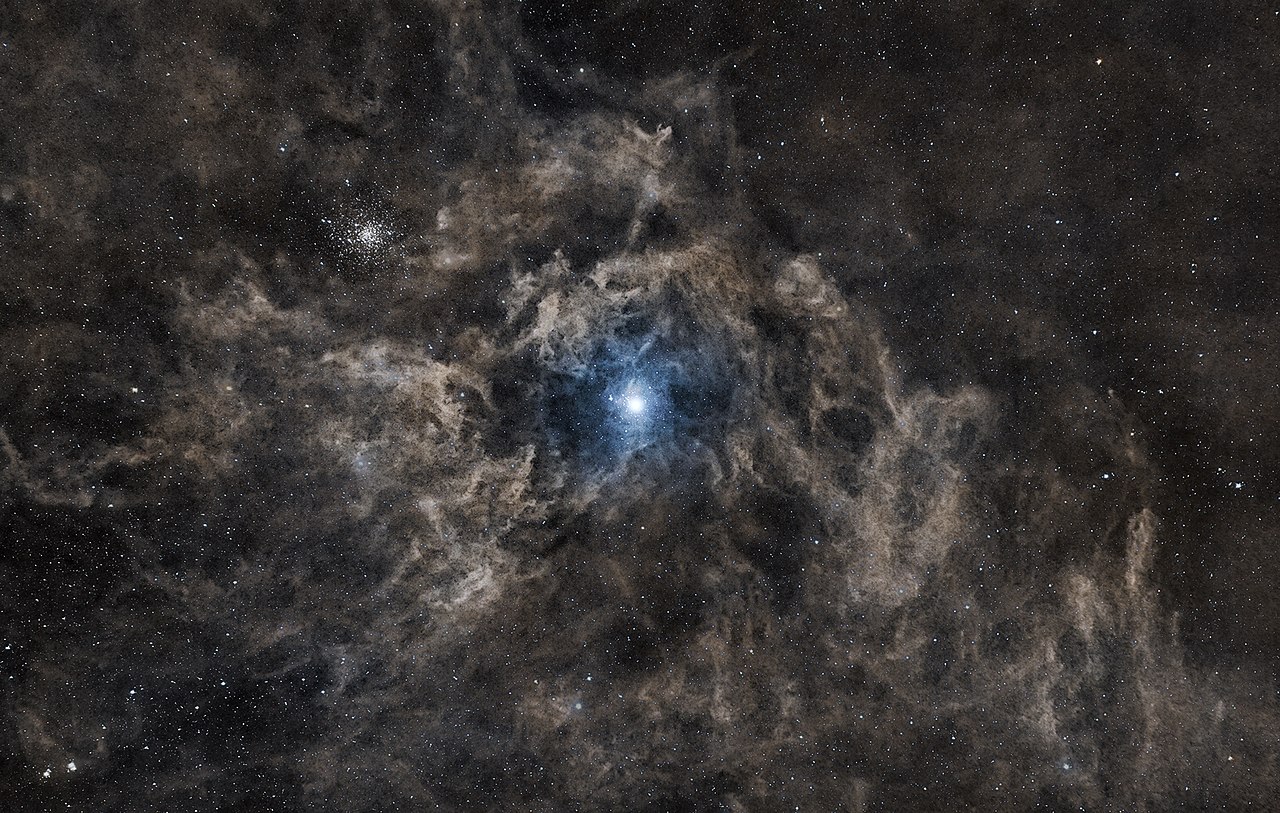
The Polaris star is surrounded by an integrated flux nebula, which is a typical gaseous nebula for areas near the plane of the Milky Way galaxy. The North Star is also encircled by the semicircle of dim stars known as the Engagement Ring, in which Polaris acts as the big diamond.
The proximity of Polaris to the north celestial pole means, that (for sake of simplification) its latitude above the horizon matches an observer’s latitude. From the north pole, Polaris can be seen directly overhead. As an observer moves south, the star will shine lower above the horizon until it disappears completely beyond the equator.

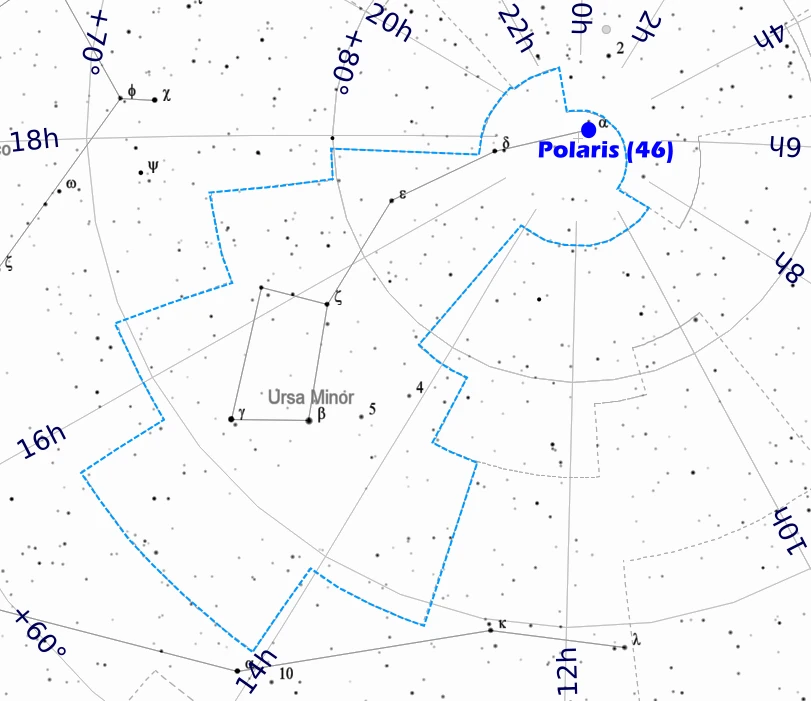

Visual magnitude: 1,98 Absolute magnitude: -3,95 Distance (Ly): 500 Spectral type: B1 II-III Luminosity (Sol): 26600 Mass (Sol): 13,5 Diameter (Sol): 10 Surface temperature: 23150K Right Ascencion: 6h23m Declination: -17°57' Solar opposition: 27 December
The name Mirzam (or Murzim) comes from Arabic and means “the herald”, which clearly corresponds to its position. The role of Murzim was to announce, that Sirius – the brightest star will rise soon.
This is another β Cephei variable, whose brightness varies between 1.97 and 2.01 Mag. This is a young and bright giant shining blue-white, whose age is estimated at 12-13 million years. Most of the light output coming from Mirzam is in the invisible ultraviolet. Because of its life cycle characterized by the quick evolvement to the giant stage, the star won’t live for a long time. Currently, the star is expanding and cooling, but in the future, it will turn into a red giant and supergiant finally as a supernova.
Murzim was the brightest star in the night sky between 4,4 – 3,7 million years ago reaching the brightness of -3,65 about 4425000 years ago being located just 37 light-years from our Solar System. Nowadays the star is located near the far end of the Local Bubble (Local Cavity) – the cavity in the interstellar medium towards which the Sun is traveling now.
The Mirzam (Murzim) star is very easy to find, as it shines a few degrees west of Sirius. The star is also pointed directly by the Belt of Orion.

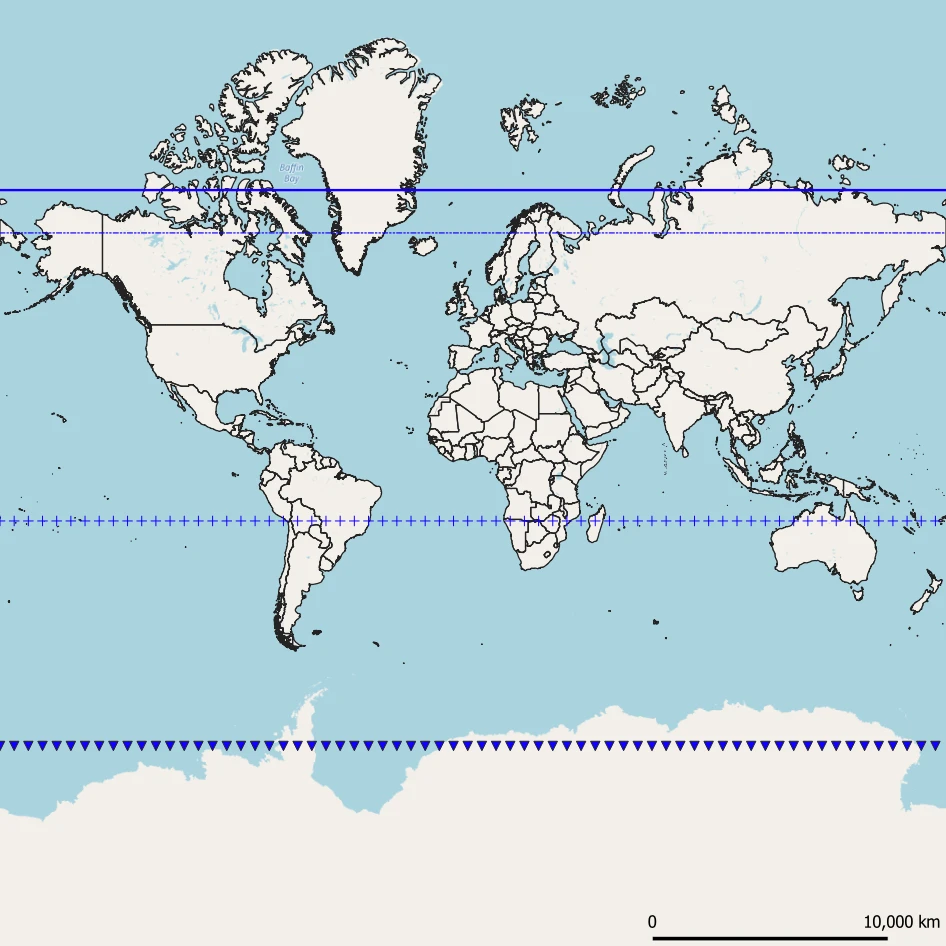
Visual magnitude: 1,99 Absolute magnitude: -1,69 Distance (Ly): 180 Spectral type: K3 II-III Luminosity (Sol): 780 Mass (Sol): 3 Diameter (Sol): 50,5 Surface temperature: 4100K Right Ascencion: 9h28m Declination: -8°40' Solar opposition: 8 February
The name Alphard has its Arabic origin and means “the individual” or “the solitary one”. The α Hydrae star has no bright stars nearby. Another meaning is the “Backbone of the serpent”, indicating the brightest component of the serpent-shaped Hydra constellation more or less in the place where the backbone links its neck. Alphard has already evolved away from the main sequence and became a red giant star with an estimated age of 420 million years. The rotational velocity is really slow – just 1,1 km/s-1 and allows Alphard to make a full rotation every 2991 days. There are some reckons, that Alphard might have some small white dwarf component, because of the excess of barium. Alphard is not massive enough to go as a supernova. At the end of its life, all outer layers will be cast off forming a planetary nebula and gradually fading as a white dwarf.
Alphard can be found southeast of Regulus. This star, although far away, creates the triangle with Regulus and Procyon. Because of its location, remote from other bright stars Alphard is used in navigation. What is most important – the star is visible from most locations worldwide except the North Pole surroundings. This is the brightest star in the Hydra constellation, which is the largest in the sky of all 88 modern constellations.


Visual magnitude: 2,00 Absolute magnitude: 0,48 Distance (Ly): 65,9 Spectral type: K1IIIb Luminosity (Sol): 90 Mass (Sol): 2 Diameter (Sol): 15 Surface temperature: 4500K Right Ascencion: 2h07m Declination: 23°28' Solar opposition: 27 October
In Arabic, Hamal means “the head of the ram”, which indicates practically the top of the Ram constellation. Hamal has already exhausted the supply of hydrogen at its core and now is an evolved giant star, which belongs to the red-giant branch (called sometimes the first giant branch) gathering the stars just before its helium ignition. The stage of life, at which Hamal currently means, that its girth is considerably enlarged. Whereas the star is about 15x larger than the Sun in diameter, it can host just about 50% mass more than our mother star. The star spins a bit faster than the Sun with a projected rotational velocity of 3,44 km/s-1. Presumably, Hamal hosts one planet with a mass of around 1,8 of Jupiter, rotating it in the period of 381 days at the ellipsoid orbit with an eccentricity of 0.25. The periapsis of this planet could be at a distance of 0.9 AU and apoapsis at 1.5 AU. The planet has been discovered due to Hamal’s slight variations of brightness with an amplitude of 0,06 Mag. Hamal itself is a quite old star formed around 3,4 billion years ago from a molecular cloud of dust and gas.
Hamal is located in the zodiac constellation of Aries, mentioned earlier. The star is used in navigation the same as 58 others. The star is recognizable by a specific pattern that forms along with the fainter Sheratan star, the second brightest in the Ram constellation, and Mesarthim, the third one. These 3 stars form somewhat of a flat triangle, which can be noticed around 20° west of the Pleiades cluster. The star is important because it’s located close to the vernal equinox point for the northern hemisphere, which used to move across the Aries constellation between 2000 and 100 BC. Due to the Earth’s axial precession, the point of the vernal equinox has moved to the neighboring constellation Pisces and continues to do so by about 50″ per year. Moreover, the declination of the Aries constellation has increased too from that time and today corresponds to the Tropic of Cancer.



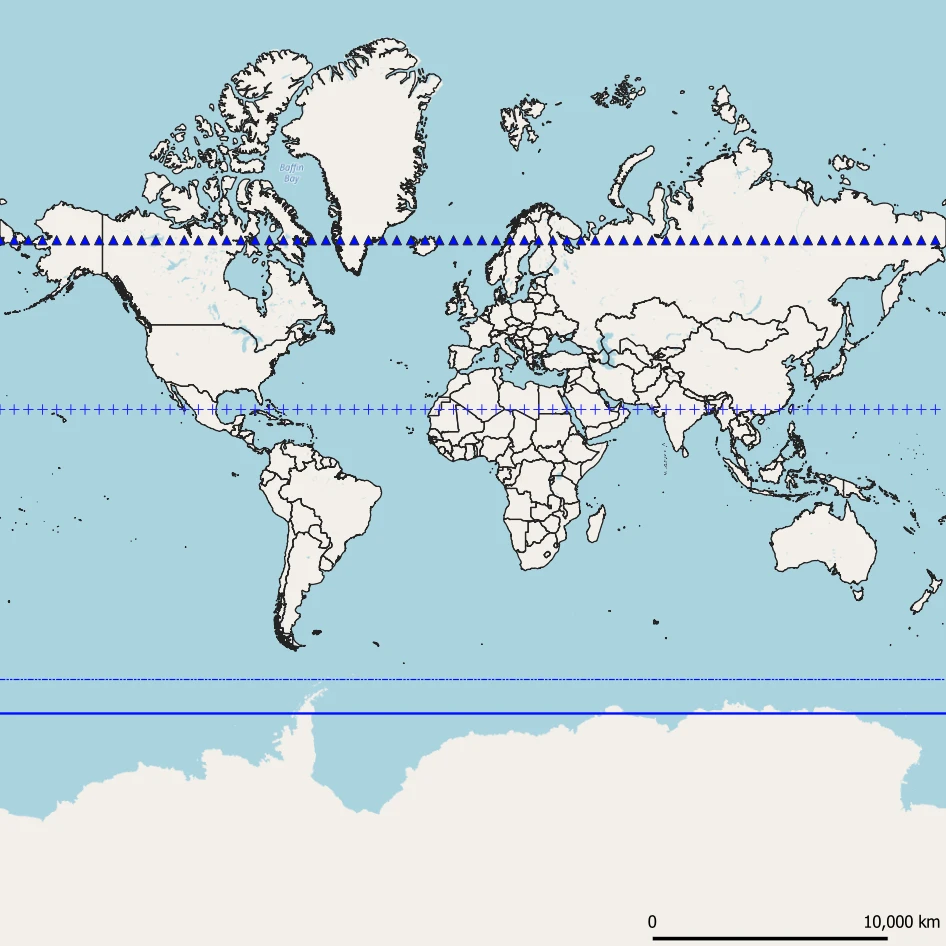
II. IMPORTANT GRAPHS
Since you have some basic knowledge about the brightest stars in the night sky, now you can do a graphic comparison of some of them with the Sun. Moreover, it will be also good to know where they’re roughly located in the celestial sphere. Unlike the sky sections presented over the general descriptions, there is the general sky map with all the brightest & described stars marked. Making a step further I also have marked all the stars used for navigation, where some of them aren’t bright enough to be found on this list, but their position in the sky is at some point crucial.
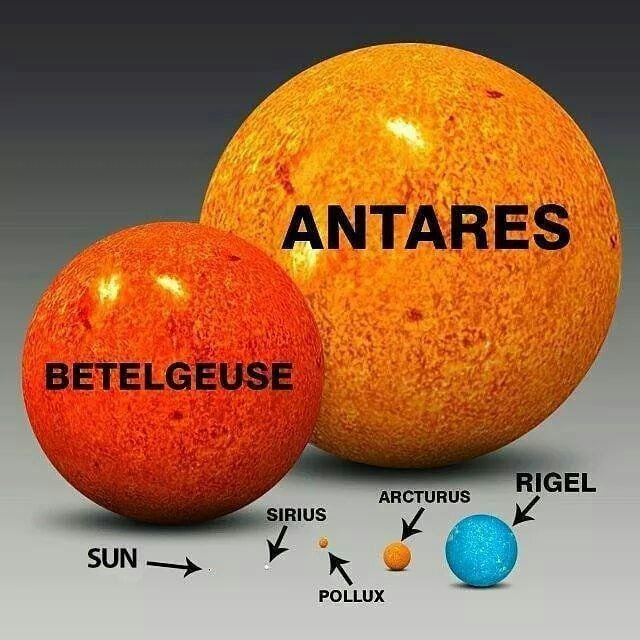
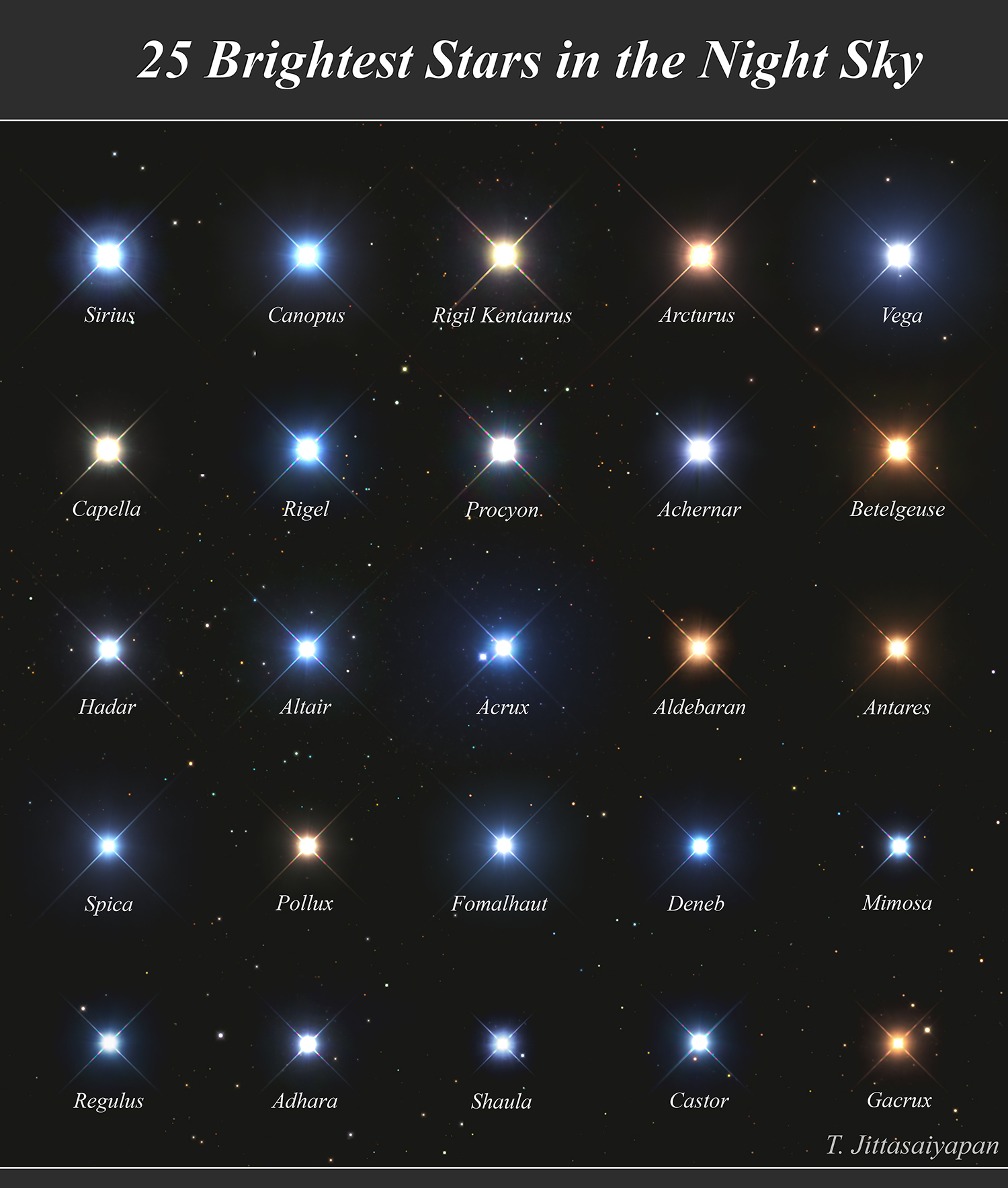
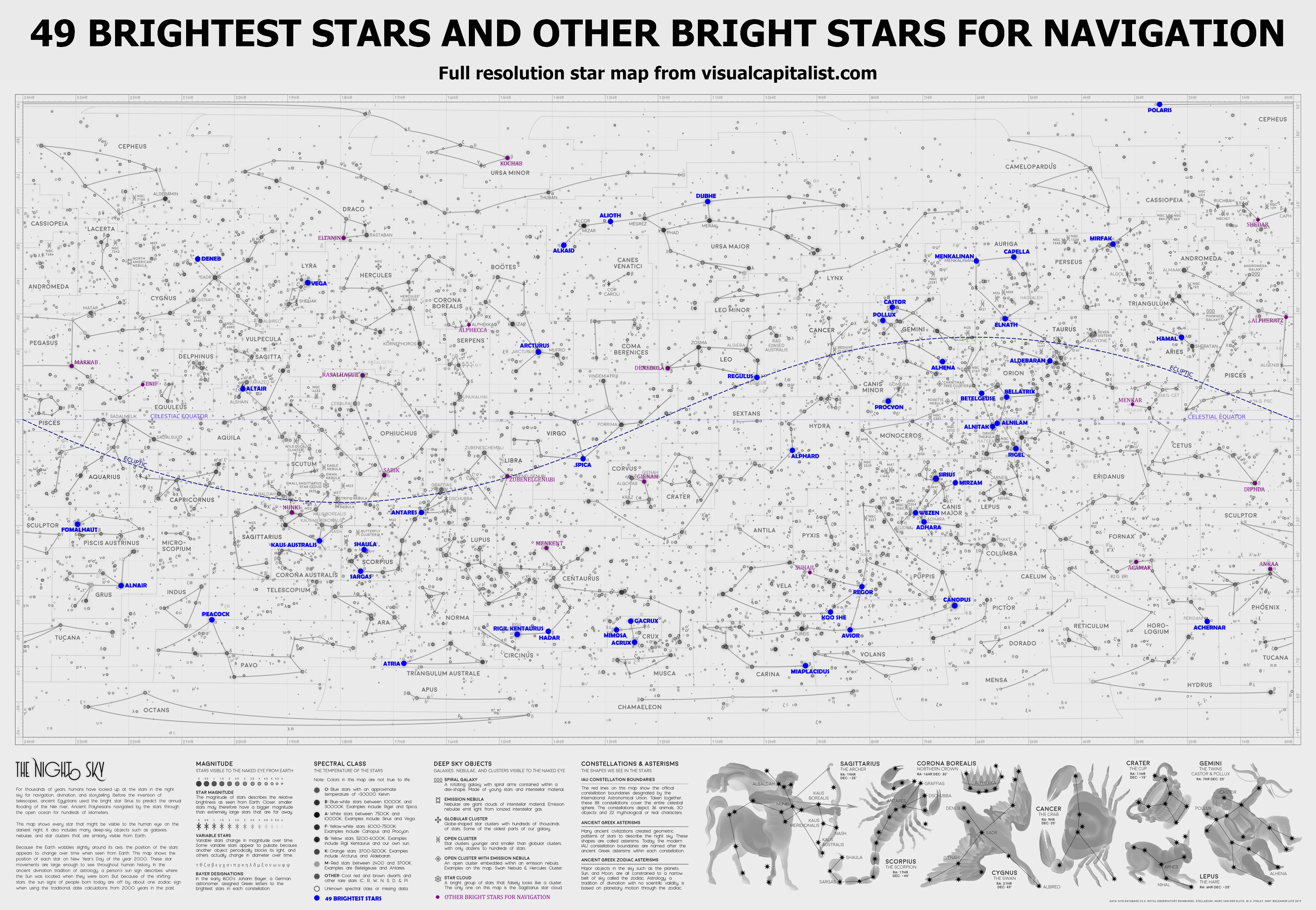
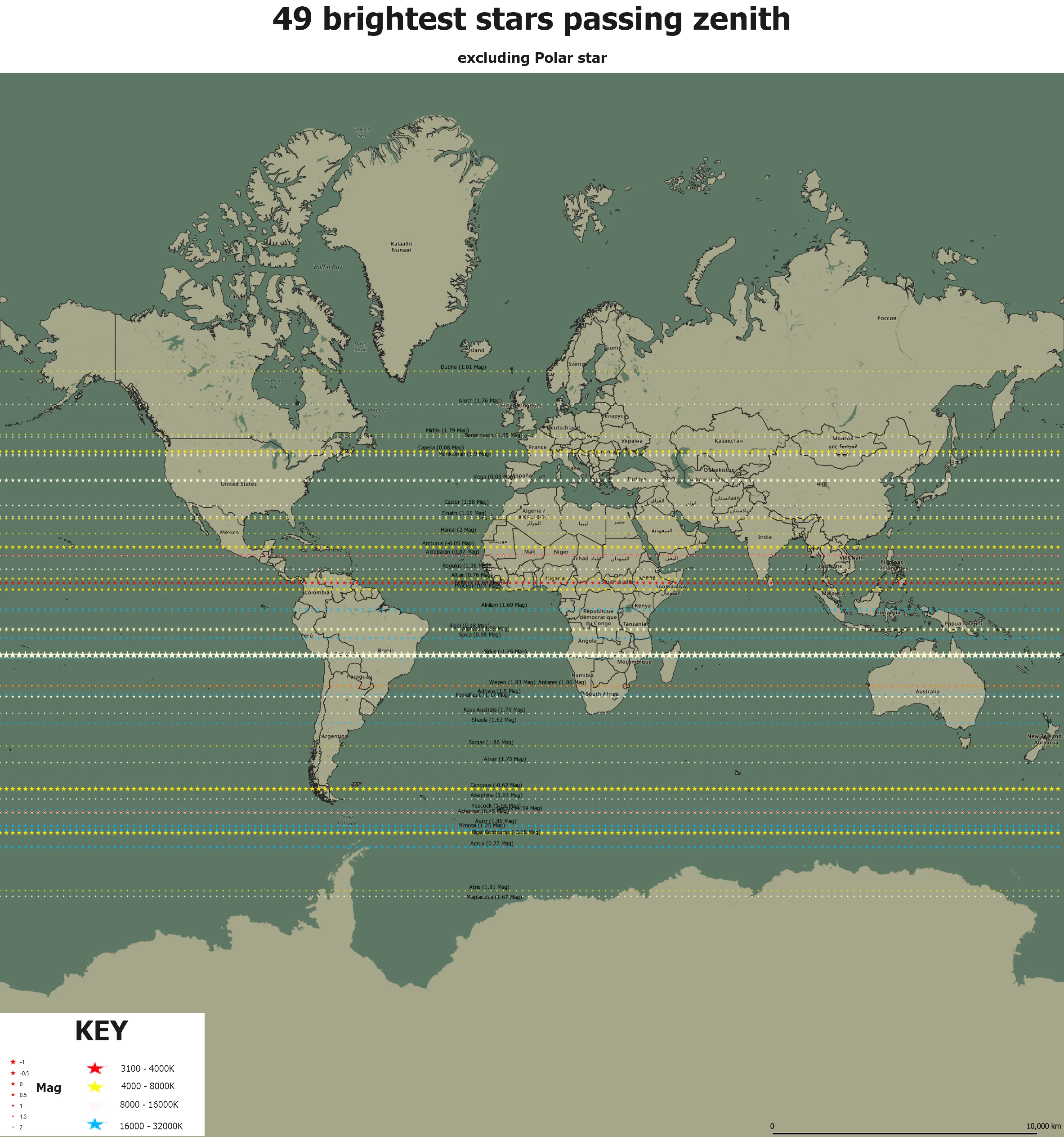
III. SUMMARY & DISCLAIMER
I’ve described 49 of the brightest stars in the night sky, in which the crucial criterion was brightness. I’ve described all the stars, which are brighter than 2 Mag. I guess this is a quite good value to stick with. When we add up the Sun, we can finally see 50 stars in the sky brighter than 2 Mag. The basic disclaimer to the data provided is its slight inconsistency. In the most succinct section, which states as the entrance to the major text description most of the data were picked up from the Astropixels.com website, which unfortunately doesn’t match completely with Wikipedia’s major information tables. Don’t get discouraged, when some of the values from your source will be incompatible with this content. We are dealing with the scientific realm, which is alive. In practice, it means, that it changes and never stops, especially in the times, when devices, telescopes, and any calculations are getting better. I am aware, that most of the text stuff provided in this article will be behind the curve within the next years. On the other hand, the brightness threshold applied as the basic criteria of this article won’t change in your life, the same as the declination, solar opposition, and location of all these stars. These are the elements, which should keep this article valid much longer, than the text itself.
Mariusz Krukar
References:
- Dinwiddie R., Gater W., Sparrow G., Stott C. 2012. Nature Guide, Stars and Planets, Dorling Kindersley, London
- Heifetz M.D., Tirion W., 2007, A Walk through the Heavens: A Guide to Stars and Constellations and their Legends, Cambridge University Press, Cambridge
- Irion R., 2004, As inconstant as the Northern Star, (in:) American Astronomical Society
- Meeus J., 1997, Mathematical Astronomy Morsels, Willmann-Bell, Richmond, VA
- Ridpath I., 2003, The monthly sky guide, Cambridge University Press, Cambridge
- Schaaf F., 2008, The brightest stars. Discovering the Universe through the Sky’s Most Brilliant Stars, John Wiley & Sons Inc., Hoboken, New Jersey
- Tomkin J., 1998, Once and future celestial kings, (in:) Sky & Telescope, v. 95 (4), p. 59-63
Links:
- Starlust.org: The 5 brightest stars in the night sky
- 7 the brightest stars in the sky
- https://starwalk.space/en/news/top-7-brightest-stars-in-the-sky
- Astronomytrek.com:list-of-10-brightest-stars-in-the-night-sky/
- Thoughtco.com: The 10 brightest stars in the sky
- Worldatlas.com: The 10 brightest stars in the sky
- http://blog.simulationcurriculum.com/articles/2015/5/15/the-ten-brightest-stars-in-the-sky
- https://cosmonova.org/top-10-brightest-stars-night/
- Lovethenightsky.com: Top 10 brightest-stars
- https://www.valuewalk.com/2019/03/top-10-brightest-stars-sky/
- 15 brightest stars in the sky based on apparent magnitude
- Ranker.com: The 20 brightest stars in the night sky
- The 25 brightest stars as seen from Earth
- Apod.nasa.gov: The 25 brightest stars in the night sky
- Skytonight.org: The 25 brightest stars
- Astropixels.com: Top 50 brightest stars in the sky
- Cosmos.esa.int: The 50 brightest stars in the sky
- Web.pa.msu.edu: Top 100 brightest stars as seen from Earth
- Stars.astro.illinois.edu: The 172 brightest stars
- In-the-sky.org: The 200 brightest stars possible to see in the sky
- Star-facts.com: Up to 300 brightest stars in the night sky
- https://skyandtelescope.org/observing/how-to-see-sirius-in-the-daytime/
- https://www.astronomytrek.com/the-night-skys-2nd-brightest-star-canopus/
- https://www.star-facts.com/
- https://www.solarsystemquick.com/universe/arcturus-star
- https://www.space.com/22842-arcturus.html
- https://www.astronomytrek.com/star-facts-arcturus/
- https://www.constellation-guide.com/
- https://www.space.com/23570-achernar.html
- https://www.daviddarling.info/encyclopedias.html
- https://www.space.com/22961-hadar.html
- http://www.solstation.com/stars/altair.htm
- https://earthsky.org/brightest-stars/pollux-not-castor-is-geminis-brightest-star/
- https://earthsky.org/brightest-stars/antares-rivals-mars-as-the-scorpions-heart/
- https://earthsky.org/brightest-stars/deneb-among-the-farthest-stars-to-be-seen/
- https://earthsky.org/brightest-stars/southern-mimosa-is-the-19th-brightest-star/
- https://www.star-facts.com/mimosa/
- https://www.space.com/22980-adhara.html
- http://stars.astro.illinois.edu/sow/sowlist.html
- https://earthsky.org/brightest-stars/best-castor-brightest-second-magnitude-star/
- https://www.space.com/23710-gacrux-gamma-crucis.html
- https://earthsky.org/favorite-star-patterns/the-southern-cross-signpost-of-southern-skies/
- https://www.star-facts.com/shaula/
- https://www.space.com/23734-shaula.html
- https://www.universeguide.com/
- https://nineplanets.org/elnath-%CE%B2-tauri/
- https://www.constellation-guide.com/false-cross/
- https://theskylive.com/
- http://aaadelhi.org/polaris-engagement-ring-asterism
- http://www.seasky.org/
- Astrophysics data system
- https://earthsky.org/brightest-stars/alphard-the-solitary-one/
- https://www.astronomytrek.com/
- https://earthsky.org/brightest-stars/hamal-ancient-equinox-star/
Forums:
- Asterisk.apod.com: APOD: 25 Brightest Stars in the Night Sky (2019 Jun 25)
- https://www.quora.com/What-are-the-names-of-top-three-bright-stars-in-the-night-sky-of-India
- https://space.stackexchange.com/questions/43803/how-did-the-canopus-star-tracker-work-are-there-any-still-out-there-in-service
My questions:
Wiki:
- AB_Doradus_moving_group
- Alpha_Persei_Cluster
- Am_star
- Argo_Navis
- Asterism_(astronomy)
- Asteroseismology
- Axial_precession
- Barium_star
- Big_Dipper
- Binary_star
- Bright_Star_Catalogue
- BY_Draconis_variable
- Classical_Cepheid_variable
- Diamond_Cross
- Flare_star
- Gravity_darkening
- Great_Diamond
- Historical_brightest_stars
- IC_434
- Interstellar_medium
- List_of_brightest_stars
- List_of_stars_for_navigation
- Local_Bubble
- Local_Interstellar_Cloud
- Mercury-manganese_star
- Northern_Cross_(asterism)
- Orion_Arm
- Orion’s Belt
- Parsec
- Pole_star
- Red-giant_branch
- Spring_Triangle
- Star_catalogue
- Star_tracker
- Stellar_evolution
- Stellar_rotation
- Summer_Triangle
- Tucana-Horologium_association
- Ursa_Major_Moving_Group
- Winter_Hexagon
- Winter_Triangle
- Wolf-Rayet star
Youtube:

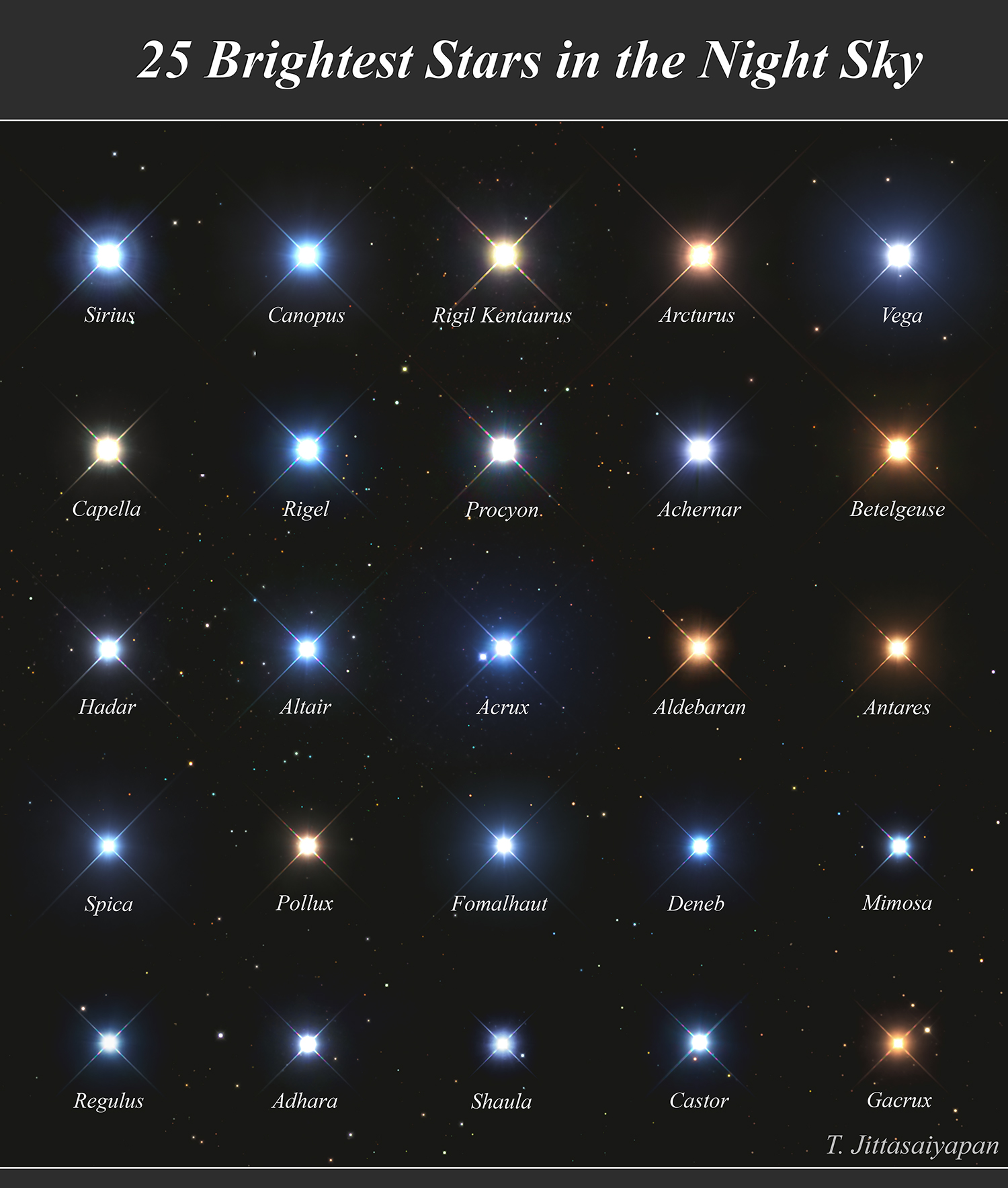
I don’t think the title of your article matches the content lol. Just kidding, mainly because I had some doubts after reading the article.
Yes it does! What doubts do you have? The article says about the 49 brightest stars and provides detailed description about each of them.